
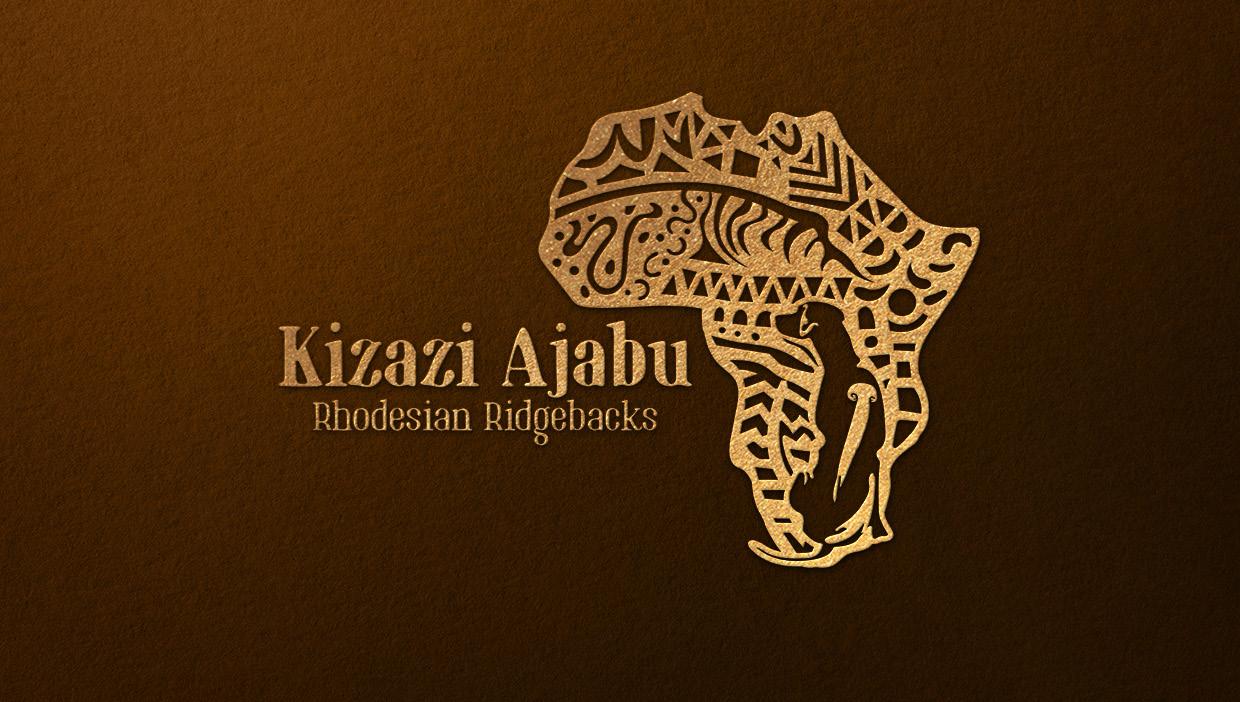

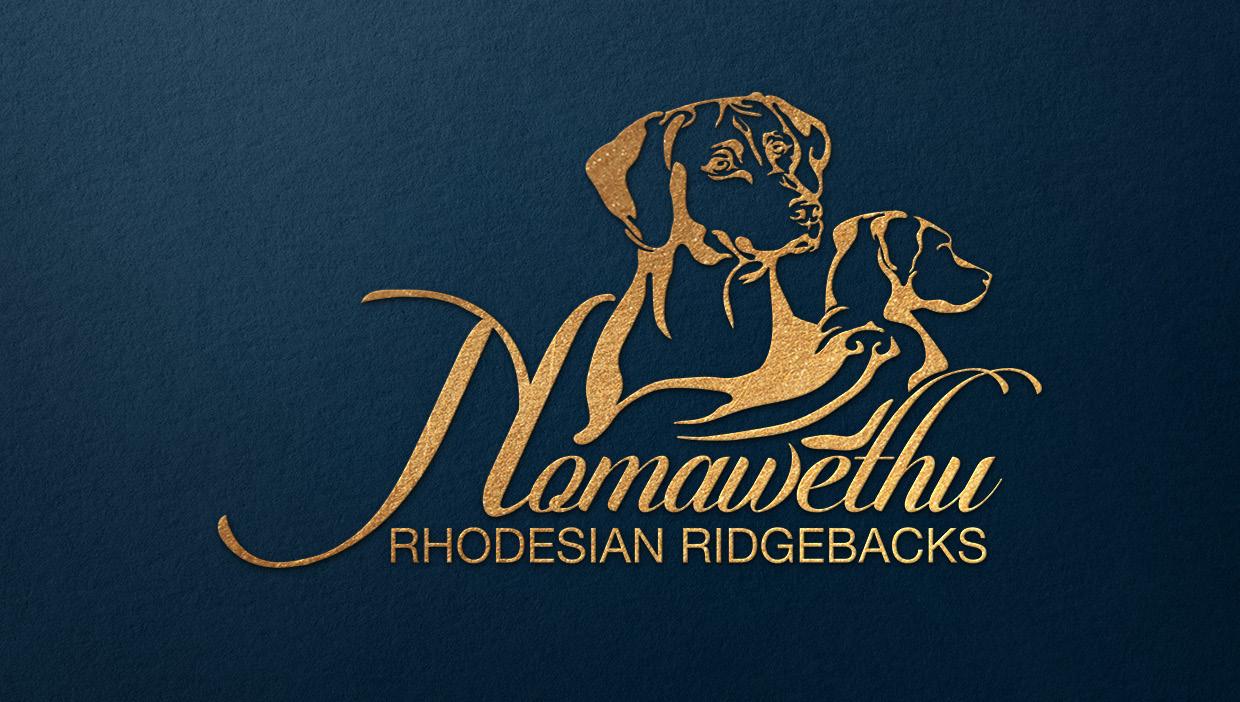

RHODESIAN RIDGEBACK
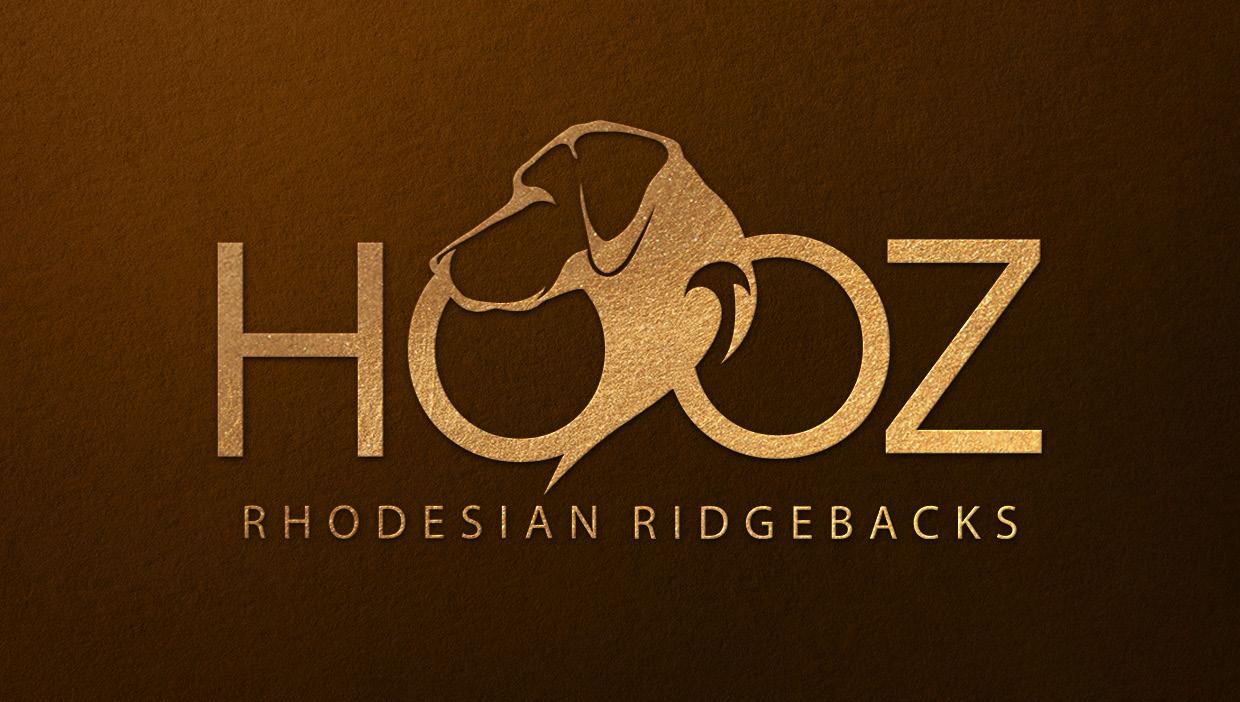

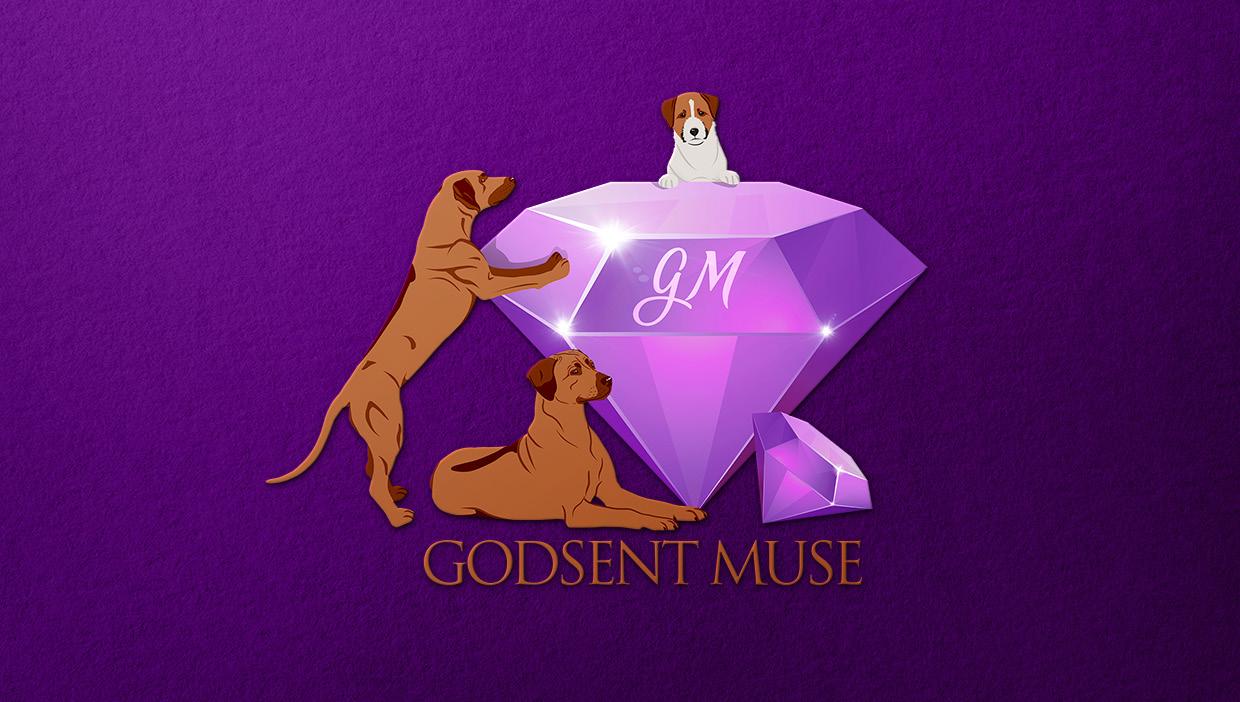
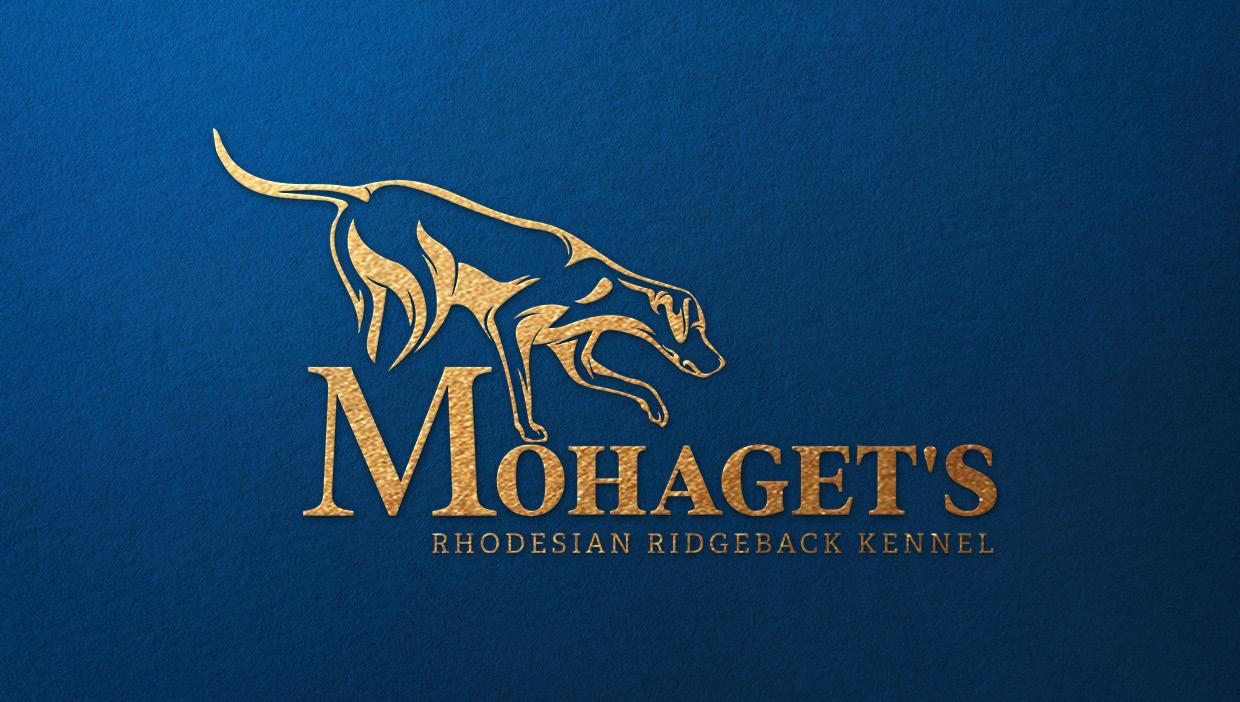

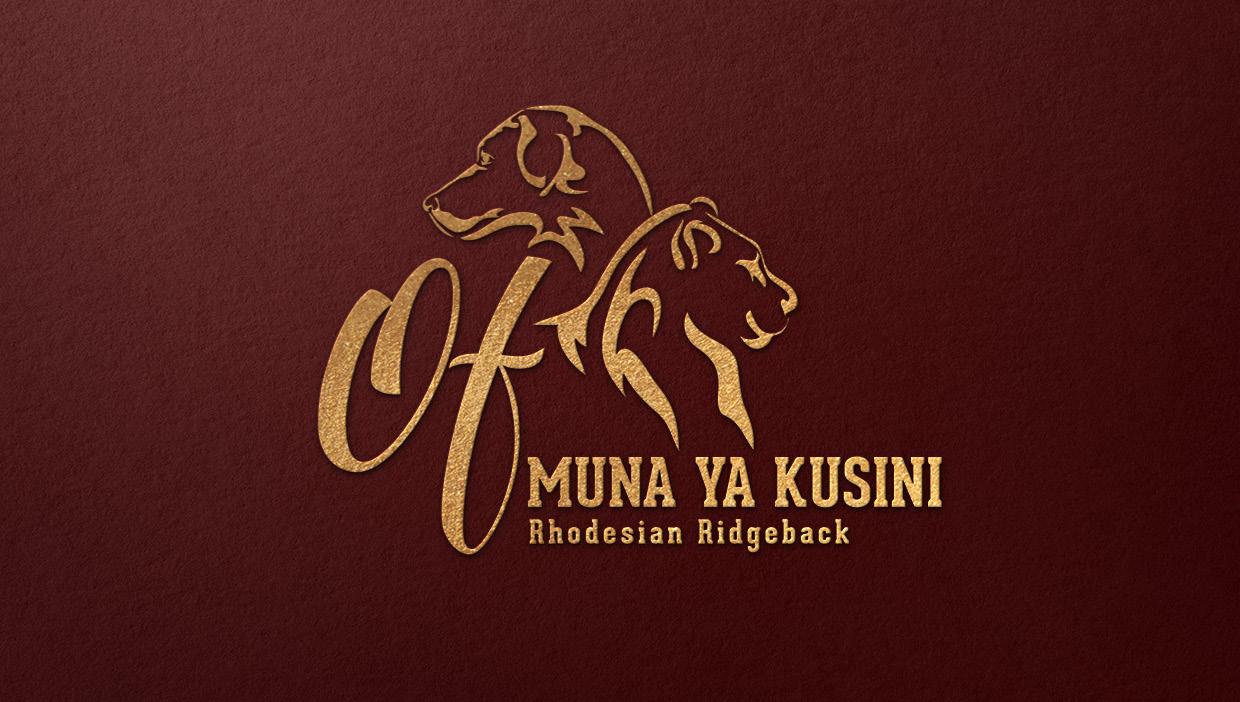
The cynology world is gradually returning to normal with dog shows and events in full swing. Seeing a large number of Ridgeback entries at shows provides people with a great opportunity to learn about the breed and talk to different breeders and owners.
However, we should not overlook those who, for personal reasons or beliefs, do not participate in dog shows but still have beautiful dogs at home. These dogs should not be excluded from breeding simply because they do not have flashy titles.
Let’s focus on developing our breed with care, prioritizing health, and expanding the gene pool.
We invite you to use your knowledge and years of experience to help us develop the magazine, making it informative and educational for new dog owners. Many in our community have valuable insights that can help us learn and grow.
We invite you to send us ideas and help with articles, so the magazine will be the best place to educate ourselves.
We thank all of you who help us put together this issue and we are already looking forward to the next one in summer.
Snežka, Timmy and Zhanna
RHODESIAN RIDGEBACK EU MAGAZINE 3
RHODESIAN RIDGEBACK EU MAGAZINE ISSUE 15 / APRIL 2024
DEAR READERS
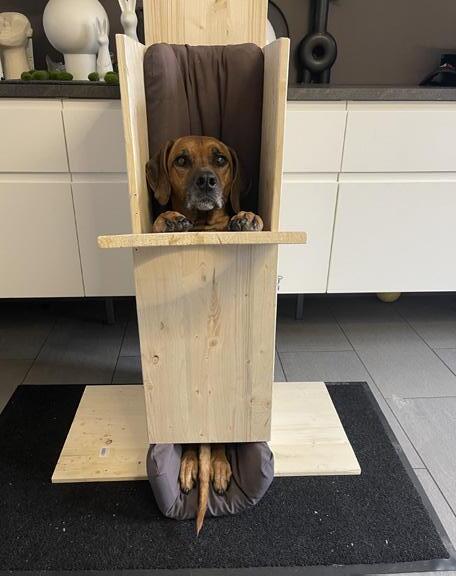

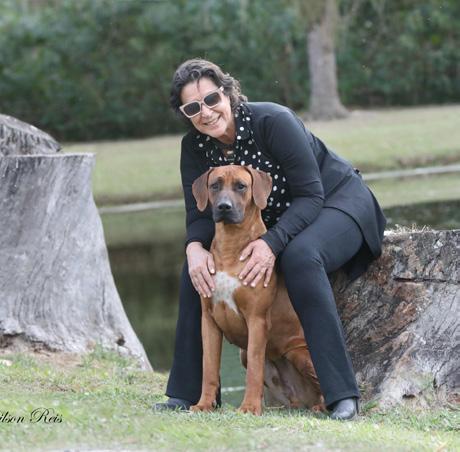
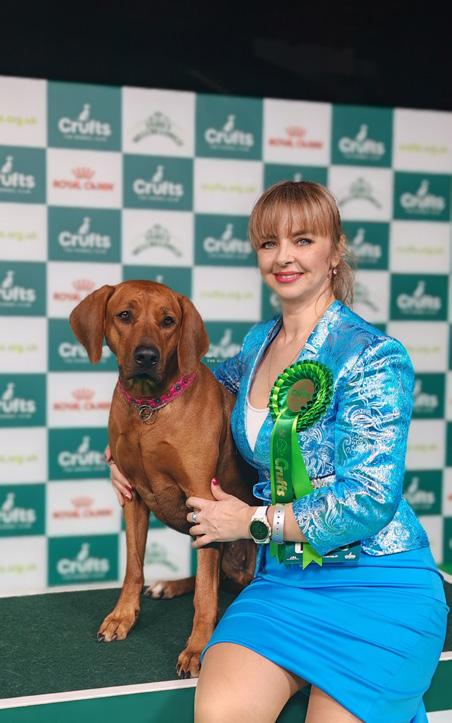
4 RHODESIAN RIDGEBACK EU MAGAZINE CONTENTS RHODESIAN RIDGEBACK EU MAGAZINE 06 Croups 08 MEGAESOPHAGUS - Esophageal Weakness 14 CALCANEUS BONE One little bone 18 THE TALE OF A TAIL 22 CATERPILLARS The hidden threat to your ridgebacks 26 TRADITIONAL CHINESE MEDICINE 36 Gary Denver An interview with a judge 42 IN-COELUM PERDIGÃO An interview with a judge 50 Empyrean Breeder 60 Ujamaa Breeder 72 RHODESIAN RIDGEBACKS IN SWEDEN 86 Crufts 106 Barn Hunt 112 Hydrotherapy 114 Physiotherapy and The Hindlimb 120 Nacho’s Agility Adventure 128 Can a puppy eat barf? 130 Alf Oldy 164 Cover dog
Authors are responsible for ensuring the accuracy, reliability, and authenticity of the content submitted for publication. Any misinformation, factual errors, or misleading information must be corrected promptly upon discovery.
Authors must properly attribute all sources of information, data, and quotations used in their articles. Plagiarism or misattribution is strictly prohibited. Authors must ensure that they have the necessary permissions and rights to use any photographs, illustrations, or visual content in their articles. The use of copyrighted material without proper authorization is not permitted.
Republication of articles from this publication is only permitted with prior approval from the magazine’s editorial team. Authors must seek explicit permission before republishing their work in any other publication, digital platform, or medium.
When republishing articles, authors must ensure that the original publication is properly credited, and a link to the original article is provided, where applicable.
Thank you for your commitment to upholding the highest standards of accuracy, ethics, and professionalism in our publication.
RHODESIAN RIDGEBACK
EU MAGAZINE ISSUE 15 / APRIL 2024
EDITOR
MAGAZINE TEAM
ASSOCIATE / TRANSLATIONS
ASSISTANT EDITOR AND TRANSLATOR
TIMMY U. RALFE (SOUTH AFRICA)
JUDGE AND AUTHOR.
LAYOUT DESIGN & GRAPHICS
SNEŽKA KURALT STARR DESIGN (SLOVENIA)
SALES & PR
ZHANNA GODJAJEVA (LATVIA) AN ACTIVE STUD RR OWNER WHO LOVES TRAVELLING AROUND THE EUROPE SHOWING RR.
OFFICIAL DESIGNERS
SNEŽKA KURALT - STARR DESIGN (SLOVENIA) FCI JUDGE SPECIALIST, RR OWNER, GRAPHIC DESIGNER
LICENCE OWNER
SNEŽKA KURALT
RHODESIAN RIDGEBACK EU MAGAZINE 5
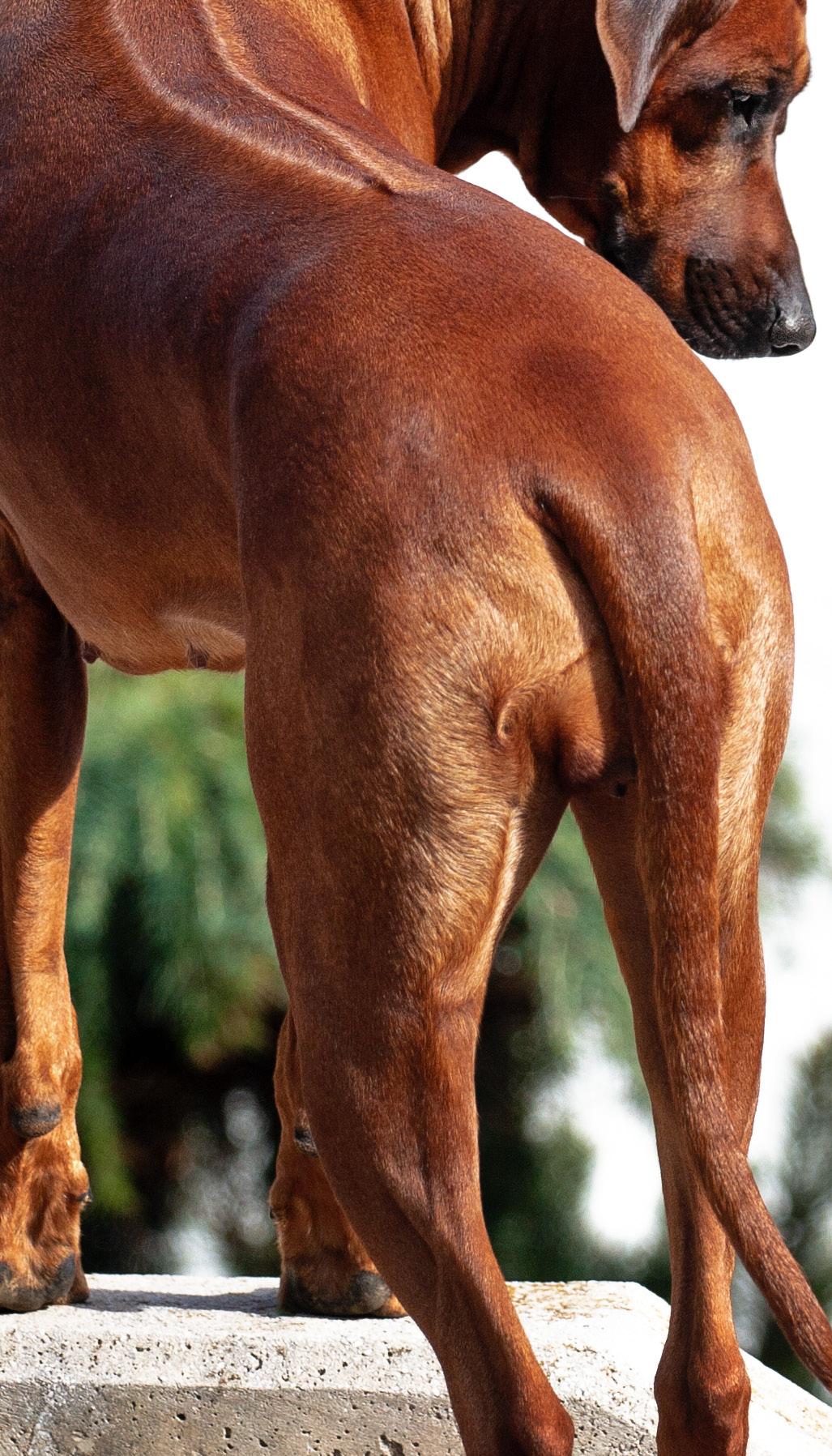
6 RHODESIAN RIDGEBACK EU MAGAZINE
COLUMN Insights into the Breed
by Barbara Turpin
CROUPS
CONFORMATION CORNER
Measuring the croup is a moving target. Unless it is absolutely without any curvature, where one measures the angle of the croup can change from dog to dog and outcomes can differ based on who is doing the measuring. Consequently, I measure pelvic angles. There is no subjectiveness in this measuring point.
If we follow the rules of the Golden Ratio, the ideal pelvic angle is 27.5 degrees. What happens if that angle becomes too flat or too steep? Let’s start with the flat “croup” (though I mean pelvic angle). A flat croup is the lesser of the two faults. A moderately flat croup can cause a higher tail set that is unsightly, but doesn’t significantly affect the way a dog moves. Drive off the rear can still be long and low. And correct. A very flat croup can cause unacceptably high lift off the ground, producing wasted movement and requiring a dog to work harder and causing it to tire faster. It might be forgivable, to some, in the ring, but not in the field.
Steep croups (pelvises) are a much more complicated and potentially dire fault. A pronounced iliac crest may or may not be indicative of a poor croup. Some dogs have a larger pelvic girdle overall (something I like for brood bitches), while others are more typical in overall size. When observing the pelvis and a more pronounced iliac crest is visible, ascertain whether it’s due to a benign, larger pelvic girdle, or if it is truly due to an overly steep croup.
Steep croups can produce two potential movement faults. The first fault I’ll discuss is lack of drive. Because
of the pelvic angle, the femur cannot extend past where bone meets bone. The movement becomes stilted and the dog will lack the drive necessary for unfettered action.
The second faulty movement is called peddling. The stifle bends and the hock lifts up off the ground in a motion that resembles peddling a bicycle. I find this type of rear movement the most faulty. It produces way too much wasted movement and a dog is going to become exhausted much sooner than a dog who doesn’t peddle.
Further, extremely steep croups are often joined by two other faults: straight stifles and slipped hocks. These three faults together make for a very poorly constructed dog that is suitable neither for the ring nor the field. In extreme cases, nerves can become pinched where the femoral head meets the hip socket. This is a painful condition that, in some cases, requires surgery to make the dog more comfortable. In one very extreme case I know of, the dog had to be euthanized because it had no quality of life.
Drive must occur in a straight, not crooked, line from the point of the hip joint down to the foot. The degree of extension in the rear should match the degree of reach in the front—ideally reaching as far as the point of the nose. But again, long and low with no lift (wasted movement) off the ground.
I hope this is helpful to folks that just had to know more about croups, pelvic angles, and drive.
RHODESIAN RIDGEBACK EU MAGAZINE 7
CORRECT INCORRECT STEEP CROUP INCORRECT FLAT CROUP

MEGAESOPHAGUS
ESOPHAGEAL WEAKNESS
Urška Bergant Bertoncelj, DVM

“Megaesophagus in dogs is a condition characterized by a dilation or enlargement of the esophagus, which is the muscular tube that carries food from the mouth to the stomach. This dilation is often due to weakness or dysfunction of the muscles in the esophageal wall, making it difficult for food and liquid to pass into the stomach properly.”
8 RHODESIAN RIDGEBACK EU MAGAZINE

Megaesophagus refers to either focal or widespread muscle weakness of the esophagus; it is categorized into congenital or acquired weakness. In the practice of small animals, this condition is mostly encountered in dogs, though it is occasionally seen in cats. The breeds most prone to this condition include Miniature Schnauzer, Great Dane, Dalmatian, Chinese Shar-Pei, Irish Setter, German Shepherd, Golden Retriever, Labrador Retriever and Collies. Rhodesian Ridgebacks are not a predisposed breed.
Congenital weakness is extremely rare. The causes or development of its occurrence are still unknown. It is suspected to involve a defect in the function of the vagal nerve (10th cranial nerve). This form is often suspected when problems start to appear while the animal is still young. At this stage it is difficult to diagnose, and it is necessary to wait for the animal to mature—especially if the problems occur sporadically and in a very mild form. The first sign noticed by owners is vomiting, which is actually regurgitation (this means the backflow of stomach contents back into the esophagus and also into the mouth; synonymous with reflux). The difference between vomiting and regurgitation is most noticeable in the straining of abdominal muscles, as regurgitation is a passive process without straining of abdominal muscles and there is no prodromal phase (warning loops such as tightening of lips, deepened breathing, etc.). The regurgitated material often contains a lot of thick mucus and is not yellow in color. Other symptoms may include weight loss, coughing, fever or nasal discharge accompanying pneumonia; in severe cases, swelling and deflation of a balloon-like area on the skin of the esophagus can be visible. Additionally, poor growth in young animals, increased appetite or complete anorexia, hoarseness and bad breath may be observed.
In cases of acquired weakness, problems arise due to neuropathies, myopathies, or pathology at the junction of neuromuscular pathways (e.g. myasthenia gravis). As with congenital forms, the main symptom is regurgitation, although some dogs may only present with a cough. Weight loss occurs if regurgitation is frequent.
In a veterinary clinic, while conducting a clinical examination of a dog, one might observe additional signs such as heightened respiratory
RHODESIAN RIDGEBACK EU MAGAZINE 9
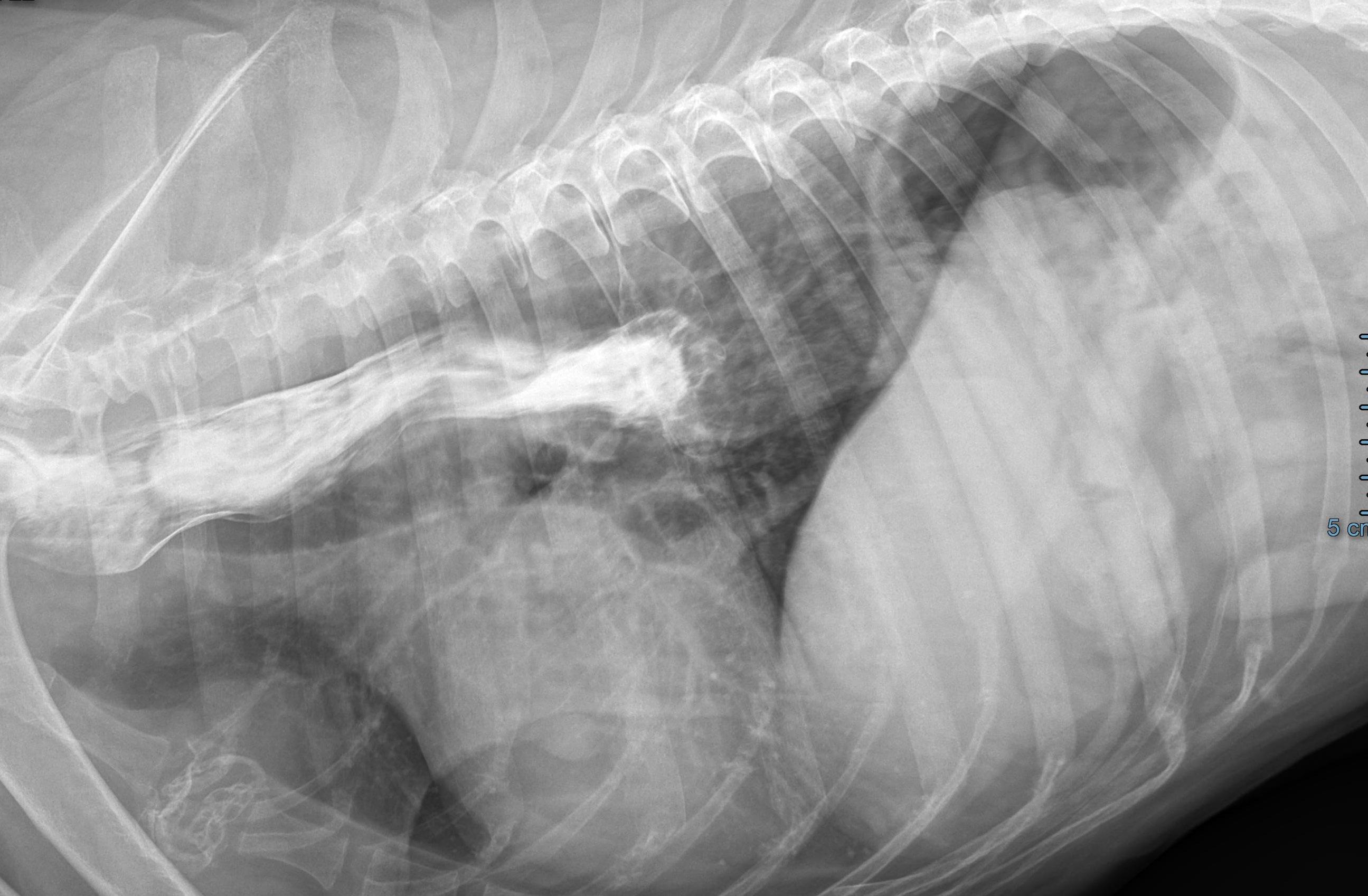
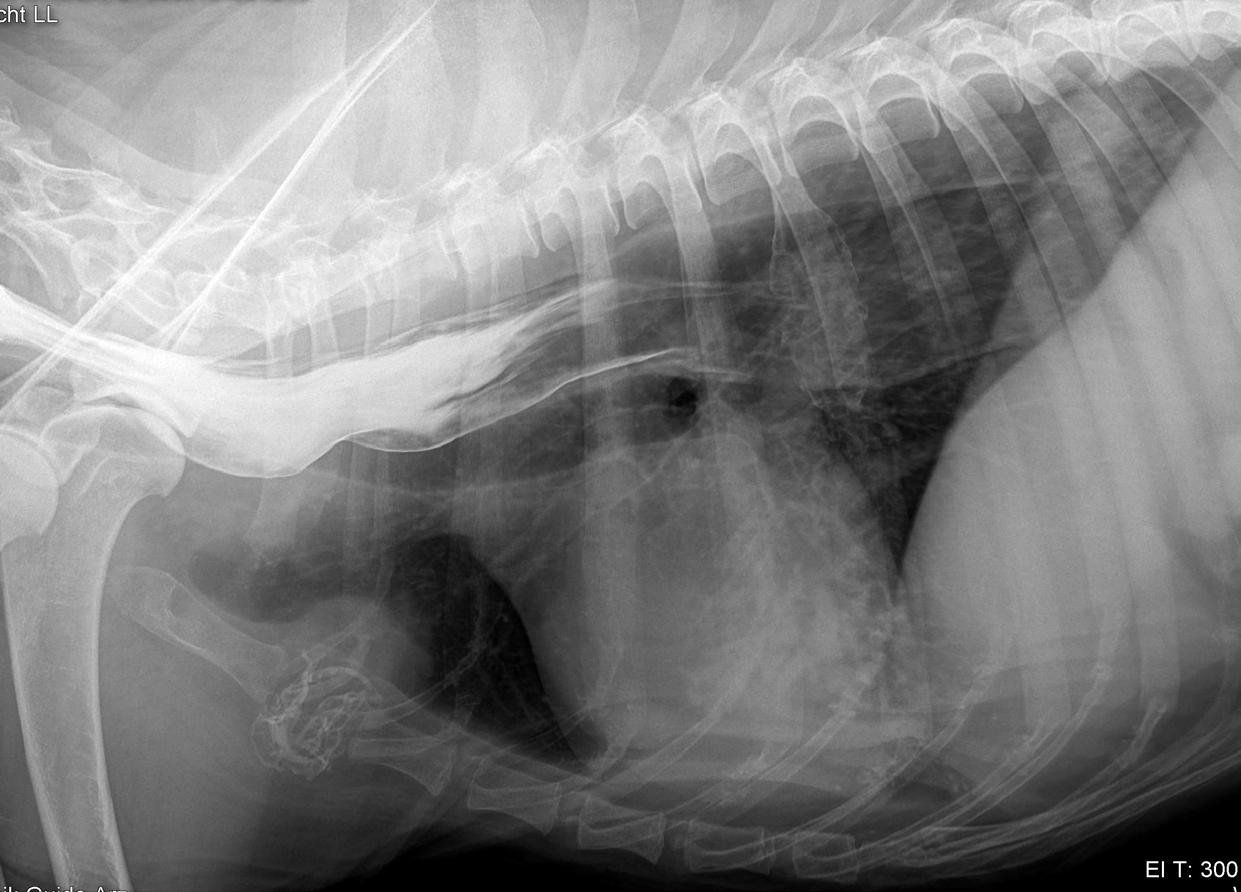
sounds, muscle wasting, and particular attention should be given to assessing cranial nerve reflexes. The diagnosis is most easily made using radiographic imaging, sometimes concurrently with contrast imaging, which, by staining the pathways, reveals expansions. In brachycephalic breeds, smaller, more tortuous placements of the esophagus are normal and should not be confused with megaesophagus.
Currently, there is no effective medication for treating congenital weakness, but aids and methods for easing or preventing symptoms can help, attempting to prevent further expansion and aspiration of food into the respiratory system (which can cause aspiration pneumonia). Dogs are fed on an elevated platform where the dog must stand on its hind legs, thus positioning the esophagus as vertically as possible, with gravity assisting the passage of food
directly into the stomach. This position should be maintained for at least 5-10 minutes after the dog has finished eating and drinking. An example of a device that enables such feeding is a special chair called a “Bailey chair”. It is also very helpful to feed smaller meals more frequently. Regarding the type of food, feeding cooked oat flakes is recommended, but it all depends on the individual casesome respond best to dry food (kibble), others to canned food; all based on a “trial and error” method.
For acquired weakness, it is important to determine the cause of the weakness. This includes various tests such as measuring antibodies for acetylcholine receptors (myasthenia gravis), serum cortisol (hypoadrenocorticism-Cushing’s disease), electromyography (generalized neuropathies or myopathies), thyroid profile (hypothyroidism), and antinuclear antibodies (systemic lupus erythematosus). If the cause remains unknown, then it is referred to as idiopathic megaesophagus, which is unfortunately also the most common. In this case, the therapy is the same as for congenital megaesophagus. Based on the de-
10 RHODESIAN RIDGEBACK EU MAGAZINE
Dog with Megaesophagus.
Photo by Susanne Neu
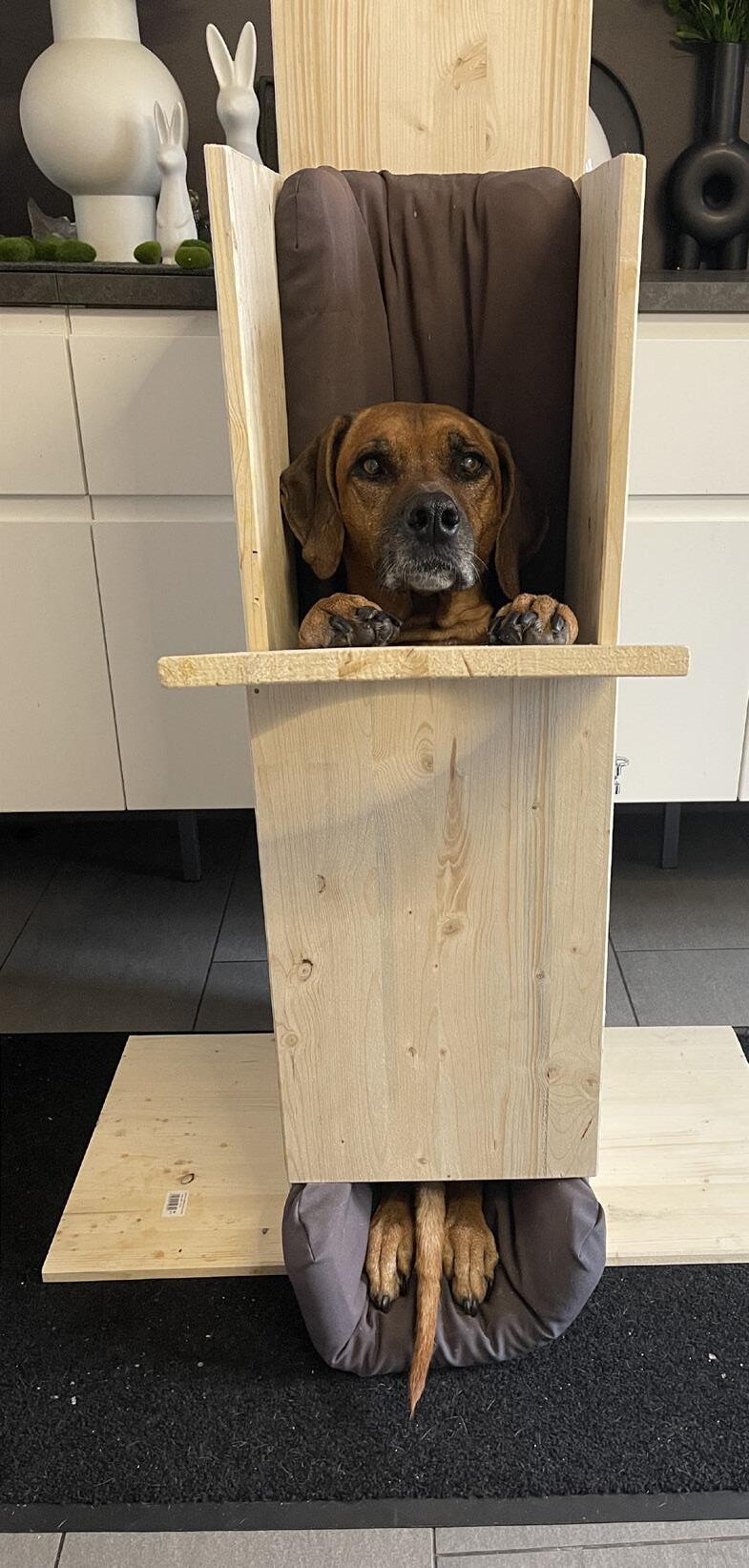

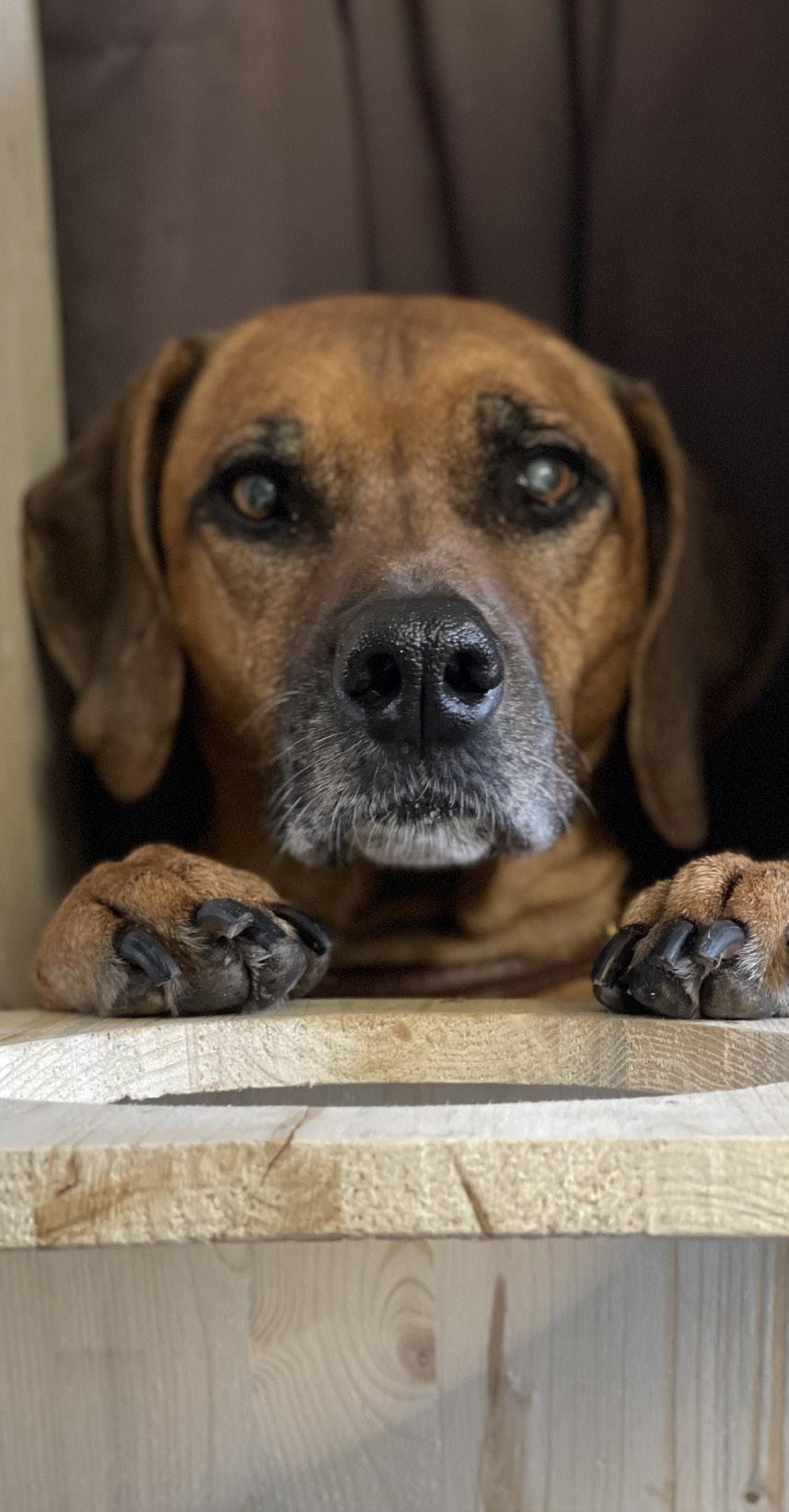 Susanne Neu
Susanne Neu
DIAGNOSIS OF MEGAPHAGUS
One day our 12-year-old Rhodesian Ridgeback female began to cough, with food coughing up again and again. Since there was no improvement in sight, we consulted our veterinarian. After my description of the problem and a subsequent X-ray with contrast medium, the diagnosis was made quickly. Hanna has pneumonia caused by a Megaphagus.
The prognosis was frightening: approx. 14 days, then the dog will be starved to death. At home, we tried to keep Hanna upright while feeding so that the food can slide into the stomach. But with an older dog lady, it’s not easy. Not pleasant for a big dog and also exhausting for us.
After research on the Internet, we came across the Baileys Chair. We had to give it a try, we could not give up on our girl so easily. My husband built our saving chair in the basement within 2 hours. We put Hanna in, which she accepted without any problems and we started to offer her the food pureed and very liquid. She enthusiastically accepted it. On the 2nd Day she has already tried to climb into the chair by herself.
After the food, she gets puppy milk to rinse the oesophagus, which she likes to drink. We do this procedure 3 times a day. She has her old weight of 33kg again and the cough has become very rare. We are overjoyed! She is our old happy girl again.
11
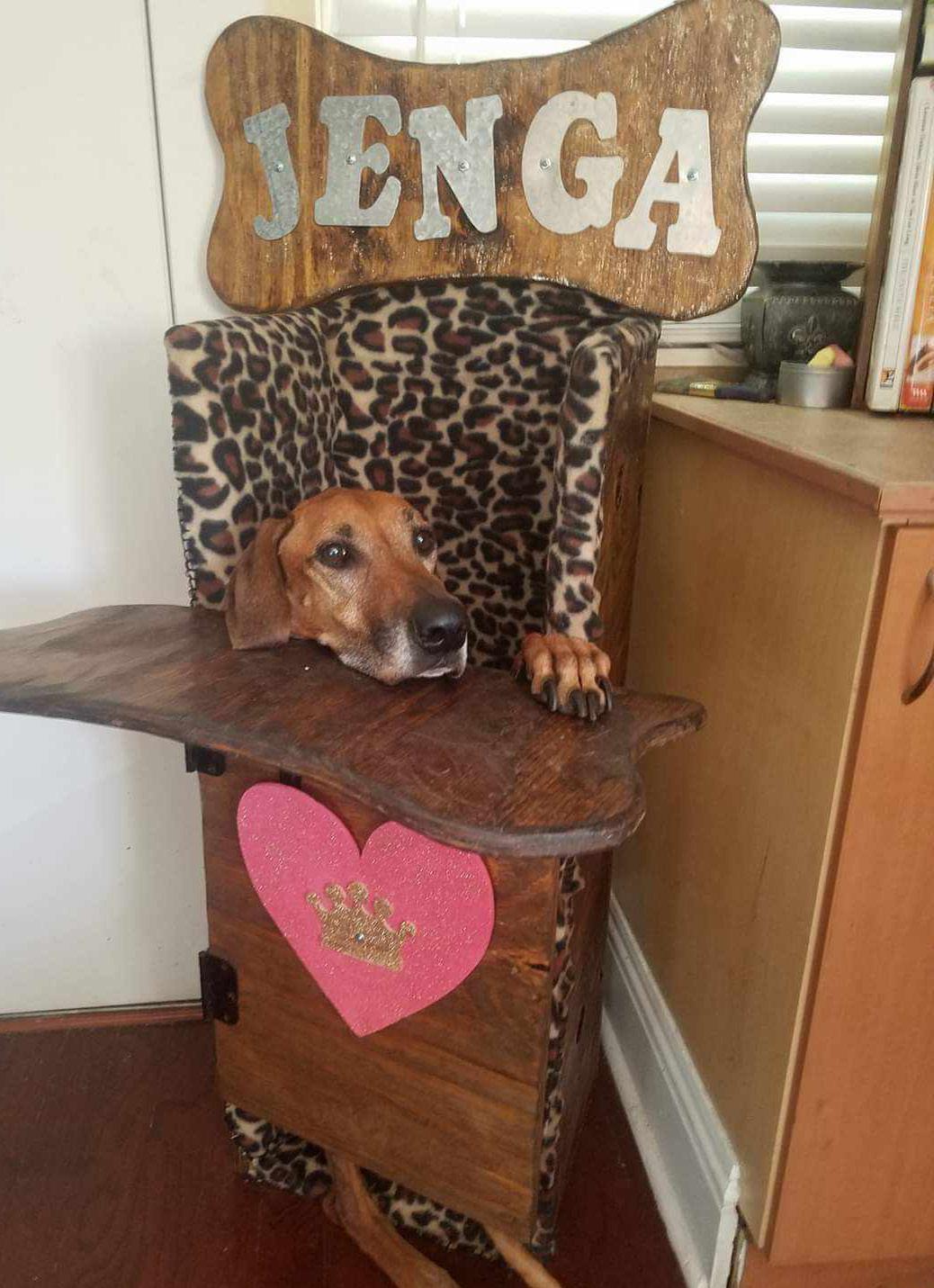
Elke Lockert
I met Jenga in May of 2008. After 3 bottles of wine, I decided to "go look" at him, ended up sleeping with him and he never left. Lol. Jenga was a rescue from Florida Ridgeback Rescue. Wherever he came from, then found on the side of the road, went to animal control, then to Ridgeback Rescue then to me....all within the first 7 months of his life. He was a mess. Then to add more craziness, I had just gotten a puppy (Kenji) a few weeks before meeting Jenga because I had just lost my Ridgeback Sire. The 2 of them became the best of friends. They were known as the KJ Duo. Kenji and Jenga. Jenga became the best sweetest, most lovable, cuddly, kissy, goofy, marmadukey boy ever and I was so glad that I got to be his Momma.
Fast forward to 2017, Kenji had gotten a rare form of anal cancer and I had to let him go. I reached out to my Breeder and ordered another puppy who I named Zumanii. Jenga and I went and picked Zumanii up and they quickly became BFF's. A week after Zumanii coming in, Jenga started not eating, then started to regurgitate whatever he did eat. He started losing a bunch of weight. We did all sorts of tests and couldn't figure out what was causing this. I started researching more and had saw an article on Mega E. We finally determined this was the cause. Mega E is really hard because it's a trial and error thing in what works and what isn't working. I started blending his food and had him eat on stacked crates. That worked for a little while but then I had to switch it up and started giving him raw food balls and then built him a "Bailey" chair where he had to sit in it for 30 minutes after eating upright. We had to do this 4 times a day. This worked for 6 months and finally one night, he let me go while we were sleeping. This was the absolute best way that could've happened.
I always said that Jenga was so goofy but at the end of the day, he was the smartest dog because he let me go on his terms and I didn't have to make that dreaded decision.
I miss Jenga every day along with Sid, Sire and Kenji. I still have Zumanii and he's my big loverboy and I'm so glad he lets me be his Momma!
termination of the cause, drug therapy can be prescribed.
In some dogs, the esophagus can narrow to normal width and perform its function. Even if the esophagus remains dilated, some dogs manage to maintain a good quality of life with dietary modifications and feeding methods. In other cases, the placement of a tube through the abdominal wall directly into the stomach (gastrostomy), through which the dog is fed, works well, although this does not prevent reflux.
In conclusion, while megaesophagus presents significant challenges, especially in its congenital form, there are strategies and interventions available to improve the quality of life for affected dogs. From specialized feeding techniques like using Bailey chairs to diagnostic tests for acquired weakness, veterinarians and pet owners can work together to manage the condition and alleviate symptoms. Although there’s no onesize-fits-all solution, tailored approaches based on individual cases can offer hope and comfort to both dogs and their devoted human companions. With ongoing research and advancements in veterinary medicine, the outlook for dogs with megaesophagus continues to evolve, offering optimism for a brighter future ahead.
12 RHODESIAN RIDGEBACK EU MAGAZINE
Rhodesian Ridgeback Jenga in Bailey Chair. Photo by Elke Lockert
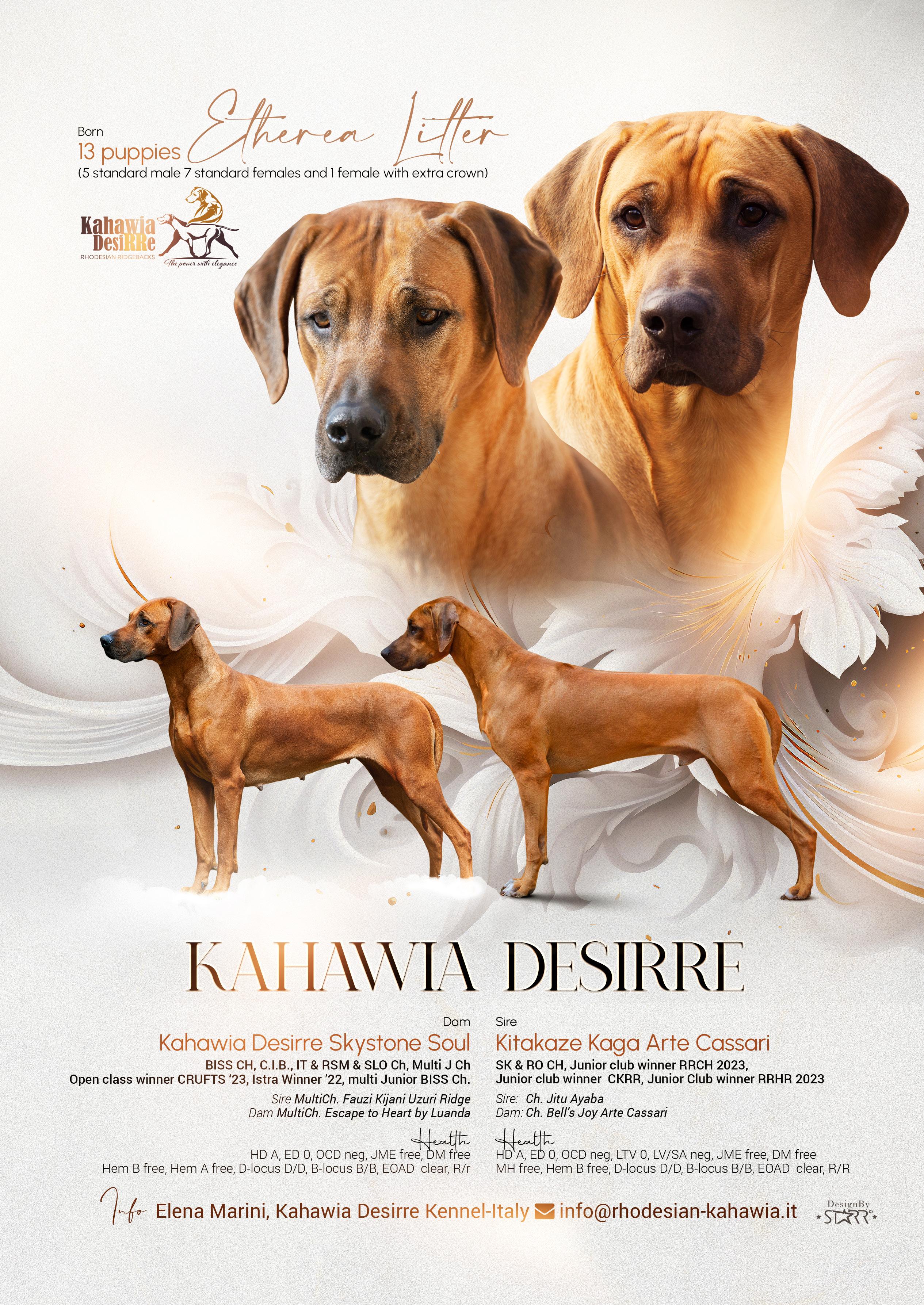
CALCANEUS BONE
ONE LITTLE BONE
BARBARA TURPIN Of Course Rhodesian Ridgebacks
“In the realm of canine anatomy, the calcaneus bone is the silent architect, dictating the fate of performance and mobility.”
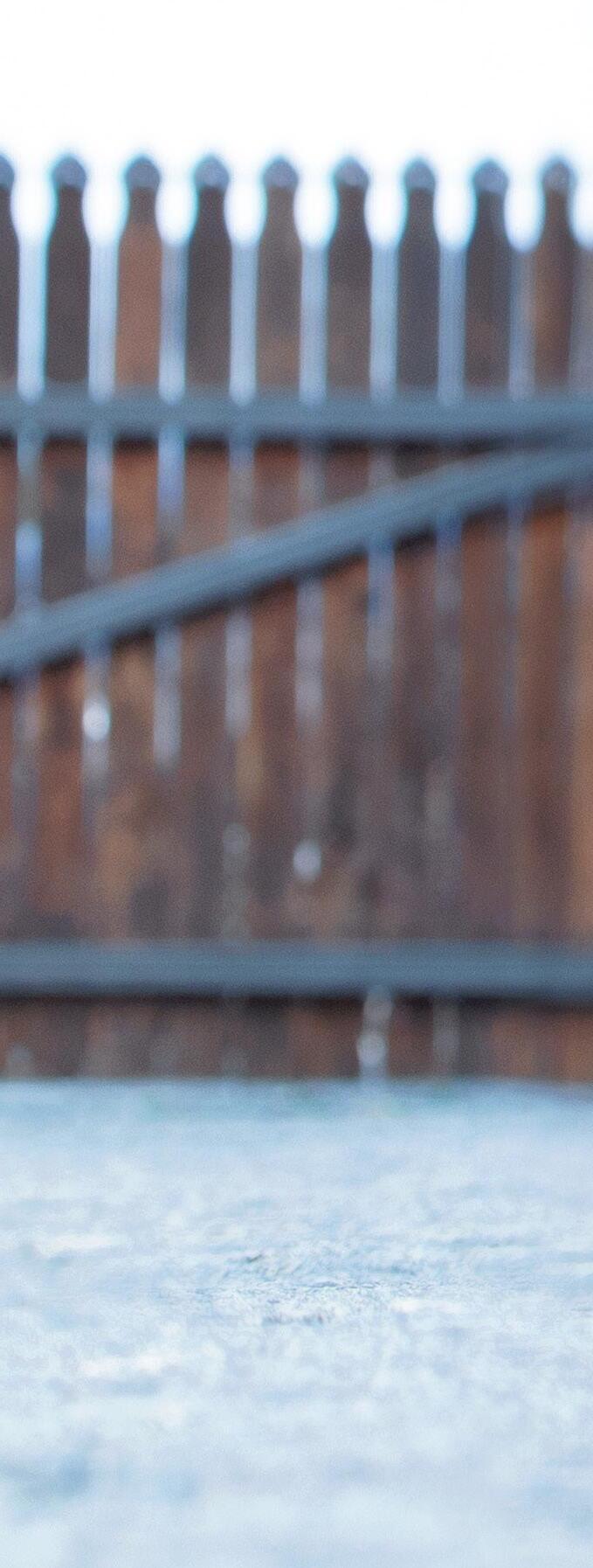
14 RHODESIAN RIDGEBACK EU MAGAZINE
The most important bone in the body of a high-functioning Rhodesian Ridgeback often gets overlooked. It is the first bone I check on all puppies at birth. It can make or break how well a dog performs, moves, and holds up to physical stressors. If faulty, the whole rear assembly falls apart— sometimes with devastating consequences.
About the size of an artist’s eraser, all forward momentum relies on the calcaneus bone. I’ve been studying this bone and its role in performance for years. My research into this was prompted by a term I heard initially from Pat Hastings (originator of ‘The Hastings Method’ of evaluating puppies, and renowned author; may she rest in gentle peace).
Before meeting Pat, I had never heard the term ‘slipped hock’. Growing up with Whippets that competed in both racing and conformation events, it’s a fault just not seen in a breed specifically built for speed. More about Whippets later, as they played an important role in my learning.
I asked Pat to explain what happened in the hock joint to cause the fault, and she said it had something to do with tendon placement in the hock. As a life-long ‘why’ person, I needed to know more. Since that time I’ve scoured any related articles, collected images of broken hock joints, and learned which bone is the culprit and why.
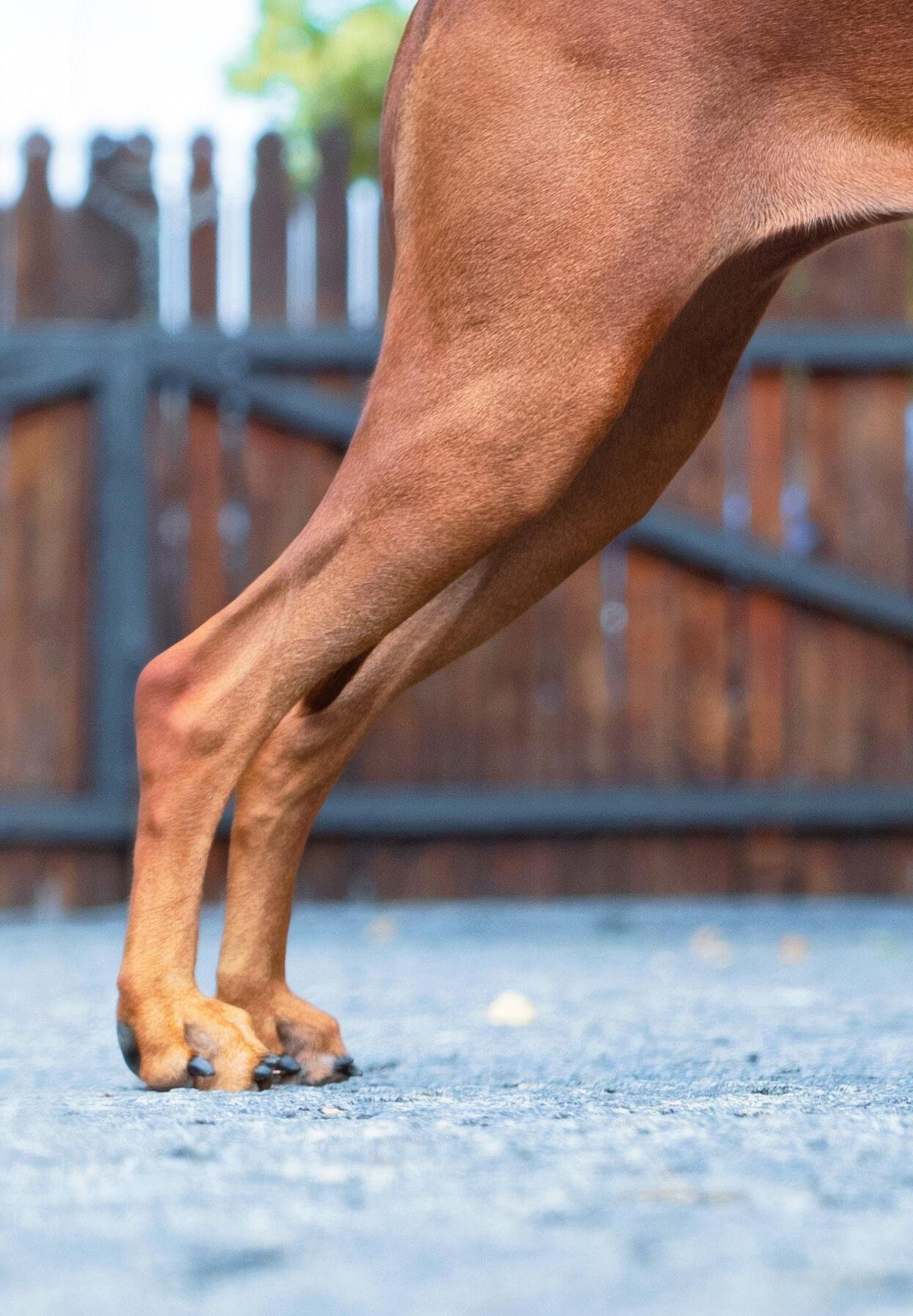
We owe a lot of our learning journey to the Greek mythological figure Achilles. The Achilles tendon is the strongest tendon in the body. Hunters and farmers rely on the immense strength of this tendon to hang an animal for butchering.
Standing two meters at the shoulder and weighing as much as 600kg, even a mighty Moose
RHODESIAN RIDGEBACK EU MAGAZINE 15
can hang solely by its Achilles tendon. A hole is made in the skin between the tendon and the calcaneous, a hefty rope is strung through, and the animal is hoisted up leaving its full weight to become solidly suspended by the tendon. Amazing!
The calcaneus in dogs is the same as the heel bone in humans, though the hock joint and foot structure in dogs have some differences. If a dog’s calcaneus is too short, it is no match for the powerful Achilles tendon, and disaster occurs. The resulting injuries from this tragic fault can have devastating results on the dog. The extreme strength of the Achilles tendon requires a well-developed calcaneus for there to be enough surface area to form a healthy attachment of tendon to bone.
Dogs with slipped hocks (also defined as having a short calcaneus) are prone to chronic tarsal hyper- extension. This condition causes the hock joint to collapse forwards resulting in a painful injury that will just keep on recurring. But it can get worse.
Whenever I see a post about a dog ‘mysteriously’ experiencing a break in the hock (usually a tarsal bone), I immediately go looking for a standing photo of the dog. The culprit is quickly confirmed—that unsightly and debilitating fault glares back at me. That loathsome short calcaneus.
During my research into this fault, I went back to my original breed: Whippets. Having grown up in a very influential kennel that started in the early 1960s, I never saw this fault. Why? Most likely, because those dogs would be so slow or prone to injuries that they would fail to meet the requirements of fit for function.
16 RHODESIAN RIDGEBACK EU MAGAZINE
CALCANEUS
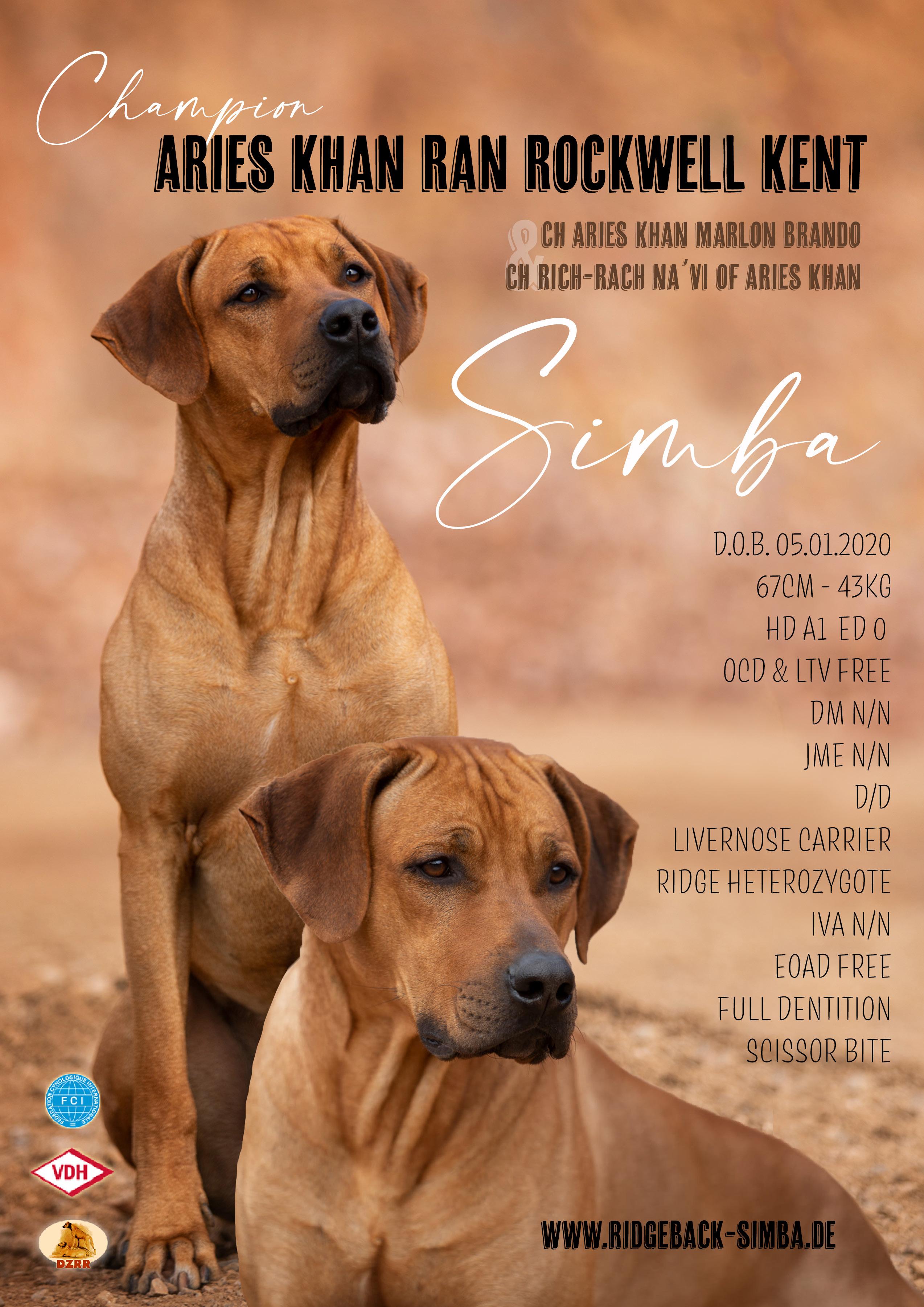
THE TALE OF A TAIL
UNDERSTANDING, SELECTING, PRESERVING
Celeste Flannery DVM
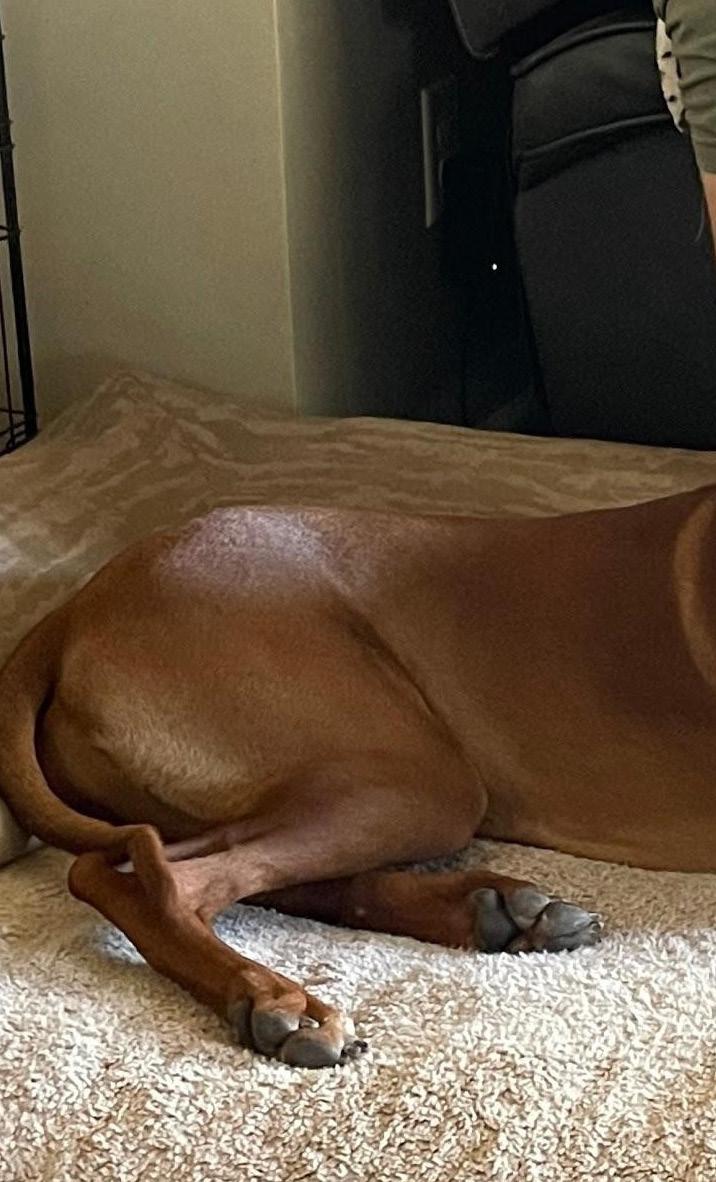
“This is the story of my beautiful “Ruby” puppy, and her ongoing difficulties. I present this information to the diligent breeders that I hope to join soon, the owners and fanciers of our amazing breed who may have one of these dogs, and to the veterinarians who see them so their pain is not dismissed.”
18 RHODESIAN RIDGEBACK EU MAGAZINE

Ibought my first Rhodesian Ridgeback with my first paycheck out of Veterinary School in 1995 and have been in love with our smart and often naughty dogs ever since. Just before Christmas 2022, I lost my French imported Ridgie, “Grace” at 5 years and 1 week old to malignant visceral Mast Cell Tumor. She was my soul in a dog’s body, and as I watched our Great Dane “George” grieve for weeks, I decided to get another Ridgeback puppy. In February 2023, I went to a breeder and picked up little “Ruby”. She was a spunky little girl who could clearly keep up to her brothers. The puppies were crawling under a patio and exploring a big yard, so the small bump at the base of her back I thought was an injury. She was running around and seemed fine otherwise. I had a dog-trainer friend go with me, and so we flew home to Arizona with little “Ruby” between us on the plane. The breeder suggested that I could show her as she had great blood lines.
We battled diarrhea for the first 2 to 3 weeks we had “Ruby”, and had to use 2-3 rounds of ponazuril to get her to clear the coccidia parasite. I ran 4-5 fecal checks through my hospital in her first 6 months and used custom probiotic treatments
RHODESIAN RIDGEBACK EU MAGAZINE 19
by Animal Biome (animalbiome.com) to help her alleviate the loose stools. We improved her diet, and added fish oils and other supplements. She strained to have a bowel movement from the time she got to our house as an 8 week old puppy, and has done so ever since. At first, she would walk around 10 m to complete her bowel movement. She almost “overflow defacated”. At about 10 weeks old she cried out as I was sitting on the floor playing with her and my hand bumped into her lower back. I took her to my hospital and x-rays of her back were done. She looked like a French Bulldog beyond her sacrum and into her tail. She had a pronounced wedge shaped coccygeal vertebrae (called hemivertebrae) in the location of her bump.
At about 4 ½ months old, I realized she was really not going to be a show dog in my hands. I reported to her breeder that she was taking 20 to 40 m now per bowel movement and still straining as she goes. She was all clear of parasites. She did not like anyone touching her tailset or lower back, and has always had a lower tail carriage. She cried and was sensitive if I have to express her anal glands as part of her bath. She is a beautiful and mellow pup, with a lovely gait. She loves to run and chases my other dogs through our yard as they play. She has had 3 urinary tract infections since we got her, and has just gone through her first heat cycle.
My son has been training with her as we are learning handling for the conformation ring. Her bump over her lower back has become barely noticeable except to those who have known her all along. Ruby is a member of our family. She will not be bred. I don’t need more of her put out there for owners with less budget or fortitude.
Ruby’s x-rays have been reviewed by a prominent ACVR member of my profession. We discussed the need to make sure she wasn’t an LTV (Lumbosacral Transitional Vertebrae)
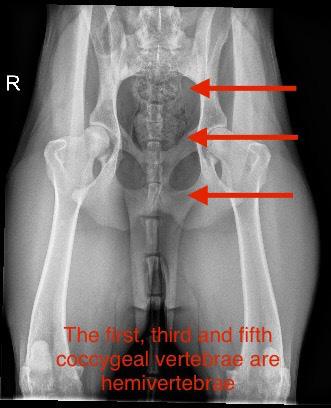
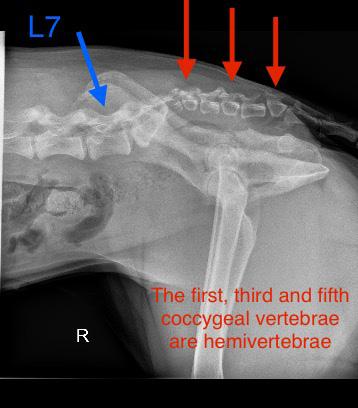


20 RHODESIAN RIDGEBACK EU MAGAZINE
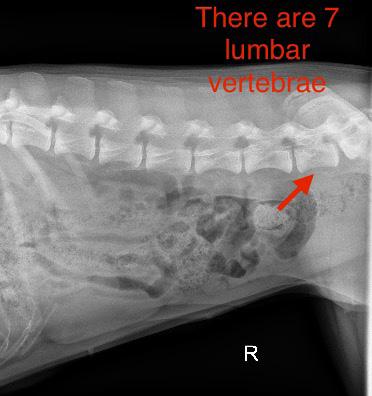
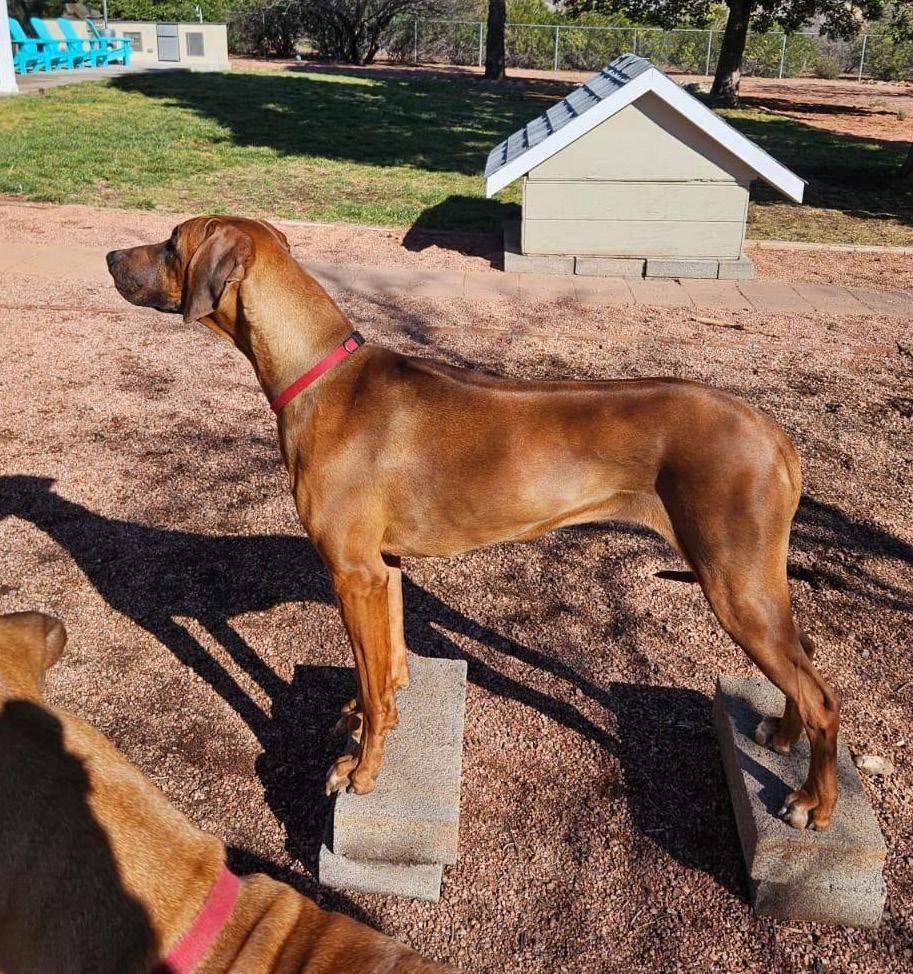
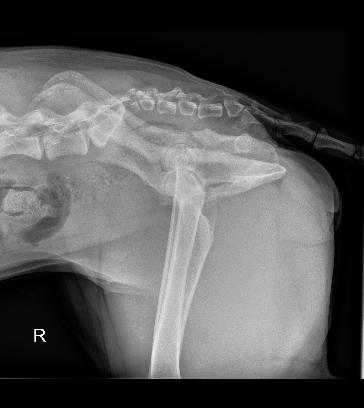

dog, and it appears she is not. Her latest X-rays show the first, third and fifth coccygeal vertebrae are actually hemivertebrae creating a really uneven tailset area. An MRI might be in her future to help identify the reason for the pain and prolonged defecation, but not yet. She is a ‘high tail kink’ dog at this time. Kinked tails are supposed to be innocuous. But, that is not the case here. Her pain is real. My family and I will care for her and offer her a performance life as part of our pack. We lovingly call her “Aunt Ruby” already. She has had chiropractic work done and has had sporadic doses of anti-inflammatory medication if she is hurting.
I am now an AKC (American Kennel Club) and RRCUS (Rhodesian Ridgeback Club of the United States) member under an amazing heritage breeder mentorship. I am happy to learn from her. I love reading in depth about our breed and meeting breeders and performance members of the dog community globally. Our breed has such a fan base all around the world.
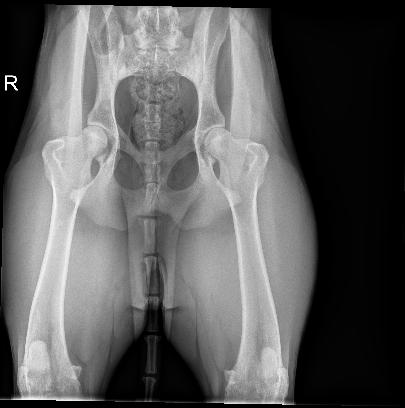
RHODESIAN RIDGEBACK EU MAGAZINE 21
Ruby in Stack Kink in tailset and her xrays
BY SOPHIE BRUNETEAU, NZURI NA’WEH
CATERPILLARS THE HIDDEN THREAT TO YOUR RIDGEBACKS
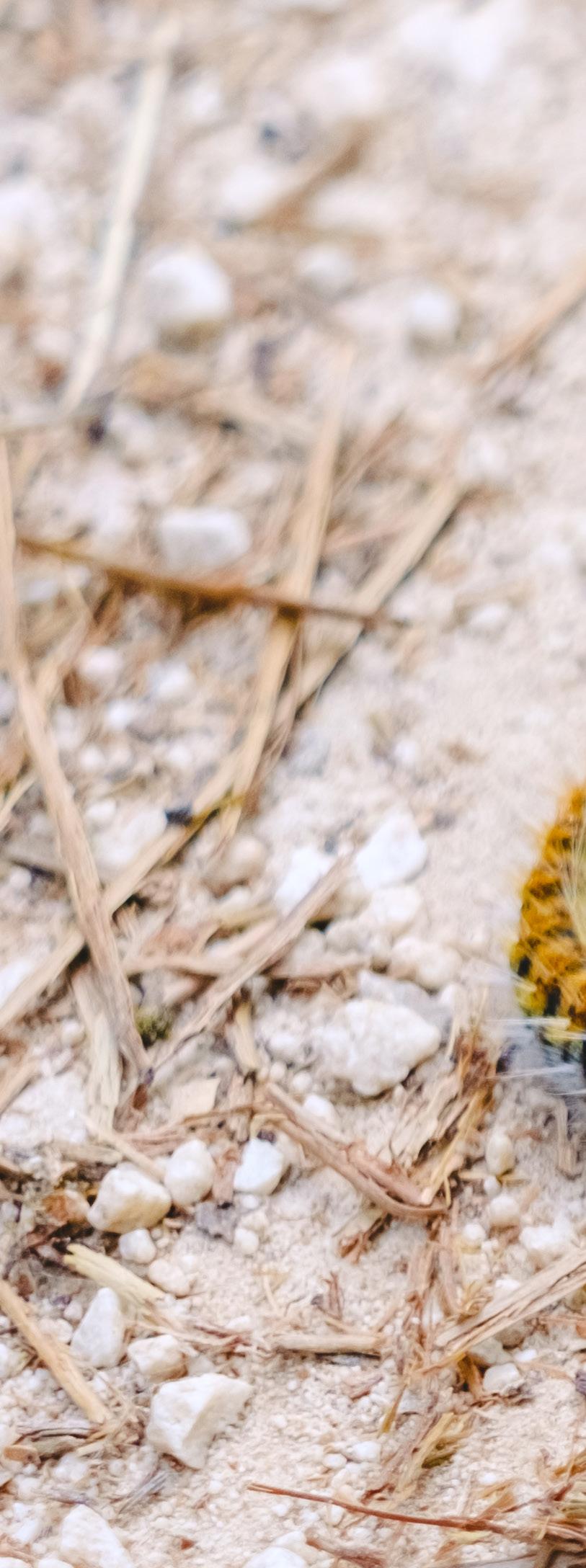
At the beginning of February, I found one of my dogs, Makeba, agitated and starting to drool a lot.
What could she have touched to be in such a state? Toad? Snake? Stinging plant?
In a few minutes her condition deteriorated: swelling of the mouth and then the throat. She shook her head in all directions and drooled endlessly!
I quickly understood that it was very serious and although I hadn’t seen one yet, I thought of processionary caterpillars!!
Time was running out, my actions had to be quick before rushing to my veterinarian after having informed them of my arrival.
So what is a processionary caterpillar, what are the dangers and what to do?
PROCESSIONARY CATERPILLAR
There are 2 types of processionary caterpillars: those of the oak (Thaumetopoea processionea) which feed exclusively on oaks, they are silver

in color, and those of the pine (Thaumetopoea pitycampa) which feed on the needles of the pine which are orange-brown in color.
The 1st is a mid-European species which is present from western Europe to Turkey.
The 2nd is located in the south west of France and the Mediterranean rim but has spread since 2012, the date of the ban and therefore the cessation of conventional insecticide treatments. They cover almost the entire French territory today.
Global warming increases the survival of caterpillars and allows them to complete their development in regions where climatic conditions were previously hostile to them and to extend their distribution in latitude and altitude.
It is also one of the model species for the study of the consequences of climate change, retained nationally by ONERC and internationally by the IPCC.
They are both characterized by gregarious behavior, they gather in dense patches on the branches of trees and form nests, sort of white cocoons that are very easy to spot.
22 RHODESIAN RIDGEBACK EU MAGAZINE


These are the female butterflies who laid their eggs there (up to 200 per female) between July and September.
After their development, approximately 1 month, the eggs hatch and produce caterpillars. It is one of the rare insects with winter larval development.
They move in spring (generally from February to April) in procession, hence their name, to reach the ground and find a place to nest before transforming into butterflies. Once on the ground, they can nest for several years before hatching!
WHY ARE THEY DANGEROUS
Processionary caterpillars have abundant hairs connected to a gland which contains a particularly stinging venom. The penetration of these stinging bristles into the skin or mucous membranes results in the release of this venom, a toxic substance called THAUMETOPOEIN, responsible for significant inflammatory reactions and allergic reactions and causes severe lesions.
It is not necessary to be in direct contact with a
caterpillar to present symptoms: its stinging bristles detach very easily when the caterpillar feels attacked and are transported by the wind.
WHAT DANGER FOR THE DOG
The danger for the dog generally extends from February to August. They represent 92% of cases of poisoned animals.
The lesions are mainly located in the oral cavity, this being due to the mode of exposure: licking, digging in the ground, catching caterpillars in the mouth, ingestion of contaminated plants... the effect is similar to a hundred micro bites and causes severe pain!!
The first symptoms will appear quickly, your dog will lick his nose and shake his head insistently.
There will be a significant production of saliva and the contact area will begin to inflame causing edema: of the tongue, muzzle, throat.
You will notice inflammation of the lips, redness of the tongue and difficulty swallowing saliva. In some cases, the edema even prevents the dog from closing its mouth.
RHODESIAN RIDGEBACK EU MAGAZINE 23
If the dog swallows a caterpillar, he will probably experience acute vomiting in addition to the aforementioned symptoms.
This can, after a few days, lead to serious lesions of the mouth, with serious necrosis of the tongue. Partial amputation of this organ may be necessary, which handicaps the animal for life. Depending on the degree of severity of the attack, the dog may find itself completely unable to eat and especially to drink, the tongue being the dog’s major tool for hydrating itself, the outcome then being euthanasia. .
The animal’s vital prognosis can be compromised because anaphylactic shock can also be feared and poisoning by caterpillars constitutes a veterinary emergency!
THE 1ST RESPONSE
Above all, never touch the caterpillars with your hands and protect yourself if possible with gloves. Remove the animal from the area.
Rinse the dog’s mouth thoroughly for up to fifteen minutes, even if it can be difficult, with cold water, lowering the animal’s mouth so that it does not swallow but on the contrary that the water drives the stinging hairs outwards.
If possible, you can rinse with water mixed with baking soda, which will soften the acidity of the attack and also relieve the pain.
Do not rub the area that appears to be affected to avoid spreading the irritating substance and making the problem worse.
And take your dog to a veterinarian urgently. Let them know of your arrival, every minute counts, support must be provided very quickly.
TREATMENT
There is no antidote against the effects caused, the veterinarian will act according to the extent of the lesions:
Injection of anti-inflammatory, anti-pain, antibiotics
In the event of serious damage to the tongue or a state of shock, the dog will be hospitalized, placed on a drip, sometimes resuscitation measures are even necessary and an operation later to try to repair certain damage.
To return to my case and to Makeba:
My first actions were to rinse with cold water, not too strong, mouth downwards, for several minutes. Then I made the water/baking soda potion in a bottle and squirted the inside of her mouth.
I called my veterinarian explaining the case and that I would arrive within fifteen minutes and I left.
She had significant lesions in her mouth and tongue with angioedema.


Infusion, injection of corticosteroids, painkillers and antibiotics, placement of a gastric tube in the throat with hospitalization for several days.
The probe made it possible to feed her a little and not to lose too much of her condition since she could no longer eat or drink on her own but she still lost a lot of weight in a few days..it was very difficult to see her in this poor condition.
I spent a long time every day at the clinic with her. And of course then there was the wait to find out if she was going to lose too big a piece of her tongue following necrosis...
Little anecdote: on the day of the incident, I did not wear gloves, too eager to take care of Makeba, and I was punished! I had very unpleasant hives on both forearms and hands which only
24 RHODESIAN RIDGEBACK EU MAGAZINE
went away after several days while taking antihistamines. I was able to better understand what my poor dog was going through and feeling!
After about ten days, we noticed that she had lost 3 pieces of her tongue, 2 on each side and one in the thicker part. It was just a matter of waiting for the healing to take place and getting her to eat and drink normally again to get back to normal:
It wasn’t easy and I helped her for a while by giving her drinks from a syringe and food by making soft pellets that I gave by hand.
She quickly found techniques to compensate for her handicap and today everything is back to normal and she is in good health, even if it should be noted that she splashes water everywhere when she drinks and her kisses are a little special with her new customized tongue!!
Be careful!
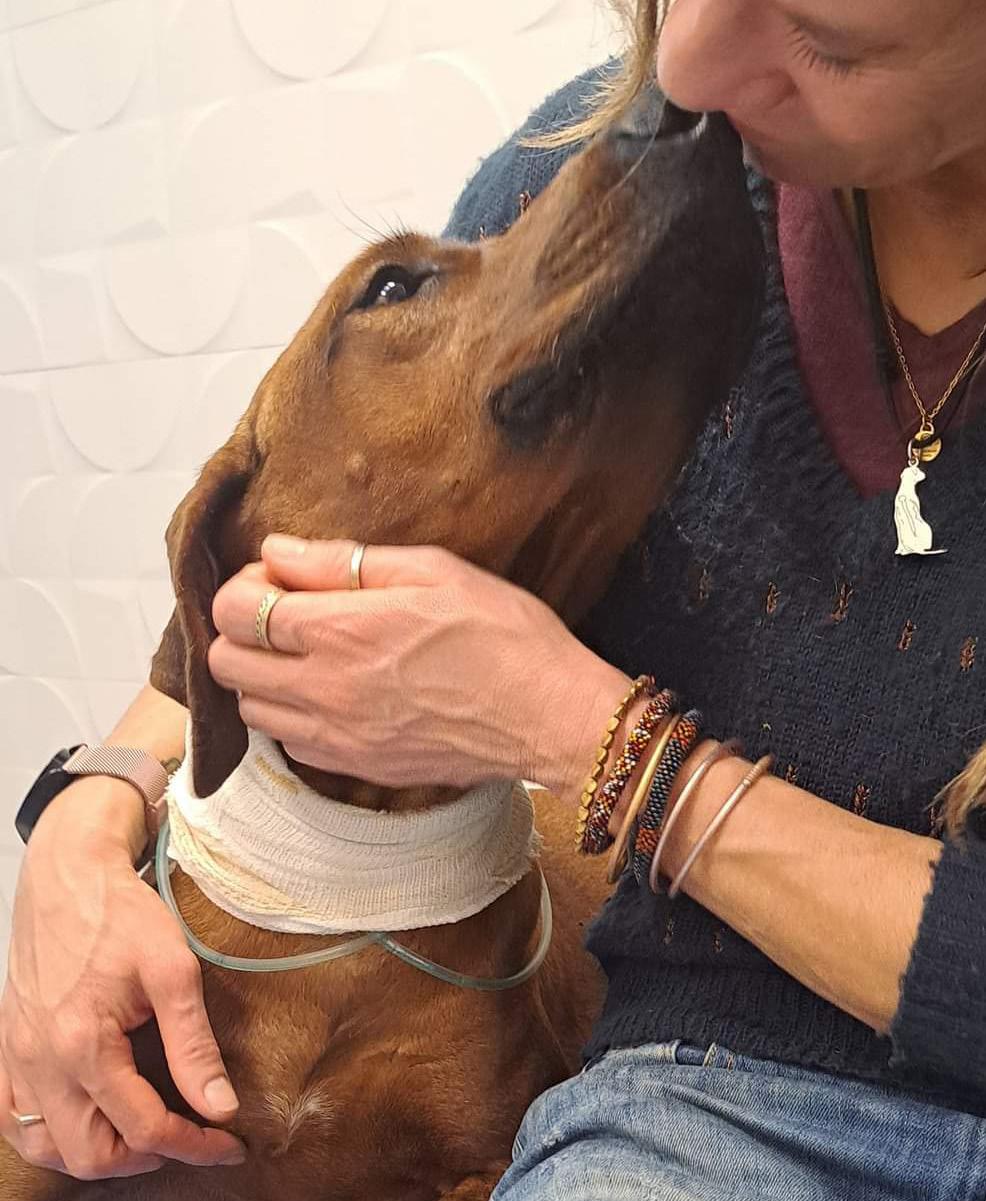
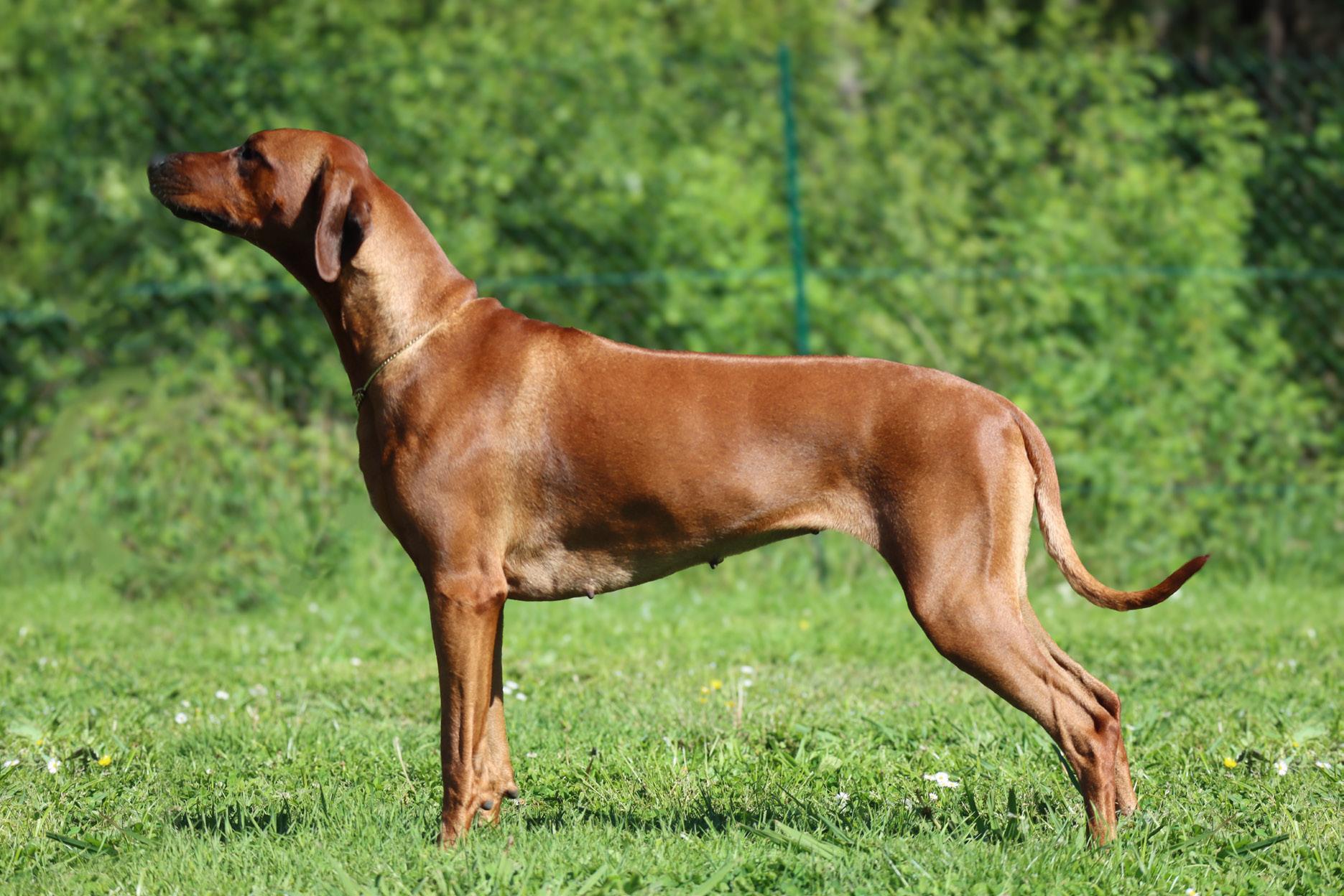
RHODESIAN RIDGEBACK EU MAGAZINE 25
Makeba “Maggy May Arte Cassari” in good condition few weeks later
 Written by Petra and Michael Bossard
Written by Petra and Michael Bossard
TCM
Traditional Chinese Medicine
For the last 20 years Petra and Michael Bossard (SHURUBU Rhodesian Ridgebacks) have been running a Praxis for Traditional Chinese Medicine TCM in the little village of Rothenburg outside central Switzerlands main city Lucerne. Their clients not only include humans with all sorts of health problems, but also animals such as horses, dogs, cats – and sometimes even bunnies, who get their treatment following the ancient principles of Yin and Yang.
The system of TCM is documented for over 3500 years and its aim is to create energetic balance within the 14 meridians and the 5 elements Wood, Fire, Earth, Metal and Water. What is commonly known as state of being healthy is happening when the energy Qi is flowing harmoniously through all meridians. If Qi is blocked pain results or all kinds of symptoms both physical or emotional can occur. By working on the flow of Qi using needles in crucial points (Acupuncture) or medicating Chinese herbs, balance can be re-established and health of the client will result.
Very often people ask about the efficiency of the treatments and if it is possible to tell, for how many appointments they will have to show up, before a clear improvement of their problems can be seen or felt. To give a proper answer is always difficult. It‘s never possible to make any kind of health promises, but on the other hand, experience says, that different issues can usually be cured at different speeds.
Both Petra and Michael of course always strive for a full recovery from health dysbalance, but no matter how much they know about their business and no matter how professional the therapy is planned, a full success cannot be granted in every case. The story in this article though is a fabulous one and is therefore liked to be told a lot.
RHODESIAN RIDGEBACK EU MAGAZINE 27
Some two years ago on a late evening the owner of a «Schweizer Laufhund/Chien Courrant Suisse (FCI nr. 59)» rang Michael. Let’s call her Penny. He started to tell the story of his one year old bitch: ever since, his girl would have absolutely no control about her urine. Not like a puppy, who would wee in excitement or just peeing inside as kind of little «accident». No, Penny had no control whatsoever and she would just empty her whole bladder walking from A to B without even noticing it.
The owner said, they have tried everything possible within the range of the proven western medicine, such using all kinds of supplements and medication. In despair they even went for a lifting bladder surgery on the young dog.
But nothing had yet helped the poor girl and the owner felt the consistent crisis to overcome their personal capacities of dealing with a permanently leaking dog, wet sofas and carpets as well as the car and the inability to meet friends or travel to hotels and restaurants with the girl. So he did even mention to take into consideration to euthanize the bitch because keeping her in the family with her problem would be too much for everyone involved. So now he had the hope, that as a last option Acupuncture would be the solution before taking the last consequence of putting Penny down.
Well, then… pressure on Michael to solve the problem and at last stance save the life of the poor leaking bitch. An appointment was made as soon as possible and the very friendly, completely happy but very skinny young dog arrived to present herself. Listening to the owners reports, the bitch’s story was analyzed and all her symptoms structured in the way Traditional Chinese Medicine works. It became obvious very quickly that she was suffering from an acute state of Kidney Qi- and Bladder Qi-deficiency and that her ability of uplifting Qi in general was massively lacking in function.
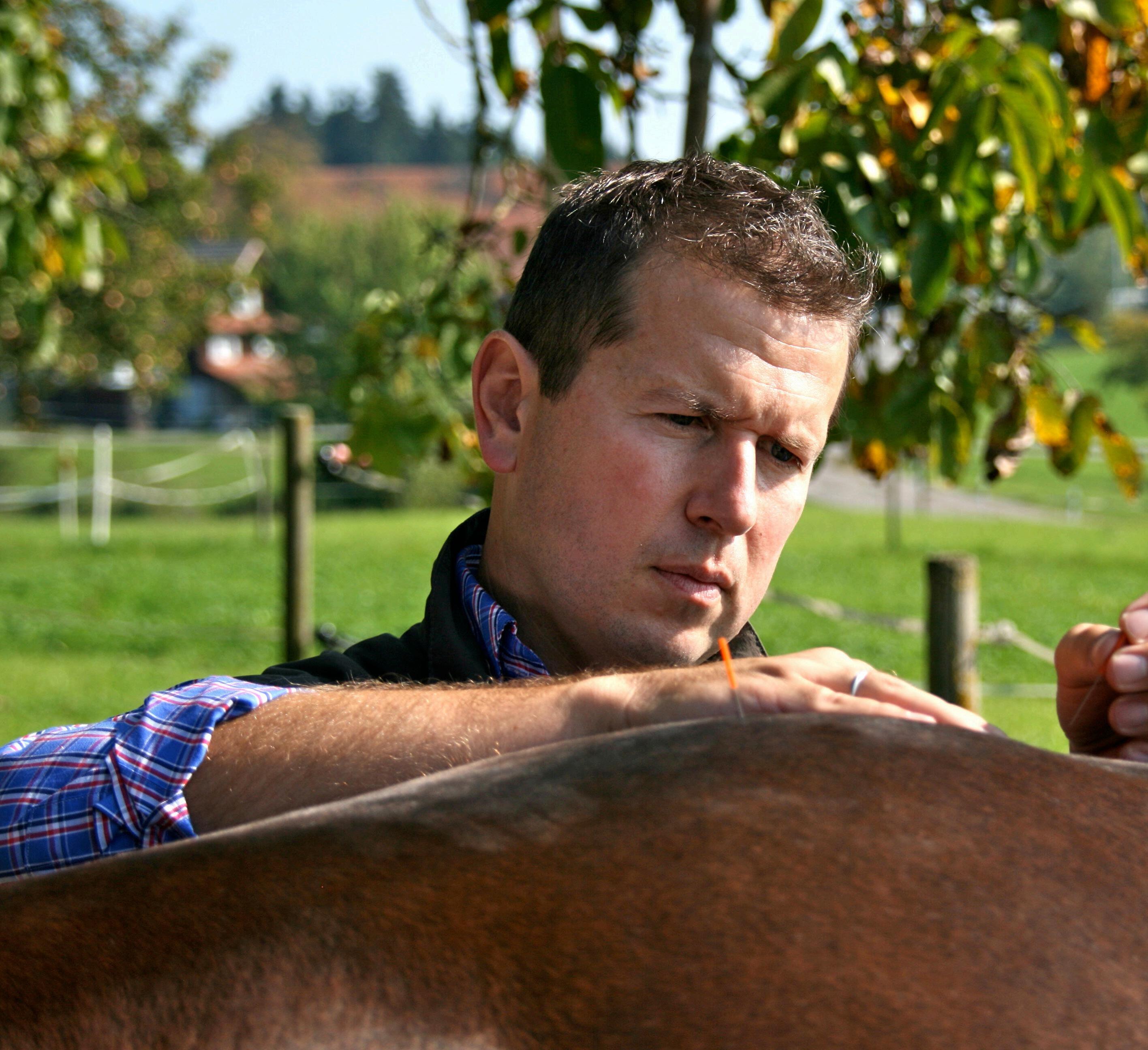
28 RHODESIAN RIDGEBACK EU MAGAZINE

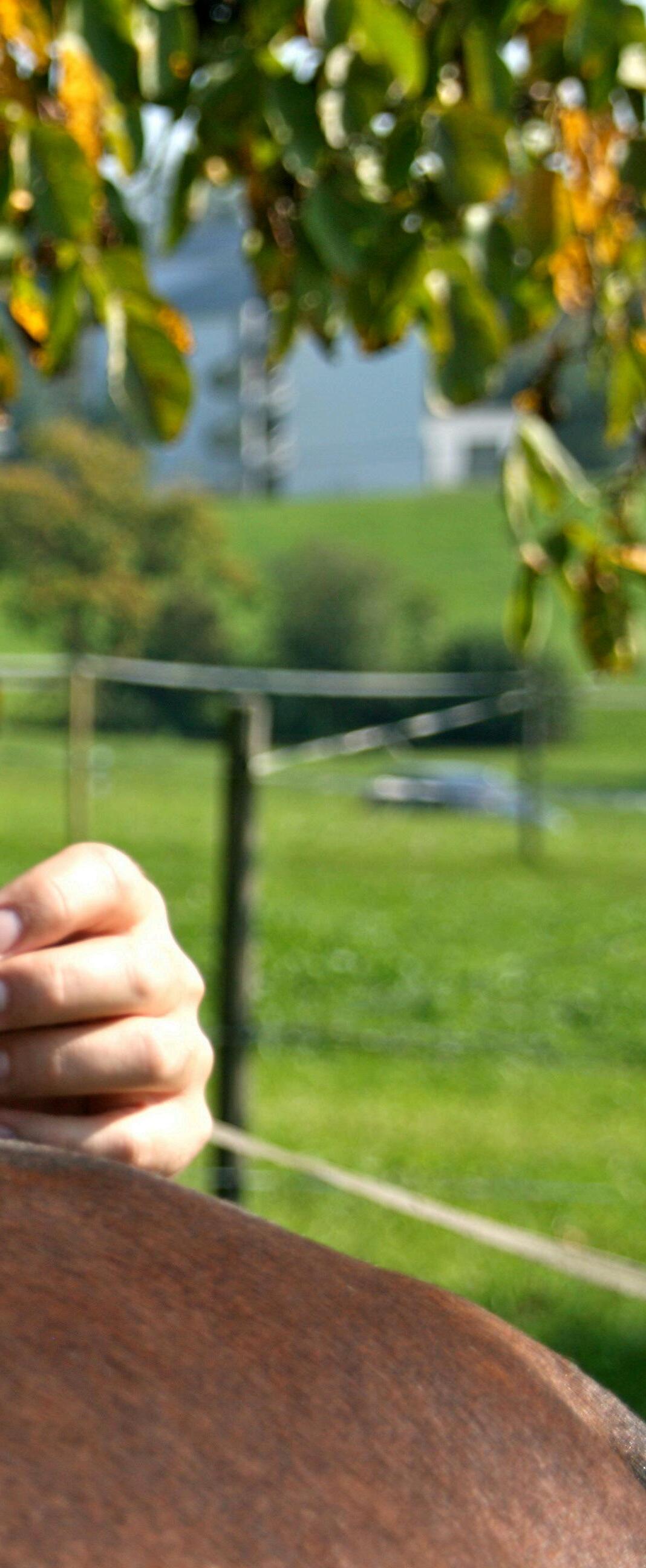
The therapy plan was though in no way complicated. The challenge was more to define the priority of Acupuncture points to be used. Penny’s general condition and physical state was due to her story very weak, and using a too large selection of needles would weaken her even more. So finding the minimum of points used was crucial if the therapy had to have a chance of being successful.
Getting the acupuncture treatment, the girl relaxed very quickly and owner and therapist felt, she was very comfortable and kind of enjoying the situation of being «energetically nourished» and put into order again. So after an hour the dog left and it was agreed to meet for a next session in a week’s time.
Five days later Penny and her owner returned and as usual Michael had asked about how the client was since the last treatment. The owner replied overwhelmed by what had happened, that ever since the first and so far only treatment, Penny did not once pee uncontrolled and that her leaking had stopped the very same evening of the first treatment.
So of course saving the girl’s life, bringing back full recovery and thus relaxing the owners family situation all in one single treatment is not usual. But it happens and when it happens we take the success gratefully. The very personal situation of Penny, was to 100 percent awaiting the exact input on her energetic system Michael was able to provide with the tools of Acupuncture in that moment.
Critics like to say about alternative treating methods such as Acupuncture, that it is the question of how much the client believes in the method or that it was depending on the minds power wanting the success to happen very badly. But well, Michael will happily confirm that Penny did neither know anything about the reason, why she met him nor did she understand the principles of Traditional Chinese Medicine. What she surely did was being absolutely
RHODESIAN RIDGEBACK EU MAGAZINE 29
and unconditionally open to what was happening to her and her brain would not have constantly asked about the if’s and why‘s of being treated that way.
A wonderful case to show what can happen in the most positive way, yet not giving guarantees to be able to solve every problem and not every problem instantly. But: showing what can happen when giving complementary medicine a fair chance to do the job it is supposed to do.

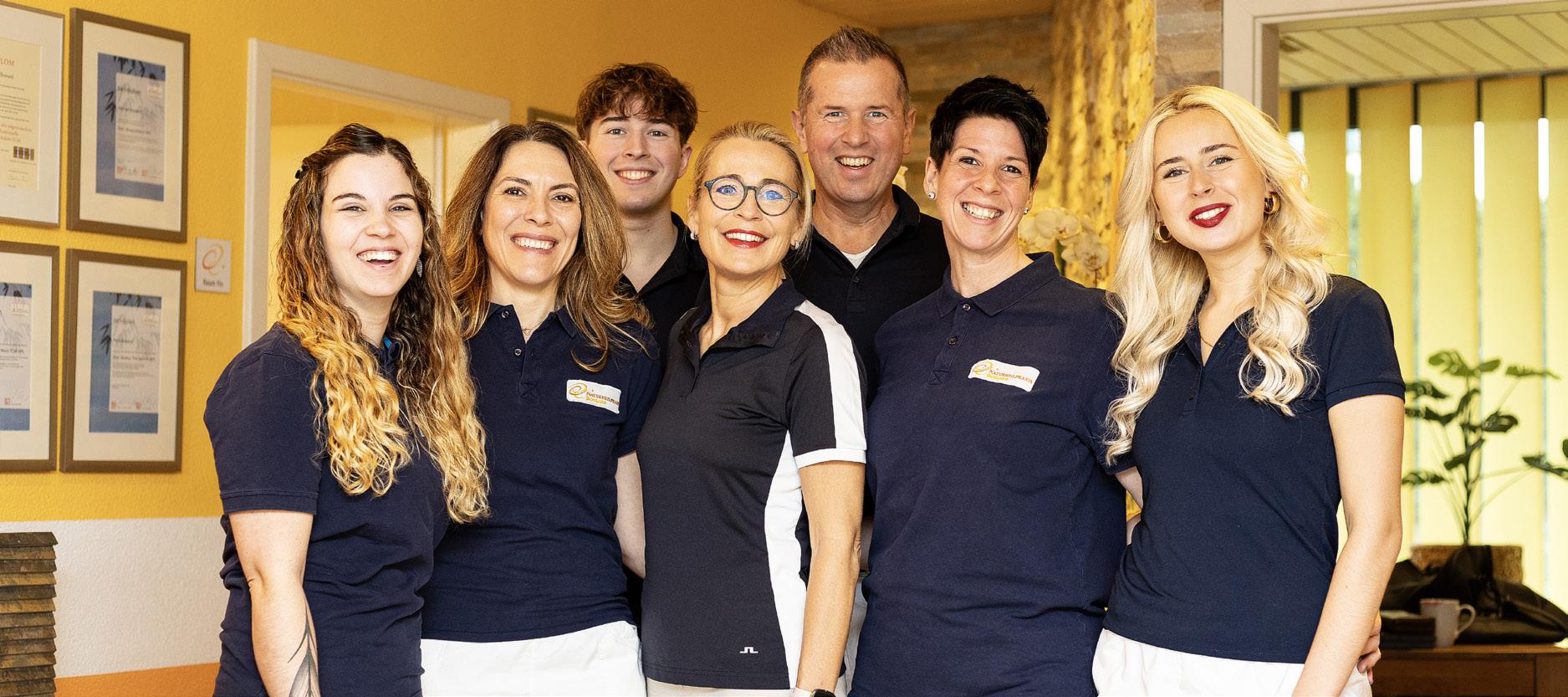
Naturheilpraxis Bossard
Founded in 2004, the therapists at Naturheilpraxis Bossard are treating human and animal clients. In their own facility with five large rooms Petra and Michael work with seven employees in the methods of Traditional Chinese Medicine TCM, Kinesiology and Psychology.
Their website can be found here: www.naturheilpraxis-bossard.ch
30 RHODESIAN RIDGEBACK EU MAGAZINE
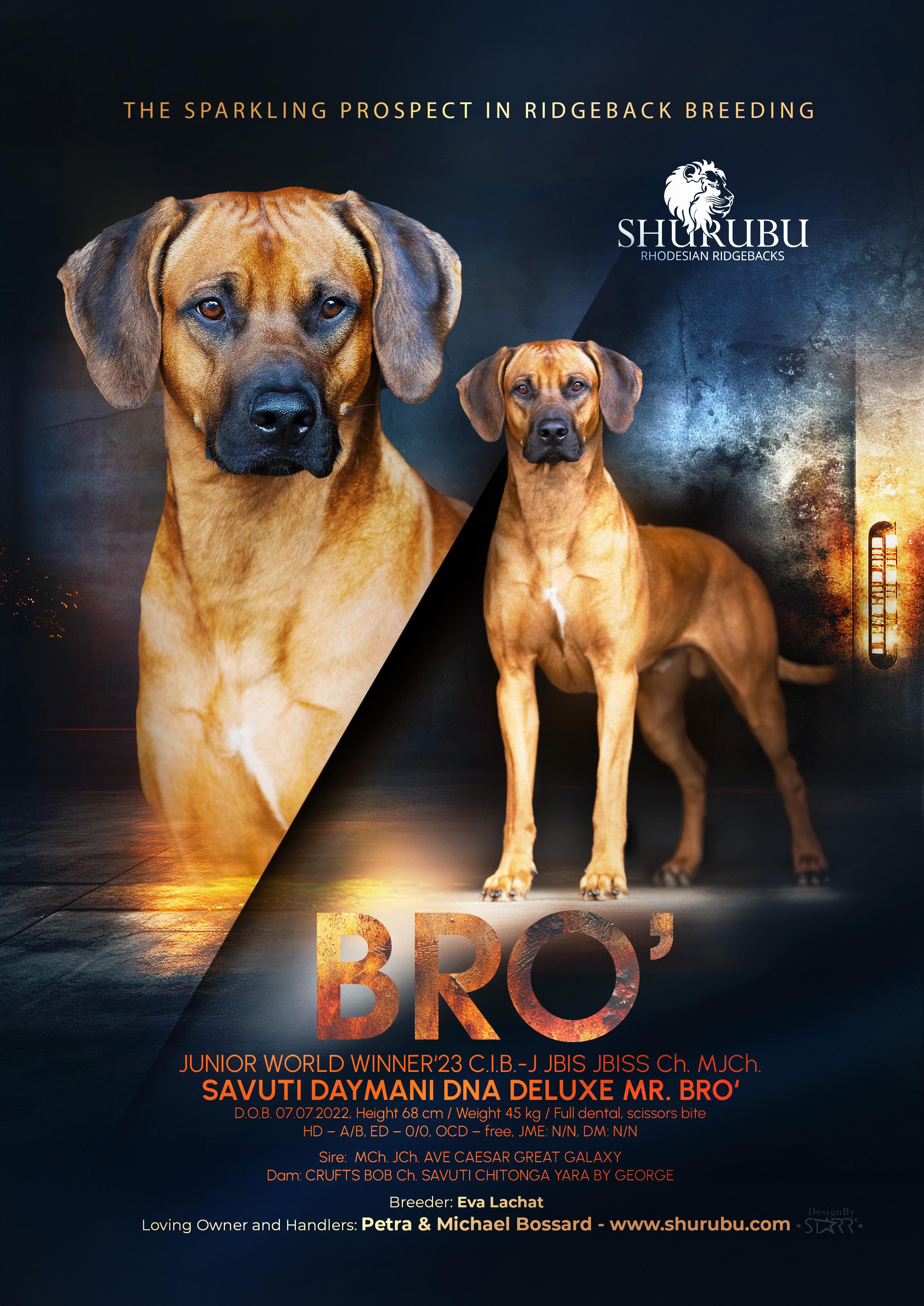

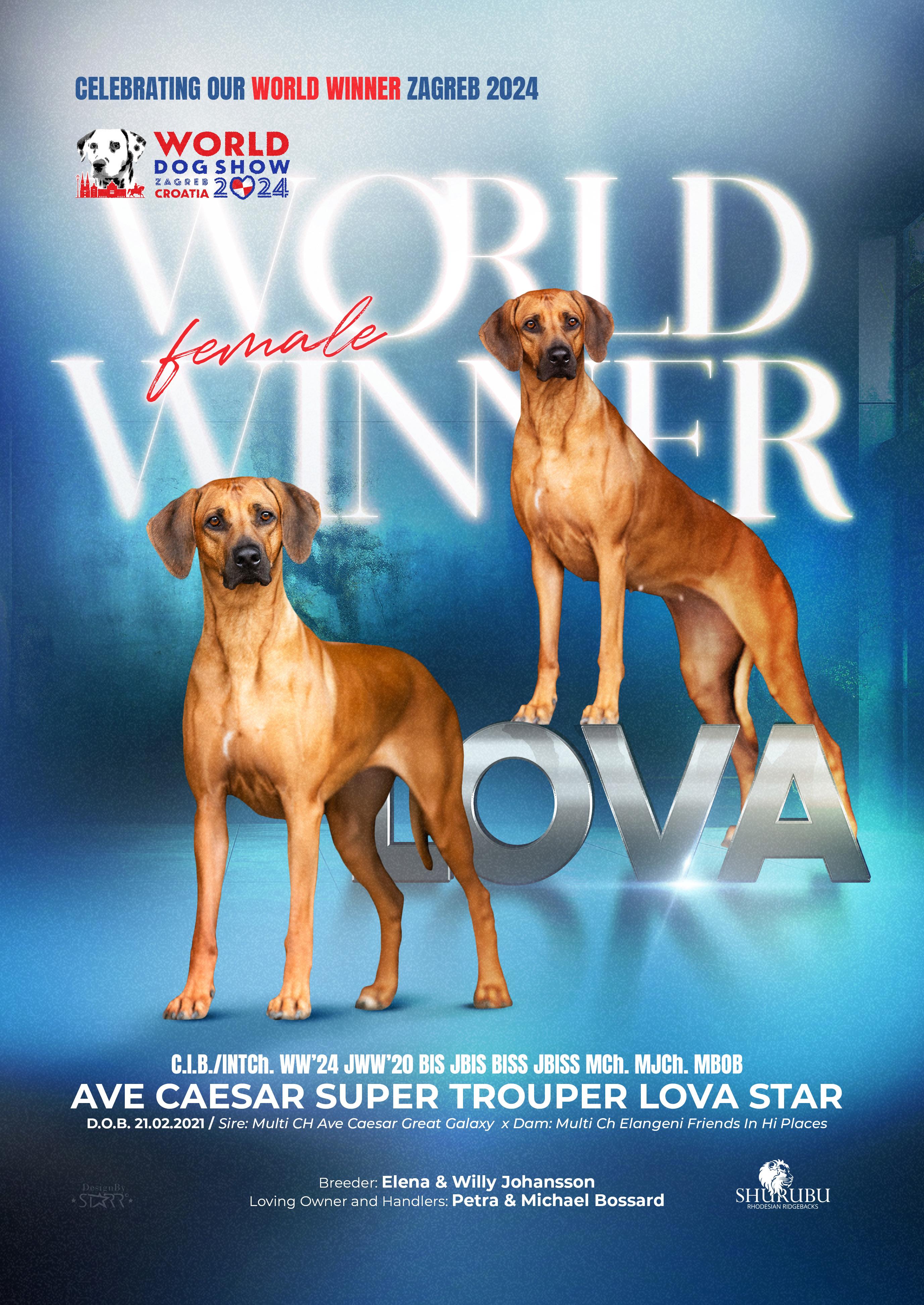
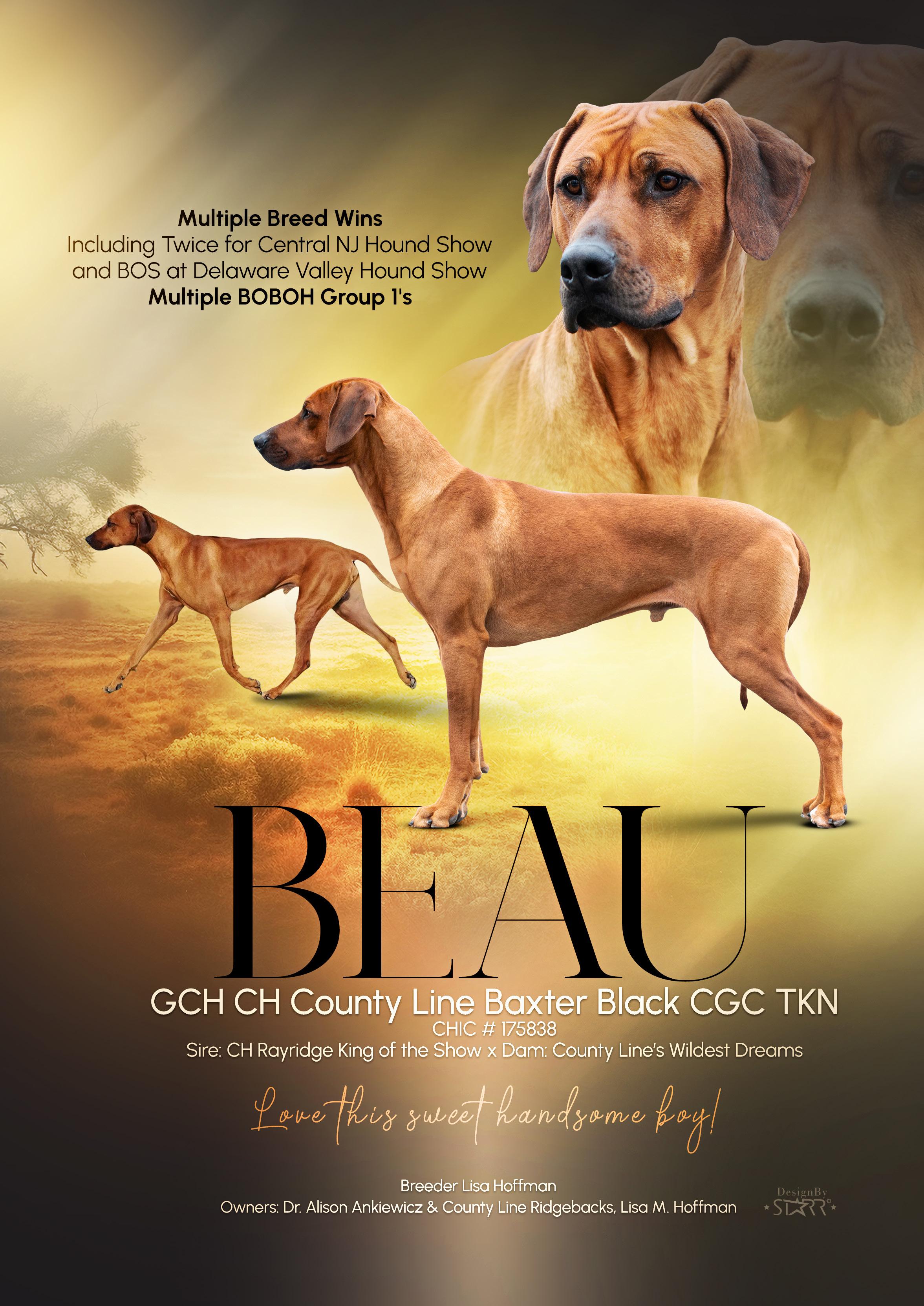
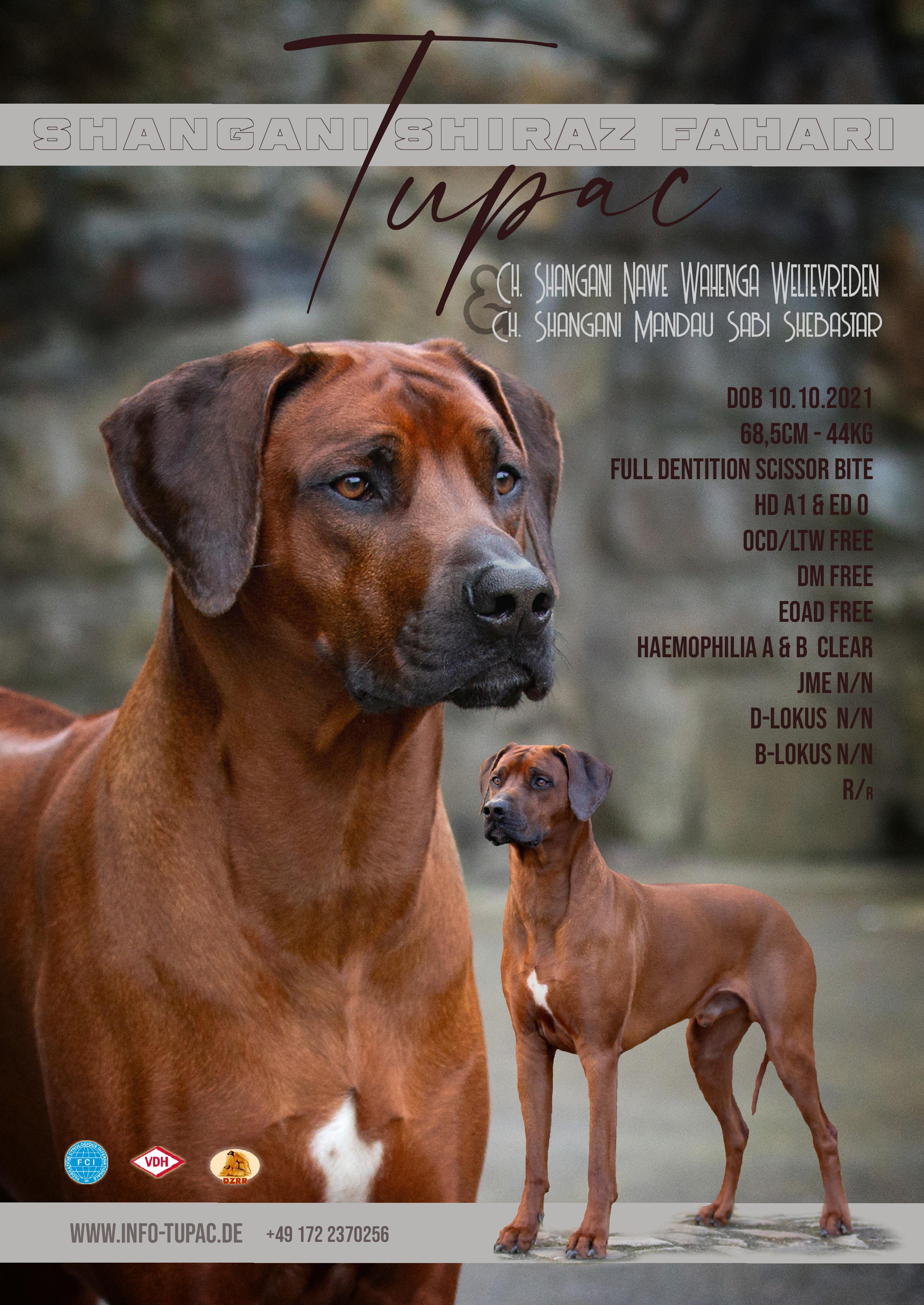

36 RHODESIAN RIDGEBACK EU MAGAZINE
GARY DENVER
AN INTERVIEW WITH A JUDGE
Greetings from Germany/UK
PLEASE INTRODUCE YOURSELF TO OUR READERS.
Hello, my name is Gary Denver. I breed Rhodesian Ridgebacks with my wife and children in Germany under the prefix Nyangoma. Since 2015 my wife has bred under the prefix Nyangoma, it wasn’t until 2017 when I moved to Germany that we have bred together under her prefix. I am originally from the UK where I had my own prefix (Vandengan) since 2011.
My passion for dogs goes back long before the days I even remember. As I child I often attended a Championship show in my hometown and also Crufts on family days out. We also had the privilege of being able to watch Crufts on TV every year that we would never miss, and I have fond memories of the family guessing their winners. Growing up I often had a lot of dogs around me, being on the farm around Collies, Hunting with Spaniels and Retrievers or just with friends and family’s dogs of multiple breeds. I was also quite fanatical about my interests and would read all the books I could and wanted to know the ins and outs of everything. If only I had the same interest in my school studies!
WHEN DID YOUR LOVE OF DOGS BEGIN? PLEASE TELL US ABOUT YOUR PAST OR PRESENT DOGS
In the late 1980’s growing up in Yorkshire my parents welcomed our first Rhodesian Ridgeback into our family home. I don’t know the exact reasoning why my parents chose a Rhodesian Ridgeback as the breed wasn’t so common in those days, but a Rhodesian Ridgeback it was and I was in love. Our boy Cooper was a lovely dog and a great introduction to the breed. Unfortunatley though this did not start my passion for showing/breeding/judging as I was still very young but it did let me know that I always needed a Ridgeback in my life. Cooper was quite simply my sidekick. It wasn’t until I was in my mid twenties when I finally had my own Ridgeback, as I was busy playing Rugby and travelling and I didn’t want a dog until I was settled. I say “dog”, but there was only ever going to be one breed.
The day came and after a little limited research on the interenet I found my breeder. John Baldwin (Mangwe Kennel) was advertising a litter and as he was only a 10 minute drive from me so I went to have a look. I came back with a deposit paid and excited to be picking up my first Rhodesian Ridgeback of my own. It all sounds easy but it was quite the opposite, I felt like I was being interviewed and had my whole life under scrutiny. But I knew his passion and care was something I respected and that sold it for me. Initially, I wanted just a pet until John asked me if I was interested in showing? With a little quick thinking and wanting the best I told him that of course I was interested. The time came for collection and I picked up the new lady of my life Mangwe Luna. At 14 weeks we started attending John’s ringcraft but at first we didn’t seem to hit it off. Luna in true Ridgeback fashion decided she knew she was the best and therefore didn’t need to go along with all this dog show palava just to satisfy me. She did show lightly and she had reasonable success, but was far happier living the good life out on the field or curled up in front of the fire. It wasn’t until I decided that I would like to have a litter from her that my involvement with the breed and dogs in general started to become more intense.
WHEN DID YOU START WITH YOUR JUDGING CAREER AND WHY DID YOU CHOSE TO BECOME A JUDGE? PLEASE TELL US ABOUT YOUR JUDGES CAREER AND HIGHLIGHTS.
In March 2012 the Midland & Northern Rhodesian Ridgeback club were hosting a judging and hands on seminar. Me being my fanatical self, I thought what a great way to see other Ridgebacks and learn more about the breed through the eyes of another Breeder/Judge. The speaker on the day was Mrs Ann Woodrow (Mirengo). Not long after I recieved my first invitation to judge at UK open show. I judged the Afghan hounds and Rhodesian Ridgebacks on that day at the North West Canine Society and loved every minute of it. That is what really got my appetite started and things took off from there, I quite regularaly attentted seminars up and down the country in the following years and more open show invitations followed. I have now
RHODESIAN RIDGEBACK EU MAGAZINE 37
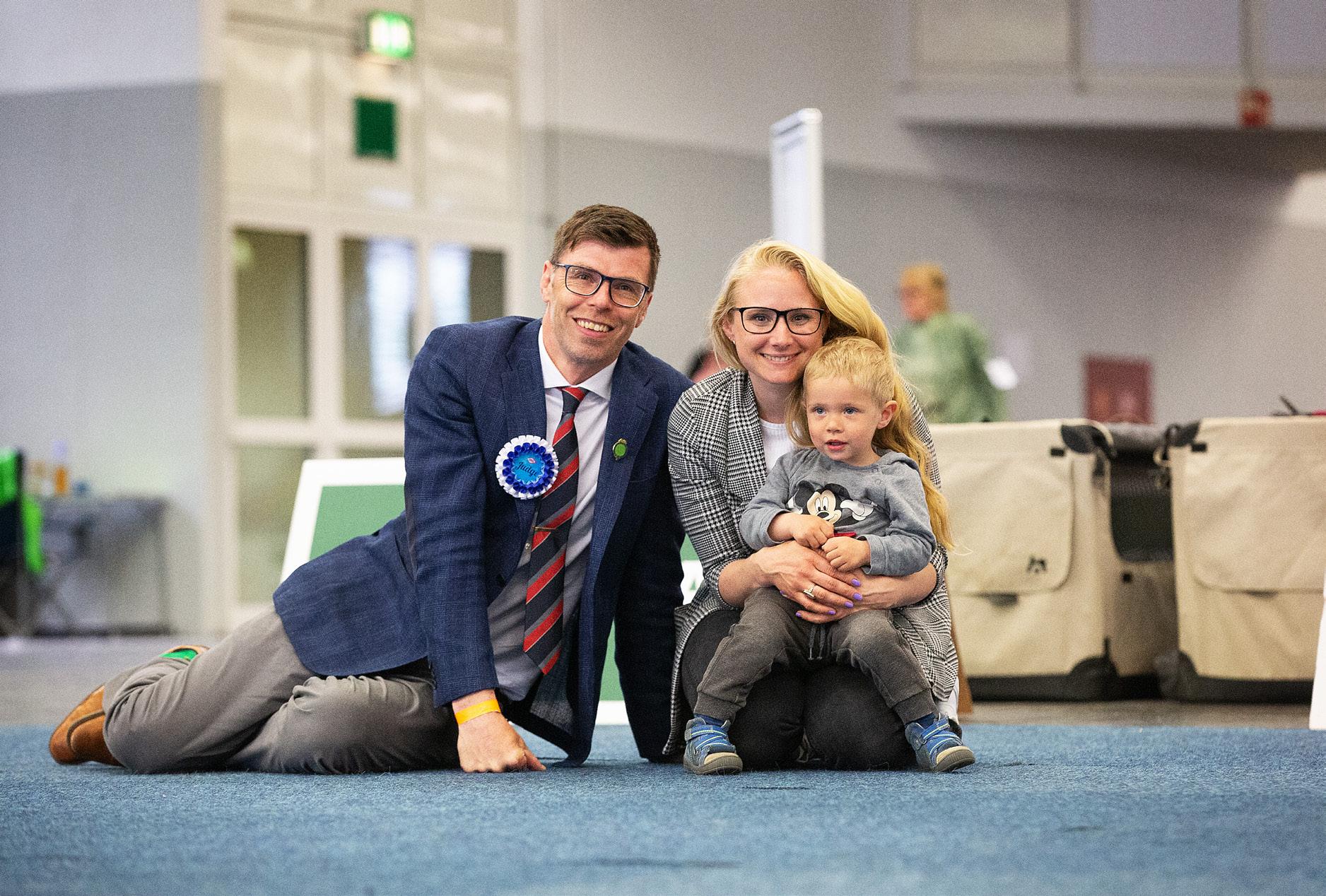
judged most UK hound group breeds and have judged 2 Hound groups at Open show level. Within a few years I was starting to fulfill the requirements to become a UK KC A list judge (eligible to award CC’s). In October 2022 I was given my first Championship show appointment at The Scottish Kennel Club show in Edinburgh. I received a wonderful entry with lots of quality in each of my classes. Nearly all of my top winners being awarded group placings in their respective groups. Since my first UK appointment and my inclusion on the UK KC judging A list things have gone from strenght to strength. I am now recognised as a VDH (German) Rhodesian Ridgeback judge and had the wonderful opportunity to judge the males and BOB at the Dortmund Frühjahsieger show in May 2023 as a late replacement. Since then, I had the privilege to judge a fantastic entry at the Rhodesian Ridgeback Club Schweiz and more recently on the other side of the globe at the Rhodesian Ridgeback Club of SA Inc (Australia). I also have some very exciting appointments in my calendar and am thoroughly looking forward to judging some of your beautiful hounds.
DID YOU EVER HAVE A MENTOR? ARE YOU MENTORING NEWCOMERS?
First of all I would like to take the time to say a huge thank you to anyone and everyone who has helped me throughout the years, no matter how big or small.
I have been very fortunate in my time in dogs to have had some wonderful people willing to take the time to mentor me and point me in the right direc-
tion. From the very beginning John Baldwin was a great help to me, but due to the fact my first Ridgeback had other ideas of how to spend our free time, we couldn’t take much from him until I decided to breed with her and he was more than willing to help until a short illness took him away from us far too soon. I will always have fond memories of our time with John and his knowledge. After the loss of John I had great help from numerous people from within the breed on the UK scene. I am a great believer that the UK has a very strong network of very clever breeders with years of invaluable knowledge, many more than happy to help others progess and see our breed go forward. In 2013 I brought in another bitch from different breeding into my home. It is here where I formed great friendships with a wonderful family with a great wealth of knowledge of our breed formed over years of breeding/ exhibiting/judging. I feel what I learn and continue to learn is just knowledge that is on loan and to be passed onto the next generation, just as is our breeding and our dogs.
HOW DO YOU DEFINE OUR BREED?
I personally find our breed generally in quite a healthy position. Although I take on the words of Tom Hawley and strongly believe we must take care of the Ridgeback head. There is nothing nicer to see than a correct, elegant, clean head full of intelligent expression with a nice dark eye. And all that mounted on a clean, athletic good length of neck. I think the forechest varies quite considerably in our breed, we see some dogs with excessive sternum and others with no sternum at all. The Ridgeback is and should always be about moderation.
38 RHODESIAN RIDGEBACK EU MAGAZINE

The forequarters are also improving in the last few years as I have seen, but we still see the short upper arm or high set shoulder blade. Size and substance also varies considerably within some countries and also from country to country. One thing I would like to see more of in our breed is length of body and by saying that, I still want moderation. For an endurance dog to move efficiently the correct balance of angulations and length of body are critical for all components to work together in harmony. Length of body also requires the ribbing to come back too as essential protection to the major organs, but also to build a stronger structural core. A dog with the correct structure will look as good in veteran as it did in its heyday. Hindquarters are also generally quite good in our breed . The breed needs that good drive from the rear coming from strong flat and wide muscle from the first and second thigh. Often we see the powerhouses with round muscle which for an endurance dog is just extra baggage. And on to movement, poetry in motion. I love to stand in the middle of the ring and watch your dogs going round the ring effortlessly. Such an important part of our breed as without the effortless movement Cornelius Van Rooyen would never have dreamt of taking his Ridgebacks out on his hunting parties covering miles over days and weeks. In those days only the fittest survived.
IS THERE SOMETHING YOU WOULD LIKE TO CHANGE IN THE BREED?
I personally wouldn’t change a thing in our breed in general as it is the breed I fell in love with as a child and I don’t see how you can improve on perfection.
EVERY BREED HAS SOME COMMON PROBLEMS. WHICH IS THE MOST COMMON PROBLEM IN RR?
I am generally an upbeat, positive person but do worry about the popularity of our breed in the public domain. Popularity gives more people the idea to try and breed a litter, without the knowledge and support of knowledgeable people and therefore breeding just to produce puppies. I am fully aware that to become a breeder we all have to start somewhere. Everyone has to have a 1st litter and mistakes will happen along the way. But when someone is really serious about becoming a breeder, I believe everything should be done to limit the chances of mistakes being made.
WHAT IS THE MOST IMPORTANT POINT OF WHICH YOU WOULD LIKE A JUDGE OF THE BREED TO BE AWARE?
The silhouette of the Rhodesian Ridgeback. When your dogs first enter the ring and are lined up for you, paint them all in black and find your ideal Rhodesian Ridgeback. I think judges of our breed should take good note of the breed standard in the section ‘’General Apperance’’. ‘’Handsome, strong, muscular and active dog, symmetrical in outline, capable of great endurance with fair amount of speed. Mature dog is handsome and upstanding.’’ To me that couldn’t be a better description. It emphasizes that a Rhodesian Ridgeback should be an elegant, noble and upstanding dog of clean lines that help it effortlessly cover vast amounts of
RHODESIAN RIDGEBACK EU MAGAZINE 39
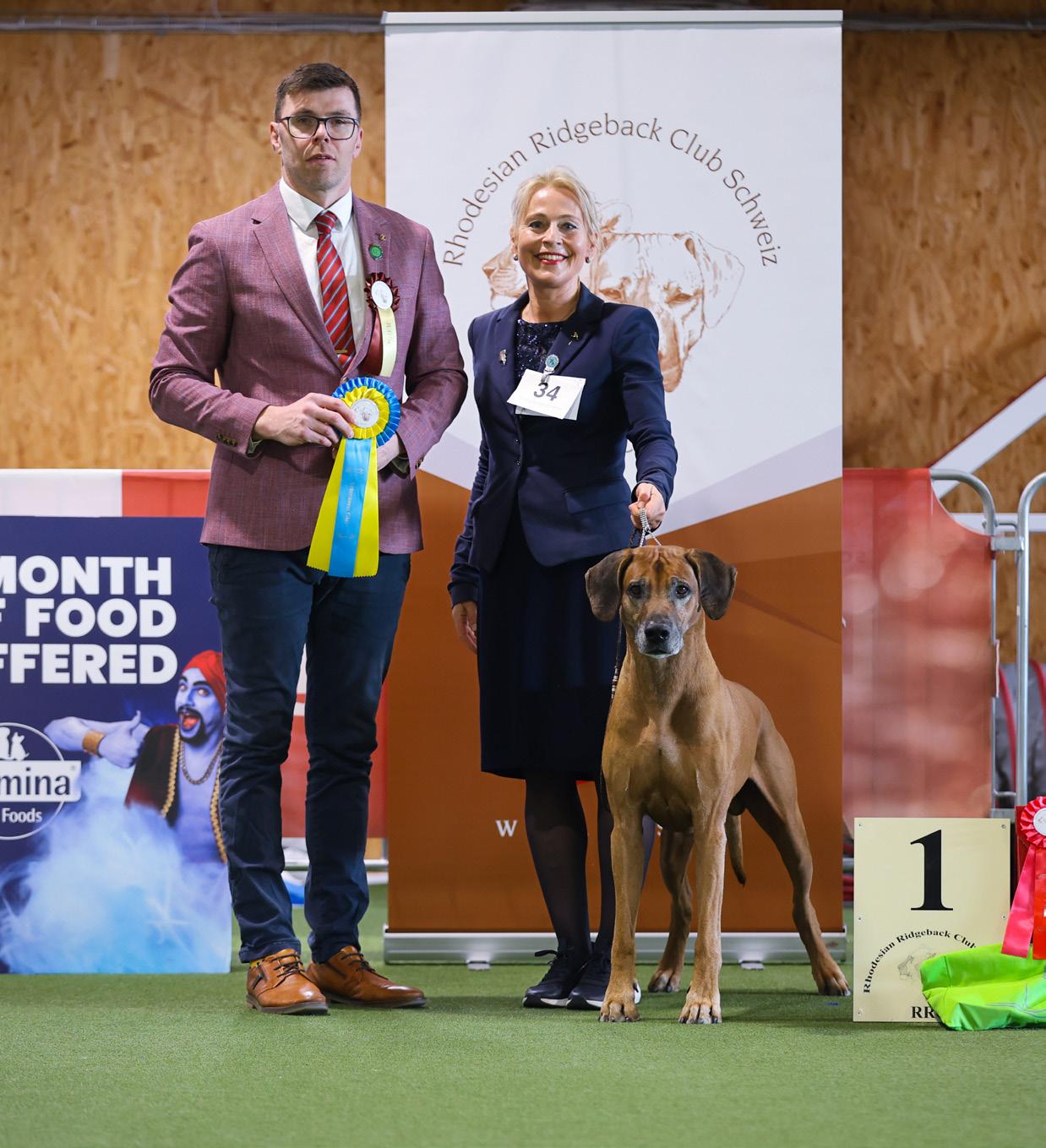
ground with ease and at times has the power to also move at speed and the agility to be able to bay a lion. With the word handsome used twice, I feel quite strongly that the handsomeness of our breed should be prevalent in both body and head.
WHAT QUALITIES DO YOU ADMIRE MOST IN A JUDGE?
Starting out in the dog world in the UK I feel I’ve had the privilege to show under some of the great judges of our time both in our breed and also allrounders. What I feel was a valuable lesson to watch and appreciate was how they conducted themselves in the ring. I feel every judging appointment is a great responsibility that has been bestowed on you and I believe that it should be carried out with great dignity, honour and respect. Therefore a judge should be well presented and appropriately dressed for the occasion. The judge should
command the ring and have things running in a structured and orderly fashion. I also find it very important that the judge shows respect for the exhibitors that have taken the time and expense for their opinion and last but most importantly the dogs that should be handled with a soft but direct approach and each exhibit given the same amount of time and chance as the other. As an exhibitor, we travel thousands of miles and spend endless amounts of money for our 5 minutes of fame in the ring.
WHAT WOULD BE THE MOST IMPORTANT SINGLE PIECE OF ADVICE YOU
WOULD
GIVE TO ALL YOUNG SERIOUS BREEDERS?
Open yourself to every piece of advice or knowledge you can take on board, you can always filter out the good from the bad. Life is a lesson and the dog world is no different. People have been breeding dogs for centuries so listen to those before us, they have a wealth of knowledge that we would be very lucky to know just a small fraction of. And most of all enjoy our dogs, respect the people around us and don’t forget we are all in this for the same reasons Rhodesian Ridgebacks.
Thanks for reading.
Photos by Michael Bossard
Name Gary Denver
Country Germany/UK
Affix Nyangoma/Vandengan
Email garethdenver@live.co.uk
www www.nyangoma.de
40 RHODESIAN RIDGEBACK EU MAGAZINE INFO
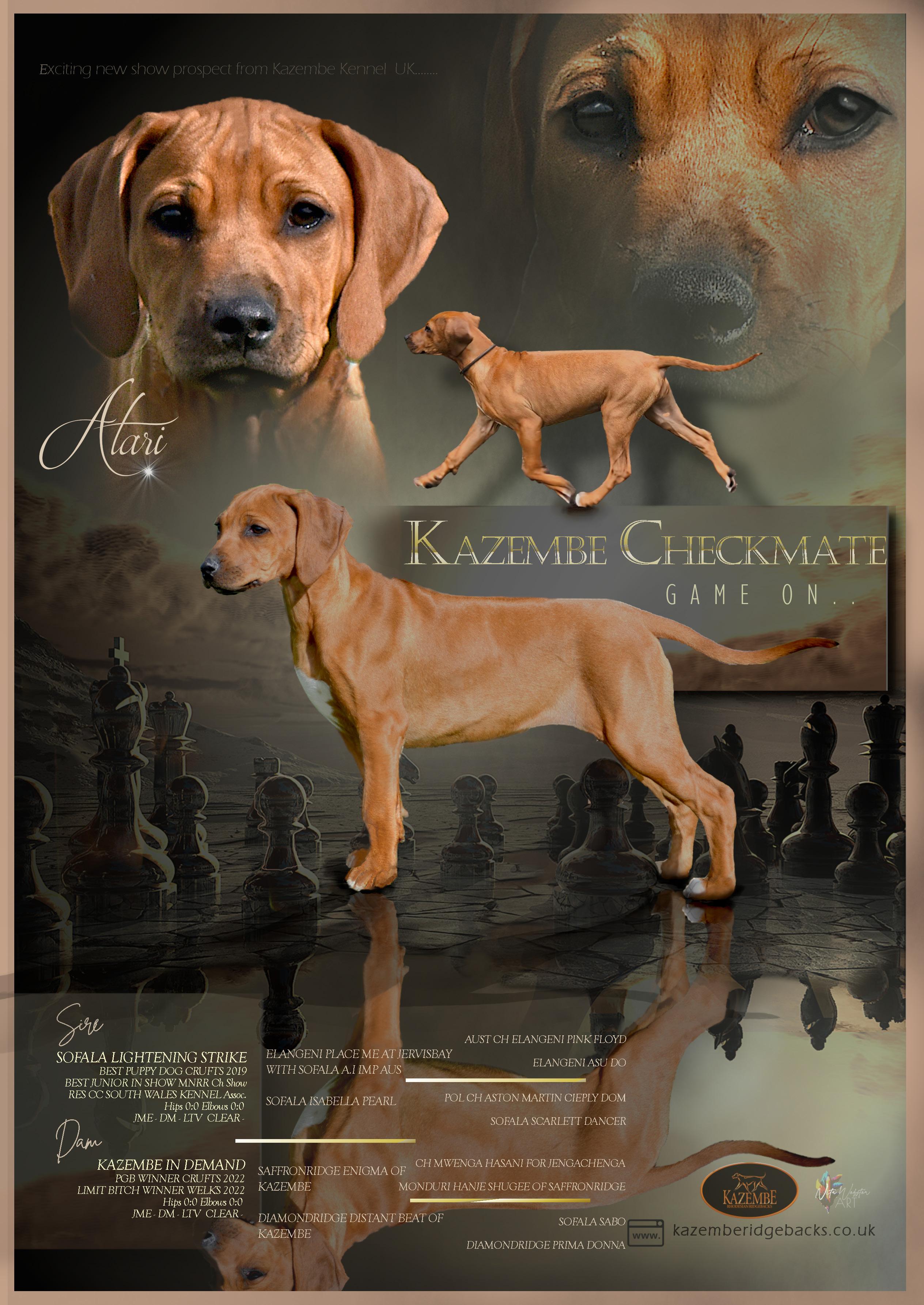
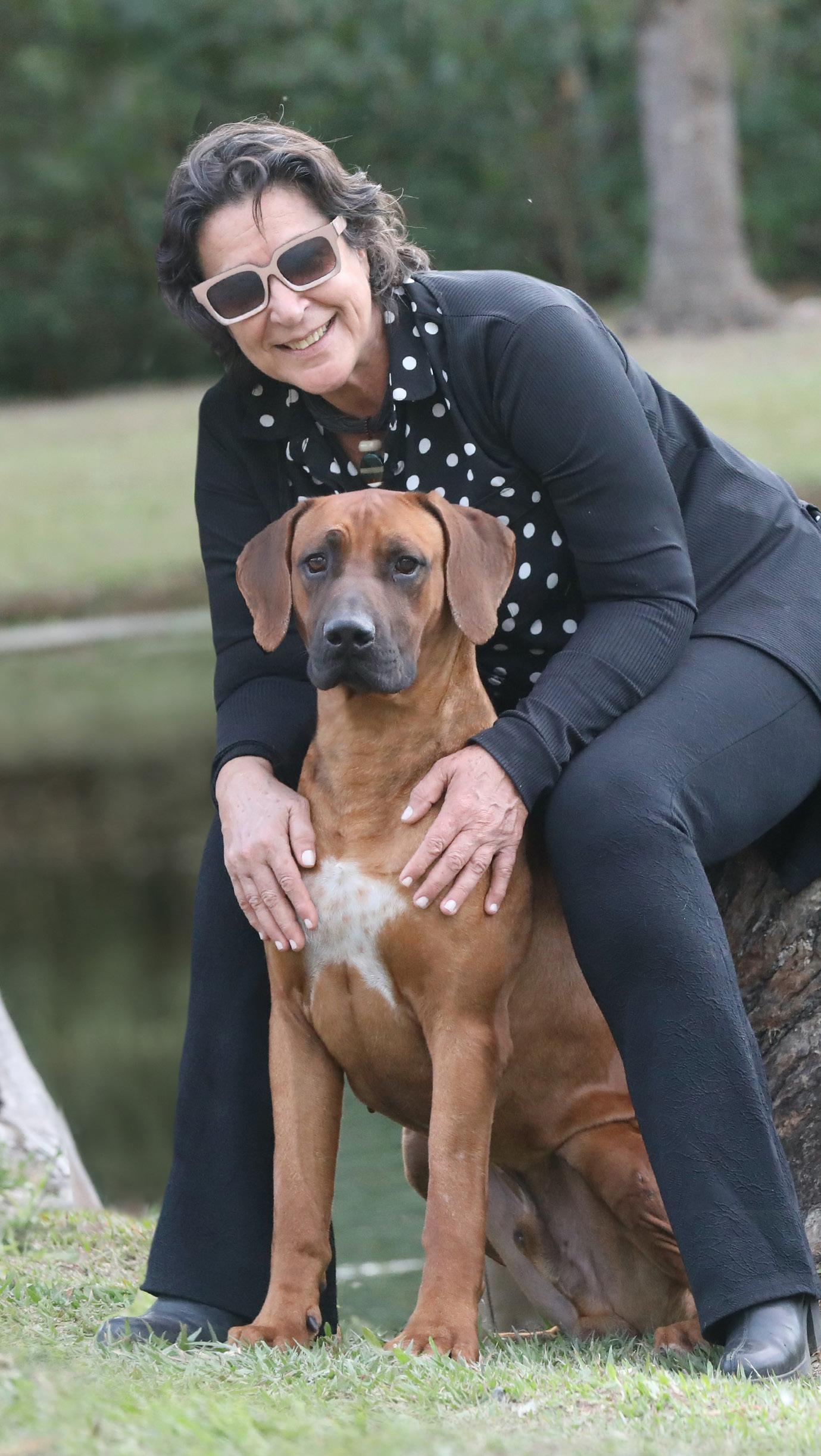
42 RHODESIAN RIDGEBACK EU MAGAZINE
IN-COELUM PERDIGÃO
AN INTERVIEW WITH A JUDGE
Greetings from Brazil
PLEASE INTRODUCE YOURSELF TO OUR READERS.
I am a Biologist and Economist, with a postgraduate degree in Capital Markets. I have a production company that prepares animals for cinema, theater and television based on Animal Behavior. I am also an all breed judge for the FCI. I have been breeding Ridgebacks since 1998. I was hired, at the time, to provide breeding consultancy to the Director of an important newspaper and TV network, Mr José Roberto Marinho, who had some dogs of the breed. When in 2008 he moved out of the country and decided to stop breeding, I ended up keeping part of his squad and decided to continue. I had already trained more than 5 generations of work. My first Rhodesian was Lion, Ch Imbali de Cardeiros, a gift from him, who won the 1998 Ranking as the Best RR in Brazil.
The breed that I started attending shows was the Weimaraner. We had the best in the country between the 80s and 90s. I love dogs, of any breed, in fact all of them, even non-breed ones. I have already rescued some abandoned dogs.
WHEN DID YOUR LOVE OF DOGS BEGIN? PLEASE TELL US ABOUT YOUR PAST AND PRESENT DOGS.
I’ve always loved animals, I was raised in a small town and we had goats, cows, horses. When I was very little, my mother told me that she once found me next to a cow that had just given birth and I was caressing the calf and drinking milk from the cow’s udder. She was terrified, but the cow, even in that condition, didn’t hurt me. That’s how animals are with me. I treat them as equals.
I had a great Weimaraner, Diamond, who won the Breed Ranking in my country and I bred others, winners of Best in Show.
I currently breed, in addition to the Rhodesians, the Podengo Portugues breed. I bred World Ch and Best of Breed Blue Chips PP Rosalinda, Me-
dium Hard Hair (Brazil 2022) and Blue Chips PP Dom Vasco, Medium Smooth Hair (Germany 2017), owned by EiJa Tami in Finland.
In the Rhodesian breed I had several highlights, Ranking winners in Brazil from 2013 to 2022. In 2023 we dedicated ourselves to international circuits and Joquinha, our World Ch. Blue Chips Brazil RR Joca Neto, won in Argentina as Best in the Country. Zukki, winner of the breed at the 2022 World Championship at just 11 months old, he has been competing in various parts of the world. Even so, in just 6 shows, she became the Best Female of the Breed, Brazilian Ranking in 2023. BLUE CHIPS RR GAMBA “Joca” won over 179 Ridgebacks in World Dog Show 2015, Italy.
What makes me happiest is knowing that my dogs are long-lived, healthy, free from genetic diseases and reach 15/16 years of age. Our dogs have a very balanced temperament and love being around children and respect the elderly. I choose good homes for them to live with their families. It’s what they need.
HOW DID YOU GET INTRODUCED TO THIS BREED?
I discovered the breed at shows, when I attended it with my Weimaraners. Then they disappeared from the events, I never saw them again. I had a boyfriend, Fabiano, in 1997 who had 3 RRs and one of his females had puppies. It was then that I approached the breed again. As I advise several clients on acquiring purebred dogs, I offered to help him find families for them. One of them stayed with a great friend José Eduardo and partner also in Podengos Portugueses, Boe Karroo. He was not a breeder and we registered his litter with Blue Chips Brazil, mating with a dog that I had imported for Jose Roberto, Canil Cardeiros, from the USA. As I said above, he was responsible for getting me more technically involved with the breed.
RHODESIAN RIDGEBACK EU MAGAZINE 43
WHEN DID YOU START WITH JUDGE CAREER AND WHY DID YOU CHOOSE TO BECOME A JUDGE?
PLEASE TELL US ABOUT YOUR JUDGES CARRIER AND YOUR HIGHLIGHTS.
I decided to become a judge so I could understand a little more about dog anatomy, conformation, movement to help me select puppies and dogs for competition. Initially I only made the Group that included the Weimaraner. One of the members of the committee that evaluated me in the tests told me that I should go ahead and become a judge of all breeds because my summary of the evaluation of the dogs and a small simulation of a show ring, I actually awarded the most qualified. He said I had a so- called “eye” and that it was one of the best he had read, and that I was very technical. So I continued.
I have judged in several regions of Brazil and abroad, but my greatest joy was judging the National Specialized Breed in Australia. There were 600 dogs and to this day, a record number of entries. It was a great honor, as my trial at the French National next August will certainly be unforgettable. For a breeder, it is a source of great pride to be able to judge the breed you love so much.
DID YOU
EVER HAVE A MENTOR? ARE YOU MENTORING NEW COMERS?
Yes, I had a great mentor in Cinophilia: Eugenio Lucena. He was the president of the Confederação Brasileira de Cinofilia CBKC when a start in the hobby. He was a referee who understood a lot about all breeds. He was the one who guided me on important details when evaluating a dog.
In the Rhodesian breed, I have been training new breeders over the years, since 1998. There have been more than 12 kennels in Brazil, Argentina, Uruguay, Italy... created under my guidance, forming the initial squad for breeding the RR. Everyone who has my dogs receives my attention through a WhatsApp group I created. We exchange ideas, from the best food, health problems, to the publication of our beloved Rhodesians on sofas, in beds, with their families.
Furthermore, my company has a consultancy segment, where I advise on the ideal breeds for families, as well as selecting the dogs and cats to go to these homes. I’m really connected to animals and I do it with extreme passion.
HOW DO YOU DEFINE THE TYPE?
What I pursued most in breeding was health. For years I mated so that they would have “hybrid vigor” and be able to spend more time among us humans. It had South African and American bloodlines. After I formed this base, I looked for
SOME OF MEMORIES
“Pictures speak louder than a thousand words.”
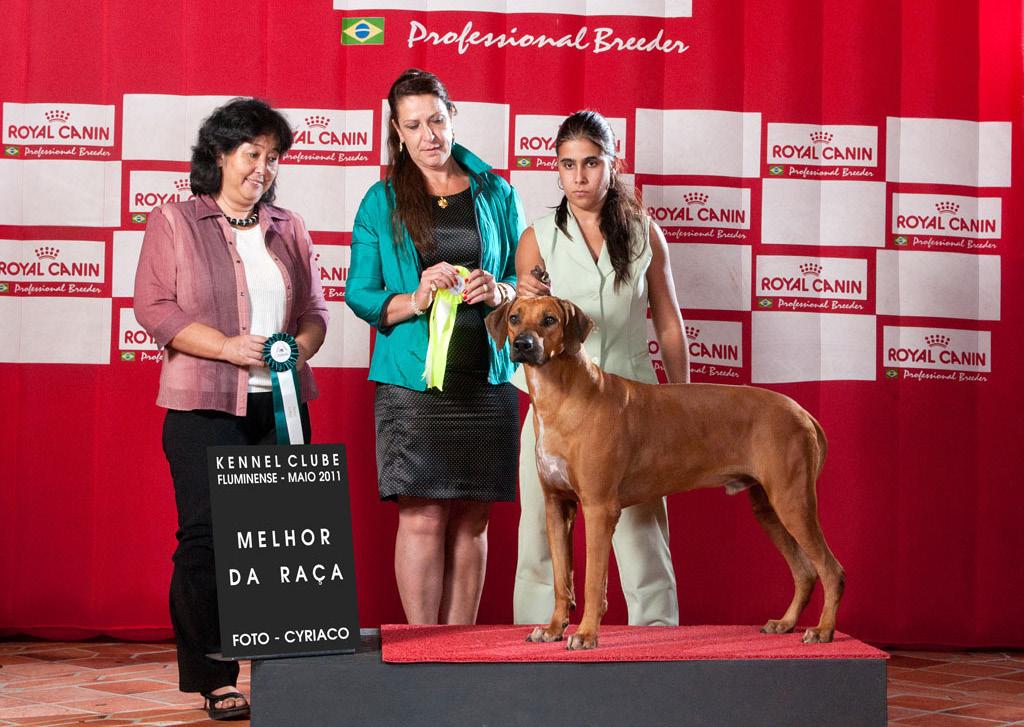
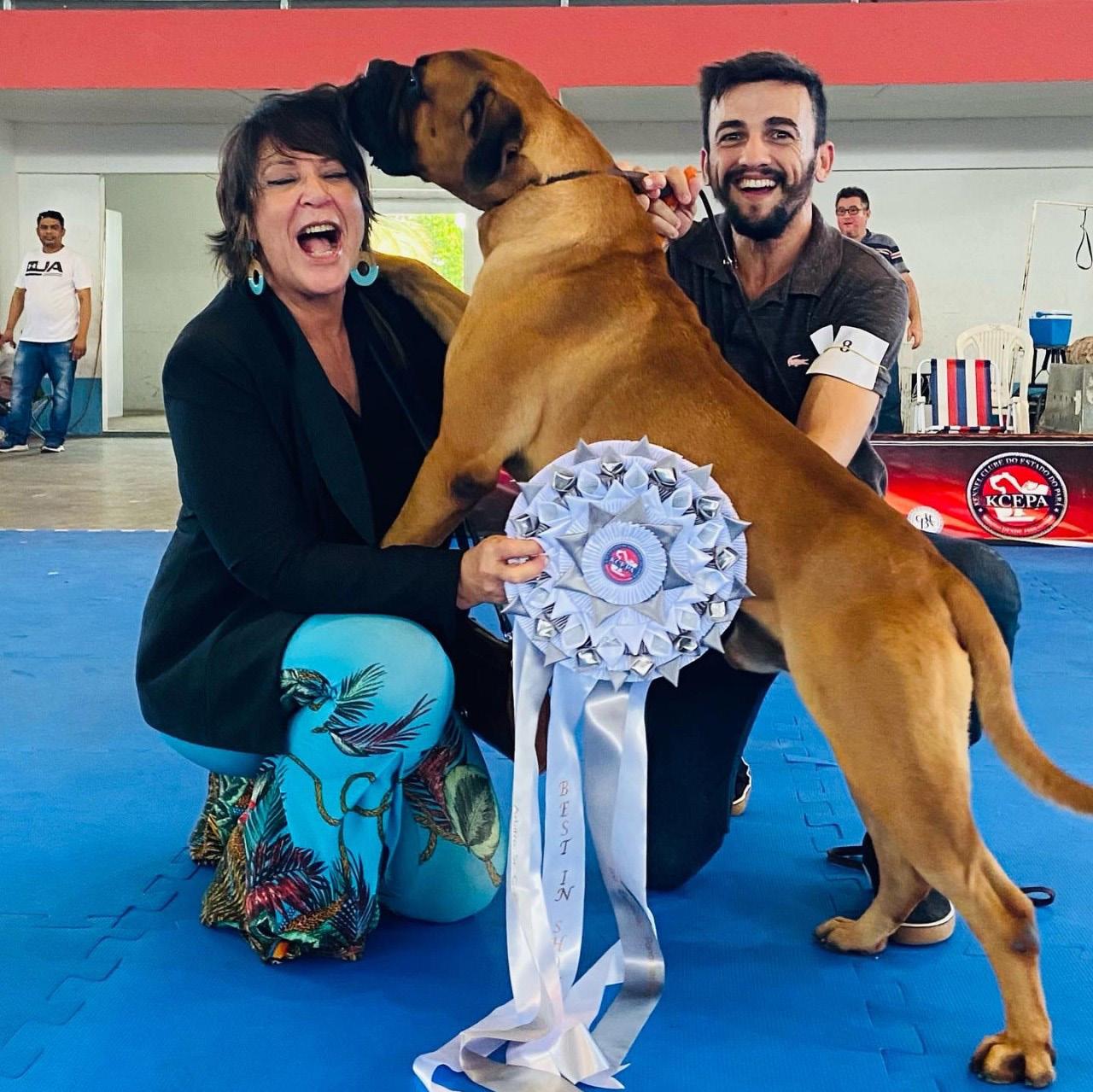
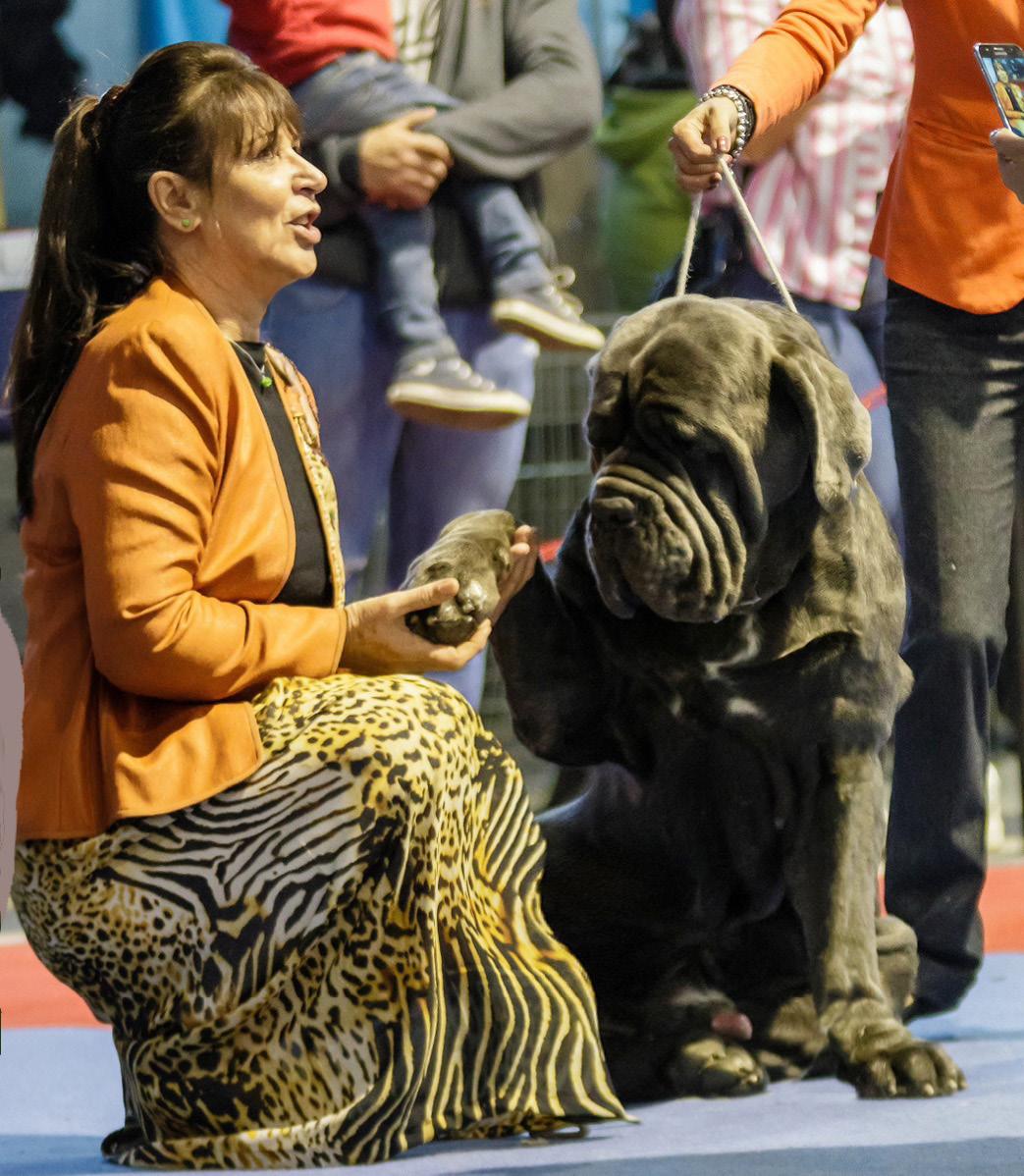
44 RHODESIAN RIDGEBACK EU MAGAZINE
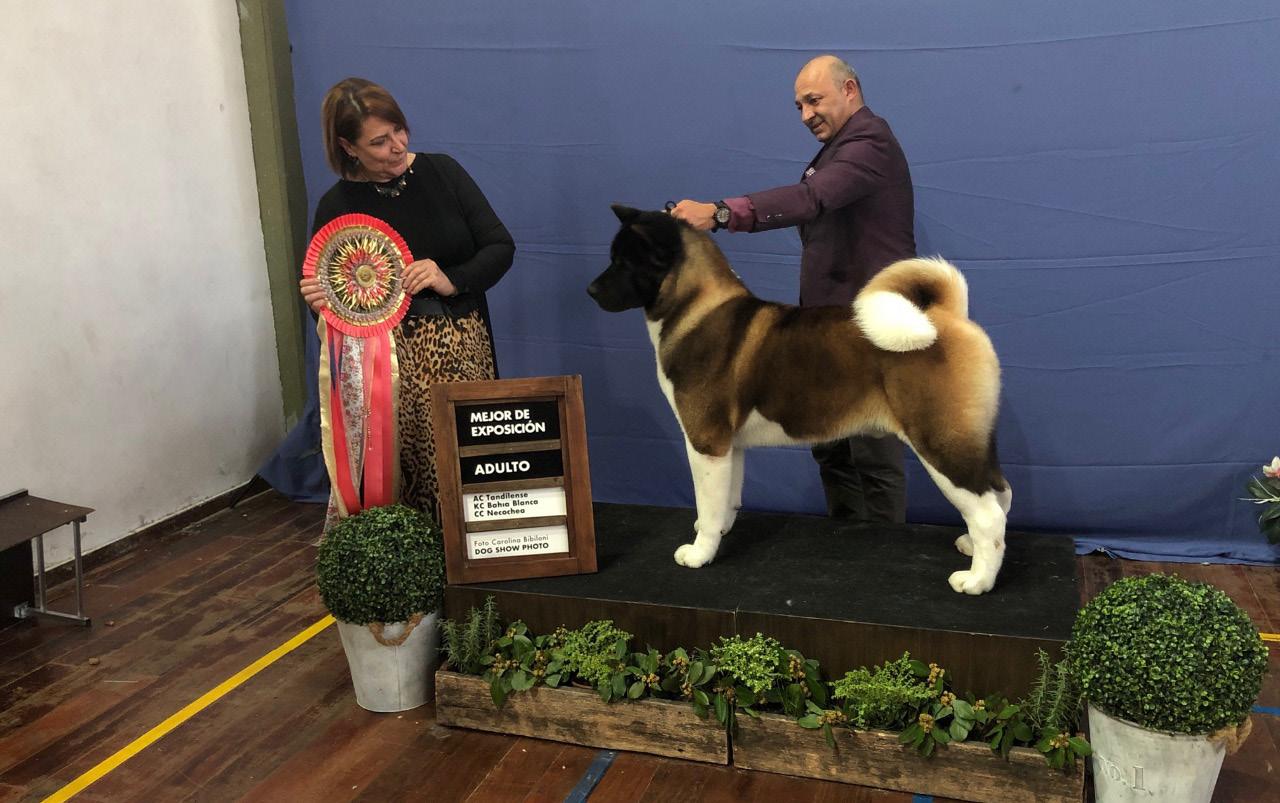
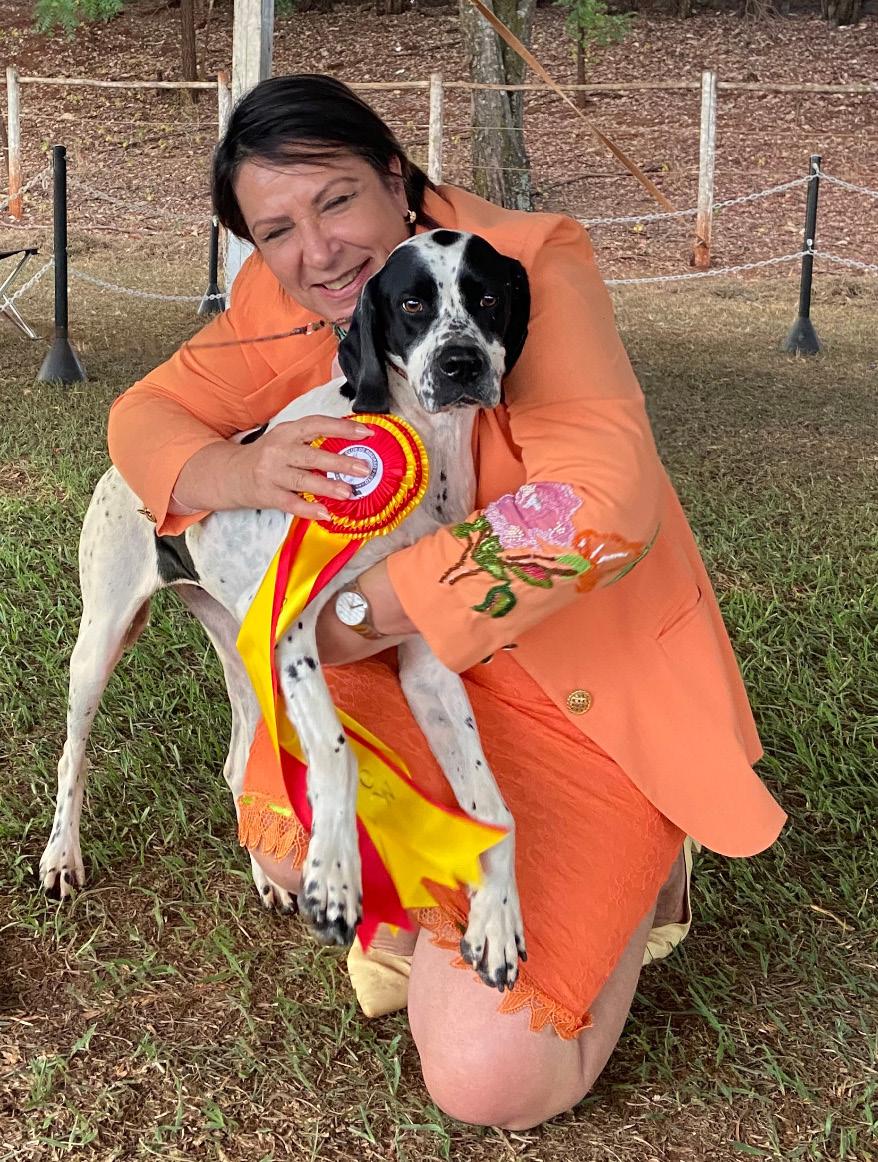
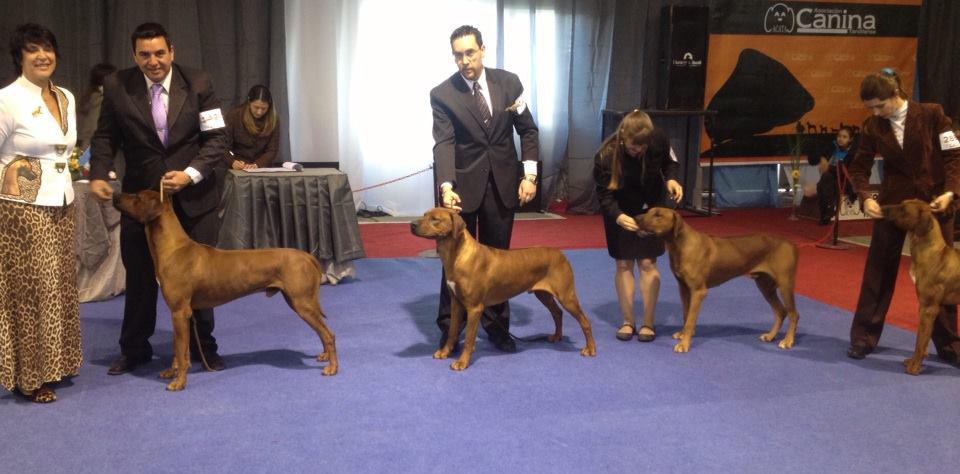
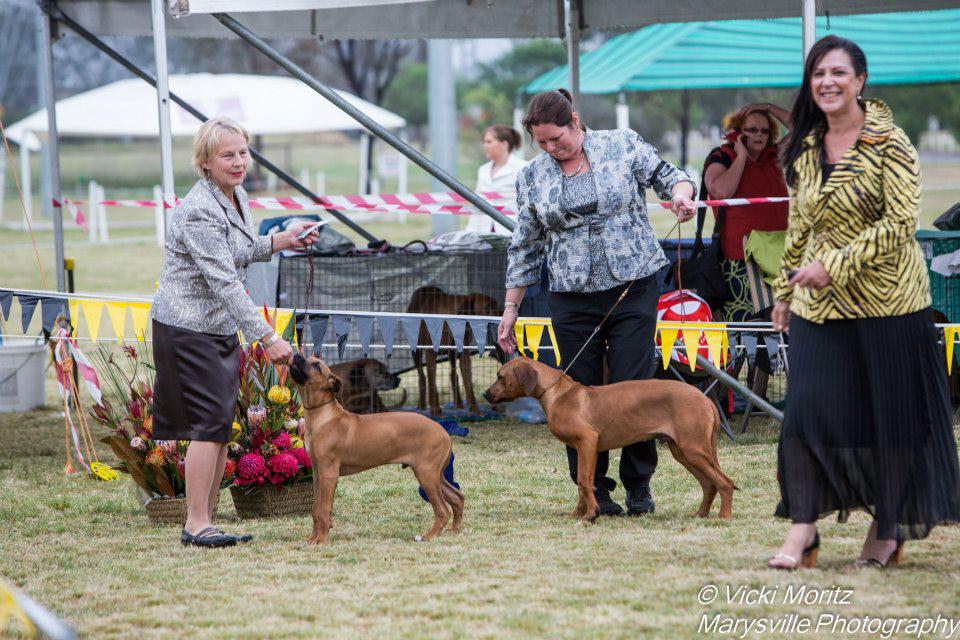
RHODESIAN RIDGEBACK EU MAGAZINE 45
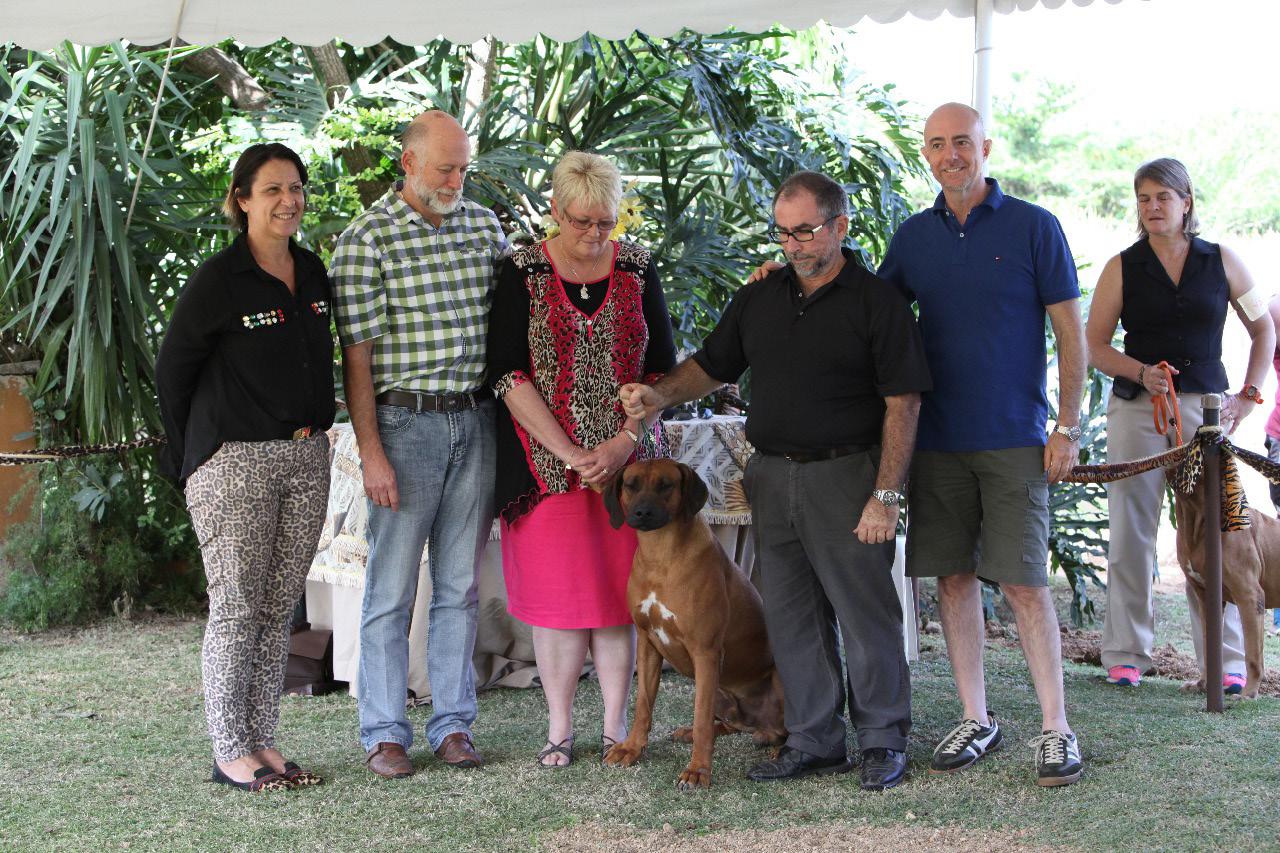
dogs outside the country to help with the squad that already existed in Brazil. The Cardeiro’s bitches were very brutish, they had the size and proportions of males. His temperament was also very acidic, tending towards aggression. I needed to refine, give a better finish to the feet, correct the temperament. I attended the Specialty Nationals in the USA for several years and for a long time during its breeding, I had these American standards as a reference. I imported 3 grand-pups (2 dogs and 1 bitch) from the best stud at that time Crescent the Power of Gold. I started to see rapid changes, especially, females started to become more elegant, feminine and temperaments less aggressive. It was a great decision to introduce the Americans.
Later, I received as a gift from my niece Samantha Perdigão, a dog from the United Kingdom, from Julie Bates’ Gunthwaite Kennel. His name was “Gus” Gunthwaite Kurumba. It was really from then on that my creation underwent major changes. He was a spectacular dog. I managed to keep my conquered types, but he added bone, muscle mass, topline and I achieved what I had lacked. Today the breeding has 18 generations of my work and I rarely need to look for imports, because I managed to balance the lineage very correctly.
There is a standard created by KUSA that the FCI follows, the organization I am associated with. It describes relevant characteristics of the breed. A good breeder cannot disregard this informa-
tion and create dogs that are not based on these premises.
The type that a breeder establishes can be associated with several details and generally depends on their passion. For example, when my dogs enter the ring, they all comment on how similar they are. They say: “they look like copies”. This is often associated solely with color. They are darker, have a black mask (which I personally love), and have stronger bones and conformation. I consider that the type I formed since Gus came into my life is no longer lost, because I carried out matings where he appeared 2 times in the pedigree. And he really was a dominant dog. I didn’t lose the types that were already under construction, but I added the color (which became a brand) and the stronger structure, but with the contribution of American lines that gave me elegance.
IS THERE SOMETHING YOU WOULD LIKE TO CHANGE IN THE BREED?
Absolutely nothing!!! Rhodesian Ridgebacks are perfect, the most perfect breed God has placed on earth.
They are balanced, they hardly bark, they are not needy or dependent. Temperament for me is your greatest virtue. They guard their family and home well, without losing control. They are clean, short-coated, resistant, and never get sick. My dogs live to 14/15/16 years old without getting sick in their entire lives. They take dewormers, they are
46 RHODESIAN RIDGEBACK EU MAGAZINE
Ch Cr Ch Int Ch BLUE CHIPS RR GAMBA “Joca”
vaccinated, we apply medicine for external parasites, good food (I feed them premium food to avoid excess protein, which is not good for them). They are very easy dogs to keep. Ahh and they are so beautiful!!!!!
EVERY BREED HAS SOME COMMON PROBLEMS. WHICH IS THE MOST COMMON PROBLEM IN RR?
I know that breeders around the world are increasingly looking for tests to eliminate diseases in the breed.
Personally, I have been very happy to see my dogs healthy and with longevity. Thank God, I don’t face the problems I know some breeders have.
The Ridge is a seal of the breed and some breeders have in the litter, ridgeless puppies. The absence of the Ridge makes selection difficult for those that will continue with reproduction. I’ve had some cases, but I managed to get around it here. I did not breed from the line that produced ridgeless. Today, in addition to all being born with ridge, in the last 6 litters, only one had an extra crown. All others with correct ridges.
Excessive white also appeared, but was eliminated with the introduction of the European line. Today they no longer appear in my litters.
Another serious problem is Dermoid Sinus, but it doesn’t appear in my dogs either. In fact, I only had one case of a dog that presented it in the head area, it was removed and she was fine. She was castrated so she wouldn’t pass it on.
Here in Brazil I heard cases of Degenerative Myelopathy. Some people come to me telling me that they acquired dogs from someone who died prematurely after being diagnosed with this terrible disease. And they continue to mate dogs that are carriers.
A breeder asked me to mate two of my stud dogs. I didn’t give in when I saw the female’s pedigree. I knew the line carried DM. Dogs that present this serious illness must be removed from breeding.
Here we only use males and females with hip dysplasia A tests.
In some cases that I followed from other breeders and even tried to help, the dogs were born with a “shark bite” with marked agnatism.
I’m a biologist and I know that my training in genetics helped me understand that we should keep dogs (and close relatives) away from breeding to avoid common diseases in the breed.
Fortunately, my puppies were all born with ridges, testicles descended into the scrotum, correct bite, absence of dermoid sinus, dysplasia, deafness, myelopathy and many other ailments that affect the breed.
WHAT IS THE MOST IMPORTANT POINT OF WHICH YOU WOULD
LIKE A JUDGE OF THE BREED TO BE AWARE?
MOVEMENT
I am sad to see the judgment of breed by some very uninformed judges. They expect the Rhodesian Ridgeback to have a movement and especially temperament common to other hunting dogs.
Rhodesian is a reserved dog with strangers, as the standard itself describes. He is not an excessively happy dog. He must be serious, calm and move with strong strides and must not carry his tail wagging, be happy or please the judges. The tail should not exceed the back line or swing. This would be an easy target for the large predators that it targets during its work at the time of its development.
This to me is the most serious problem in the trials I see.
I love it when foreign judges come to my country who know the breed, who know how to appreciate a dog that moves properly. Low tail with delicate movement. Some confuse this behavior with a shy temperament. The Ridgeback is a serious dog.
WHAT QUALITIES DO YOU ADMIRE MOST IN A JUDGE?
Independence. Nowadays, judgments are very questionable. I love rewarding my friends’ dogs, but when they aren’t good, unfortunately I can’t do it. If people I have a problem with bring dogs for me to judge, I do it independently and try to see only the dog. It’s not his fault he has a nasty owner. I’ve already rewarded friends and enemies.
When you don’t get corrupted, you tend to judge better. We cannot let ourselves be carried away by friendships or enmities. Do independent work and you will make fewer mistakes.
I also appreciate judges who like movement. In it you observe the dog as a whole. You don’t need to keep picking up the dog and touching it to see the angulations, topline, tail carriage, etc. Take it for a walk and you will see if the dog is well built.
You have a judge in Slovenia that I admire a lot, Stefan Sinko. He clearly judges by movement.
WHAT CHARACTERISTICS MAKE A GOOD JUDGE IN YOUR OPINION?
As I said above, independence. It is difficult to be a judge of all breeds and not make mistakes because we can, at most, know the Groups that our breeds are part of.
My mentor, who helped me train as a judge, told me something important about choosing a way to make less mistakes: MOVEMENT.
RHODESIAN RIDGEBACK EU MAGAZINE 47
Each breed has its specificity in its origin. For example, Pekingese were developed not to stray far from monasteries. His waddling movement, his deflected front, were necessary attributes. You cannot expect fluent movement and the same steps from a Poodle, from the same Toy group.
Dobermans were developed as attack dogs used by tax collector Louis Doberman to intimidate people during his visits. He’s lying down and when an attacker enters, he has to go there, grab the opponent and lie down again. He doesn’t cover ground like an English Pointer or a Weimaraner. Its movement doesn’t have to have as much propulsion, nor as much ground coverage. In a gallop he can reach the opponent, so you don’t have to look for what is essential in others in some breeds. That’s why I always study, that’s why I’m interested in talking to serious breeders. I always learn a lot from them.
For me, the Movement is the factor that makes me understand breeds better. I try to read the origins, the breeds that participated in its formation. This way, I make fewer mistakes.
WHAT DIFFERENCES DO YOU SEE IN THE JUDGES TODAY AS OPPOSED TO THOSE AT THE BEGINNING OF YOUR CAREER?
It was more fun to judge.
Today, favoring results in exchange for favors is terrible. I feel ashamed to be in the same environment with people who are clearly venal.
On the other hand, I love showing my dogs, I cheer and cheer for them, which is why I have accepted few judgments for Brazil. I don’t want to benefit from my status as a judge so that my dogs can be favored.
WHAT IS YOUR MOST MEMORABLE EXPERIENCE AS A JUDGE?
Without a doubt, it was judging the National Specialty in Sydney, Australia. Unforgettable. I saw so many beautiful dogs, so much kindness from people towards me. I loved!!!
It’s nonsense, but I’d like to comment on it. There was an entry of 27 dogs in the Open class. And the leader of the Promotor Club asked me if I wanted them to divide it into 3 batteries to facilitate the trial. I said, “No. I want everyone here around me.” It was one of the most beautiful moments I’ve experienced, so many Rhodesians nearby. I qualified the first 4 and also from the 5th to the 27th dog. Each of them had my technical evaluation summary and their classification in the show.
HOW HAS THE DOG SCENE CHANGED OVER THE LAST DECADES?
Show dogs in some places are emptying out very quickly. Politics is taking over our hobby and the technical part is being neglected. There are no

seminars with breeders for referees, which could be of great value in understanding a standard that we, who created, have extensive knowledge of.
We no longer see respect for ethical standards. HAVE BREED STANDARDS CHANGED VERY MUCH SINCE YOU BEGAN YOUR JUDGING CAREER? DO YOU SEE ANY DIFFERENCE IN RR OF TODAY COMPARED TO RR OF 10 YEARS AGO? IF SO, WHAT ARE THE BIGGEST DIFFERENCES YOU SEE?
The Standards have undergone few changes over time. Some breeds have adapted to current times. Chinese Shar Peis had to adapt to excessive wrinkles because it caused damage to their health. Colors of some breeds such as Poodle that are now accepted in particolors. Amputations of ears and tails are already ruled out in most breeds. But in the case of RRs, nothing has changed, except that in the AKC they put Ridgeless as a disqualification and are now studying the inclusion of Blue.
48 RHODESIAN RIDGEBACK EU MAGAZINE
Over the years the RR breed has undergone many changes, and I believe for the better.
I see a difference especially in height and body volume.
The old RRs were heavier, the feet had little arching, the front and back were poorly angled, and the back was uneven. Today, the work of several breeders around the world has shown dogs with beautiful toplines, good shoulder angulations, firm hocks, well- arched feet, more elegance. The current RRs have more harmony as a group, the females are very feminine and the males are masculine. The average height of both can be the same, which is why the difference between the sexes is very important.
Distinguish males from females. In the past, this was barely visible. Today Yes.
WHAT IS THE BIGGEST THREAT TO RR TODAY?
Fortunately, I think the breed is not subject to fads like Labradors, Goldens and Pomeranians. Breeds attractive to some traders.
4 years ago I faced a battle in Brazil because of the Blues. They were being registered, judged and qualified in exhibitions. It is a fault due to atypicality and is associated with two more: Blue eyes, slate nose. They should not be accepted because in addition to the 3 associated faults, they have serious neurological problems, diseases due to color dilution and alopecia. There were 3 kennels that had RRs of that color. They came together and represented me, requesting my suspension as a judge because I politely approached them at an dog show and informed them that it was a disqualifying fault. They didn’t like it. One of the kennels, whose breeder is a veterinarian (yes, a veterinarian), used a blue stud dog as the kennel’s stud dog. The color became attractive to the layman and prices were much higher.
These unscrupulous people could determine a horrible future for the breed, but I fought for them to stay away from the competition rings, but I cannot prevent them from continuing to breed, because in the registration description, they put the color Wheat and not the color Blue.
There are kennels that compete, that continue to show victories and have a squad committed to Degenerative Myelopathy. Dogs that die young that cause enormous pain to so many families.
The clues are coming, children, grandchildren and great- grandchildren of dogs that carry or are affected by this disease. This is serious, but unfortunately we cannot place ethics where there was no birth and training.
Responsible breeders, committed to the development of the breed, are rare. This mission is not for everyone.
IT’S INEVITABLE THAT BREEDS WILL EVOLVE AND CHANGE SOMEWHAT AS NEW GENERATIONS OF BREEDERS TAKE CHARGE. HOW CAN THE ESSENCE - OR TRUE BREED TYPE - BE MAINTAINED?
There is an official breed standard, it should guide the creation of serious and responsible breeders. We cannot control the world. Unprincipled people will certainly want to make changes to meet the “market”, as in the case of Blue. Doing our part with seriousness and focus may seem little, but it certainly motivates some to continue. There are great breeders all over the world who create with seriousness and passion. And we know where to find them.
WHAT WOULD BE THE MOST IMPORTANT SINGLE PIECE OF ADVICE YOU WOULD GIVE TO ALL SERIOUS YOUNG BREEDERS?
Did you choose the best breed in the world to breed? So treat them with respect and dignity so that future generations can enjoy their company in the years to come.
Create with love, create with passion and, most importantly, create responsibly. You have one of the greatest treasures left to us by Cornelius Van Rooyen and his neighbors in former Rhodesia who developed this beautiful breed during the period from 1870 to 1910, take care to preserve them. It’s an honour to have one of these around.
WOULD YOU LIKE TO ADD SOMETHING?
I would very much like to thank you for the opportunity to speak for such an important magazine for the Rhodesian Ridgeback breed. Talking about what I love doing so much, being by their side. Thank you for the affection.
INFO
Country Brazil
Affix BLUE CHIPS BRAZIL
www www.bluechipsrbrazilrr.com
Email iperdigao@me.com
RHODESIAN RIDGEBACK EU MAGAZINE 49
Name IN-COELUM PERDIGÃO
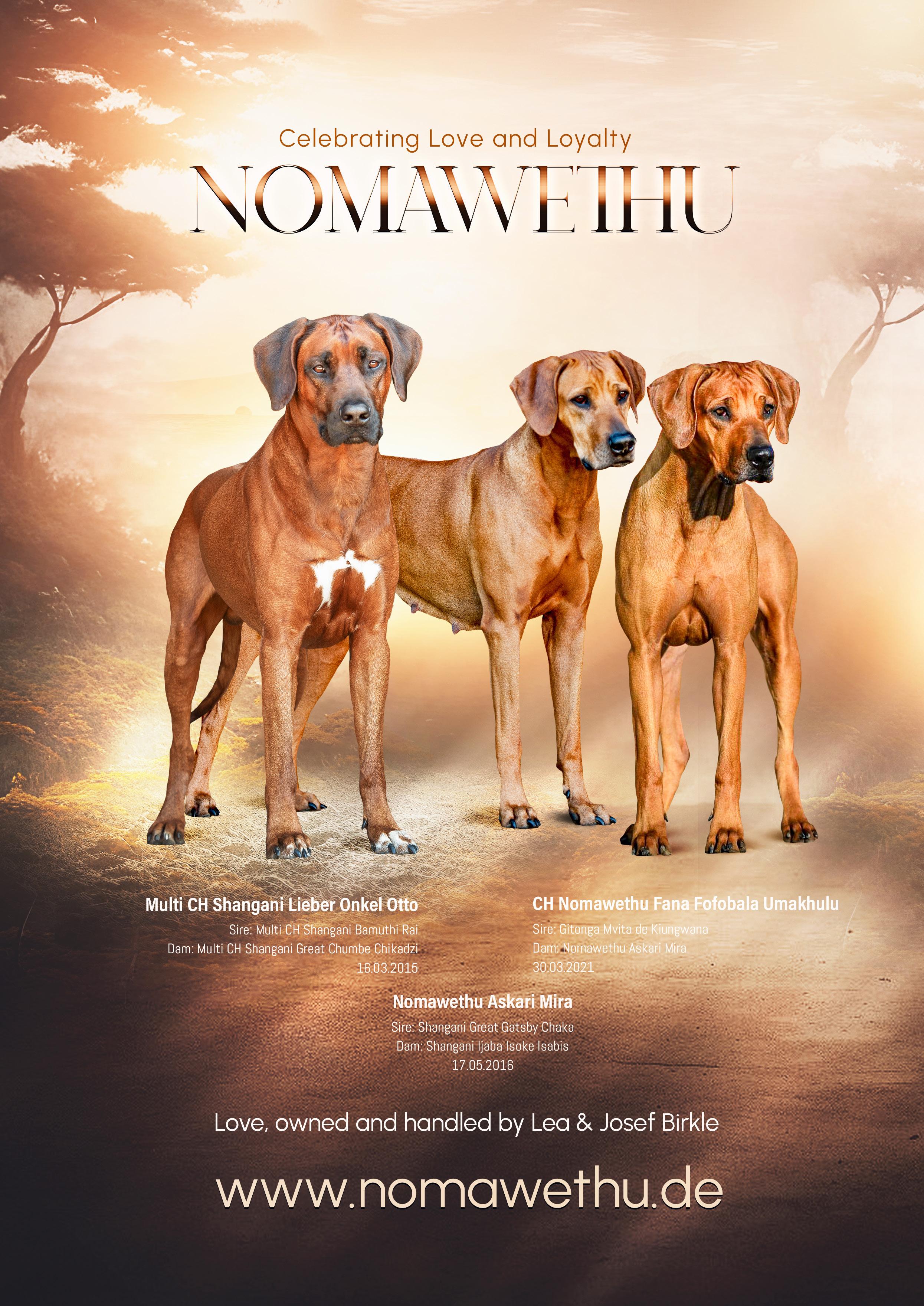

EMPYREAN BREEDER

52 RHODESIAN RIDGEBACK EU MAGAZINE

53
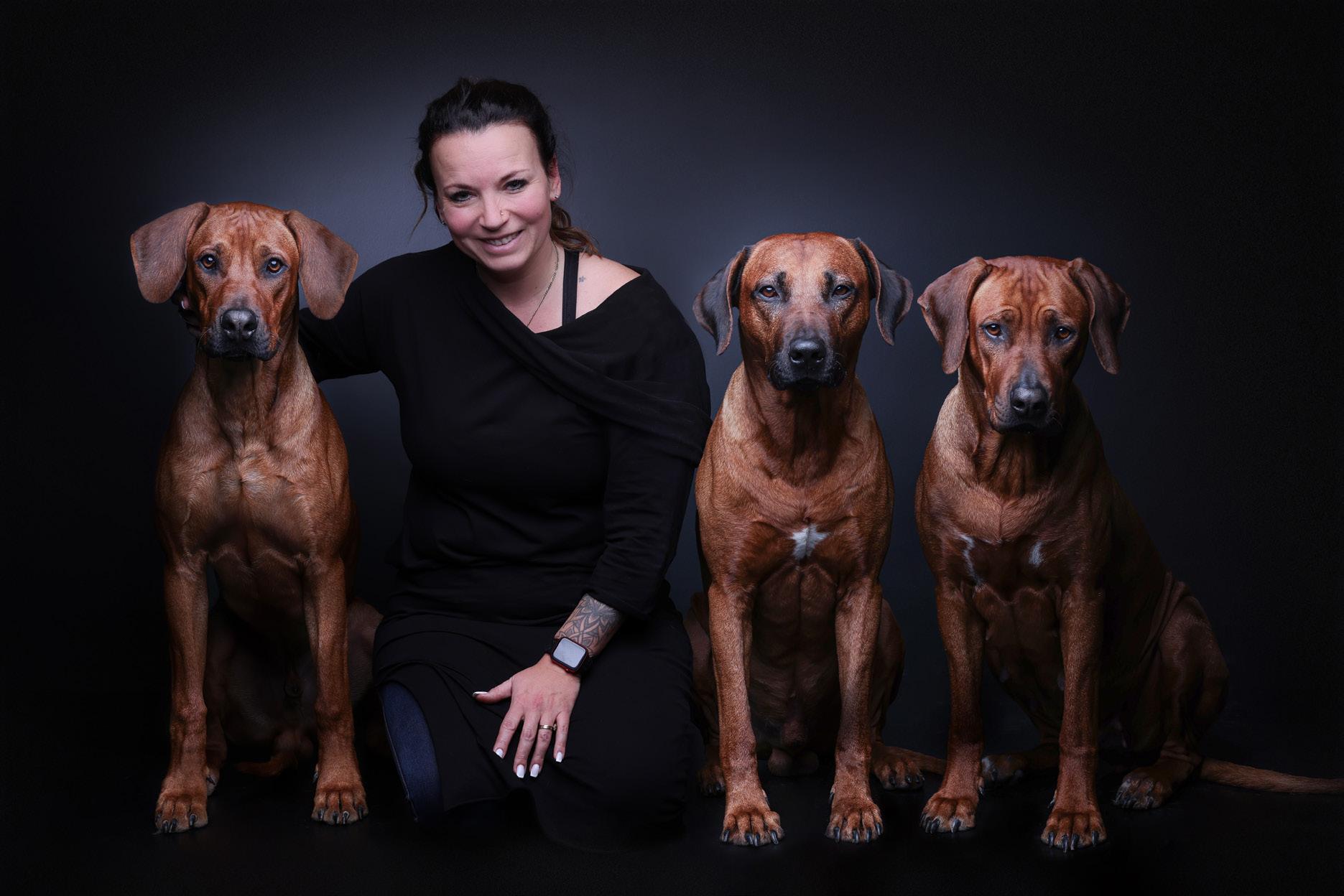
Before my current Rhodesian Ridgeback dogs, I never had a dog. Unfortunately, having a dog was not possible when I was a child, and my life took a different path until I bought my first Rhodesian Ridgeback in 2016. Luckily for me, fate brought me together with a breeder who I can now call my friend, along with his entire family. When I inquired about his dogs, he was happy to show them to me. I was able to accompany one of his dogs, Fana, throughout her pregnancy, and together we chose the puppy that suited me. I knew that I wanted a loyal companion with whom I could share my life and discover common interests. After getting to know each other, the breeder suggested that I get a male dog, and he was right. I made the best decision of my life when I selected and bought my wonderful dog, Zion.
There are certain stereotypes that dogs choose, and I had a puppy that hung on me all the time during my visit, cooing and being nice. On the other hand, there was another puppy who only watched from a distance. He didn’t come over, he just looked and stared, wondering if I would be good enough to be his owner. He just looked and looked with his beautiful eyes, and by the time I got home, I knew he would be my wonderful puppy, Mawanda Moon Bross Zion. He is a wonderful creature, and I love every part of him. I know his every move, he is a great actor and a real charmer. He knows how to get me off my feet, but he is also a well-behaved, beautiful dog. We went through all the schools together, from puppy school to
obedience exams, through induction courses, and we also successfully passed the BH exam. In addition to this, we attended guarding and protection training for several years, and we didn’t miss out on the fun, so we also did agility training. We also tried the world of exhibitions to encourage breeders, although I did not bring Zion with that intention.
At first, I knew nothing about the world of dog shows or how to train and handle dogs. But I didn’t give up and spent 1.5-2 years attending training classes to learn the basics of this profession. Today, I not only train my dogs but also teach other dog owners. I am grateful for the knowledge I have gained and try to help beginners navigate the early stages.
My interest in dog breeding began when I was asked to cover Zion. I was part of the birth and growth of his litter, which made me realize that I wanted to have my own kennel someday. With my vision and the breed standard in mind, I hope to contribute to the future of this wonderful breed. My journey to acquiring my dog, Incredible Art ElderFlower Bella, was long but worth it. She came from a healthy bloodline with several world-renowned ancestors. I’m grateful to her breeder for entrusting me with such a sweet and special dog. I chose Bella intending to bring a lesser-known bloodline to Europe for breeding purposes. Our relationship was based on mutual trust, which is crucial when choosing a puppy for breeding. I’m happy to say that everything went well, and we succeeded!
54 RHODESIAN RIDGEBACK EU MAGAZINE
From left to right Empyrean Alodial George Nzuri, aka Zyde 11 month old, Mawanda Moon Bross Zion, 8 years old Incredible Art ElderFlower, aka Bella 3,5 years old
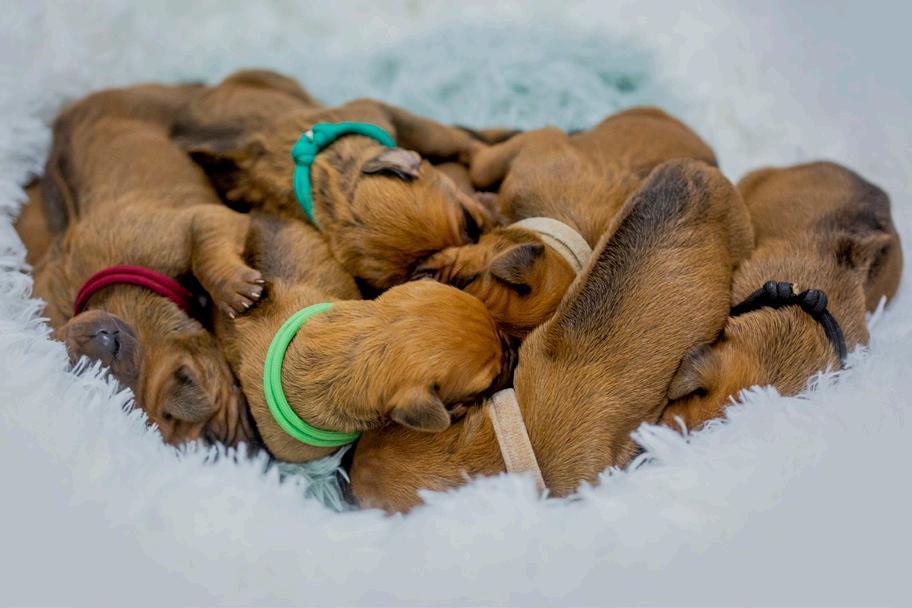
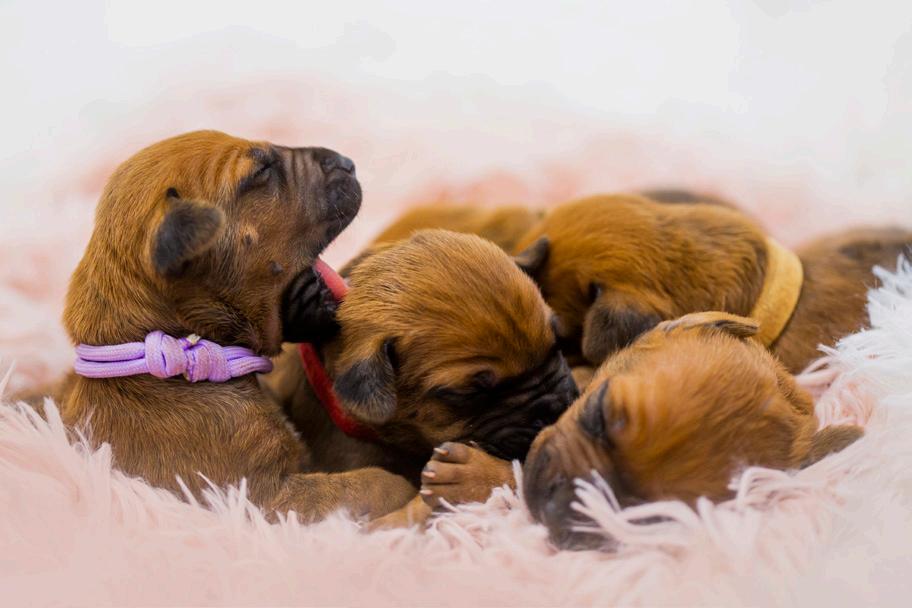
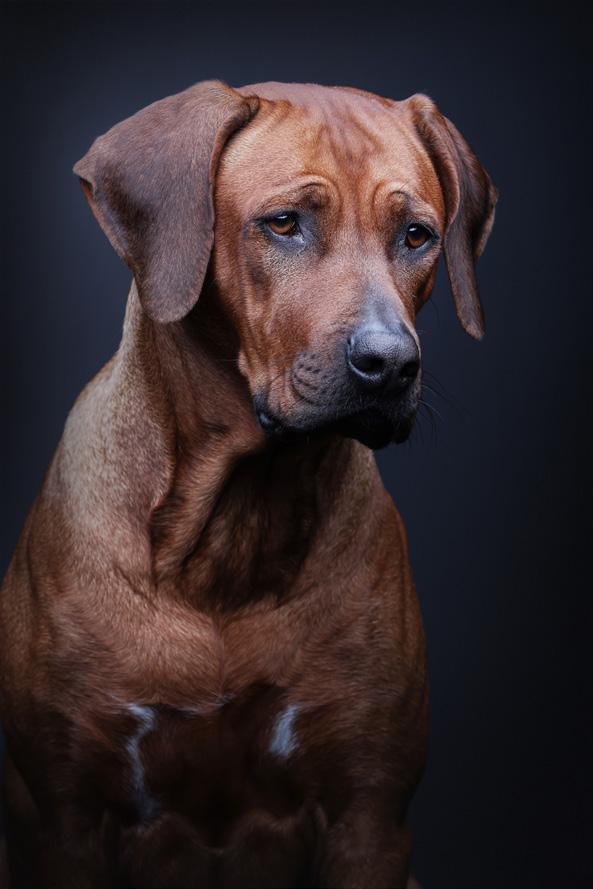



RHODESIAN RIDGEBACK EU MAGAZINE 55
Our first litter
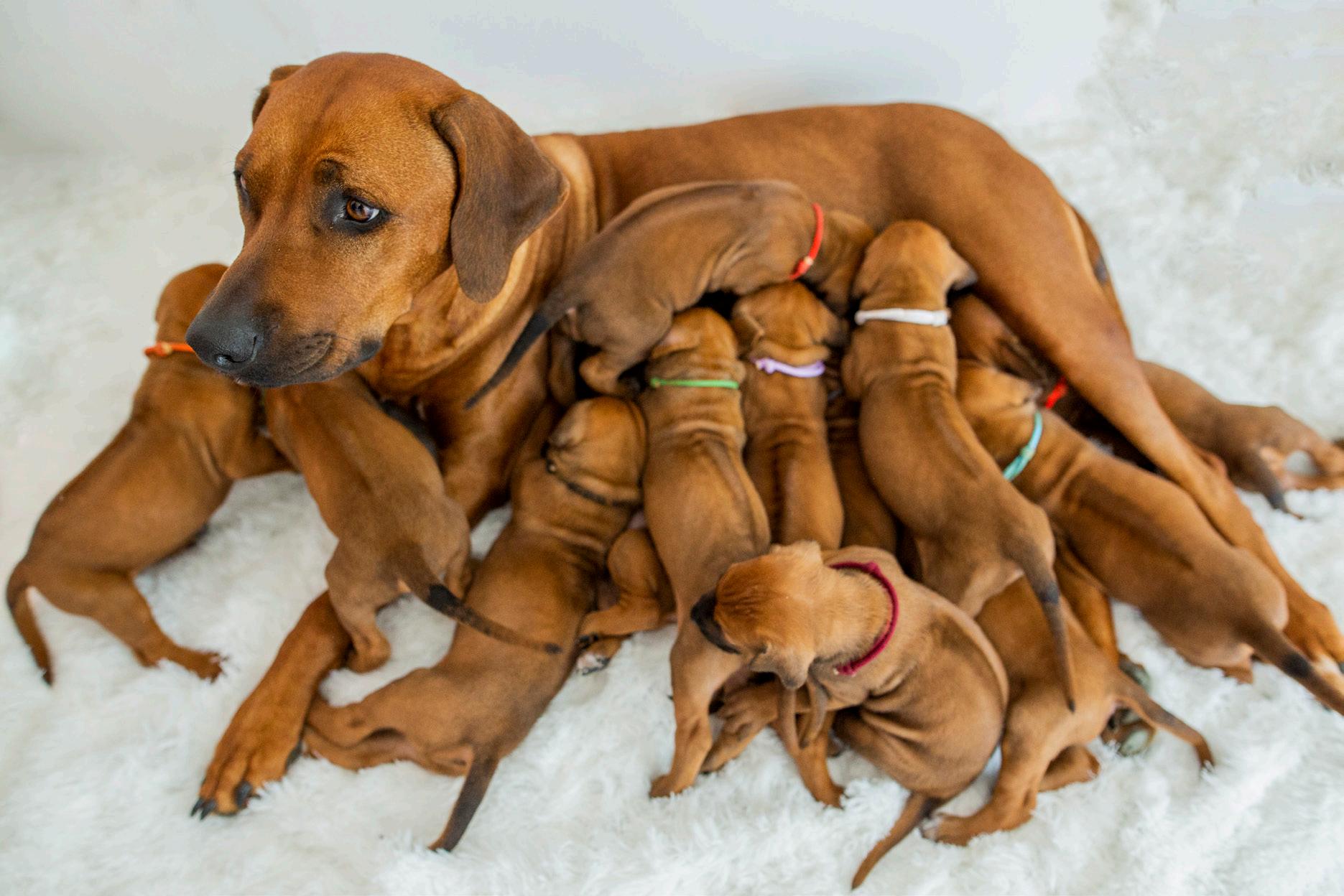
Our path was clear from that point on; we aimed to participate in exhibitions and professional forums to learn and improve. It is important to me that my dogs undergo health screenings and show negative results. I prioritize striving for healthy and beautiful puppies to be born in my kennel, and to achieve this goal, I ensure that my dogs undergo mandatory screenings and more. I also pay close attention to their nutrition and do everything I can to promote their physical and mental balance and overall well-being.
In 2022, I founded my kennel called Empyrean, and I couldn’t wait for a dream to come true. I fell in love with my dogs and wanted to share this passion with others.
In 2023, the very first litter of 13 adorable puppies was born in my kennel. I was extremely satisfied with the outcome and I hope that in the future, one or two dogs from my breeding will make their mark in the world. I consider myself lucky because
I was able to find great owners for my puppies. I made sure to find people who share my values and with whom I can establish a long-term relationship, since owning a dog is a commitment for 10-15 years. So far, it seems to have worked out well, and all my puppies have found super loving and caring families. I trust that this will continue in the future. One of the conditions for adoption was to keep in regular contact, so that I can ensure that everyone is doing well and I can take care of any questions or concerns that may arise at first. I am currently planning my next litter for the spring of 2025. Details very soon.
Name Virág Orczi
56 RHODESIAN RIDGEBACK EU MAGAZINE
INFO
Country
Affix Empyrean www www.empyrean.hu email virag.orczi@gmail.com
Hungary
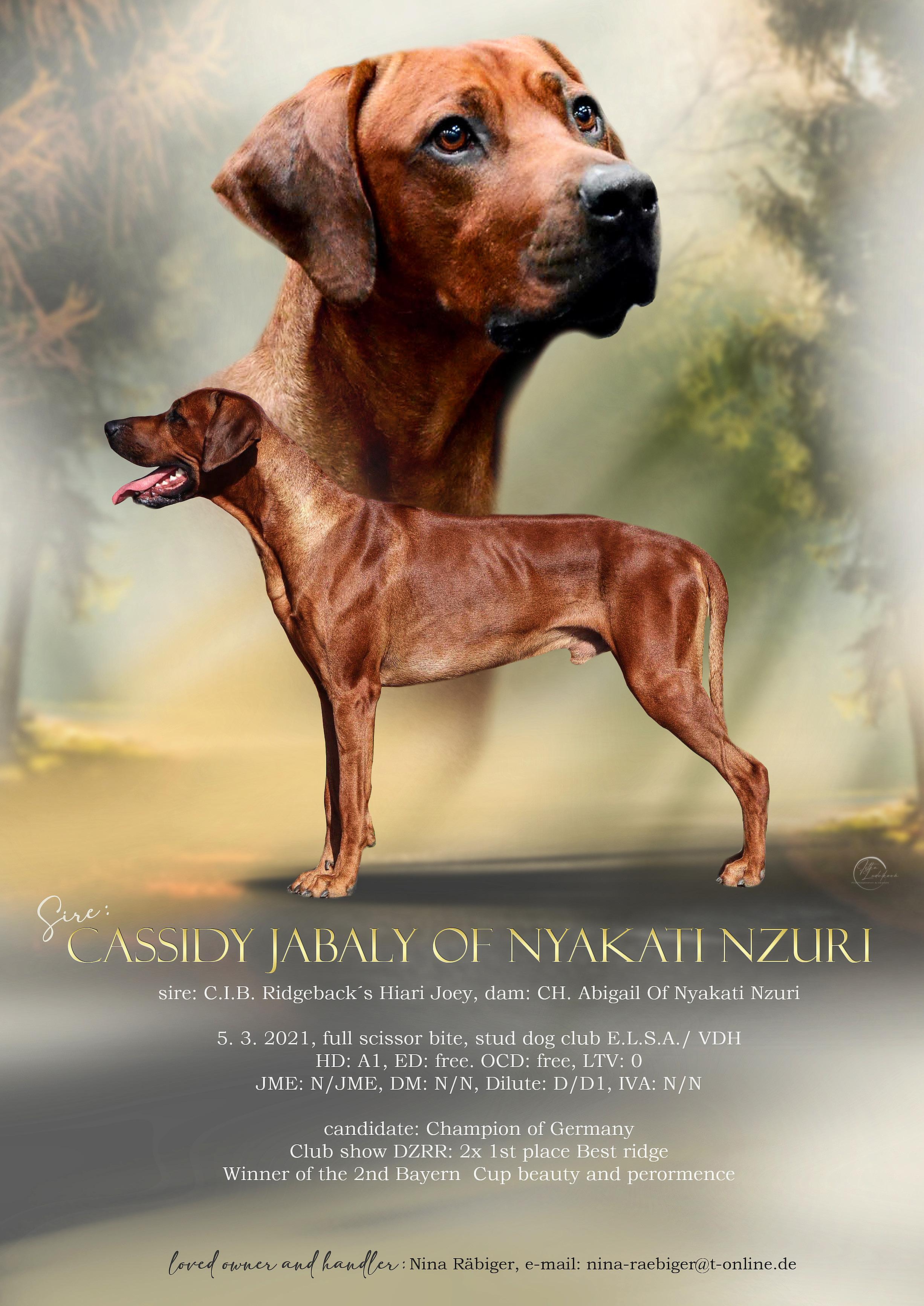
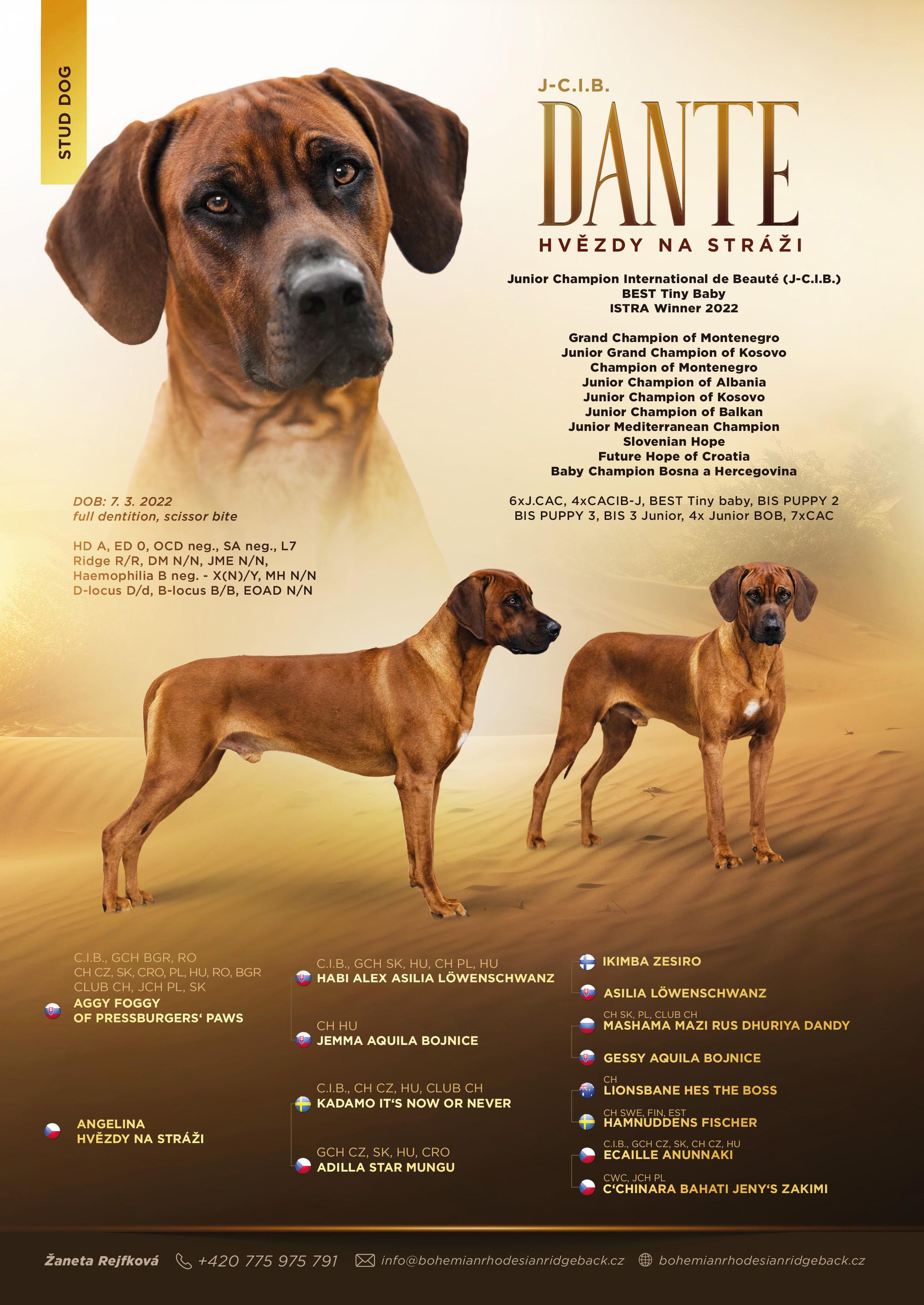

UJAMAA BREEDER
A breeders journey

60 RHODESIAN RIDGEBACK EU MAGAZINE

61
Russ and Vicki with Blondie and Milla in the regenerating bushland at Marysville.
I should firstly thank Snezka for putting together a fabulous magazine- and prompting me to take this trip down memory lane.
We live in Melbourne, Australia and I obtained my first Ridgeback “Tarka” in 1978 - a brown nosed bitch. She was purchased from a friend for the birthday of my first husband, without us knowing much at all about this breed - they were extremely rare in Australia at that time. As she grew, we loved her nature and look, and as many owners do, considered breeding a litter from her. I started the search for a stud dog at the Royal Melbourne show in 1979, and discovered the breed also came with black noses! This shows how much research I had done! We met some breeders and took Tarka to show them. I then learned that she had a very short ridge, was oversized, had a poor topline and did not have the correct papers. I cannot thank these breeders enough for their honesty. There is a lesson here for all breeders: be honest with those who come to you for breeding for the benefit of the breed. After meeting Dave and Jenny Hemmings, I bought my foundation bitch from them. She became Australian Ch Lionspride Caprice, ROM, “Tali” and was a sound example of the breed on which to base a breeding program. We are now 10 generations from this bitchand still learning.
I started showing with Tali, showed and bred a lot in the 1980s. In my 46 years in the breed I have bred 63 litters of ridgebacks with my bitches and those living with family and friends. In the early days I placed bitches and some dogs out on Breeding terms. This sounds like a lot of puppies (and it is) but also a lot of different bitches and dogs, as our girls live in our homes and generally have 1 or 2 litters. We are not a kennel in the traditional sense and I prefer to be known as “Ujamaa Ridgebacks”. We have also owned- but mainly bred- 48 dogs that have show titles in Australia, New Zealand, Canada and the US.
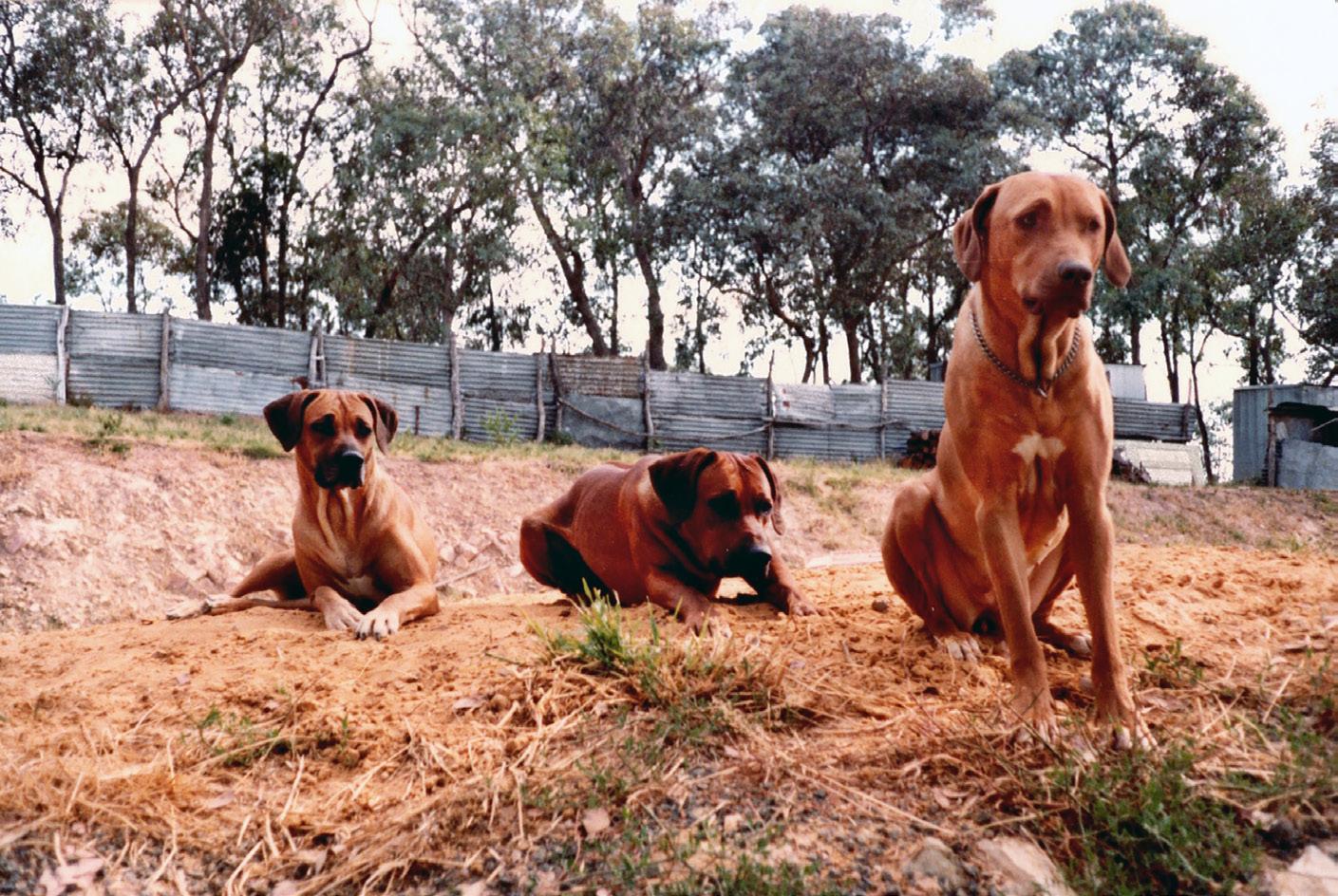
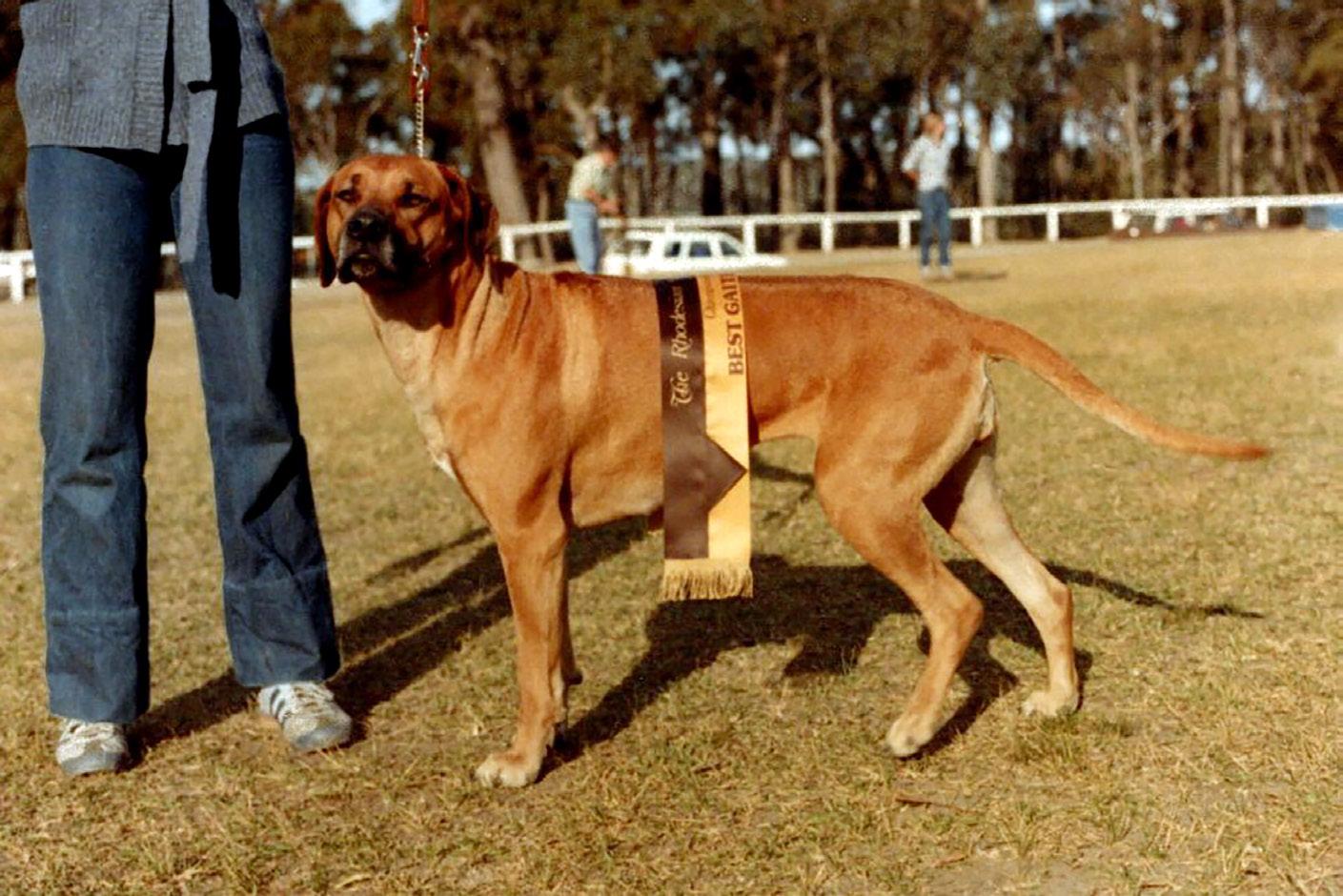
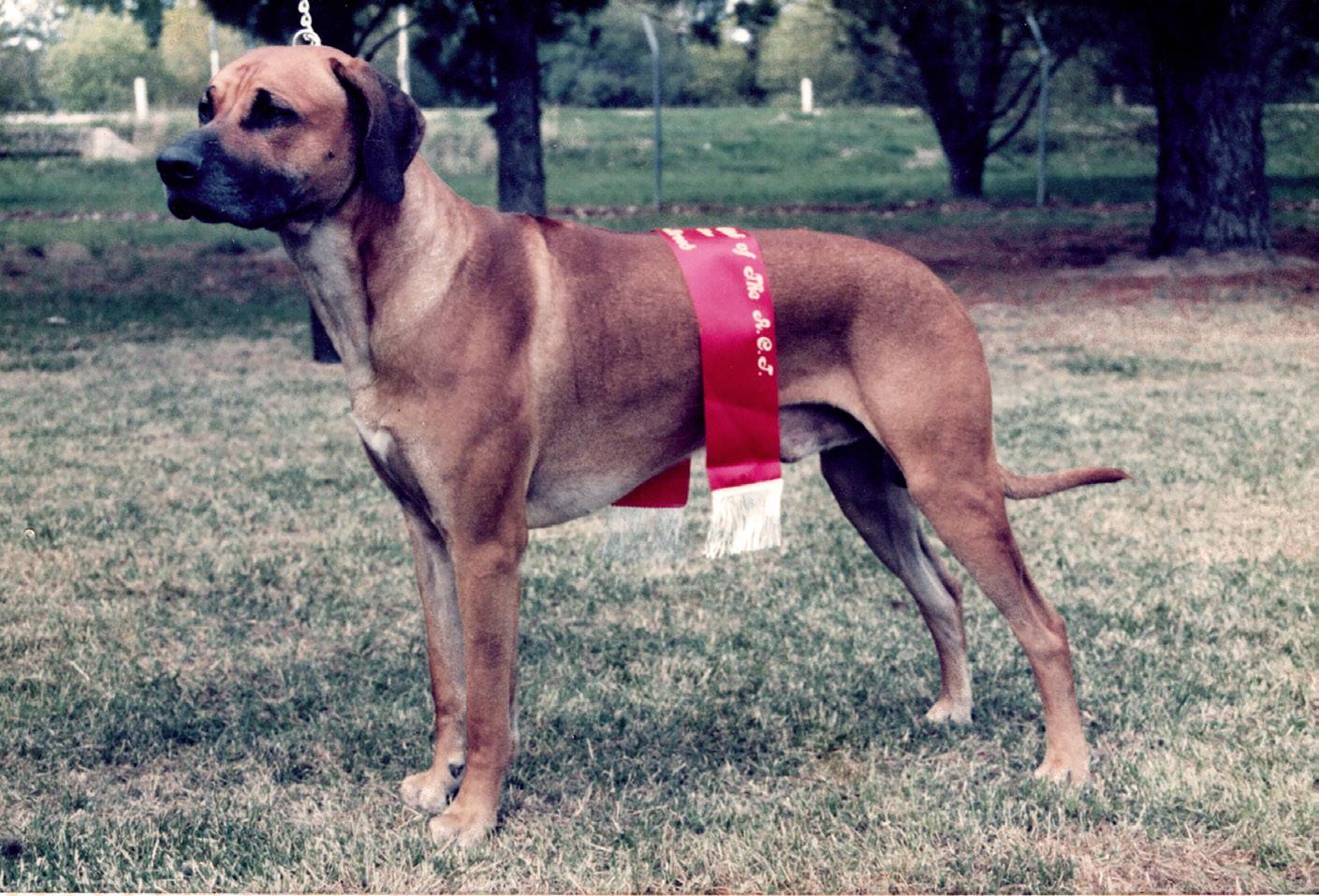
62 RHODESIAN RIDGEBACK EU MAGAZINE
My first dogs in 1980. L to R Ch Lionpride Caprice, Ch Kismayu Caleb and Tarka
Foundation bitch, Ch Lionspride Caprice
BISS Ch Ujamaa N’Kosi Nkulu
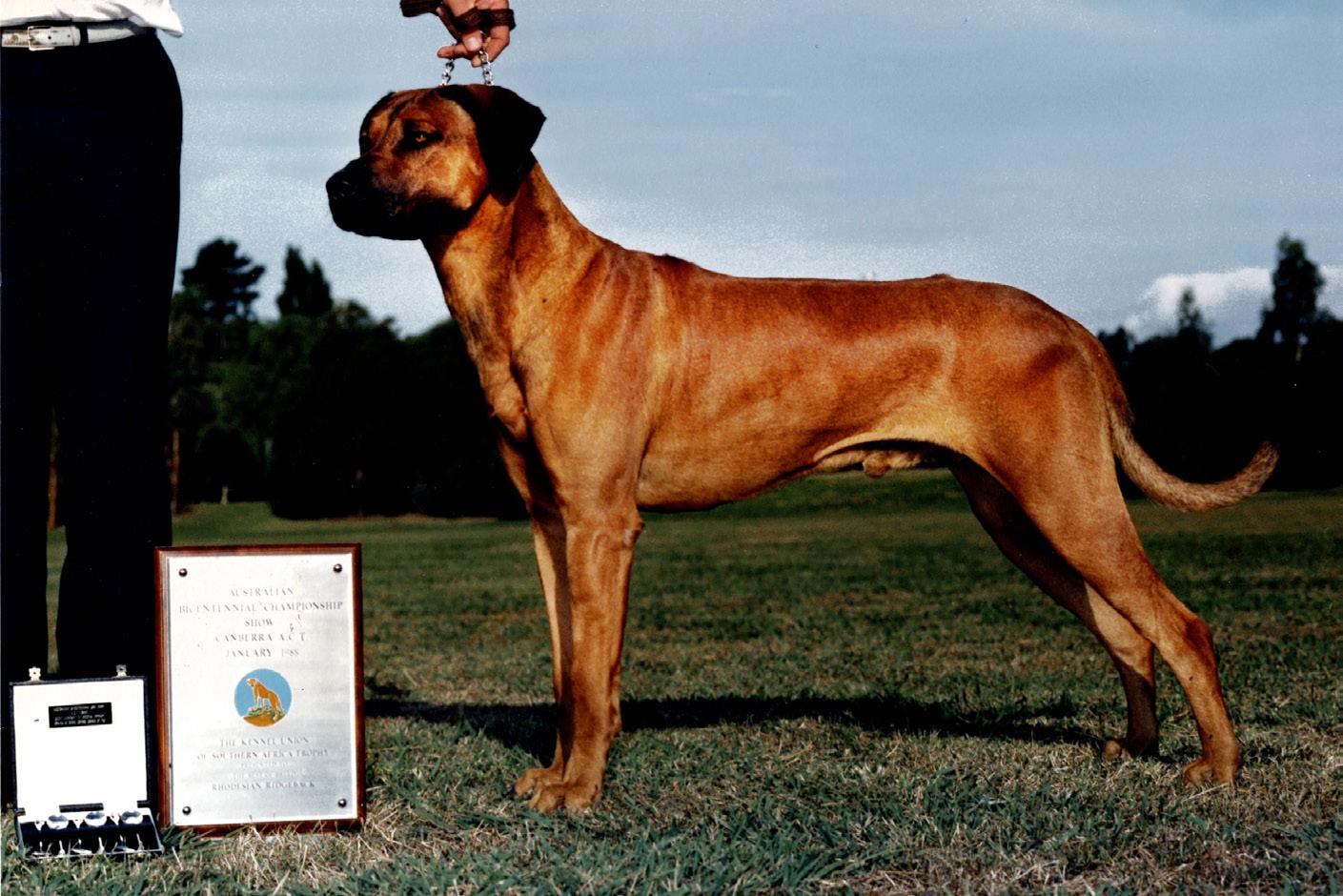
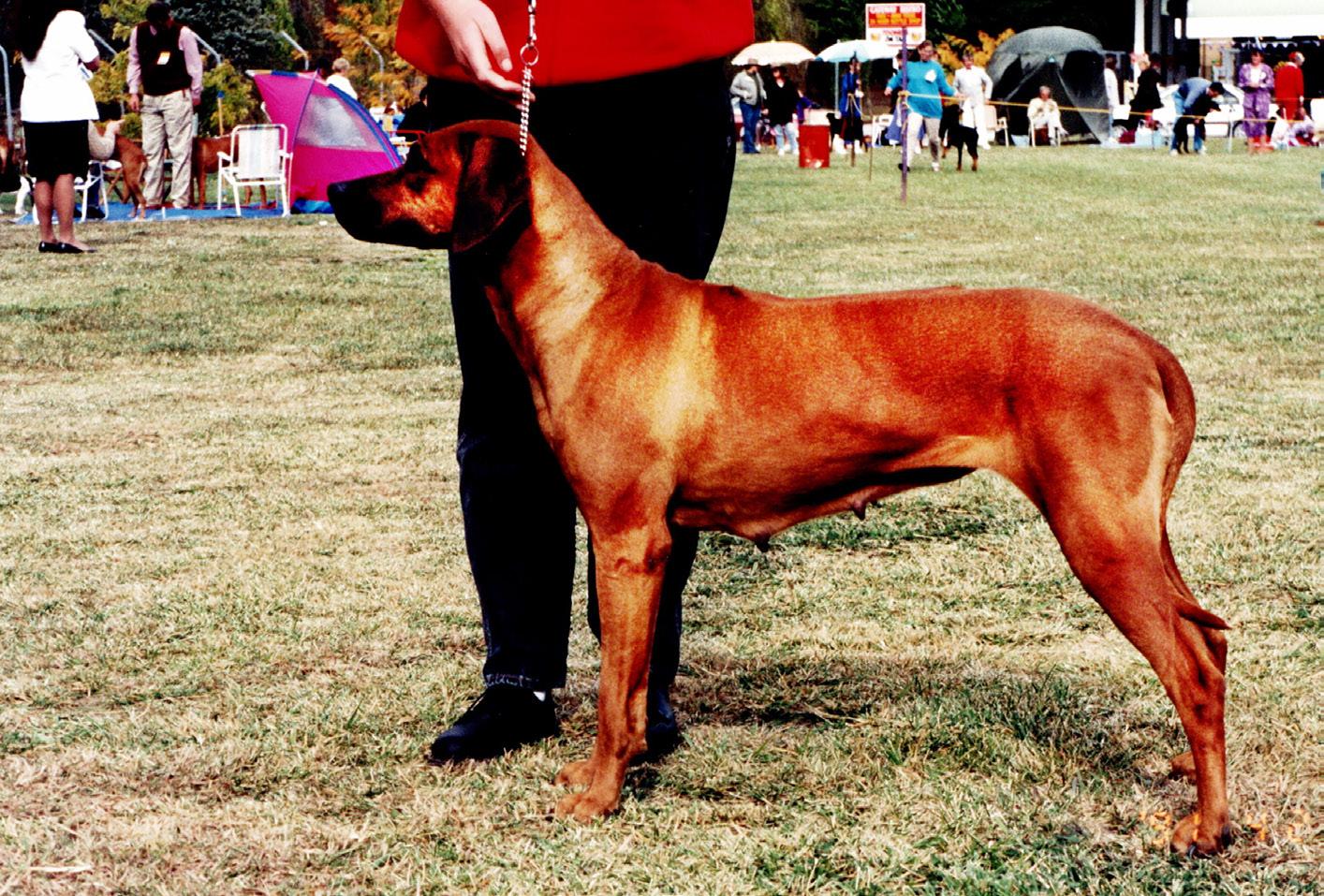
With a background in Science (Microbiology) from the beginning I was careful to use dogs and bitches which had passed the available testing. From the early days starting with hip and then elbow testing we now have access to a full range of genetic testing which must surely improve the quality of our breed. I think the European dogs are particularly well presented in terms of the range of tests and publication of the test results. The European standard being FCI is also aligned with that of the parent club and ours in Australia. The same standard I believe produces a dog which is structurally more like ours in Australia. I research the dogs I am hoping to use thoroughly, not just their attributes but the dogs on their pedigrees. It is now so much easier with all the information on the internet. Having said this, there is nothing to replace seeing the dogs in the flesh, particularly as regards their gait.
Some of the notable show dogs in my early days of breeding (1980s) were BISS Ch Ujamaa N’kosi N’kulu (owned by Shelridge), BISS Ch Ujamaa Comanche (owned by Mzilakazi) and our own Ch Ujamaa Anakie
In early days our choices for stud dogs were limited and Coefficients of Inbreeding were high. We have very strict quarantine requirements in Australia and dogs were mostly sourced from the UK- after spending around 3 months in quarantine! It took 18 months to source a Ridgeback from Africa- we tried to source these lines via the UK. The advent of artificial insemination has changed this and we can now use bloodlines from all around the world. I have not owned many stud dogs as I prefer to find the best possible dogs to match the attributes of my bitches and having a dog in the yard is a temptation to take the easy path. I also believe a kennel should be judged on the quality of its bitches - dogs can be found to complement the bitches.
Having said this, Russell and I decided we should add a dog to our family and in 2004 I travelled to Crufts and visited kennels with a view to importing a dog. We obtained Rekaylahn Kwa Red at Ujamaa, ROM (Imp UK) in 2005. He was from Gunthwaite and Vizara lines and was a wonderful companion with a great character. While we were rarely showing by then he held his own in the ring, but excelled as a stud dog gaining his Register of Merit. He has descendants in Australia, NZ, the US and Europe. Sadly we lost Red, other pets and many friends at Marysville in the Black Saturday fires of 2009.
RHODESIAN RIDGEBACK EU MAGAZINE 63
BISS Ch Ujamaa Comanche (Mzilakazi)
Ch Ujamaa Anakie (Ujamaa)
It took a long time to recover from this, but luckily we had semen from Red stored and still have some of his daughters in our breeding programme today. We also had a bitch in my niece Jenny’s yard that was pregnant at the time of the fires and we were able to retain our blood lines. Ujamaa Makybe Diva (Kaya) is behind all of our present dogs. She lived to 14 years of age. We kept BISS RUBIS Ch Ujamaa Pure Blonde (AI) from Kaya and were given Ch Isilwane Big Bada Boom (Milla) – a daughter of Red, by Lisa Barrenger to keep Blondie company.
Since the fires we have rebuilt our lines and I have imported semen from a number of dogs from around the world. I thank those who have entrusted me with their valuable bloodlines.
I think my selection of dogs reflects my understanding of the breed. The Ridgeback was constructed from a number of breeds to produce a dog that could trot alongside carts and hunters for long periods of time, hence the standard built on that of the Dalmatian which had a similar functional background. When selecting a dog, movement is paramount for me as function follows form. My ideal dog has good angulation front and rear and is longer than he is tall. It is not usual to see square built dogs that look balanced on the move, as they lack the reach and drive of a soundly built Ridgeback. Or if well angulated and square they will over-reach. It is also common to see dogs that lack turn of stifle, these “run downhill” with a sloping topline. So my first selection is on movement. For a functional hound I insist on good feet. I like a male to have a strong head- but not overdone, and bitch to have a feminine head, but not lacking in lower jaw to the point of being snipey. A dark round eye is important in this breed, there seem to be more small triangular eyes than there were in the past.
My ideal dog is also moderate. I think it was David Helgesen who said to me “if you see a Ridgeback go around the ring, and you think “wow”- there is proba-

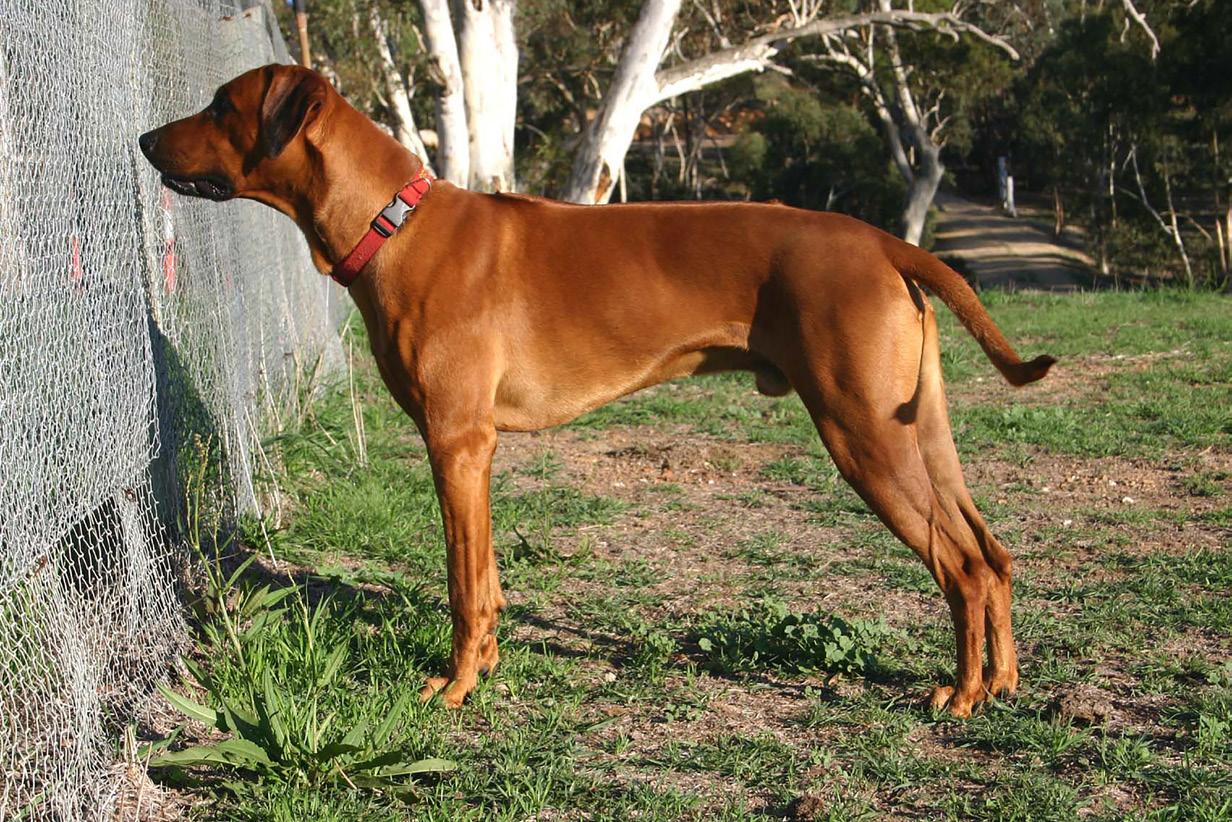
bly something incorrect about the dog”. Too many judges are fooled by large red/brown dogs that would struggle to trot all day, but look great in the show ring. Exaggerated movement can look flashy and catch the eye, but is not correct. Do not be tempted to breed from these, but select dogs and bitches that meet the breed standard. Too many breed for the ring and not to the standard. Some have said we should increase the height and weight of the breed standard. No! We should breed to the standard we already have!
I have been fortunate to import semen from a number of dogs that suit my ideal, notably Ceasar van de Jack Bulls Hoeve (Netherlandssadly AI was not successful), BISS Am Ch Ch Redawgs Christofel O’CopperRidge, SC, HIC (USA), Multi Ch Vizara Jukati (Netherlands) and BISS Can Ch The Black Pearl of Course (Canada- only one litter). More recently we bought in semen from US Ch Podarok Iz Afriki
64 RHODESIAN RIDGEBACK EU MAGAZINE
Rekaylahn Kwa Red at Ujamaa
Rekaylahn Kwa Red at Ujamaa

Duncan Viktor (Imp Russia) and hope to have a final litter with this semen later in 2024.
A litter from Chris- BISS Am Ch Ch Redawgs Christofel O’CopperRidge, SC, HIC and Ujamaa Makybe Diva- produced one of my most successful showdogs - BISS RUBIS Ch Ujamaa Pure Blonde (AI). With limited showing she was the Dogzonline Best Ridgeback in Australia in 2013. Her litter with Sup Ch Mieridge Gatsbys Aplawz (AI- Matalko) produced some lovely puppies. Bloodlines from this combination include the US kennels Spring Valley and Wyndrunhr.
Blondie produced some lovely puppies. Her light wheaten daughter Tully- BISS RUBISS Ch Ujamaa Dolce Gabbana (Matalko) was BISS at the 2017 Australian National Speciality under Ann Woodrow (UK), and also RUBIS at the 2019 Victorian Specialty under Lisa Hoffman (USA).
We kept her sister Ch Ujamaa Alessandra Facchinetti (Allie). Allie was also a good brood bitch having litters from Multi Ch Vizara Jukati and from our last frozen semen from Rekaylahn Kwa Red at Ujamaa. Her first litter with Jukati produced a bitch we kept: Ujamaa Winx. COVID got in the way of her show career but she has a Reserve Bitch at a Specialty show and has won Best Headed Bitch
twice at Specialties. A male from Allies second litter- RUBISS Ch Ujamaa Symphony Red (Parsons)has been used at stud by a number of the better Australian kennels.
Most recently one of Allie’s daughters Ujamaa Reds Swansong (Rosie) went to her second show and took out Runner up BISS under Sir Massimiliano Mannucci (Italy). We hope to breed Rosie later in 2024. With limited showing in 2023 Ch Ujamaa Aurora (Parsons) was titled and took out Best Gaited Bitch in show at the 2023 Australian National show (judge Nada Nikolic). Our young Ujamaa Allegro (Zuri) was Best Gaited in Show at the Victorian Specialty under specialist Sue Temlett . My opinion on shows are that there are 3 elements that contribute to a win- the quality of the dog, the quality of the handling and politics. I am only interested in the first of these, but go to Specialities to catch up with friends, see what is happening in the breed and look for stud dogs.
I have taken 3 main things away from this review of many years of breeding the best possible Ridgebacks I can. The first is that dogs that I bred or progeny of dogs I bred have became foundation animals for many Australian and New Zealand kennels. Some of these dogs are in pedigrees from all around the world with kennels such as Shel-
RHODESIAN RIDGEBACK EU MAGAZINE 65
Makybe Diva meets the cat
ridge, Bearstar, Isilwane, Bowbridge, Rijstone, Mzilakazi with Boulderbrae and Puriri Knoll in New Zealand, all having dogs I bred in the past.
Secondly through the dogs I have met people from all walks of life and in many countries. These are the families who have bought dogs from me and the breeders I have met from all over the world, many of whom I regard as friends. I was fortunate enough to meet with Margaret and Sammy Wallace (Mushana) and show them around where I live, spend a lot of time with Janet Murray who ended up living not far from us, host many Ridgeback breeders (hello Mariette, Liz and Julie) and stay with people such as the Helgesons and Jack Selby from Eilack kennels. These have all added to my knowledge of the breed. I have also travelled to the US, Europe and England to source bloodlines and to learn more about the breed. I will be at the World Dog Show and hope to see some of you at the next World Congress!!
Perhaps more important is something that was said to me by a repeat puppy buyer “you don’t realise how much joy you have given people over the years as a result of the puppies you have sold to them as their family pets and companions”. While it is nice if a dog that I bred becomes a champion, I think this statement is the most important and shows what a wonderful breed we are involved in.
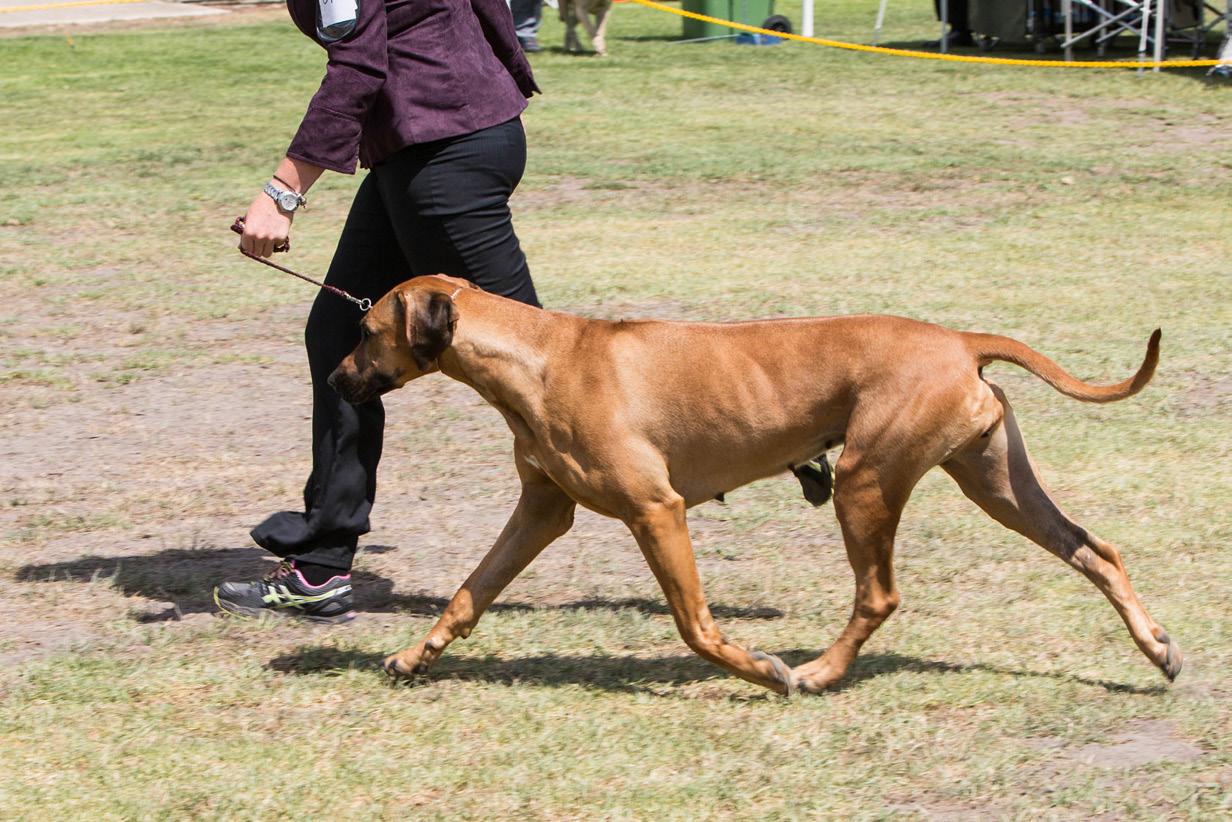
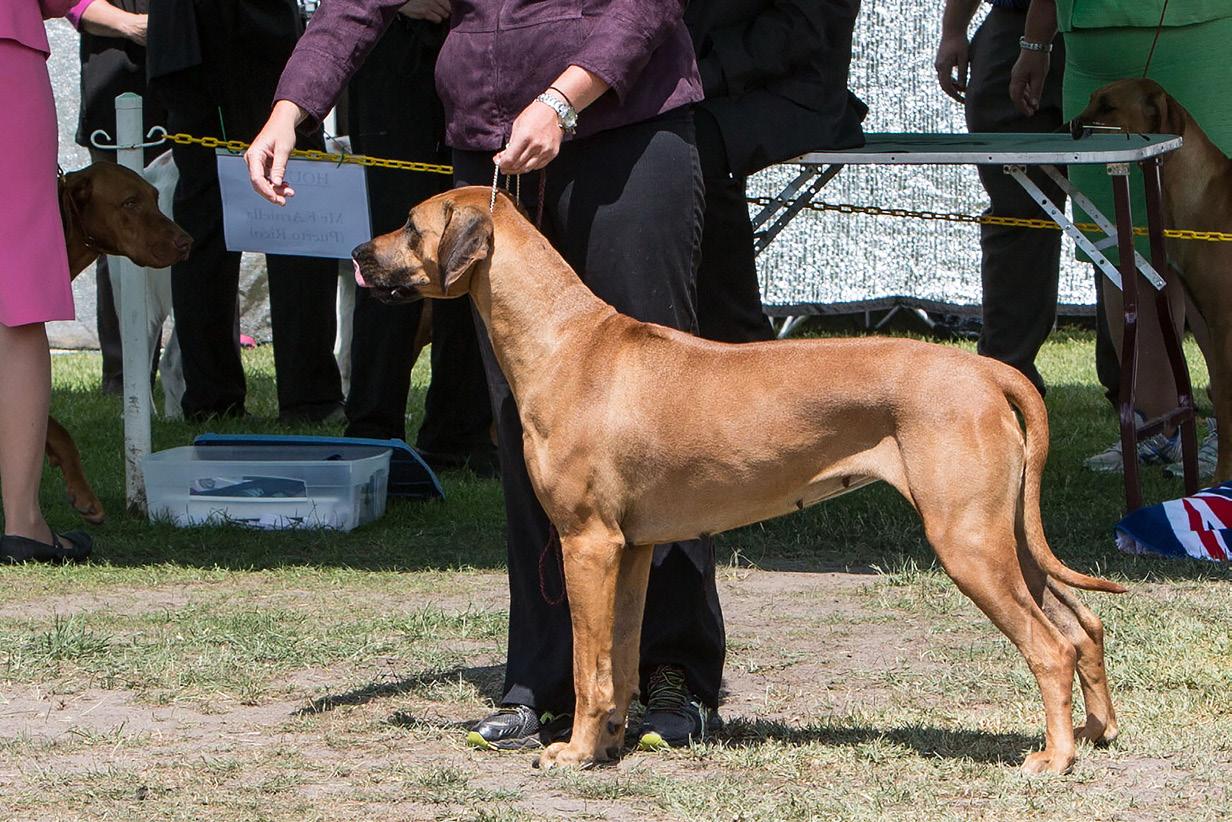
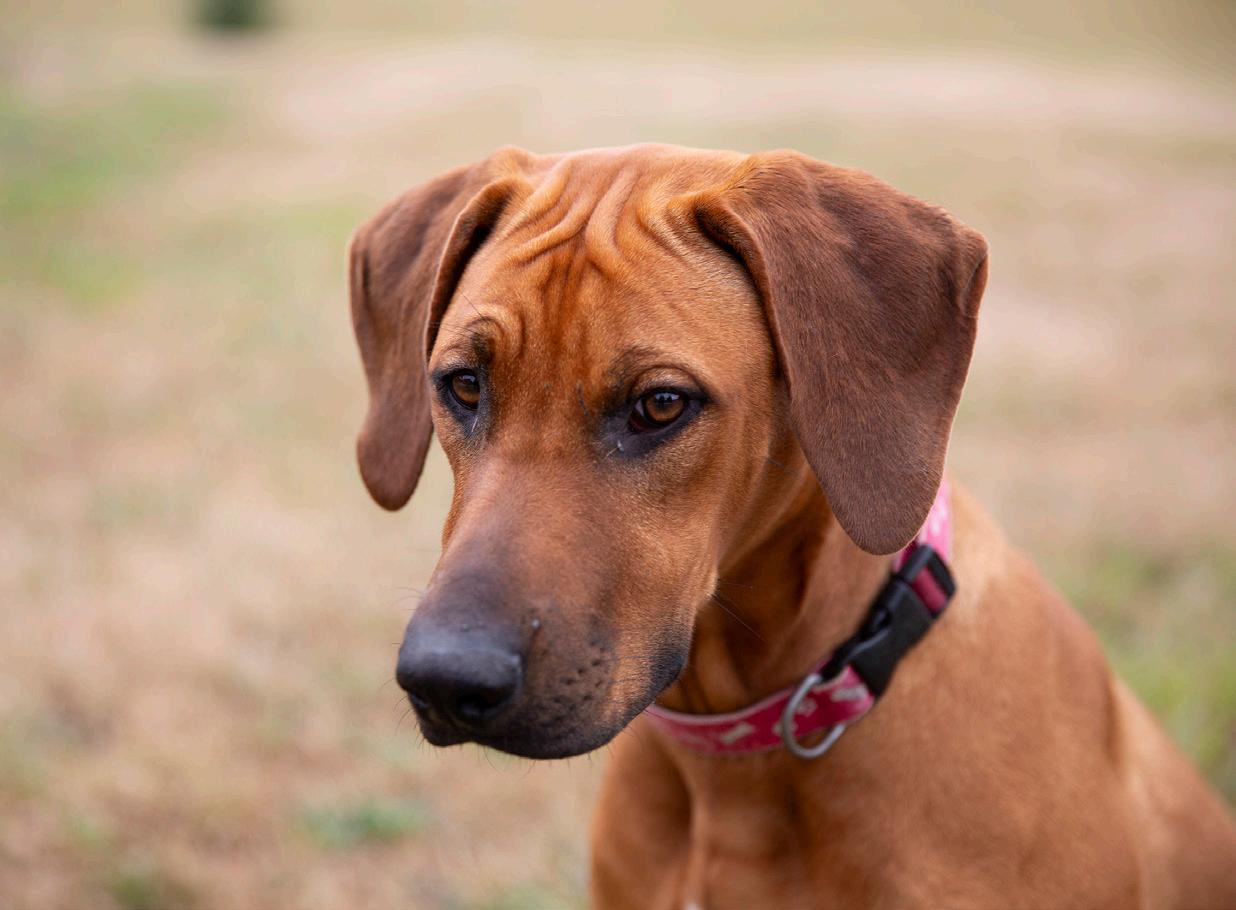
66 RHODESIAN RIDGEBACK EU MAGAZINE
BISS RUBIS Ch Ujamaa Pure Blonde (AI)- side, gait.
Ch Ujamaa Alessandra Facchinetti

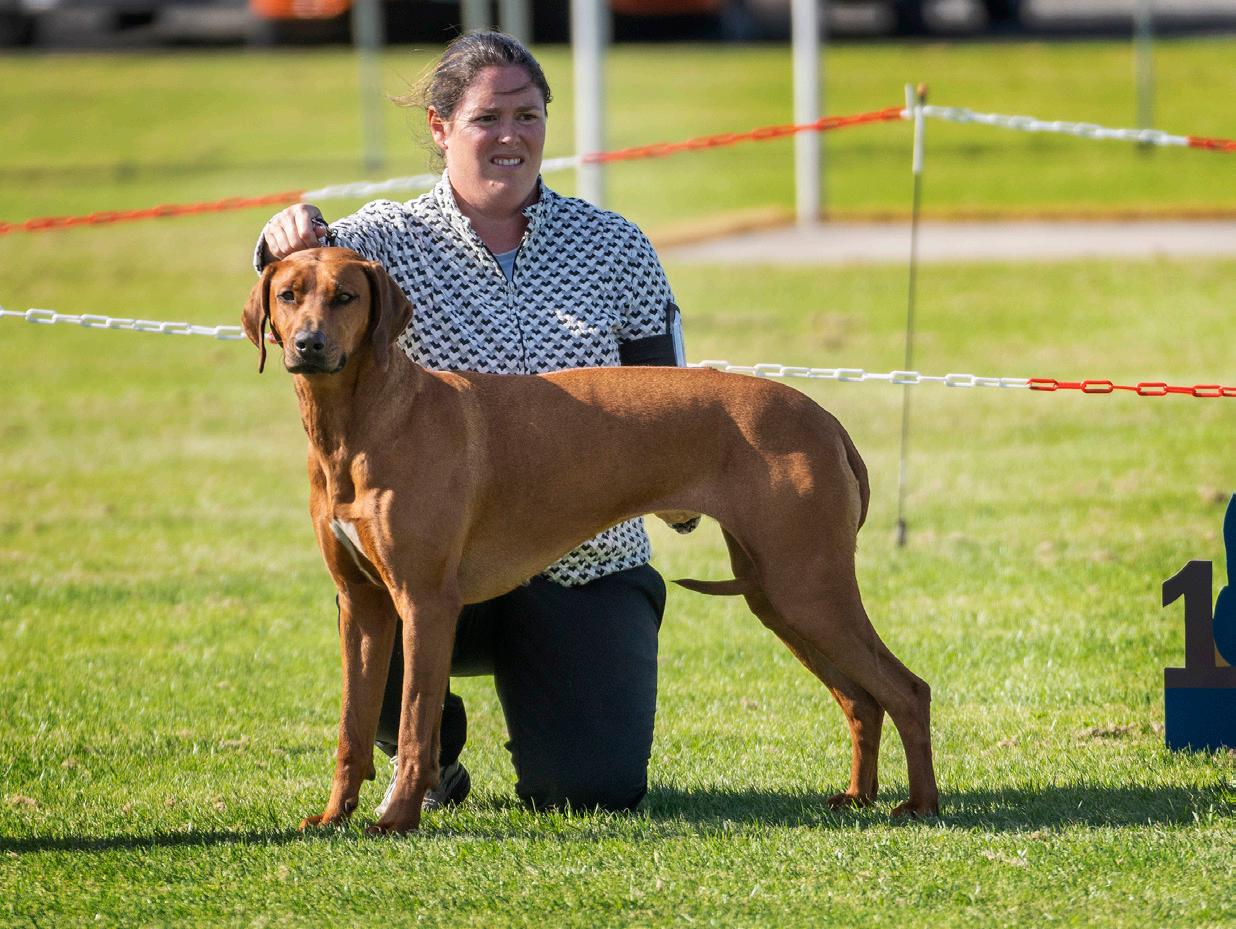
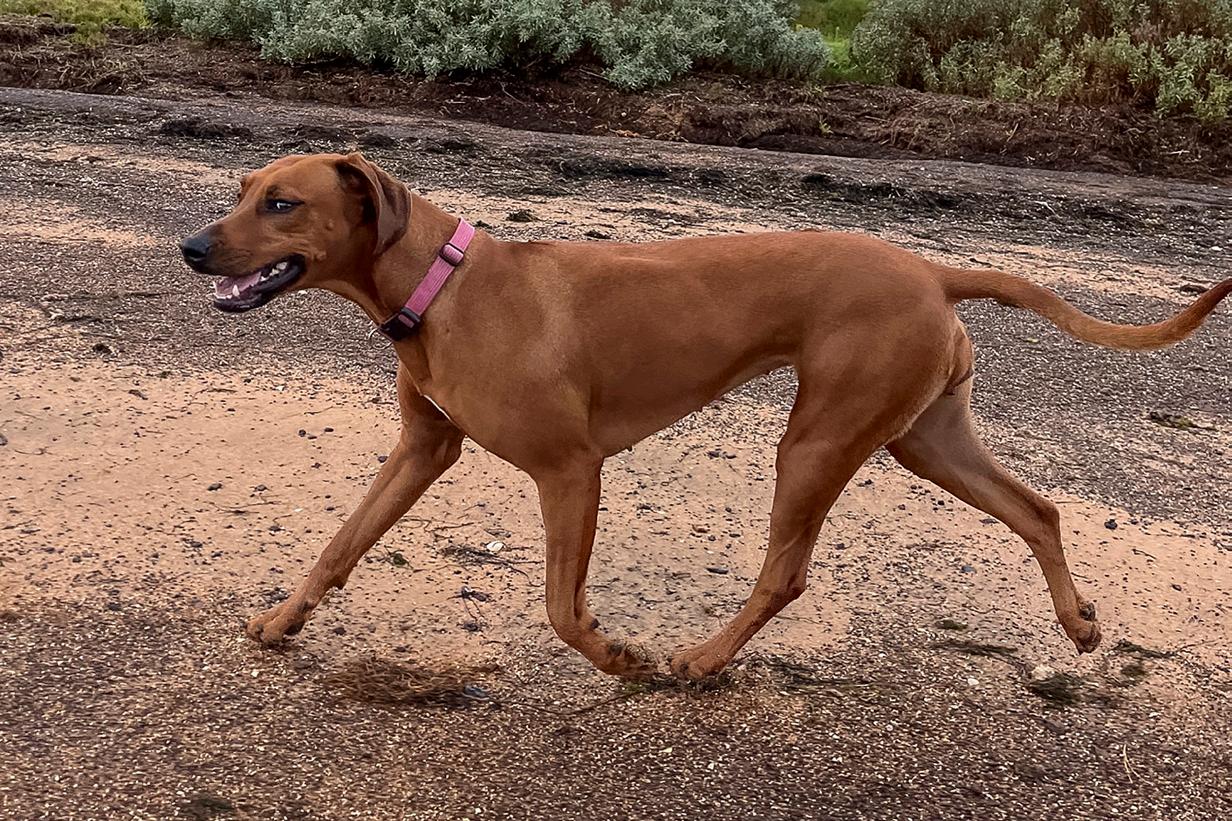
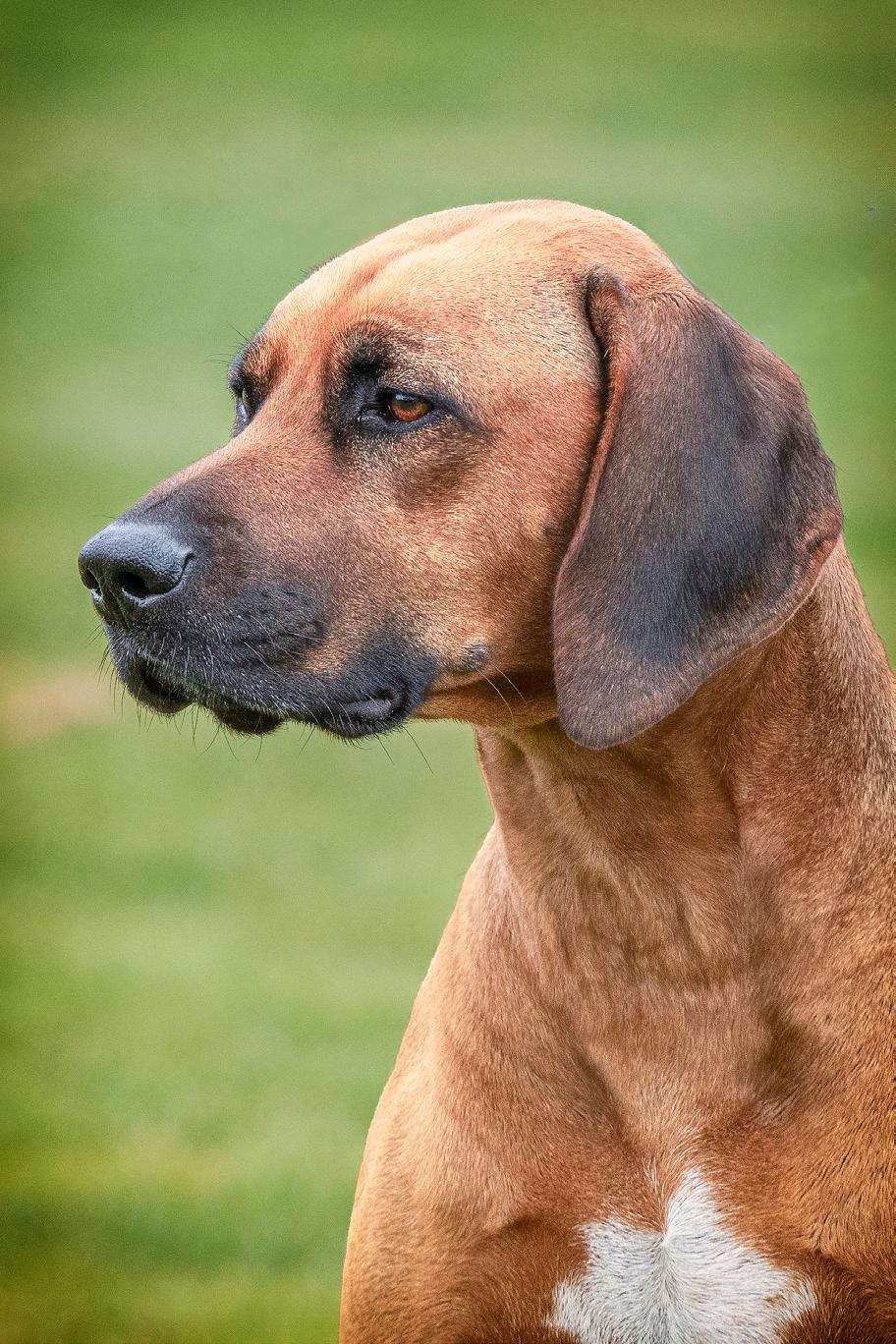
67
Ch Ujamaa Alessandra Facchinetti
Ujamaa Winx
INFO Name Vicki Moritz Country Australia Affix Ujamaa www rridgeback.net
Ujamaa Reds Swansong (AI)
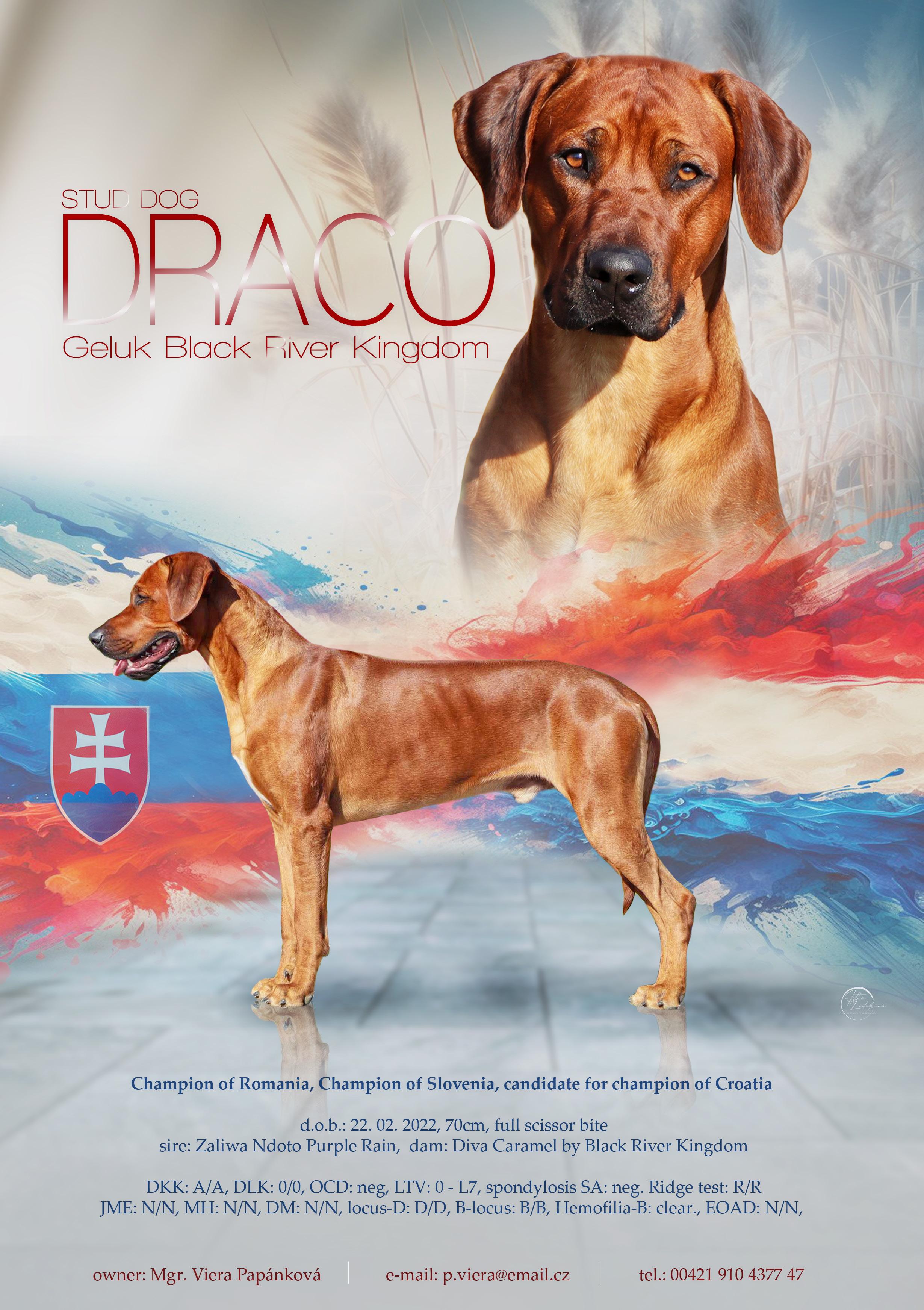


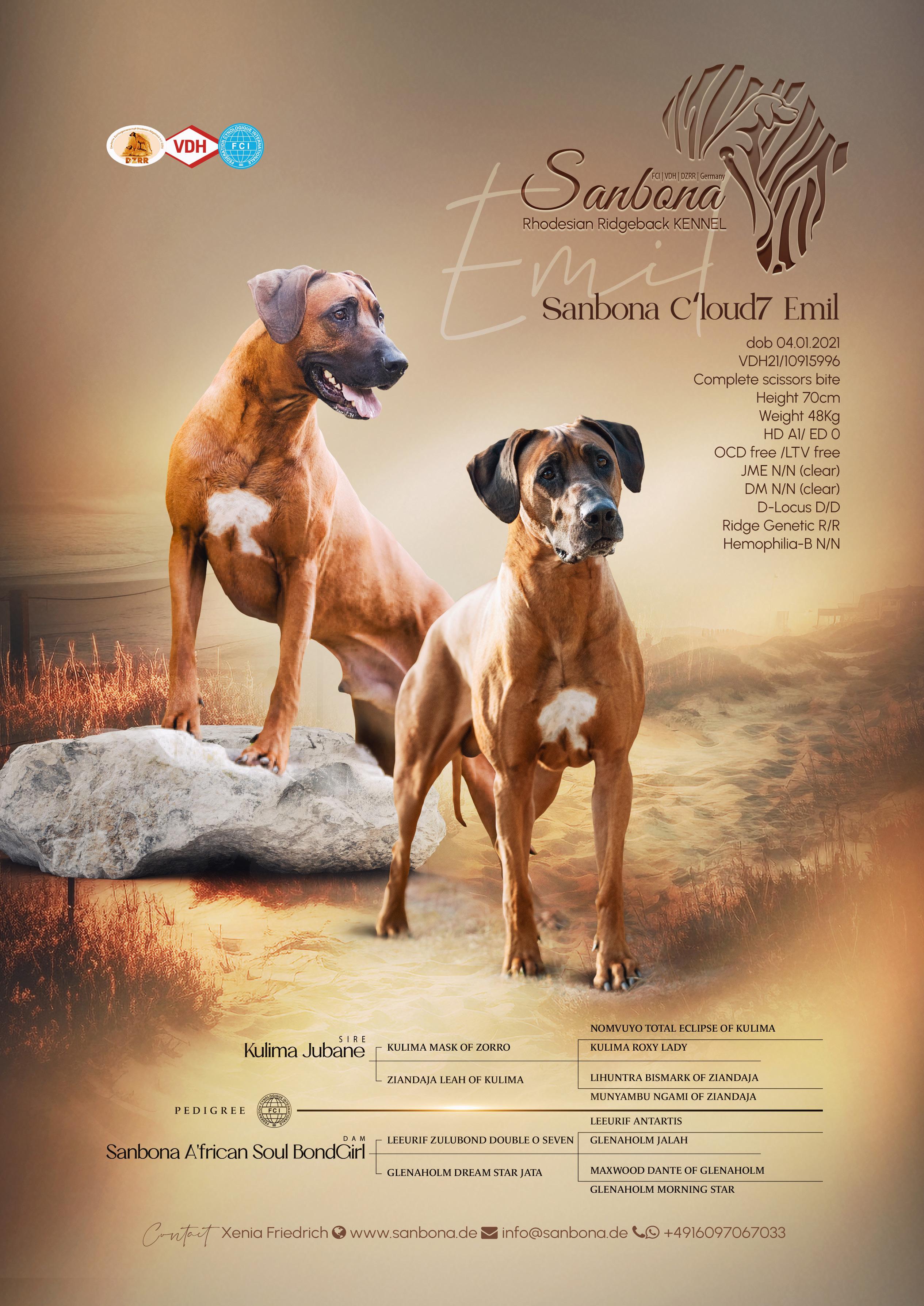

https://www.srrs.org
Written by Jessica Persson
RHODESIAN RIDGEBACKS IN SWEDEN
CELEBRATING 50 YEARS OF THE SWEDISH RHODESIAN RIDGEBACK CLUB
This year the Swedish Rhodesian Ridgeback Club celebrates its 50th anniversary. Since the club’s formation, many dogs and people have passed through, and each and every one owns a small part of the club’s story. Everyone that in various ways has contributed to the shaping of the club as we know it today, deserves our deepest gratitude. The time couldn’t be more appropriate to share the results of generations of dedicated work - for the Rhodesian Ridgeback.
Sweden is a relatively small country in terms of population, but in fact it’s the fifth largest country in Europe in terms of area (km²). From north to south, it stretches over 1,600 kilometers and from east to west, 500 kilometers. The country has approximately 10 million inhabitants, the majority of whom live in the central and southern parts of the country. The landscape varies from white beaches and cornfields in the south through coniferous forests in the central parts, to snowy mountain peaks in the north. And the weather? Very pleasant at its best and downright depressing at its worst.
THE JOURNEY BEGINS
As far as anyone knows, a Rhodesian Ridgeback set its paws on Swedish soil for the first time in 1936 when the bitch Brindledbitch (by Rhodian Riot and out of Rhodian Rattle) was imported from South Africa.
Over the next 25 years there were occasional imports into the country, but it wasn’t until some thirty years later that the breed was seriously introduced. In the early 60s, the air captain Bengt Florén imported the bitch Judy Of Endrich (bred by Mr J.D. Murray) and the male Golden Glory (bred by Mr. Armand Denis), both from Kenya. These two imports became the parents of the first Swedish litter, born on December 11, 1963, consisting of three males and five females.
RHODESIAN RIDGEBACK EU MAGAZINE 73
Initially, breeding was carried out on a limited scale, and the exchange of dogs took place mainly with Norway, and to some extent England and Australia, that were exempted from the quarantine regulations at the time. During the early 1990s, the interest in the breed increased in Sweden. In connection with the easing of the quarantine regulations in 1994, the number of imports increased, as did the breeding exchange with other European countries and North America.
THE SWEDISH BREED CLUB
The Swedish breed club was formed in 1974 by a small group of breed enthusiasts. In 1978, the association became affiliated with the Swedish Kennel Club and was later named “Swedish Rhodesian Ridgeback Association”, abbreviated SRRS in Swedish.
The SRRS is an interest organization for the Rhodesian Ridgeback, where all owners and breeders are welcome and of equal worth. Effectively the members are the SRRS! The club currently consists of approximately 1,500 members, including the vast majority of the breeders.
The SRRS of today rests on the foundation that an inclusive atmosphere, where we treat each other with respect and everyone has the right to express their opinion, is the best way to reach and continuously educate dog owners and breeders, for the well-being of both the dogs and the breed as a whole.
The club is governed by a central board consisting of one chairman, six board members and four board alternates, elected democratically at the annual General Meeting. The board’s work and decisions are transparent to the members, for instance all board minutes since 2002 are available via the SRRS’ website. As the members of the board cannot be experts in all the areas of responsibility, there are three committees with del-

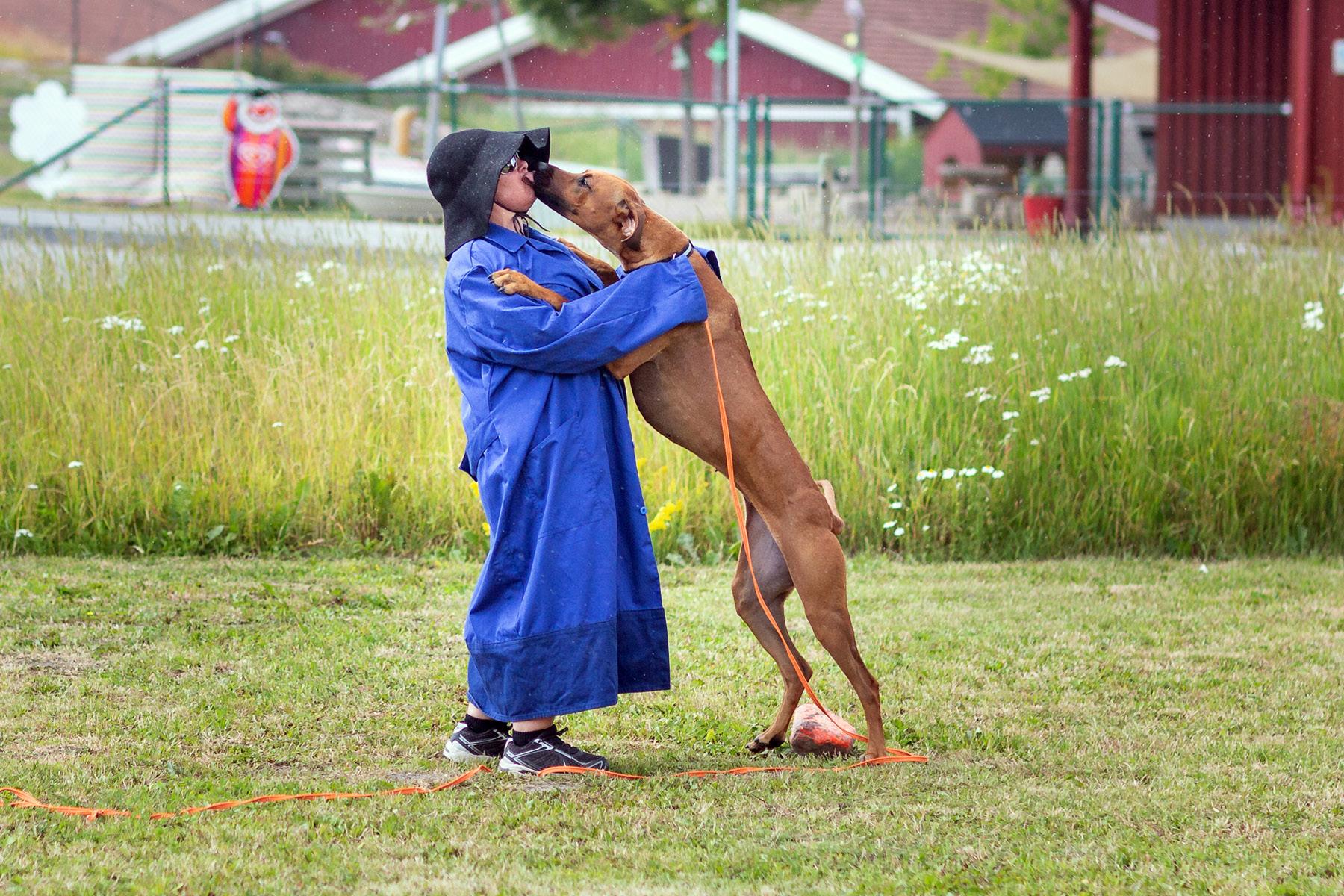
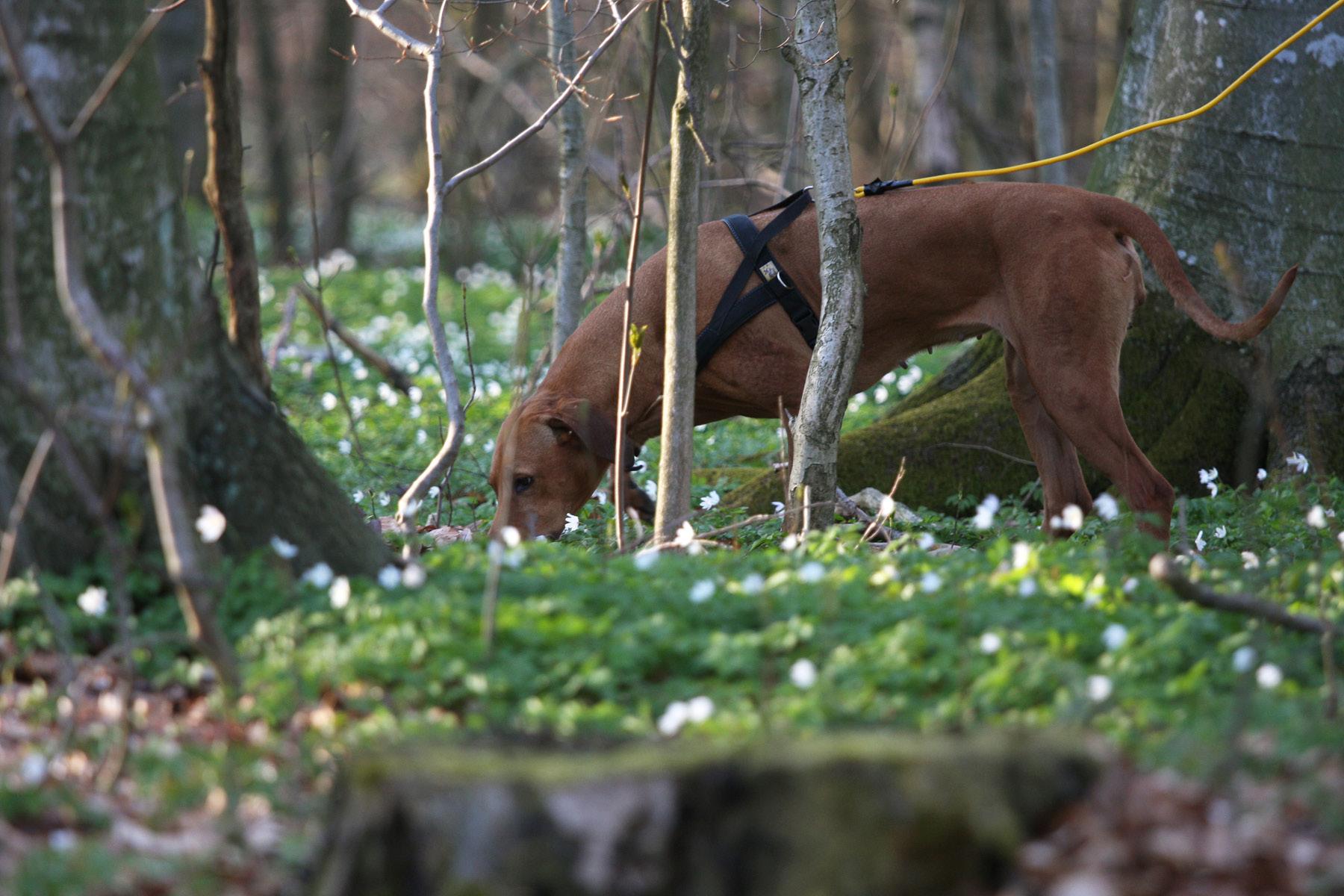
74 RHODESIAN RIDGEBACK EU MAGAZINE
The bitch Judy Of Endrich with the first Swedish litter born in 1963.
In Behavior and Personality Assessment (BPH), the part called “Approaching person” measures the dog’s reaction when meeting an unknown person who, from the dog’s perspective, acts in an deviant way. Photo by Jenny Jurnelius
Many ridgeback owners find blood tracking to be an excellent way of giving their dog mental stimulation. Photo by Fredrik Santander
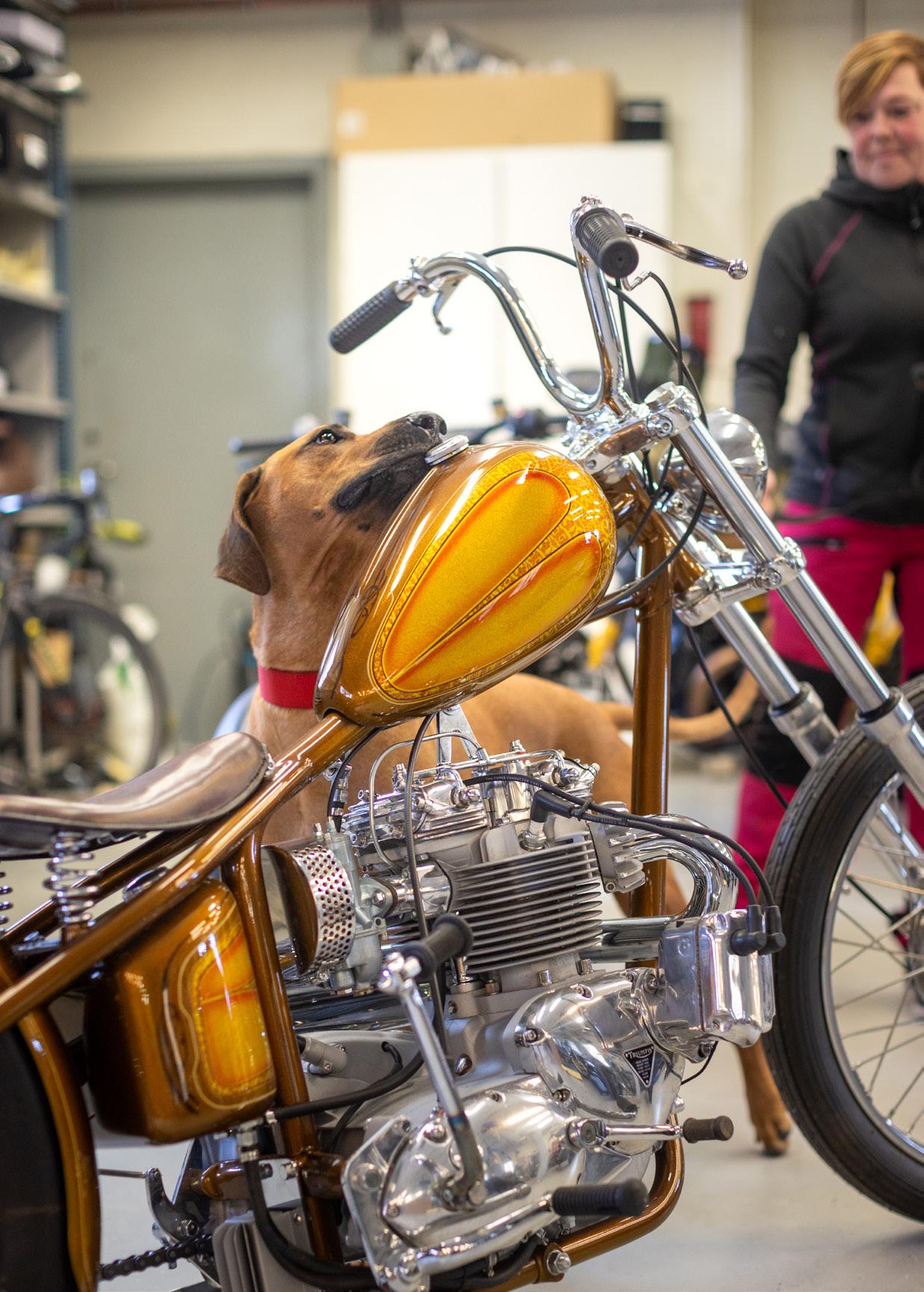
egated operational responsibility for “Breeding and Health”, “Mentality” and “Competition and Exhibition”.
Members of the club receive the SRRS’ printed magazine “Ridgeback-Nytt” four times a year, which is much appreciated. They also have the opportunity to participate in various events organized by the club and to take advantage of various membership benefits. And perhaps most importantly, they have the opportunity to influence and address different issues of interest within the club.
Due to the geographical distances in the country, the club is divided into four local branches; South, East, West and North. As a member, you automatically belong to the local branch closest to where you live. Each local branch has its own local board (also democratically elected), which is responsible for organizing various events and activities, both physical and digital, for the members and dogs within the area.
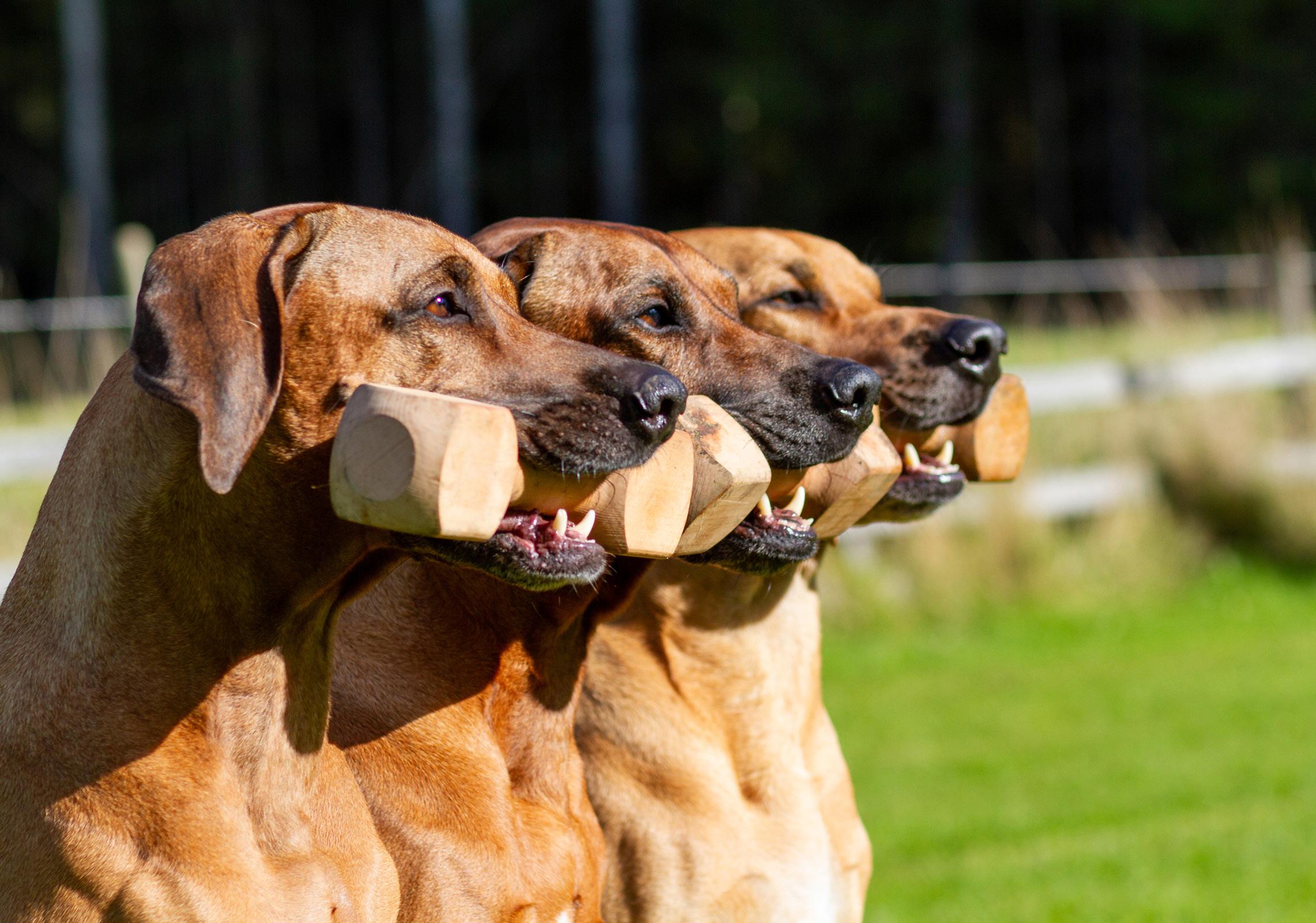
RHODESIAN RIDGEBACK EU MAGAZINE 75
Nose Work is a growing sport in Sweden which attracts many ridgeback owners. Photo by Jenny Jurnelius
Obedience training with a Rhodesian Ridgeback could be challenging but is great fun. Photo by Jenny Jurnelius
To ensure that the club is appreciated by the majority of its members, a digital member survey is conducted every five years. Here the members can anonymously convey, for example, things of value for continued membership, what type of events that are of most interest and which communication channels that are primarily used to stay up to date. Of course, the survey also gives members the opportunity to come up with suggestions on how the club’s work could be improved. The survey measures the loyalty according to the Net Promoter Score method (NPS), on a scale from -100 to 100. When the last survey was conducted in 2020, the club received an NPS of 30, which is to be considered very high.
Although the SRRS actively aims to be a highly valued club by its members, the primary mission is to work to preserve the Rhodesian Ridgeback breed in terms of health, conformation and behavioral traits – both today and for the future.
REGISTRATIONS
On average, approximately 350 Rhodesian Ridgebacks are registered in Sweden per year. The percentage of unregistered Ridgebacks is very low, below 5 % according to insurance statistics, and the number of Ridgebacks in shelters is practically non-existent.
As the SRRS is affiliated with the Swedish Kennel Club, breeders within SRRS are obliged to follow the KC’s regulations for breeding and registration of dogs. However, the Swedish KC’s breeding regulations cover all breeds, with different conditions and considerations that need to be made, and therefore these general requirements are quite low.
BREEDING
Joint Breeding Strategies
As a complement to the Swedish KC’s regulations, each breed club is (since 2001) obliged to provide breeding strategies,
called “RAS”, for the specific breed. RAS is a document that presents a plan for how breeding should be conducted in order to be long-term sustainable and strive towards the overall goal that all dogs bred by Swedish breeders should be healthy and functional in all aspects.
Every five years, the breeding strategies are revised, which takes place in collaboration between the SRRS’ Breeding Committee and all breeders and members who want to participate. The most recent revision was launched in 2023 and the working process included, among other things, several digital workshops with lectures and group discussions as well as surveys answered both collectively and individually.
The breeding strategies include a description of the current situation within the Swedish breed population in terms of breeding structure, health, behavior, usability traits and exterior. Based on the current situation, joint goals for the next five-year period are defined as well as action plans that specify what the breeders and the club should do to achieve the goals. In addition to the joint goals, each breeder can of course have more extensive goals with their own breeding, but the individual breeding goals should never conflict with the common ones.
As part of the action plans, there are breeding recommendations that breeders and stud dog owners should follow when breeding. These are not requirements for puppy registrations, but since all breeders have had the opportunity to have their say, the requirements are expected to be followed.
In order to increase compliance with the breeding recommendations, some of them are defined as requirements if a litter is to be published on the SRRS’ puppy referral list. In summary, these requirements promote the use of as many healthy dogs as possible in breeding and to limit the loss of genetic diversity.
Goal completion and compliance with the action plans is annually followed up by the club and the result is published on the SRRS’ website.
Breeding Register
SRRS has its own breeding register which contains information of all litters born in Sweden since the first litter in 1963. The information reported is for instance the number of born puppies, stillborn puppies, deceased puppies and registered puppies as well as gender distribution. The breeders also report type of fertilization (natural or AI), how the whelping was carried out (normal, with complications or c-section) as well as the presence of any deviations or cosmetic flaws such as dermoid sinus, ridgelessness, ridge faults, kinked tails, umbilical hernias, bite defects, faulty colors and other information that may be valuable for future breeding.
The accuracy of the register is largely based on the truthfulness of the breeders, which the SRRS assesses as very high in this context. Most breeders are aware that physical or exterior deviations and health problems occur in all blood lines, and that reporting is important in order to be able to statistically follow the prevalence over time.
Several breeders and dog owners also report genetic test results and health issues that affect the dogs after they leave the breeder, so that future breeding combinations can be avoided where both parents have close relatives with the same disease with polygenic inheritance (e.g. allergies, tumor diseases, idiopathic epilepsy, SLO, hypothyroidism, etc). All members of SRRS have access to information from the register on request. This is most likely a unique collection of information which is of great value to anyone striving to breed healthy dogs.
76 RHODESIAN RIDGEBACK EU MAGAZINE
Sustainable Breeding
Today, almost a hundred years after the studbook closed, followed by a very narrow breeding selection, one of our biggest challenges is to preserve the genetic diversity that remains. Genetic diversity is vital for the adaptability and survivability of the population. A decrease in genetic diversity increases the risks of hereditary diseases, immune deficiency and infertility. When there is a lack of genetic diversity in a population, it is extremely difficult to come to terms with health issues and other undesirable traits that occur within the breed. It is simply not possible to make appropriate breeding selections if all individuals carry the same gene variant for a certain characteristic.
The fact that a breed consists of many individuals does not guarantee a broad gene pool with many unrelated dogs and bloodlines available for breeding. In Sweden, more than 40 % of the litters have at least one parent born in another country. Unfortunately, this doesn’t significantly contribute to genetic diversity, as most of these individuals still have the same dogs in their pedigrees, just a few generations back.
Being a responsible breeder, which is not necessarily the same as a reputable one, is not easy. When selecting the parents of a litter, we must consider a number of equally important aspects such as, maintaining genetic diversity in the breed as well as the possibility of good health, mentality and conformation in the progeny. To succeed, it is required that as many healthy dogs as possible are available and included in breeding and that individual dogs or family groups are not overrepresented.
To enable this, SRRS’ current breeding strategies support actions such as:
No show result is required for breeding animals as it automatically excludes all physically and mentally healthy dogs that for different reasons do not attend dog shows.
Ridgeless dogs with genotype r/r may be included in breeding, provided they are bred to ridged dogs with genotype R/R. Since the ridge is a dominant trait, this will not result in more ridgeless dogs being born, but rather fewer. However, the SRRS advise against using ridgeless heterozygotes (R/r) in breeding, as an unknown factor in their genetic makeup prevents the ridge from being expressed. Until the cause is identified, deliberate propagation of this trait within the population is avoided, out of respect for the breed standard.
• No dog (male or female) should be neutered except for the purpose of alleviating or curing illness, as neutering reduces the gene pool and limits the ability to preserve genetic diversity. Neutering, especially at younger age, may also have several negative effects on both health and behavior.
• Dogs with HD grade C may be included in breeding under certain conditions. More about this can be read later in the article.
Implementation of mean kinship to identify individuals who are less related to the rest of the population by ancestry and thereby have a higher genetic breeding value (provided they are not overused).
Each individual breeding animal should not have more than 40 progeny or 80 grand progeny in Sweden. The number is based on the current population size in the country.
Breeding animals should be at least 30 months of age at the time of mating, with a preference for delaying breeding until 36 months (3 years) and preferably even later. This approach increases the generation interval, which in turn is slowing the loss of genetic diversity. Delaying the breeding debut also gives us access to more information about the breeding animals and their relatives when making a breeding combination (for example regarding health and mentality).
The above actions are based on available research and/or extensive statistics on the Swedish Rhodesian Ridgeback population over several decades. As a breed club and as breeders, it is our duty to continuously evaluate whether our requirements and actions have the desired effects within a foreseeable time. If this is not the case, it is our responsibility to change them.
HEALTH
Annual Health Surveys
The SRRS’ Breeding Committee annually sends out a comprehensive digital health survey to the owners whose dogs turned three and eight years.
The purpose of the health survey is to follow trends regarding the prevalence of various health problems within the population and, if necessary, be able to take appropriate preventive actions. The intention is not to identify health problems in individual dogs or litters and therefore the survey can be answered anonymously. The results of the surveys are available to everyone via the SRRS website.
Insurance Statistics
Veterinary care in Sweden is nowadays extremely expensive in consequence of the market, since around 2010, being dominated by two large veterinary corporations, both owned by investment companies. For example, the price of a caesarean section is somewhere between € 4000 - 7000 (it’s no typo!) depending on the time of the day and the clinic’s geographic location. For this obvious reason, almost all Swedish dogs are insured.
The only positive side effect of this “veterinary care madness” is probably that we through reli-
RHODESIAN RIDGEBACK EU MAGAZINE 77
able insurance statistics, as complement to the health surveys, can get a more complete picture of which health problems that are most common within the Swedish Ridgeback population. The insurance statistics are available to everyone via the SRRS website.
Most Common Health Problems
The health surveys and the insurance statistics consistently show that the most common reasons why our dogs need veterinary care are injuries (trauma), ear problems, intestinal problems, skin problems, skin and mammary tumors, back problems and problems with the reproductive organs (mainly males) and urinary tract.
The most common reasons for dogs being euthanized before the age of ten are tumor diseases such as osteosarcoma, lymphosarcoma, lung tumors (malignant mammary tumors often metastasize to the lungs) and tumors in blood/vessels. This does not mean that a large number of individuals are affected, merely that these diseases most often lead to the affected dogs having to be put down.
As most of the current Swedish population shares ancestry with dogs from several other parts of Europe, there is no reason to believe the prevalence only applies locally, in Sweden.
Several of the above mentioned diseases are caused by genetic factors, and are thus hereditary, but the inheritance is polygenic (depends on several genes in combination) and can also be influenced by environmental factors. Although the pattern of inheritance is unknown, prevalence can still, to some extent, be influenced by informed selection of breeding animals and breeding combinations, provided there is still sufficient genetic diversity within the breed. And since diseases run in all families, there must be many dogs available for breeding in order to avoid homozygosity (two identical copies of the same gene) in the progeny.
Health Scheme for Hip and Elbow Dysplasia
Since 1986 the Rhodesian Ridgeback is part of the Swedish KC’s health scheme for hip joints and since 2001 also for elbow joints. In Sweden a health scheme means that the examination and assessment are carried out according to standardized procedures and that the result is registered by the Swedish KC and published on their website, hence available to anyone. Regarding HD and ED, all x-rays, for all breeds, are assessed by one of the three specially trained veterinarians working for the Swedish KC.
The health scheme for Rhodesian Ridgebacks requires that dogs used in breeding must have an officially registered HD and ED status before mating. However, the SRRS recommends that all Rhodesian Ridgebacks are x-rayed on hips and elbows and officially graded by the Swedish KC, regardless of the dog being a potential breeding dog or not. This as HD and ED are polygenically inherited traits and the results of the relatives
must be considered when breeding to achieve progress.
Since 2000, over 60 % of all registered Swedish Rhodesian Ridgeback have been x-rayed on both hips and elbows, which has been carried out voluntarily by the dog owners. The main contributory reason for the high percentage of x-rayed dogs is probably that many breeders explain the value of x-rays to their puppy buyers already before purchasing their puppy. In addition, the SRRS is continuously informing about the HD and ED x-rays in various channels such as the website and an information folder that is sent out to all new members via snail mail.
Although the Swedish KC doesn’t require breeding animals to have hips graded A or B, this has been a strong recommendation from the SRRS, and the compliance has been very high. Between 1990 and 2022, only 11 (!) of all registered litters have had one parent with another HD status than A or B, and the majority of these have been unintentional matings.
In connection with the latest revision of the Breeding Strategies, it was decided that the SRRS should support that a dog scored HD grade C in Sweden may be used in breeding under certain conditions, in order to preserve as much genetic diversity as possible. Does this mean that Swedish breeders will use unhealthy dogs in breeding? No, it does not. Dogs with clinical symptoms of illness or pain should never be used in breeding, regardless of their HD grade.
A Swedish study of the relationship between x-ray results and clinical problems (Malm et al., 2010) shows that the risk of veterinary care or euthanasia related to hip joint problems is approximately equally low for dogs with HD grades A, B and C. For dogs with grades D and E there is an increased risk, however, the risk varies between breeds.
SRRS’ health surveys indicate that the prevalence of hip joint-related problems in the Swedish population is very low. Of the eight-year-old dogs born 2010–2014 only 0.01 % have been reported to need veterinary care related to the hip joints. Of these dogs, a couple have been x-rayed with HD grade A. The very low prevalence of clinical hip joint problems in the Swedish population is equally supported by the insurance statistics.
In addition, there are multiple examples of dogs scored HD grade C in Sweden who received a better grade when the same radiographs were scored abroad (for example in Australia, England, Germany and Russia). This indicates that there are differences in terms of examination and/or evaluation procedures in different countries, both within and outside the FCI.
All in all, the above suggests that it cannot be considered reasonable to exclude Swedish healthy dogs, with a very low risk of developing clinical problems, from breeding. Therefore, the following is now recommended:
78 RHODESIAN RIDGEBACK EU MAGAZINE
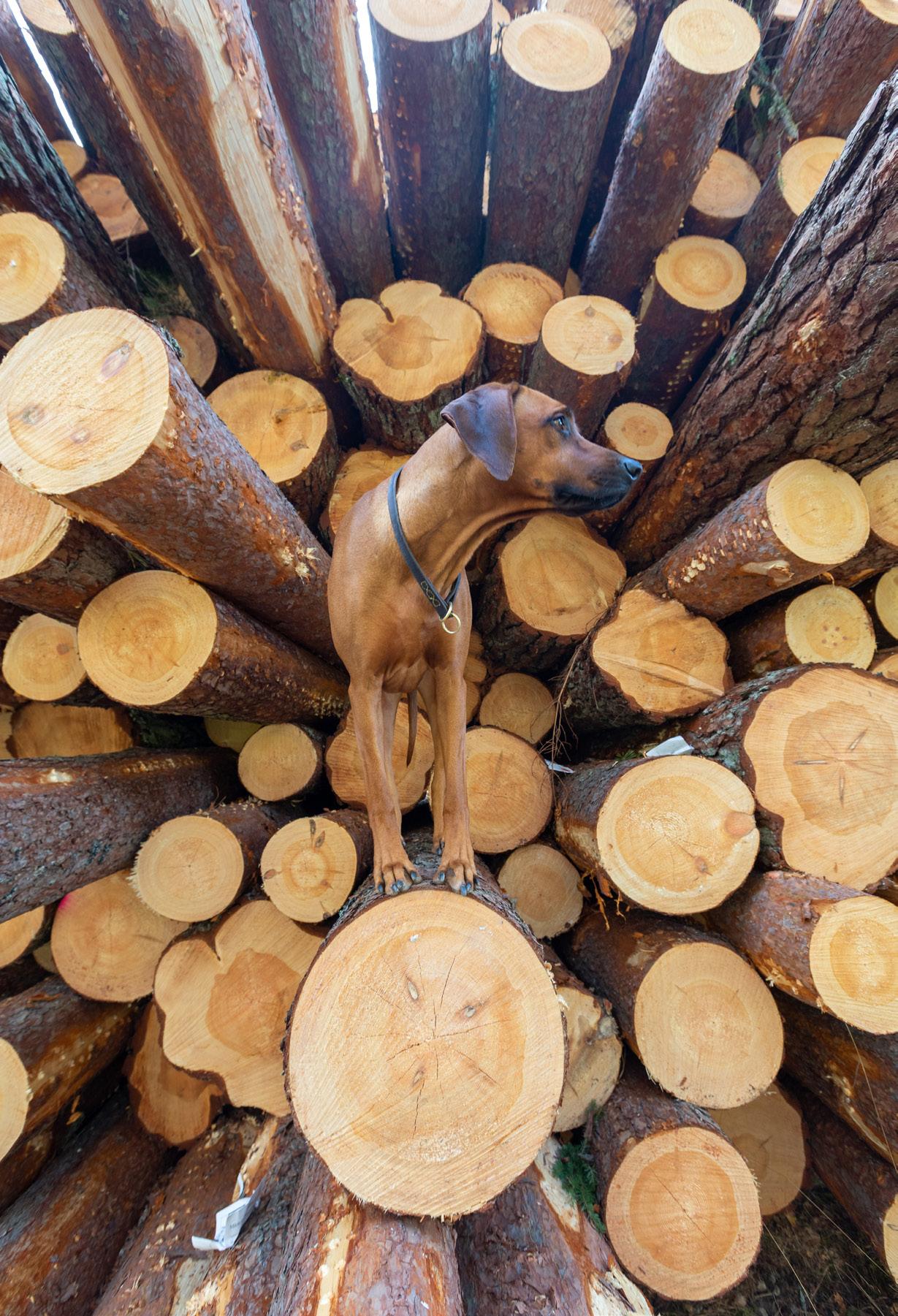
Breeding animals should have HD grade A, B, C or equivalent.
Breeding animals with HD grade C should: have the x-ray results scored in Sweden.
• be combined with a dog that is scored with HD grade A in Sweden.
• have a maximum of 20 progeny or two litters if the litter size exceeds 8 puppies.
have known HD status for at least 75 % of the progeny before remating.
Health Scheme for Spine Malformities
Based on available data, it would probably be much more beneficial for our dogs’ clinical health to x-ray their backs since both health surveys and insurance statistics indicate that back problems occur within the breed. A recently published Norwegian study (Berg et al., 2024) also identifies the Rhodesian Ridgeback as one of the breeds with the highest prevalence of Lumbosacral Transitional Vertebra (LTV).
Unfortunately, the Swedish KC currently does not provide a health scheme for the spine (except for Intervertebral Disc Disease, IVDD, in Dachshunds). One of the action plans in the new breeding strategies is that the SRRS should urge that the Swedish KC introduce a health program for LTV, Vertebral Anomaly (VA) and Spondylosis (SP), corresponding to the one in our neighboring country Finland, and that this health program should be introduced for the Rhodesian Ridgeback. If granted by the Swedish KC, it will likely take some time for them to implement standardized x-ray and evaluation routines, but we are currently hopeful of having access to a Swedish health scheme within a couple of years.
MENTALITY
In addition to health, the mentality and personality of our dogs is probably what is most valued by dog owners, regardless of whether the dog is intended for companionship or for work. Ironically, breeding for the Rhodesian Ridgebacks’ desirable mental characteristics has many times throughout history been subordinated to their exterior qualities, and perhaps still is in several parts of the world?
Long History of Mentality Assessments
In Sweden, there is a long tradition of mentality assessment of Rhodesian Ridgebacks, and not only the dogs that will potentially be used in breeding, but entire litters.
Since the late 1990s and up until about 2015, approximately 2,300 Rhodesian Ridgebacks have attended the assessment known as the “Dog Mentality Assessment” (MH).
As the MH primarily was developed for working breeds, the Swedish KC, in collaboration with scientists from the Swedish University of Agricultural Sciences (SLU), developed a more general assessment called “Behavior and Personality Assess-
RHODESIAN RIDGEBACK EU MAGAZINE 79
Photo by Jenny Jurnelius
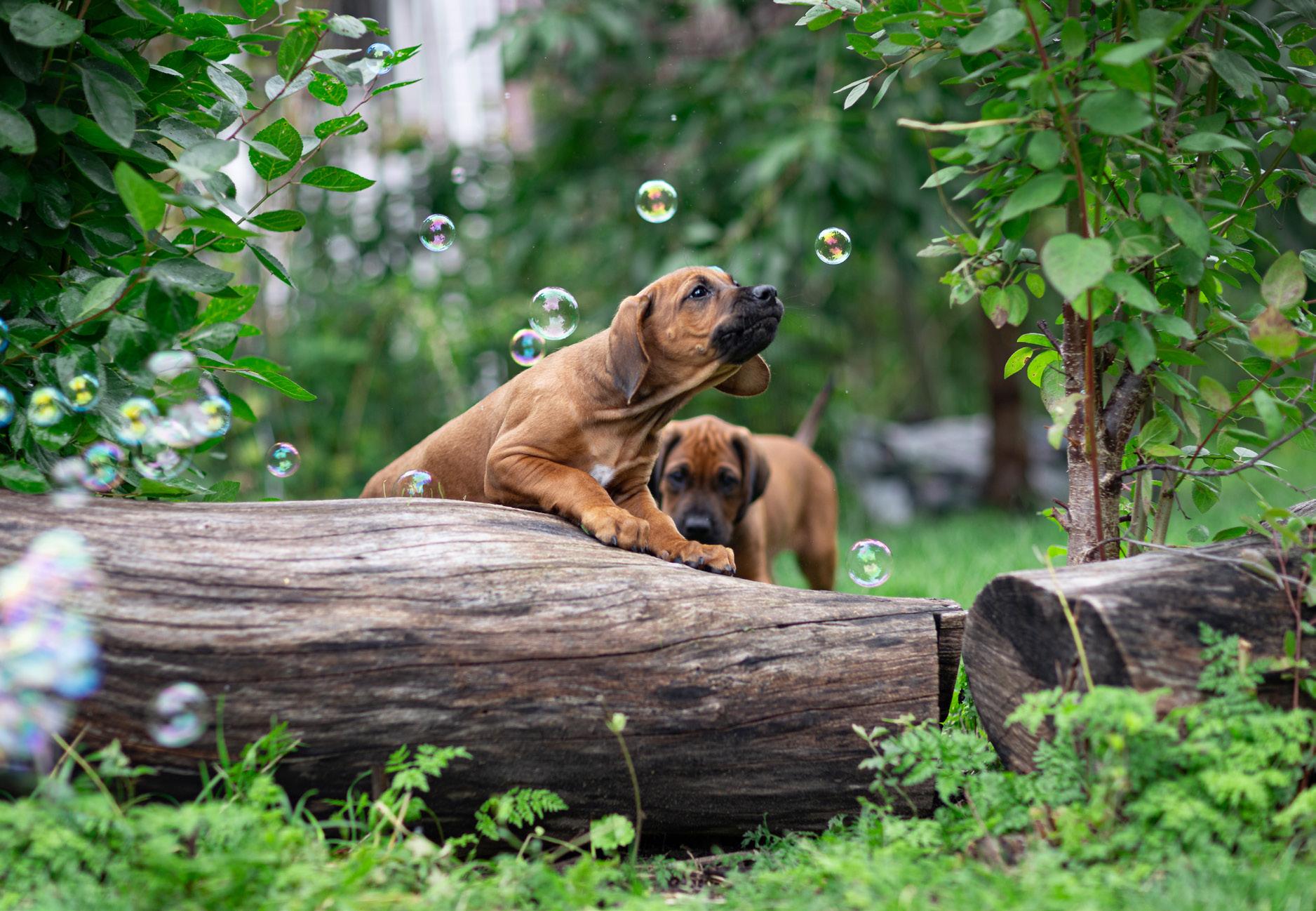
ment” (BPH), which was launched in 2012. BPH is in many respects very similar to the MH but focuses on the everyday behaviors of dogs and is better suited to all breeds, including non-working breeds.
Since BPH was launched, approximately 1,700 Swedish Rhodesian Ridgebacks have attended the assessment. Since 2015, an average of 50 % of all Swedish Rhodesian Ridgebacks have been assessed, making it the breed (of slightly larger numbers) with the largest proportion of participating dogs. This makes us very proud, and more importantly, it gives us excellent evidence in the event of a “dangerous breeds” debate whether the Rhodesian Ridgeback can be considered a risk.
Behavior and Personality Assessment
The BPH is standardized and thereby carried out in exactly the same way for all breeds, in order to identify behavioral differences both between breeds and between individuals within the same breed.
The assessment takes approximately 45 minutes and consists of eight parts; Unfamiliar person, Object play, Food interest, Visual surprise, Metallic noise, Approaching person, Unstable surface and Gunshots. For those who want to know more about how the various parts are performed, there is a film at https://youtu.be/Ip5LfESucME
An observer documents the dog’s reactions in a standardized protocol, all in all more than 240
observations are made during the assessment. The dog’s reactions are not valued in any way, and there are no points awarded, the observer just documents how and to what degree the dog acts in the different situations. The BPH result is published on the Swedish KC’s website and is available to anyone.
The observer and the test leader (the one who is interacting with the dog during the assessment) are educated by the Swedish KC. At annual conferences, mandatory for all observers, it is ensured that the dogs’ reactions are interpreted in a consistent manner. The BPH is also validated by the dog owners answering a questionnaire (C-BARQ) about how their dogs act in different everyday situations, and this way it is continuously ensured that BPH describes the behaviors as intended.
Of course, BPH doesn’t give the whole picture of a dog’s personality, but it does provide information on the behavior traits covered by the assessment. These are:
• Sociability describes how social the dog is towards unknown people. This includes the tendency to initiate contact, how eagerly and how long it greets and the degree of submissiveness.
Play interest describes the dog’s interest in playing with people and objects (both its own favorite object and a standardized BPH object) as well as the dog’s general attitude when playing.
80 RHODESIAN RIDGEBACK EU MAGAZINE
Photo by Jenny Jurnelius
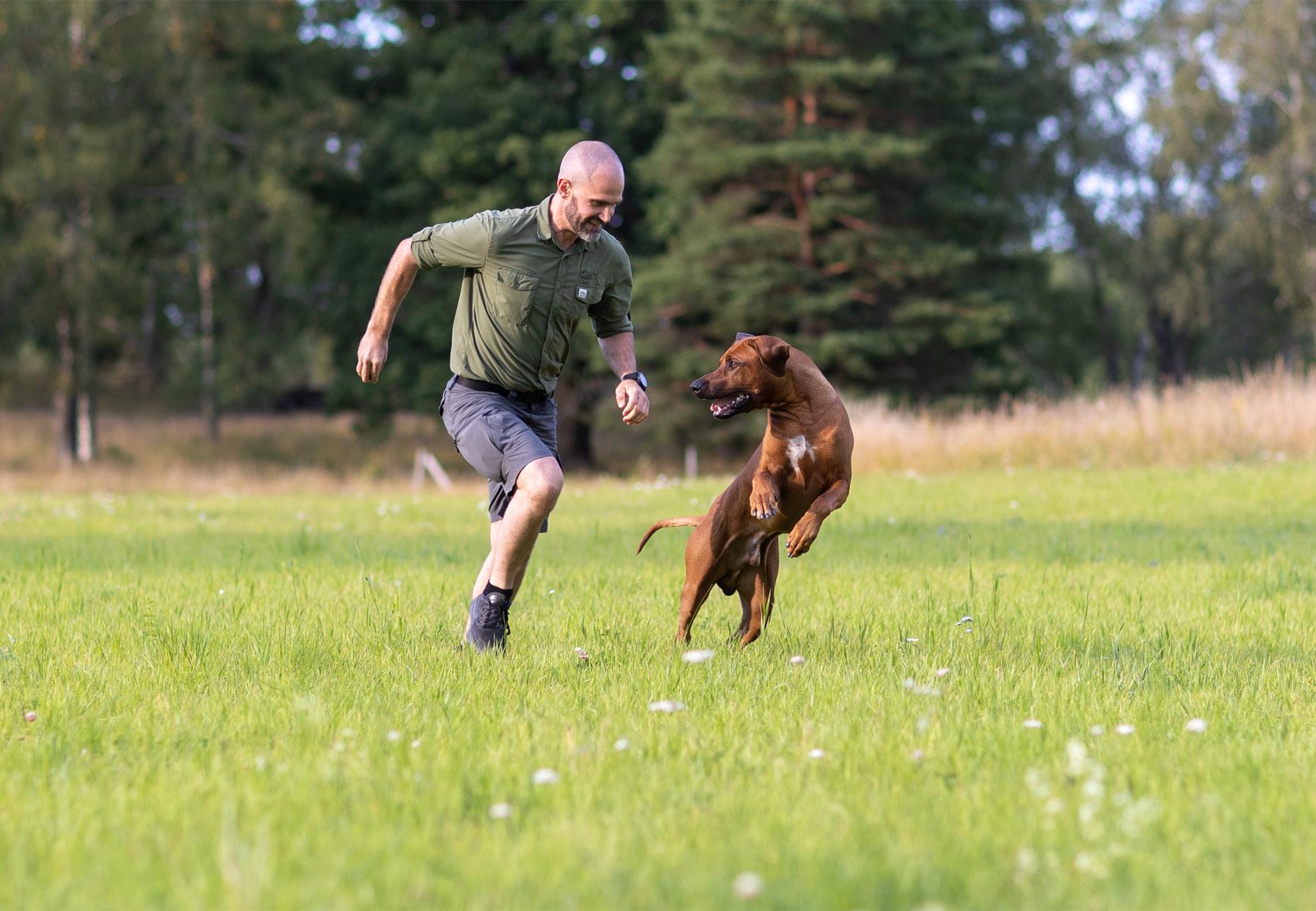
Food interest describes how willing the dog is to work to get treats (both of its own favorite kind and a standardized kind), its general interest in food and also the dog’s persistence in solving a problem.
Owner contact describes the dog’s tendency to keep or initiate contact with its owner for play or for help to solve a problem.
Curiosity describes the dog’s willingness to explore objects and surroundings.
• Fear and insecurity describes the dog’s efforts to get away from someone or something that the dog perceives as unpleasant.
Aggression or threat behavior describes the dog’s efforts to make someone or something that the dog perceives as unpleasant to stop or disappear.
What kind of reactions the various stimuli in the BPH situation elicit in a certain dog depends on that dog’s personality and behavior repertoire.
The purpose of BPH is not that all breeds and dogs should be alike. On the contrary, each breed should maintain its characteristic mentality and behaviors based on the breed standard and its useability. According to the breed standard of Rhodesian Ridgeback this means hunting dog, watchdog and family pet. Therefore, which be-
haviors that are more or less desirable for each breed is decided by the breed club and its breeders.
Mentality Index – A Breeding Tool for Behavioral Traits
When planning a litter, breeders tend to select the breeding animals that have the desired characteristics (health, mentality, exterior), while there is repeated evidence that these characteristics are not automatically passed on to the progeny. A much more successful strategy would probably be to select the breeding animals that all together have the prerequisites to produce the best progeny.
There are several scientific studies showing that dogs’ behaviors are influenced by genetics as well as environmental factors, just like many other characteristics with an unknown inheritance pattern. The environmental factors cannot be influenced by breeding (but surely through our choices of puppy buyers). However, we can influence the genetic factors through our breeding choices if we also consider the results of the relatives when combining breeding animals. The Mentality Index helps us do exactly that!
The Mentality Index is based on a method called “Best Linear Unbiased Prediction”, BLUP, which is well established to improve production or performance in for example dairy cattle, horse and sheep breeding. In this case it provides a statistical measure, a value, of a dog’s expected herita-
RHODESIAN RIDGEBACK EU MAGAZINE 81
Photo by Jenny Jurnelius

bility for each of the five behavioral traits “Sociability”, “Social Security”, “Playfulness”, “Environmental Security” and “Threat behavior”. These values, called “breeding values”, can be used to carry out breeding combinations that have an increased possibility of producing progeny with the desired behavioral characteristics.
As a result of the large number of Rhodesian Ridgebacks participating in the BPH, the SRRS has, together with the Swedish KC’s Mentality Committee and scientists at the Swedish University of Agricultural Sciences (SLU), been part of a project with the aim to develop a mentality index based on the BPH. The project started in 2019 and in August 2022 the breed gained access to a “Mentality index” based on the BPH - as the first breed in the world. That’s pretty cool!
Via the SRRS website, breeders and stud dog owners can carry out “test matings” to obtain the preliminary index of a future litter, and thus choose breeding combinations with good possibilities of producing progeny with the desired characteristics.
FUNCTION
In addition to companionship, in Sweden the breed is used to a limited extent for hunting, mainly for tracking game such as moose, deer or wild boar and keeping it at bay. In a Swedish hunting context, it is more common that the breed is used as a tracking dog on injured game (all hunting teams are obligated to possess a tracking dog by law). The breed’s endurance combined with its ability to use scent both on the ground and in the wind gives it great potential to succeed at this task.
Many Ridgeback owners also find blood tracking as an excellent way to give their dog mental stimulation. The breed has also proven to be successful with other types of scent work, such as nose work and human tracking, which are further examples of activities that occur among Swedish Ridgeback owners and their dogs. The best way to determine if a dog is suitable for work is through work!
EXTERIOR
The percentage of Swedish dogs participating in dog shows has decreased over time. Of the Swedish dogs born in 2015–2019, approximately 25 % have attended at least an official dog show or exterior assessment. For dogs born in 2020–2022, participation has decreased to 16 %, which partially may be due to the Covid pandemic as most dog shows were canceled in 2020 and 2021.
Of the Swedish breeding dogs born 2015–2019, about 85 % of the males and 91 % of the females have been officially showed, of which all except one have been awarded “Very good” or “Excellent”.
An analysis carried out by the SRRS’ Breeding Committee indicates that the quality prizes awarded at dog shows or exterior assessments are very difficult to use as a breeding tool as the judges’ opinions ranges widely across the scale. Of the 102 dogs born 2015–2022 that have at some point been awarded a lower quality award (i.e. “Good” or “Sufficient”), all but three have been awarded a higher quality award (i.e. “Very Good” or “Excellent”) on another occasion if they were shown more than once.
Consequently, a single quality award cannot be perceived as a reliable measure of exterior quality and thus is not to be considered a good basis for conducting breeding selection. Nor can it be considered justifiable to exclude at least 75 % of the population from breeding solely because the dogs lack an official quality assessment. This
82 RHODESIAN RIDGEBACK EU MAGAZINE
Skijoring is a sport where one dog or a team of dogs pull a skier. Photo by Anna Högberg

stands in direct contradiction to preserving as much as possible of the genetic diversity that exists within the population.
So how do we ensure that only dogs with a breed typical conformation are used in breeding?
Well... since we have worked globally for approximately a 100 years to consolidate and improve breed type (from an exterior perspective), it is likely established by now, and most purebred Rhodesian Ridgebacks of today meet the Standard’s requirements in terms of overall type and appearance. If not, our work must be considered a collective failure.
The interpretation of the breed standard and what breed-typical details that are valued, varies greatly between breeders, as evidenced by all the breeding ads that appear on social media. Of course, everyone considers their own interpretation to be correct, and maybe everyone is right? Variation, within the permissive framework of the Standard, is beneficial for genetic diversity.
We believe that most breeders can determine if a dog has the general appearance of a Rhodesian Ridgeback. And in case
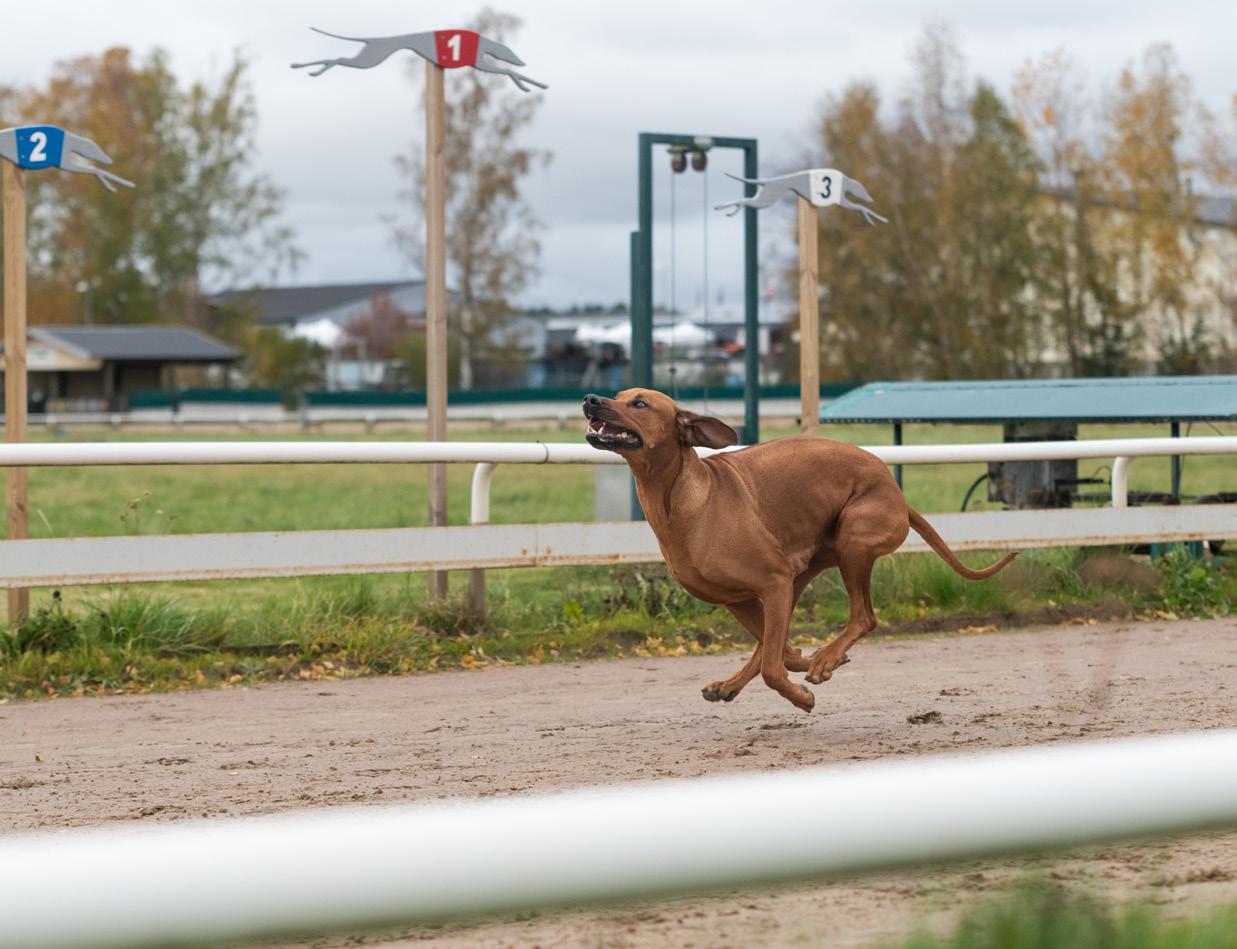
someone should fail, which we all sometime think others do, it will not destroy the appearance of the entire breed.
ACTIVITIES FOR DOGS AND THEIR OWNERS
Most Swedish dog owners live an active life with their Rhodesian Ridgeback. Many engage in training and competition in various dog sports, which in addition to the previously mentioned blood tracking and nose work, also includes for instance obedience, rally obedience and cross-country races of various distances.
RHODESIAN RIDGEBACK EU MAGAZINE 83
Track racing is much appreciated by both dogs and their owners.
Photo by Elin Nylander
Being Part of a Community
To encourage our members to be active with their dogs and to be part of a community with other Ridgeback owners, the SRRS’ local branches continuously provide a variety of events around the country, such as dog walks and training opportunities in for instance blood tracking, nose work, dog racing and show handling. According to the breed standard, the Rhodesian Ridgeback should represent a strong, muscular, agile and active dog, which does not apply to a couch potato (although most dogs are more than welcome on the sofa when taking a nap)!
While the dogs are resting, their owners can take the opportunity to educate themselves by participating in the various webinars that the SRRS now and then provides on various topics.
Blood Tracking Championship
One of SRRS’ annual events is the club’s blood tracking championship, which has been organized for a few years now, with a break during the pandemic. Each of SRRS’s four local branches organizes a local qualifying competition, where the winners compete against each other in a final. In addition to the honor and a special designed challenge trophy, the winner will be the holder of the unofficial designation “SRRS’ Blood tracking Champion of the Year”.
Show Events
Each year, most local branches organize a Club Show, which is mainly judged by a breed specialist or all-round judge with extensive knowledge of the breed. Over the years we have had the honor of having our dogs evaluated by a number of breed specialists from Australia, France, Germany, Great Britain, Israel, Italy, the Netherlands, Puerto Rico, Slovakia, Spain, South Africa and USA, among others.
In addition to the club shows, a main Rhodesian Ridgeback Specialty Show is held annually. This is the SRRS’ major show event where the BOB-winning

dog is awarded the SRRS unofficial but prestigious title BISS-XX. This is held over two days and usually attracts Ridgeback enthusiasts from most parts of Sweden and many times also from our neighboring countries. It is an excellent opportunity to watch many lovely dogs and meet old and new friends!
Annual Winner Lists
To encourage Ridgeback owners to enter official competitions and shows, SRRS has annual “winner lists” in Showing, Blood tracking, Nose Work, Obedience, Rally obedience, Working and Agility. The top-ten placed dogs on each list receive a fancy rosette at the Rhodesian Ridgeback Specialty Show upcoming year.
THE JOURNEY CONTINUES
So, this is roughly where we are today, after 50 years of commitment to the breed. Of course, there is much work done in the club that is not even mentioned in this article, as we have narrowed it down to issues that we believe may be of interest outside the Swedish borders.
It is important to note that the SRRS is not pushing other breed clubs to follow our strategies; rather, this is a decision left to the discretion of each club and its breeders. However, the emphasis is placed on collaboration between clubs and breeders to actively work together, avoiding unnecessary exclusions of healthy dogs from breeding and preventing the overrepresentation of individual dogs in breeding programs. Continuous education is encouraged, empowering clubs and breeders to find ways to preserve as much genetic variation as possible of what is still left within the breed.
The SRRS will continue to evaluate the outcome of our Breeding Strategies and revise them when new research and new facts are available. From our point of view, this is what managing a breed is all about. Using the knowledge and tools available at any given time in history, with the purpose of passing on a healthy breed to future dog owners and breeders for them to continue the work of previous generations.
84 RHODESIAN RIDGEBACK EU MAGAZINE
Photo by Jenny Jurnelius
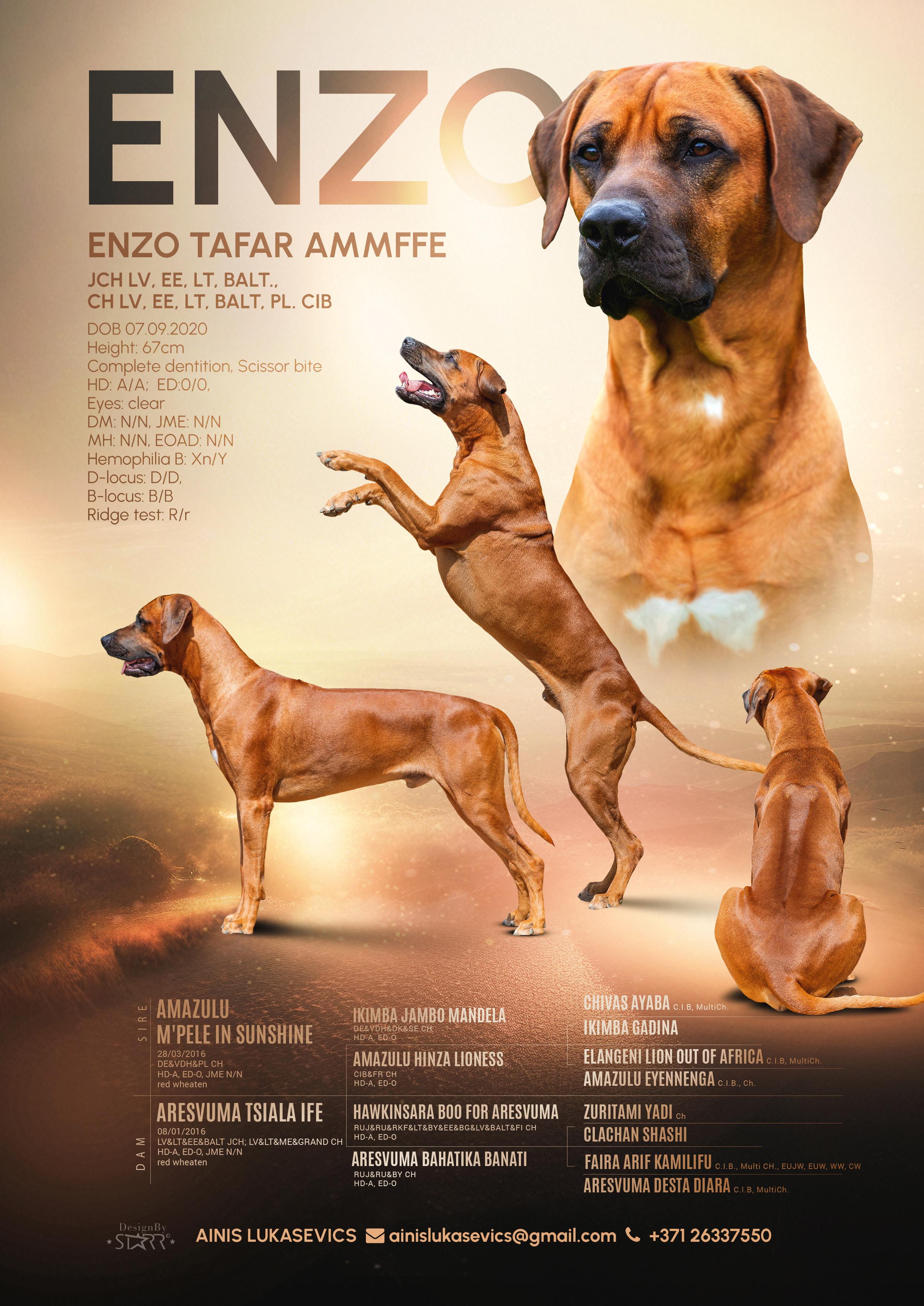
CRUFTS
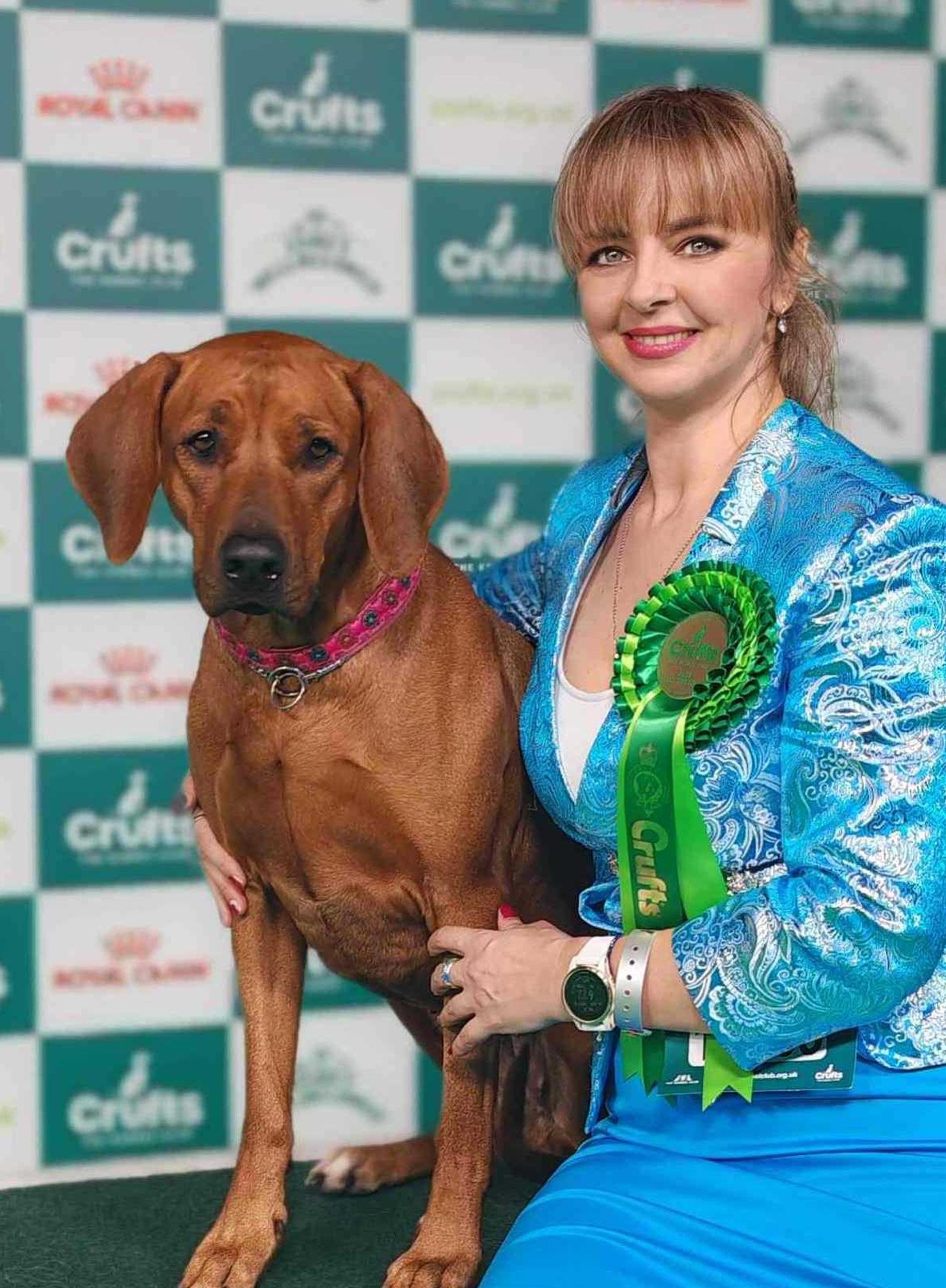
86 RHODESIAN RIDGEBACK EU MAGAZINE
GREEN CARPET
JUDGE REPORT
An appointment I have been looking forward to since 2018, which was cancelled in 2021 but it was worth the wait. I have kept away from the breed for a couple of years, so many were new to me & I was thrilled with the absolute quality of all the exhibits that made the trip.
Thanks for the appointment but thanks too to the wonderful stewards who did such a sterling job in such a large entry to allow me to finish in time & still get to the group ring to watch our BOB get a shortlist in a strong group.
VD (14, Abs 4) 1 Bossard’s Int/m Ch/bis/mbiss/vbis/vbiss Ndoki
Gentle George Vww Vew Int Vch, this boy won this excellent class on his excellent movement, correct shoulder placement & forward reach. Masculine head & expression, he is balanced with a good toplline held on the move, this quality dog just shone in the first class of the day with his showmanship & correct proportions, excellent topline & ridge, good ribcage & loin, well muscled hindquarters, put down to the minute & so pleased to make him BV overall;
2 Muir’s Ch Saadani Show Off, slightly taller in outline but maintaining his balance, very masculine in outlook & when he moves his stride is so correct & you could not miss him, he covers the ground with ease & purpose. Masculine head & expression with a good neck & shoulders, good ridge & an excellent ribcage, well muscled;
3 Pot’s Nl Ch Our Thabu Van ‘t Wolf-Heesch, lovely type of
Rhodesian Ridgeback - Judge: Mrs P Blay
Dog Challenge Certificate 18505 - Jimanns Ace of Spades (Mr & Mrs S Muir)
Reserve Dog Challenge Certificate 18430 - Kiromol The Kinsman JW (Mr A P & Mrs S A Geeves)
Bitch Challenge Certificate 18469 - Sk/hun Gch/sk/hun/slo Ch Just Like A Dream of Luanda Ejw (Mrs M Krchňavá)
Reserve Bitch Challenge Certificate 18423 - Ch Kinabula’s Gucci Bloom (Mrs M L Farleigh)
Best Of Breed 18469 - Sk/hun Gch/sk/hun/slo Ch Just Like A Dream of Luanda Ejw (Mrs M Krchňavá)
Best Puppy 18352 - Delianza What’s Your Motive (Mrs K L Barker)
Best Veteran 18375 - Int/m Ch/bis/mbiss/vbis/vbiss Ndoki Gentle George Vww Vew Int Vch (Mr M & Mrs P Bossard)
Class 3178. Veteran Dog
Entries: 14 Absentees: 4
1st Place 18375 - Int/m Ch/bis/mbiss/vbis/vbiss Ndoki Gentle George Vww Vew Int Vch (Mr M & Mrs P Bossard)
2nd Place 18506 - Ch Saadani Show Off (Mrs C & Mr C Muir)
3rd Place 18536 - Nl Ch Our Thabu Van 't Wolf-Heesch (Mrs D R Pot)
Reserve (4th Place) 18437 - Matsushona Fire Opal of Cynami (Mr L & Mrs C L Hall)
Very Highly Commended (5th Place) 18432 - Lv Ch Lobengula Mwai Imara (Ms Zanna Godjajeva)
Class 3179. Minor Puppy Dog
Entries: 3 Absentees: 0
1st Place 18354 - Diamondridge Dreadnought (Miss K J Barnes)
2nd Place 18508 - Walamadengie Heart Throb (Mr P & Mrs J & Mr G Mulholland & Cunningham & Cunningham)
3rd Place 18394 - Callmn's Jammy Dodger (Mr A & Mrs L & Miss N Clark-Maclean & Clark-Maclean & Crossan)
Class 3180. Puppy Dog
Entries: 5 Absentees: 1
1st Place 18352 - Delianza What’s Your Motive (Mrs K L Barker)
2nd Place 18434 - Rottzridge Celtic Legend at Kotamury (Mr A & Miss G Green & Thomson)
3rd Place 18569 - Fiadma's Stiggens (Mrs T Thomas-Bassett)
Reserve (4th Place) 18577 - Amahle Bold Venture (Mrs Hc Walker)
Class 3181. Junior Dog
Entries: 7 Absentees: 2
1st Place 18408 - Rubiltra Gunna B Victorious (Miss J Darnell)
2nd Place 18454 - Mayesty Flair's Nabu of Muna Ya Kusini Jch (Mrs J Hoppe)
3rd Place 18464 - Ungowa On The Road Again (Mrs E Johnson)
Reserve (4th Place) 18439 - Walamadengie Kahn Be Kion for Mwanzo (Mrs A Harvey)
Very Highly Commended (5th Place) 18420 - Rubiltra Gunna Be Striking (Mrs C Edwards)
Class 3182. Yearling Dog
Entries: 14 Absentees: 1
1st Place 18462 - Pink Panther Slunce Zambezi (Mrs K. Janáčková)
2nd Place 18377 - Savuti Daymani Dna Deluxe Mr Bro' Jww Int-J Jbis Jbiss Mjch (Mr M & Mrs P Bossard)
3rd Place 18574 - Paerdecroon Olympic On Top (Mr A.r. & Mrs E.a.w Van Doorn)
Reserve (4th Place) 18410 - Gunthwaites Fancy Man JW (Miss K J Davies)
Very Highly Commended (5th Place) 18537 - Veni-Vidi-Vici Pot's Duke Van 't Wolf-Heesch Lux/ bel Jch (Mrs D R Pot)
RHODESIAN RIDGEBACK EU MAGAZINE 87
Ridgeback with good balance & showmanship, showed & moved so well & set up he is very typical, like all my placed dogs his movement was first class, lovely head with a good eye & expression, well carried ears.
MPD (3) 1 Barnes’ Diamondridge Dreadnought, what a quality youngster with so much promise, he is so sound & moved with such ease, taking the day in his stride, enjoying every minute, he is just right for age & of course his head has to finish but look forward to seeing him progress as he has all the required points to make it;
2 Mulholland & Cunningham’s Walamadengie Heart Throb, nearly 9 months & now just needs to mature & drop into his body for he is at the awkward stage but such a exciting prospect for the future, showed well, not at all fazed but the atmosphere & noise, lovely head & expression, excellent neck & shoulders, balanced outline held on the move;
3 Clark-Maclean & Crossan’s Callmn’s Jammy Dodger, today was just a bit overawed by the noise & atmosphere & needs to finish for he is only a baby & needs time & maturity to complete the picture.
PD (9,1) 1 Barker’s Delianza
What’s Your Motive, what a cracker, best mover in the class on the day with his excellent forequarters & well muscled hindquarters, held a strong topline set up & moving with a good ridge, masculine head coming with a good eye & well set ears, good neck & lovely ribcage, showed well to win this excellent class & go on to take a well deserved BP;
2 Green & Thomson’s Rottzridge Celtic Legend at Kotamury, a lovely type who is still a baby & needs time to finish, so very sound & moved well in a strong class, he is quality with a good head & a lovely eye & expression with well set ears, good neck & shoulders, correct hindquarters with just the right amount of muscle tone to omplete the picture;
Class 3183. Post Graduate Dog
Entries: 12 Absentees: 1
1st Place
2nd Place
3rd Place
Reserve (4th Place)
Very Highly Commended (5th Place)
Class 3184. Mid Limit Dog
Entries: 12 Absentees: 2
1st Place
2nd Place
18412 - Priorpark Problem Solved (Mrs K & Mr G Dawson)
18381 - Kiromol Baron Zuko (Mrs M Cahane)
18517 - Suhuba Dream On (Mr H J Painter)
18476 - Umhlandla Ubhuti Omkhulu (Miss Z E Lilly)
18385 - Asharaa's Perfect Match with Faahac JW (Mrs C L & Miss M L Catharell)
18549 - Negasi Radagast JW (Mrs M & Mr W Shaw)
18445 - Nuthouse Roger The Dodger (Mr J & Mrs S Hicks)
3rd Place 18340 - Sonnypride Cookies An Cream of Inbajsha (Miss J Digby)
Reserve (4th Place)
Very Highly Commended (5th Place)
Class 3185. Limit Dog
Entries: 16 Absentees: 3
1st Place
2nd Place
3rd Place
Reserve (4th Place)
Very Highly Commended (5th Place)
Class 3186. Open Dog
Entries: 32 Absentees: 8
1st Place
2nd Place
3rd Place
Reserve (4th Place)
18480 - Harmakhis Wisdom Brocaat Joy (Mrs E. Łuka)
18583 - Ranginui Great Expectation (Mrs A Wigglesworth)
18505 - Jimanns Ace of Spades (Mr & Mrs S Muir)
18430 - Kiromol The Kinsman JW (Mr A P & Mrs S A Geeves)
18578 - Kazembe Crescendo (Mrs N & Mr A Webster)
18409 - Rubiltra Mitaa Wimbo at Jacquidon (Miss J Darnell)
18448 - Kxoxo I'm Old Fashioned for Colkeririn JW (Imp Fin) (Mrs K Hodge)
18458 - Ch Diamondridge Dark Delight of Matikiridge (Mrs N Hurn)
18376 - Int/m Ch/biss Sabaku Inus Glorious Makoa of George Jch (Mr M & Mrs P Bossard)
18525 - Multi Ch Ridgeville's Jody of Harmakhis Wisdom (Mrs S Venturelli)
18541 - Sofala Lightening Strike (Mrs N D Raymond)
Very Highly Commended (5th Place) 18477 - Nuthouse Abracadabra (Mrs G J Little)
Class 3187. Good Citizen Dog Scheme Dog
Entries: 12 Absentees: 3
1st Place
2nd Place
3rd Place
Reserve (4th Place)
Very Highly Commended (5th Place)
Class 3188. Veteran Bitch
Entries: 16 Absentees: 2
1st Place
2nd Place
3rd Place
Reserve (4th Place)
Very Highly Commended (5th Place)
18582 - Jimanns The Doctor (Mr A & Mrs A Whiteside)
18583 - Ranginui Great Expectation (Mrs A Wigglesworth)
18532 - Priorpark Point and Click JW (Miss H & Mr A Picton & Ince)
18437 - Matsushona Fire Opal of Cynami (Mr L & Mrs C L Hall)
18378 - Celtic Lore's Golden Archer at Lyonglen (Imp Usa) (Mrs S J Bowers)
18550 - Ch Amahle Ayita of Matabelle (Mrs S M Simper)
18559 - Ch Kiromol Midsummer Spirit JW (Mr P, Mrs E & Mrs L Storey & Piehl)
18466 - Ch Shingwidsi Tshadi Rose (Mr J & Ms H Kirby & Mansfield)
18431 - Int/multi Ch Glen Rhodes Bololos Lozi (Mrs E Godehardt-Stamm)
18446 - Ch Colkeririn Face to The Sun JW ShCM (Mrs K Hodge)
Class 3189. Minor Puppy Bitch
Entries: 1 Absentees: 0
1st Place
18395 - Ngirozi’s Am I Not Your Girl (Mr K & Mrs J Conlon)
88 RHODESIAN RIDGEBACK EU MAGAZINE
3 Thomas-Bassett’s Fiadma’s Stiggens, nice type who moved correctly in profile but hind action needs to tighten going away but he is still young & when he finishes I am sure he will be fine. Balanced with a good topline & well set & carried tail, lovely head & expression.
JD (7,2) 1 Darnell’s Rubiltra Gunna B Victorious, just right for his age, such a handsome head & expression from a lovely eye & well set ears, he is balanced with a good neck & shoulder placement, well held topline & good tailset & carriage. Good ribcage & ridge, put down in excellent coat & condition & where he won was on his excellent easy yet sound movement; 2 Hoppe’s Mayesty Flair’s Nabu of Muna Ya Kusini Jch, darker masked dog who is very masculine in outlook, needs to settle in topline when set up but it is fine on the move, he is still young so I am sure he will tighten up all through, moved well on well boned legs & tight feet, good body proportions & a nice type; 3 Johnson’s Ungowa On The Road Again, just an absolute baby who needs time to settle & mature & finish, moved well here to win his place in this good class of lovely youngsters which bodes well for the future.
YD (14,1) 1 Janáčková’s Pink Panther Slunce Zambezi, balanced liver nosed dog who is so sound on the move, really using his correct forequarters & well muscled hindquarters, very masculine in outlook, loved his masculine head & expression with a lovely eye which is well shaped & set with good ear carriage, lovely neck & ribcage, strong loin & a good ridge, when he moved he covered the ground effortlessly, good size & proportions;
2 Bossard’s Savuti Daymani Dna
Deluxe Mr Bro’ Jww Int-J Jbis Jbiss Mjch, such a sound mover on well boned legs & feet, very masculine in outlook with an excellent head & expression, put down in excellent coat & condition, he is well muscled with a well set & carried tail, good topline held moving & set up, very close up to 1, both from the top drawer;
Class 3190. Puppy Bitch
Entries: 5 Absentees: 0
1st Place 18486 - Amahle Behave Yourself (Mrs A Maidment)
2nd Place 18557 - Kiromol Dare to Flair (Mr P, Mrs E & Mrs L Storey & Piehl)
3rd Place 18482 - Fiadma's Mojito at Purplepride (Miss C A & Mr I B Maddox & Gethin)
Reserve (4th Place) 18490 - Fiadma’s Rumella (Mrs F M & Mr A C Manning)
Very Highly Commended (5th Place) 18414 - Globalridge Eternal Flame (Mr W & Mrs J Dickson)
Class 3191. Junior Bitch
Entries: 18 Absentees: 6
1st Place 18521 - Priorpark Proud As Punch JW (Miss H Parsons)
2nd Place 18552 - Ungowa Here You Come Again (Mrs A J & Mr W J Smith)
3rd Place 18581 - Jimanns Tavullia (Mr A & Mrs A Whiteside)
Reserve (4th Place) 18405 - Honeybush Clouds Novel Princess Zola with Jocerik (Imp Deu) (Miss Jr & Mr Rm & Ms C Cyprien & Porter & Willunat)
Very Highly Commended (5th Place) 18546 - Jimanns Hell On Heels (Mrs J Ritchie)
Class 3192. Yearling Bitch
Entries: 17 Absentees: 3
1st Place 18540 - Kalahari Sun of Luanda at Affrhoda (Imp Svk) (Mrs H Pritchard Jones)
2nd Place 18386 - Royalridge Aurora (Miss A & Mr R Catley & Mcgimpsey)
3rd Place 18451 - Multi Ch Godsent Muse Femme Fatale Star Fire (Mrs J Hoppe)
Reserve (4th Place) 18576 - Markeliz Tea Time Two (Mr M Walker)
Very Highly Commended (5th Place) 18579 - Kazembe Orla 'bout Me (Mrs N & Mr A Webster)
Class 3193. Post Graduate Bitch
Entries: 16 Absentees: 2
1st Place 18568 - Bonfirebeau Red Skye (Mrs T Thomas-Bassett)
2nd Place 18483 - Rubiltra Chumba Bibi of Purplepride (Miss C A & Mr I B Maddox & Gethin)
3rd Place 18427 - Jelany Red Florencia at Kalabaney (Imp Rus) (Mrs A Field)
Reserve (4th Place) 18362 - Asharaa Stars in Your Eyes at Gileeja JW (Mrs G & Mr L G & Mrs J Black & Black & Mckinlay)
Very Highly Commended (5th Place) 18547 - Bossington Bonne Carre at Flossfields (Mrs E & Mr B Ruse)
Class 3194. Mid Limit Bitch
Entries: 13 Absentees: 4
1st Place 18530 - Msingi Sabriel (Mr S J & Mrs A R Pearce)
2nd Place 18355 - Diamondridge Sweet Delight (Miss K J Barnes)
3rd Place 18465 - Negasi Elberith for Clanbruachan JW (Mrs N Jolly)
Reserve (4th Place) 18363 - Rottzridge Perihelion at Gileeja (Mrs G & Mr L G & Mrs J Black & Black & Mckinlay)
Very Highly Commended (5th Place) 18570 - Sonnypride Honeycombe (Ms S Thompson)
Class 3195. Limit Bitch
Entries: 18 Absentees: 2
1st Place 18560 - Kiromol Tip Toe and Go (ai) (Mr P, Mrs E & Mrs L Storey & Piehl)
2nd Place 18425 - Kinabula's Coco Melon (Mrs M L Farleigh)
3rd Place 18411 - Kiromol Jump for Joy (Mrs C & Mrs M Davies & Cahane)
Reserve (4th Place) 18467 - Shingwidsi Tshedisa Light (Mr J & Ms H Kirby & Mansfield)
Very Highly Commended (5th Place) 18447 - Colkeririn The Sun Runhr (Mrs K Hodge)
RHODESIAN RIDGEBACK EU MAGAZINE 89
3 Van Doorn’s Paerdecroon Olympic On Top, he won his place on his excellent correct movement, he is quality & no mistaking his sex, excellent head & expression, good forequarters & well muscled hindquarters, liked his neck & topline which he held both set up & moving, good ridge.
PGD (12,1) 1 Dawson’s Priorpark Problem Solved, not a flashy dog but so sound & typical, he is well made with such a lovely head & expression, he is balanced & when he moved he was just what I wanted, correct shaped & coloured eyes with well placed & carried ear, good neck & correct shoulder & forechest, good ribcage & strong loin & correct topline, well muscled all through & put down to the minute, he is quality;
2 Cahane’s Kiromol Baron Zuko, very much my type, slightly taller but still balanced,liked his head & expression with a lovely eye & well set ears, where he comes alive is on the move, just floats over the ring but still shows determination & drive, good ribcage length & depth & a strong loin;
3 Painter’s Suhuba Dream On, darker dog with white on chest, incidentally I don’t get obsessed about white, I think that on most today it was fine be it on the chest or feet as long as it goes no further. He is balanced with a masculine head & expression, moved well on well boned legs & feet, good body proportions & a good size.
MLD (12, 2) 1 Shaw’s Negasi Radagast JW, what a quality dog who is so balanced, moved so well on well boned legs & feet, masculine head with a good, well coloured eye & expression well set & carried ears, good neck & shoulders, correct well carried topline & tailset, good ribcage & strong loin, he was well muscled & put down in excellent condition, deserved his place in this excellent class;
2 Hick’s Nuthouse Roger The Dodger, nice dog of just the right size & balance, so very masculine in outlook, he is balanced
Class 3196. Open Bitch
Entries: 42 Absentees: 11
1st Place
2nd Place
3rd Place
Reserve (4th Place)
Very Highly Commended (5th Place)
Class
3197.
18469 - Sk/hun Gch/sk/hun/slo Ch Just Like A Dream of Luanda Ejw (Mrs M Krchňavá)
18423 - Ch Kinabula’s Gucci Bloom (Mrs M L Farleigh)
18573 - Paerdecroon Legendary Looxs (Mr A.r. & Mrs E.a.w Van Doorn)
18374 - Int/m Ch Ave Caesar Super Trouper Lova Star Mjch Jbiss Jbis Jww (Mr M & Mrs P Bossard)
18360 - Ch Gunthwaites Ayr of Elegance JW (Mrs J M & Mr D H Bates)
Good Citizen Dog Scheme Bitch
Entries: 6 Absentees: 3
1st Place
2nd Place
3rd Place
Reserve (4th Place)
18406 - Saadani Storm Catcher with Sharufa (Miss E Darling Steele)
18343 - Kansenji Noor (Mr K Alexander)
18554 - Int Ch Storms River Aivana-Malia (Mr P Sodemann)
18436 - Kenquince Pisonia of Cynami ShCM VW (Mr L & Mrs C L Hall)
& so well muscled all through, he is quality & showed & moved well, loved his head & expression & his correct length of neck & good ridge & topline, carried his tail correctly & moved round the ring with correct footfall;
3 Digby’s Sonnypride Cookies An Cream of Inbajsha, again a balanced dog of the correct size & outline for my taste, he moved well on well boned legs & feet, showed well to win his place here, masculine head & expression, good neck & shoulders, really good presentation, he is a typical masculine Ridgeback of quality.
LD (16,3) 1 Muir’s Jimanns Ace of Spades, what can I say? He just stole my heart & showed his socks off to beat one of my favourite Ridgebacks, he kept calling me back, today had to be his day, he just looked stunning & nothing could lower his flag! He is masculine & quality all through, loved his head & correctly coloured eyes, well set ears giving an excellent masculine expression, lovely neck & shoulders, correct topline & ridge, well set & carried tail with a good ribcage & strong loin, put down in excellent coat & condition, when he moved he just covered the ground with ease yet purpose, excellent head carriage & a strong well held topline. Couldn’t walk passed him & was please to award him the DCC in the challenge;
2 Geeves’ Kiromol The Kinsman JW, what can I add to what I have written about this dog before, it is well known that I think he will make it to the top very soon but today I just couldn’t walk passed the DCC. He showed his socks off for his handler & did everything that was required of him, I could ask no more, loved his head & expression with such a beautiful eye & ear set & carriage, good topline & tailset & when he moved he matched 1 step for step making the decision so hard but at the end of the day I could not resist him for the RCC in such excellent company; 3 Webster’ Kazembe Crescendo, darker masculine dog who also moved so well, just preferred the overall balance of 1 & 2 but there is no denying his quality, he is a typical dog from the top drawer who moved & showed so well in this lovely class;
OD (32,8) 1 Hurn’s Ch Diamondridge Dark Delight of Matikiridge,substantial mature dog whose sex you couldn’t mistake, he is balanced & a typical Ridgeback, lovely head & expression, good eye & well set & carried ears, good neck & shoulders, well boned legs & feet, good body proportions with an excellent topline & ridge, good tail carriage & well muscled hindquarters, lovely ribcage & strong loin, in such a quality filled class, he kept catching my eye with his correct movement & footfall, loved his head carriage & determination on the move in profile which stole the class for him;
90 RHODESIAN RIDGEBACK EU MAGAZINE
2 Bossard’s Int/m Ch/biss Sabaku Inus Glorious Makoa of George Jch, within the Standard for height & he is balanced & masculine, excellent head & expression, good neck & shoulders, correct topline & ridge, well muscled all through & an excellent mover from well boned legs & feet, loved his type & is profile movement is textbook, put down in excellent condition;
3 Venturelli’s Multi Ch Ridgeville’s Jody of Harmakhis Wisdom, correct body proportions, excellent head & expression, good forequarters & well muscled hindquarters, he is typical & masculine in outlook & showed his socks off to take his place in this excellent class, I was spoilt for choice & I could pick any of the first ten to win these places. I was totally spoilt by some beautiful Ridgebacks. Good Citizen Dog Scheme
D (12,3) 1 Whiteside’s Jimanns The Doctor, I take this class as seriously as all the others & was very pleased with the dogs here too. The winner is a lovely type who is balanced & moved true, he has a masculine head & expression, well made fore & aft, put down in excellent coat condition, he is well muscled & in tip top form, masculine in outlook & showed well too win this ggood class;
2 Wigglesworth’s Ranginui Great Expectation, unplaced in a very strong earlier class but he deserved his place here, masculine head & expression with a god neck & shoulders, nice ridge & moved well on well boned legs & feet with a good head carriage, again well presented;
3 Picton & Ince’s Priorpark Point and Click JW, another from a previous class & settled better here to take his place, moved well covering the ground well particularly in profile, masculine head with a good eye well shaped & well carried ears to complete the look.
VB (16,2) 1 Simper’s Ch Amahle Ayita of Matabelle, wow what a class led by a classic bitch who is so what I have liked for years, she moved so well on well boned legs & feet, loved her type & balance, beautiful head & expression, excellent neck & shoulders, great balance with a strong topline & ridge, well set & carried tail, strong hindquarters used to carry her round the ring with ease coupled with the correct head carriage & correct footfall there would be no denying her place in this class, this 8 year old can still trouble the best;
2 Storey & Piehl’s Ch Kiromol Midsummer Spirit JW, another of an excellent type, I have admired her before & I see no reason to change my opinion for she is cracking and belies her age, she showed & moved so well, such a beautiful head & expression so very feminine with a beautiful eye which is well set, excellent neck & shoulders, good ribcage & topline & ridge, well muscled all through & an excellent profile movement with correct head carriage, fought hard & I was really torn between these 2 beautiful typical bitches;
3 Kirby & Mansfield’s Ch Shingwidsi Tshadi Rose, how lucky the breed is to have such a strong line
of veteran bitches to follow from. This one is also from the top drawer & another not to be ignored, again that pretty head & expression well made front construction & correct balance, well made all through & moved so well looking particularly good in profile, put down in excellent condition.
MPB (1) 1 Conlon’s Ngirozi’s Am I Not Your Girl, alone but still a promising puppy who can win in company for she has potential, suchh a pretty head which of course has to finish, she is balanced with well boned legs & feet, just right for age & with maturity will be interesting to see, well presented & showed & moved so well for a baby. BPB.
PB (5) 1 Maidment’s Amahle Behave Yourself, lovely class of babies who all show some promise but I particularly liked this one, very feminine in outlook & balanced, liked her type, pretty head & expression, she is just right for age, moved as a baby but still shows potential with a lovely topline she held moving & set up. Lovely type;
2 Storey & Piehl’s Kiromol Dare to Flair, another absolute baby of quality who needs to drop into herself & mature up for she is such a youngster with such potential, such a pretty head & expression with a lovely eye & well set & carried ears, good neck & shoulders, held a strong topline set up & moving, looked particularly good in profile with excellent head carriage, well presented in excellent coat & condition;
3 Maddox & Gethin’s Fiadma’s Mojito at Purplepride, completed a trio of excellent youngsters, again she is quality but needs time to reach her full potential, at present is still a bit bum high but as she matures this will come right. When she move she covers the ground well on well boned legs & tight feet, again lovely presentation & she was obviously enjoying her day in the ring. JB (18,6) 1 Parson’s Priorpark Proud As Punch JW, balanced, quality bitch who is so very feminine, best mover in class on the day, such a pretty head & expression, good neck & shoulders, well made throughout & put down in excellent coat & condition, good ribcage for age with a nice ridge, showed well to win;
2 Smith’s Ungowa Here You Come Again, when she settled, she looked a picture, very typical & well made, pretty head & expression but she needs to concentrate on the task in hand to carry on her improvement & finish a typical Ridgeback. Well presented & when she settled showed well;
3 Whiteside’s Jimanns Tavullia, showed well in this strong class, moved well on well boned legs & feet, pretty head & expression, very nice type who is balanced & held her own here.
YB (17,3) 1 Pritchard Jones’ Kalahari Sun of Luanda at Affrhoda (Imp Svk), pretty bitch at the top end & now needs to stop growing on for she is just right, lovely head & expression with a correct eye & well set & carried ears, lovely neck into good forequarters flowing smoothly into a good topline &
RHODESIAN RIDGEBACK EU MAGAZINE 91
well set & carried tail, good ridge, well muscled & well presented, moved well on well boned legs & feet, looking particularly good in profile & this is where she scored over the class today;
2 Catley & Mcgimpsey’s Royalridge Aurora, very close up this nice type of bitch, she is balanced & quality, a good size & outline, good head & expression with a good forequarter & well muscled hindquarters which were used to advantage to cover the ground with ease, again lovely presentation & well muscled all through;
3 Hoppe’s Multi Ch Godsent Muse Femme Fatale Star Fire, made up a trio of quality bitches who all moved with such style & purpose, again from the top drawer, a lovely type in such excellent company, pretty head & expression, excellent neck & shoulders, good topline held on the move & set up, excellent presentation & a typical Ridgeback in profile particularly on the move.
PGB (16,2) 1 Thomas-Bassett’s Bonfirebeau Red Skye,darker bitch with a pretty head & expression, eyes of a good colour & shape & lovely well carried & set ears, good neck & shoulder, strong topline, loin & well set & carried tail, good depth of ribcage & well muscled throughout, she is a good size & when she moves she just effortlessly powers round the ring saying who is second to me! she is quality & must have a good future ahead of her, today she beat some excellent bitches to win her class & I was very taken with her;
2 Maddox & Gethin’s Rubiltra Chumba Bibi of Purplepride, challenged hard & was so close up, another quality bitch of a lovely type, she is balanced with such a pretty head & expression, correct eye shape & colour, well carried ears, lovely neck & shoulder, good ridge & depth of chest, strong loin, held a good topline on the move & set up, good head carriage & footfall; 3 Field’s Jelany Red Florencia at Kalabaney (Imp Rus), another quality bitch with an excellent hindquarter which was well muscled, lots to like about her for she is well made with lots of potential for the future, moved well to take her place here, put down so well, very feminine in outlook with a pretty head & expression.
MLB (13,4) 1 Pearce’s Msingi Sabriel, she is just right for size, so very feminine with such a pretty head & expression lovely eye & good ear set, excellent neck & forequarters, good ribcage of a good depth & width, strong loin helping to keep an excellent topline with a good ridge well set & carried tail, she is well muscled all through & put down in excellent coat & condition, she is balanced but it was when she moved that really caught my eye, for she is so correct particularly in profile with good head carriage & a well kept topline & correct footfall, won an excellent class;
2 Barnes’ Diamondridge Sweet Delight, quality bitch of a type that has appealed to me over the years, feminine in outlook but with plenty of body & substance to actual do what she was bred for, she is balanced but another who catches your
eye when she moves for she is so correct with excellent legs & feet, strong topline & head carriage, but moving with such purpose & determination, yet keeping her femininity;
3 Jolly’s Negasi Elberith for Clanbruachan JW, good moving bitch who showed well to win her place, pretty head & expression, good neck & shoulders, correct topline & ridge, well muscled all through, she is balanced & a lovely type with lots of promise.
LB (18,2) 1 Storey & Piehl’s Kiromol Tip Toe and Go (ai), I don’t know where she has been hiding but I don’t remember ever seeing her before, she caught my eye on the first move round & I kept coming back to her for her breed type & quality, she ended up winning a super class full of wonderful bitches, such a pretty head & expression with a good eye & well set ears, excellent construction throughout, put down in excellent coat & condition, but those who know me know that it would be movement that would be my deciding factor & boy when she moves it is so effortless & determined with lovely footfall & correct head carriage & topline. Lovely to meet her & I shall be following her progress;
2 Farleigh’s Kinabula’s Coco Melon,she is so very feminine & so typical of this kennel, which I have admired before, loved her head & expression & well set neck into correct shoulders leading into a good topline & loin with a well set tail, good ribcage but her movement is textbook & in profile she matched 1 paw for paw, very close decision between 2 fabulous bitches;
3 Davies & Cahane’s Kiromol Jump for Joy, of the same type of the previous 2, & similar comments must apply, I think looking at the 3 in a line I was so pleased with their breed type, so very feminine with such a pretty head & expression, moved so well on well boned legs & feet, covering the ground with ease & determination. Put down in excellent coat & condition, she was well muscled & with lovely presentation.
OB (42,11) 1 Krchňavá’s Sk/hun Gch/sk/hun/slo Ch Just Like A Dream of Luanda Ejw, what a class, it is one I will be dreaming about for years to come. What a line up of fabulous, typical girls all vying for the top spot. I had to cut twice to get it right but at the end it just had to be this beautiful bitch who is so very typical yet full of quality, when she moved she was classic, loved her head & expression, she is well made throughout & she was presented to the minute in lovely muscular condition, she has too many good points for me to list them all, suffice to say that she just blew me away & I was thrilled that she came to Crufts for me to meet her. Honoured to give her the CC & in a hard battle she took BOB and went on to be short listed in a lovely group;
2 Farleigh’s Ch Kinabula’s Gucci Bloom, now I can see her breeding I know why she appealed as I hhad given her dam a CC too! she is cracking & everything I would want in a Ridgeback, so very
92 RHODESIAN RIDGEBACK EU MAGAZINE
feminine yet looks as if she could do a day’s work too! So very feminine with a beautiful head & expression, so much to admire including her well toned body which was presented so welll. She moved with such style & grace & beat all contestants to take the RCC;
3 Van Doom’s Paerdecroon Legendary Looxs,strong bitch who is full of quality, nice type & a beautiful mover, showed & moved so well to win this place in such strong company. Lovely head & expression with a good neck & construction throughout, excellent topline & ridge with a good tailset & carriage, well boned legs & feet. Good Citizen Dog Scheme
B (6,3) 1 Darling Steele’s Saadani Storm Catcher with Sharufa, lovely bitch who was still showing well at the end of a long day, well made through-
out with such a pretty head & expression, so very feminine & no mistaking that, moved so well on well boned legs & tight feet, good depth of chest & a correct loin, she was put down so well & deserved her win;
2 Alexander’s Kansenji Noor, veteran bitch who held her own here, at 10.1/2 she doesn’t show her age, looking really good with such a lovely head & expression, she is balanced & well made throughout, moved & showed like a youngster, really presented so well;
3 Sodemann’s Int Ch Storms River Aivana-Malia, just right for size, very good type & so very feminine, moved well particularly looks good in profile with lovely head carriage, strong topline & well carried tail, in lovely coat & condition.
IMPRESSIONS FROM EXHIBITORS
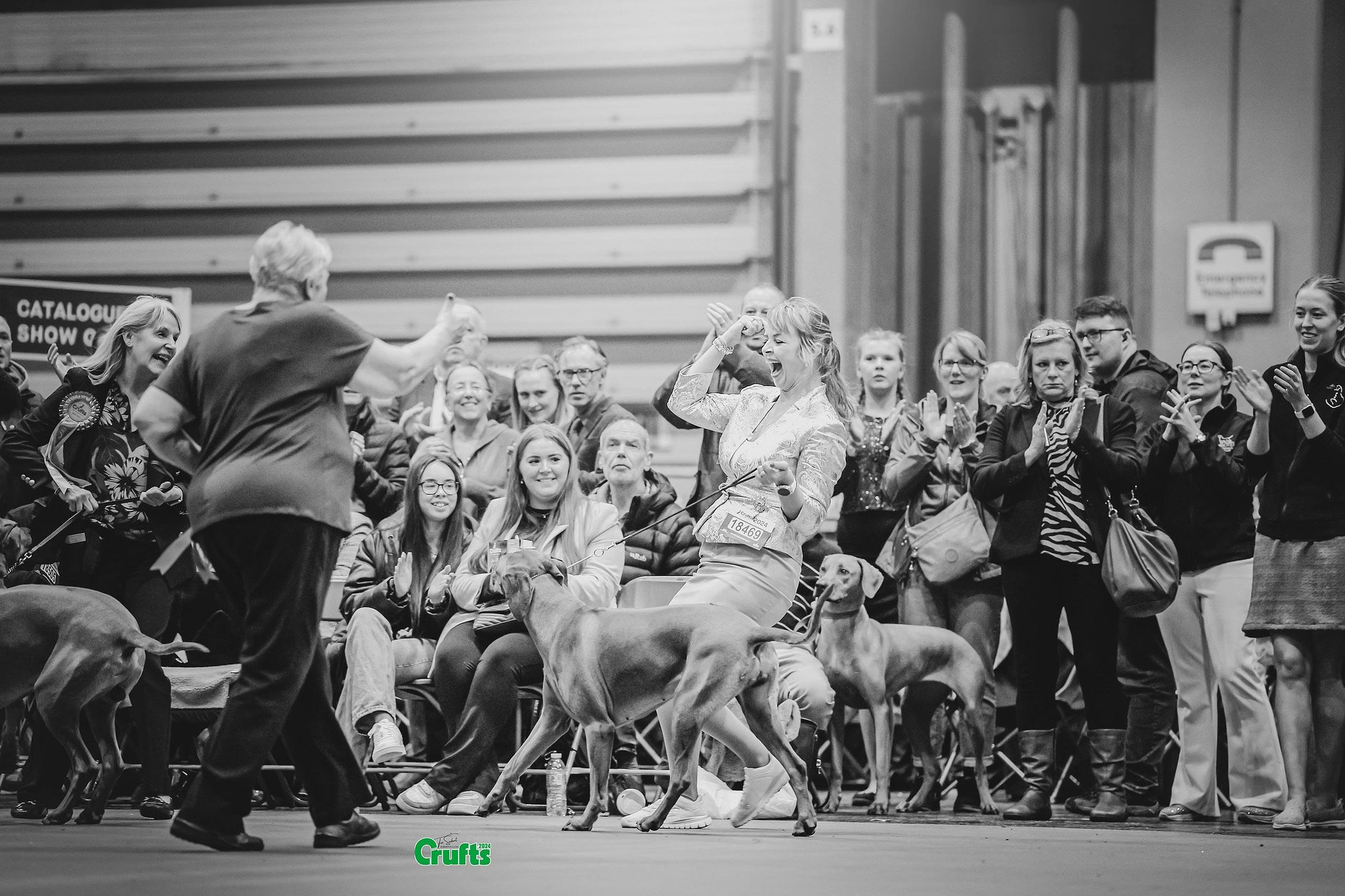
Daisy
*Just Like a Dream of Luanda* the CRUFTs 2024 - Best of Breed winner is from Slovakia!
Milada Krchňavá
LUANDA Rhodesian Ridgebacks www.lady-ridgeback.sk
Today known as BISS, BIS, CIB, EJW, Multi Ch, Multi Club Winner, Club Ch SKCHR, Club Ch SKCHR – TOP Junior Female 2022, Best Adult female 2023 SKCHR CKRR Just Like a Dream of Luanda.
Daisy was born on 13. January 2021 together with her 2 sisters and 5 brothers. Her mum is our beloved CIB, Multi Grand Ch Multi Ch Hennessey Sunrise by Luanda and her father is CIB, Multi Ch Kangelani´s Sadiki by Red imported from Nor-
RHODESIAN RIDGEBACK EU MAGAZINE 93
way from Marit Hjartoy Kangelani´s kennel. In Daisy´s pedigree are many beautiful representatives of Rhodesian Ridgebacks such as: Kangeani´s Joyful Juma, a daughter of Multi Ch Kangelanis Fiselo Felicia and USA Ch. Nashira´s Zainfully Good Juba Lee and the import from JAR? (what is JAR? South Africa?) Heshima Ya Kimba Energy of Red son of Karoskloof Bayezana Naka (import USA) and Heshima ya Kimba Chakanyuka (JAR). From her mother side my sweetest livernosed girl ever Dreamed Yman by Luanda daughter of our famous and very special liver girl BISS, CIB Multi Grand Ch and Ch Hillvalley´s Angel for Luanda, and Thornberry Akala the beautiful boy from Canada who stayed with us for some time in 2009 and showed his beautiful soul and exterior, from father side well known JWW, CIB, BISS, Multi Ch Jelany Red Djimbo Farey (breeder Elena Kamle -Russia) son of Crufts winner Multi Ch Villagedog Hot Topic from Dorothy McGoldrick- Belgium and JWW, WW2013 CIB, Multi Ch Aresvuma Olana Red from Russia. Since beginning it was clear that from this litter one of the girls will stay home.
I have always dreamed of going to see as a visitor the Crufts exhibition, or perhaps participating as an exhibitor, even though I had great respect for this vision.
Crufts is the largest dog show in the world in Birmingham, attracting visitors and exhibitors from all over the world, a wonderful demonstration of the coexistence of man and dog. Many acquaintances and friends who have already been to Crufts talked about the wonderful atmosphere, beautiful dogs, stands with products and services that I had not seen before and various activities with dogs (agility, obedience, dancing, etc.) for dogs during the exhibition.
As we had a successful show-year behind us we gained in 2023 two nominations for Crufts 2024 with “Daisy” Just Like a Dream of Luanda, and her half-sister (from same mother) “ Rainy”, JBIS, rBIS, CIB-J, Multi Ch, Club Ch, Multi Winner - Kilimanjaro Rain of Luanda, even three nominations, we started talking about visiting Birmingham more often at home. At the end of November, I provided ATC (Authority to compete) numbers, which are necessary to register for the exhibitions in the UK.
We decided to fulfill the plan to represent Slovakia at Crufts as a whole family: my husband Tom, children Sofka and Nelka (11 years old) and our four-legged girls Daisy, Rainy, and their mum Nessy we took too – to make sure that her heart does not burst from sadness of staying home without us. We left Slovakia together with a second car full of our ridgeback friends. We had a big challenge ahead of us - to pass almost 1900 km across five EU countries, cross the “La Manche” and from there “in the opposite direction :D” to Birmingham. After almost 2 days of driving our crew happily arrived to our hotel which was situated close to the NEC (National Exhibition Centre) where the Crufts show was being held.
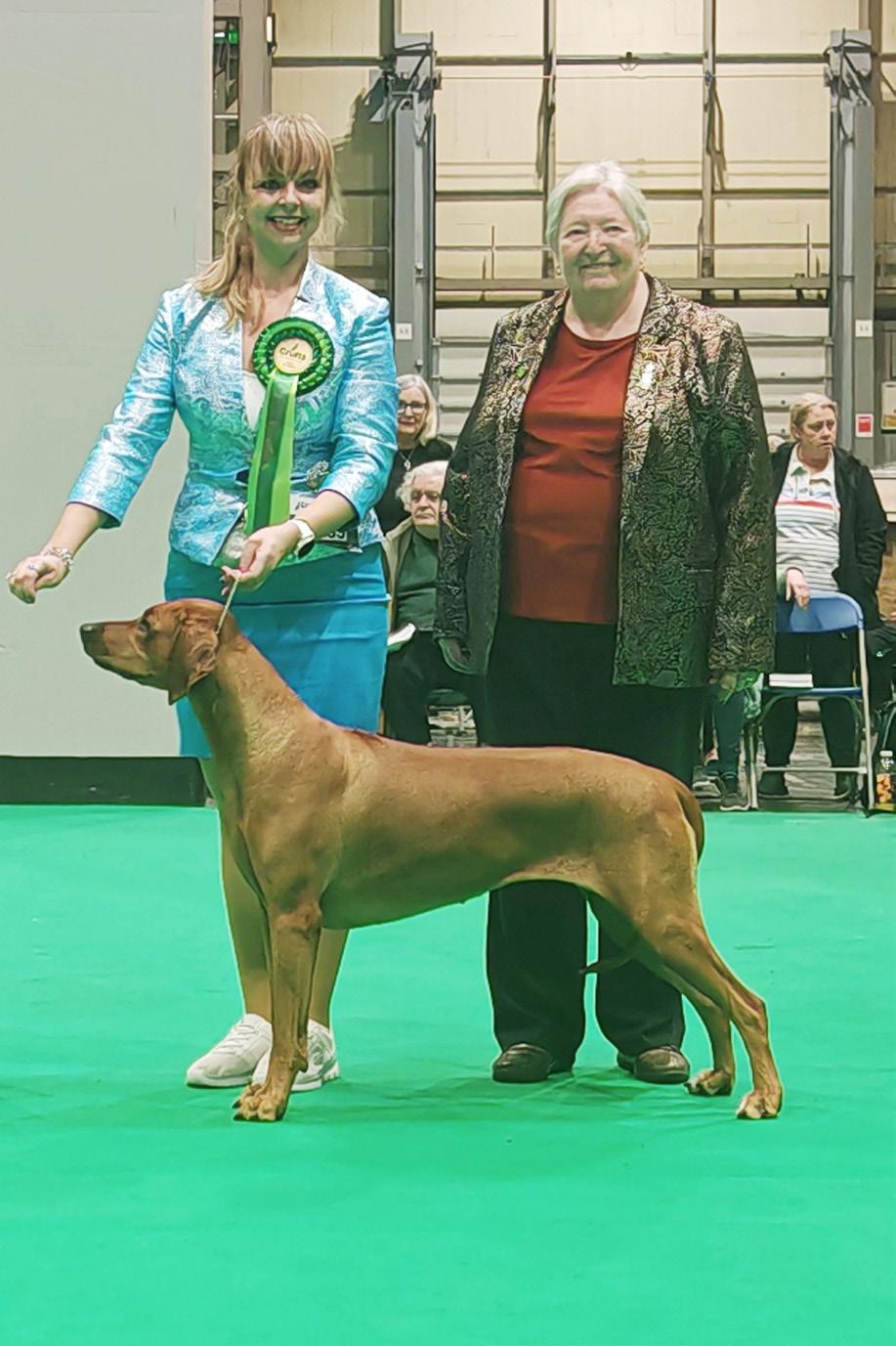
The Crufts exhibition takes place over 4 days. This year, the first exhibition day was Thursday, March 7. During the first day of the show, dogs belonging to the “Utility and Toy” groups were exhibited, the second day belonged to the “Gundog” group, the third day “Working and Pastoral” and the fourth day “Terrier and Hound”, which also included our Ridgebacks. The total number of registered dogs for the Crufts 2024 show was over 19,000, of which 283 entries were Rhodesian Ridgebacks.
The organization of the parking lot was excellent, we parked quickly. “English weather” didn’t disappoint either - it was raining, so you can probably imagine how all our “Ridgies” wanted to go for a walk in such weather :D.
The show ring was beautiful, big sized with a “Crufts green carpet”. We were pleased to place our “team” next to the “Czech show team”. The exhibition started right on time, already at 8:00 in the morning under the watchful eye of the judge Mrs Pam Blay from England.
Males were judged first. In the “Yearling Dog” class, our Czech friend Kamila’s brown-nosed dog Ch Pink Panther Slunce Zambezi took part in the competition of 18 individuals, and with the great handling of Lenka Bechova, he won his class. We were very happy with this victory - a wonderful success for our friends! We had two representatives in the open class. from Slovakia: Multi JCh, Ch, Multi Club Junior Winner Kitakaze Arte Cassari with excellent handler Danielka Némethová and CIB, BIS, Multi Grand Ch, Multi Ch, Multi Win-
94 RHODESIAN RIDGEBACK EU MAGAZINE

ner El Roy Arte Cassari with his owner/handler Miki Lukačin – they made it to be shortlisted.”Jimanns Ace of Spades” (UK) became the most beautiful male of the day from the “33 entries” in the Open class.
I was very proud that in the “Yearling” class should be entered our 3 girls from K-litter: our Rainy ( JBIS,rBIS, Multi Ch Kilimanjaro Rain of Luanda), Paris (Multi Ch, Multi Winner Kisses from Paris of Luanda - export Spain) and Melyn (Kalahari Sun of Luanda - export UK). I was pleased to meet Paris owners several times at last year’s exhibitions, but they did not manage to come to Crufts this time. Out of 16 registered bitches, the judge chose a shortlist – Rainy was not shortlisted. However, what a happy moment it was for me when Melyn - Kalahari Sun of Luanda won the Yearling class!!! At least this is how we got a beautiful score for our
Slovak RRs and we were very happy with her victory together with the owner Helen Jones.
The “Open” class for bitches was the most occupied of all classes for Ridgebacks that day, “41 entries”. We entered the ring with Daisy and the judge divided the class into smaller groups of 4 for judging. After about an hour, when each bitch was judged individually, the shortlist was made. I have to admit that I was so excited that we made it to the shortlist and Daisy and I really enjoyed the next laps.
This was followed by a moment when my heart probably stopped for a moment from amazement and surprise, when the judge pointed to us as the winner of the “Open” class” - to the tremendous cheers of our group and the other audience, which I had no idea that they kept their fingers crossed for us, Mrs Pam Blay – the judge gave me her hand with the words: “1st place” ... hooraaay! ....
All our team congratulated us and rejoiced with us, it was a huge wave of sincere joy, happiness and energy... thank you very much everyone for your congratulations and your joy!
The competition continued, other classes followed, and at the end of judging all bitches, the winners of the classes entered the show ring for the final decision – competition for best female. I started with Daisy still full of happy impressions and emotions, and Daisy probably felt the same way, since she happily ran with me in the show ring enjoying the show time - we didn’t expect anything ...though there was a glimmer of hope in my soul, what if... We finished the last round, stand position AND … followed by thunderous applause and huge cheers when the judge Pam Blay pointed with the winning cocarde BEST BITCH Crufts 2024 on Daisy...OMG !!!, oh how emotional for me … all the happy feelings, not excluding the tears of happiness... beautiful, thank you – wohooo, happyyyyy!
Touched and amazed by our victory, they called us back to the ring for Best of Breed competition. Once again show standing position one more lap around the ring, one last time in standing and it’s decided - BEST of BREED becomes: .... are you kidding me?! ....is the judge seriously pointing at us? ....”Daisy “!!! I do not believe it! And at the same time it is a reality! - the judge approaches me and shakes my hand with the words: “today my Best of Breed” !!!
An incredible experience that we will remember for the rest of our lives... our friends cheered, the audience too, beautiful! It was wonderful that even our BOB competitor the lovely owner of the male, Ally Muir, squeezed us and congratulated us, and so did we, of course! Others, our acquaintances from SK and CZ and other EU and UK countries, came to congratulate and rejoice with us... and the Slovak flag flew proudly and high! I’m dreaming... ...and the dream came true...and how thankful am I …
RHODESIAN RIDGEBACK EU MAGAZINE 95
I really appreciate the tremendous support and encouragement of all our friends of course my family and acquaintances around our Rhodesian ridgeback show ring – No34 - it was a wonderful gesture from all of you! Thank you - thank you –thank you!
Daisy will be written in history as the first Slovak Ridgeback to win at Crufts in the breed among 251 registered RRs (entries 283).
The judge wrote a beautiful review for Daisy: „Krchňavá’s Sk/hun Gch/sk/hun/slo Ch Just Like
A Dream of Luanda Ejw, what a class, it is one I will be dreaming about for years to come. What a line-up of fabulous, typical girls all vying for the top spot. I had to cut twice to get it right but at the end it just had to be this beautiful bitch who is so very typical yet full of quality, when she moved she was classic, loved her head & expression, she is well made throughout & she was presented to the minute in lovely muscular condition, she has too many good points for me to list them all, suffice to say that she just blew me away & I was thrilled that she came to Crufts for me to meet her. Honoured to give her the CC & in a hard battle she took BOB and went on to be short listed in a lovely group.“
At the end of our “stay” at circle 34, we took a few pictures with our Slovakian group and started packing quickly, as we were warned that it takes about 20-30 minutes to get to the BIS ring. We received an orange envelope from the leader of the RR ring, which contained instructions on how to proceed in the final ring and some advice from other people for the final competition.
It’s a great experience to get this far... the final BIS ring at Crufts !.... everyone quite ‘happily’ tired from the day, including Daisy and Rainy. Backstage in the final ring, Daisy underwent a vet check and was photographed by the official photographer like every breed winner at Crufts. The “Hound” group was judged by the renowned judge from Norway, Espen Engh. Daisy would prefer to be at home in bed after the whole day and it showed in her presentation. In the end, we made it to a shortlist of eight from a large group of beautiful dogs from hound group. Mr. Espen Engh identified the first 4 and congratulated me with the words: “beautiful high-quality bitch”. He later wrote in his group critique for the “hound group”: There are four placement and consequently four of the selected dogs remained unplaced. These were the Rhodesian Ridgeback Multi.Ch. Just Like a Dream of Luanda, a bitch of truly remarkable type and beauty, but not performing quite to her very best on the day. The other three were outstanding specimens of the breed, showing their heads off, and I would have been very happy to award them group wins in less eminent competition. They were the Petit Basset Griffon Vendeen Ch.Am.Ch.M and M’s Stellar Mayhem and Madness, the Miniature Smooth-haired Dachshund It.Ch. Gran Peresvet Casta Diva and
the Wire-haired Dachshund Ch. Aikton Alexander at Stanegate
I still get chills and a smile on my face when I remember those beautiful, unforgettable moments I spent on the green carpet together with my beloved family, and friends in faraway England. Although I didn’t see a single stand, because I was carefully following the Ridgebacks in a ring No 34 and matching them to the names in the catalogue, I had the pleasure of meeting and talking not only with our puppy owners, but also with other well-known long-time breeders not only from Europe. We had the honour to meet other breeders that we only knew from Facebook before and to see many beautiful Ridgebacks live. We were very pleased with the Slovak visitors to Crufts, long-time and respected cytologists from Slovakia, who came to the ring to see, greet and encourage us. I am extremely grateful to all our guardian angels and stars in the sky for all the beautiful moments we had on our Crufts adventure. Grateful to my family for supporting me in my big dream and spending beautiful unforgettable moments with me, grateful that we managed the trip without any problems, grateful for all the positive people who were with us and whom we met, grateful to my Ridgebacks and breeders whose dogs are in my girls’ pedigrees, for their work.
From our LUANDA kennel, the following have placed at Crufts so far:
• Crufts 2014 - yearling class winner -1st place: BISS-14 ESTW-15 NORDV-14 KBHV-13 HeJW13 NJW-13 JW-13 V-13 EECH C.I.B NORDUCh NOUCH Empress Zoë By Luanda “Zoë” (export SWE) (CIB, Multi Grand Ch, Multi Ch, Multi winner Alexis Femme Fatale Luanda x BIS, Ch Mocca de Chasse Gando)
Crufts 2024 – yearling class winner – 1st place: Kalahari Sun of Luanda at Affrhoda “Melyn” (UK export) (CIB, Multi Grand Ch, Multi Ch, Multi winner Hennessey Sunrise by Luanda x CIB,BIS, Multi Ch Gens Julia Must Have)
Crufts 2024 – open class winner – 1st place – BEST FEMALE, BEST OF BREED BIS, CIB, Show Ch, Multi Grand Ch, Multi Ch, Multi Winner Just Like a Dream of Luanda “Daisy” (CIB, Multi Grand Ch, Multi Ch, Multi winner Hennessey Sunrise by Luanda x CIB, Multi Ch Kangelani´s Sadiki by Red)
In conclusion: We would like to thank everyone who crossed their fingers and wished us well, for their help, support and the wonderful, unforgettable atmosphere that we enjoyed together and brought to our home in Slovakia, and for all the congratulations and beautiful messages.
96 RHODESIAN RIDGEBACK EU MAGAZINE
Aleksandra Stronska
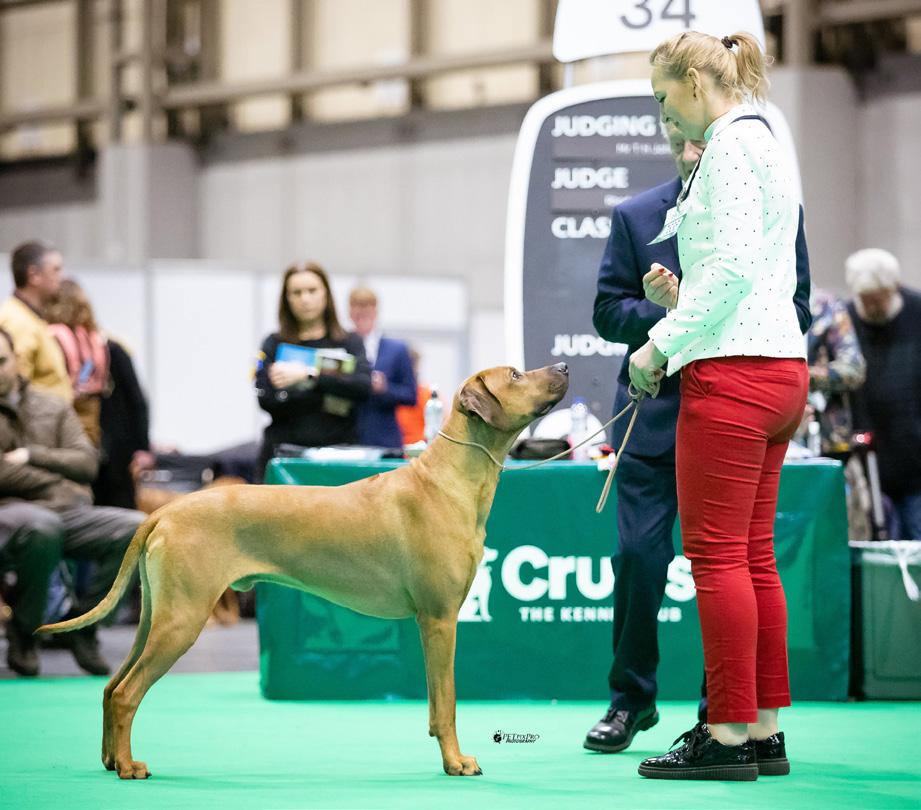
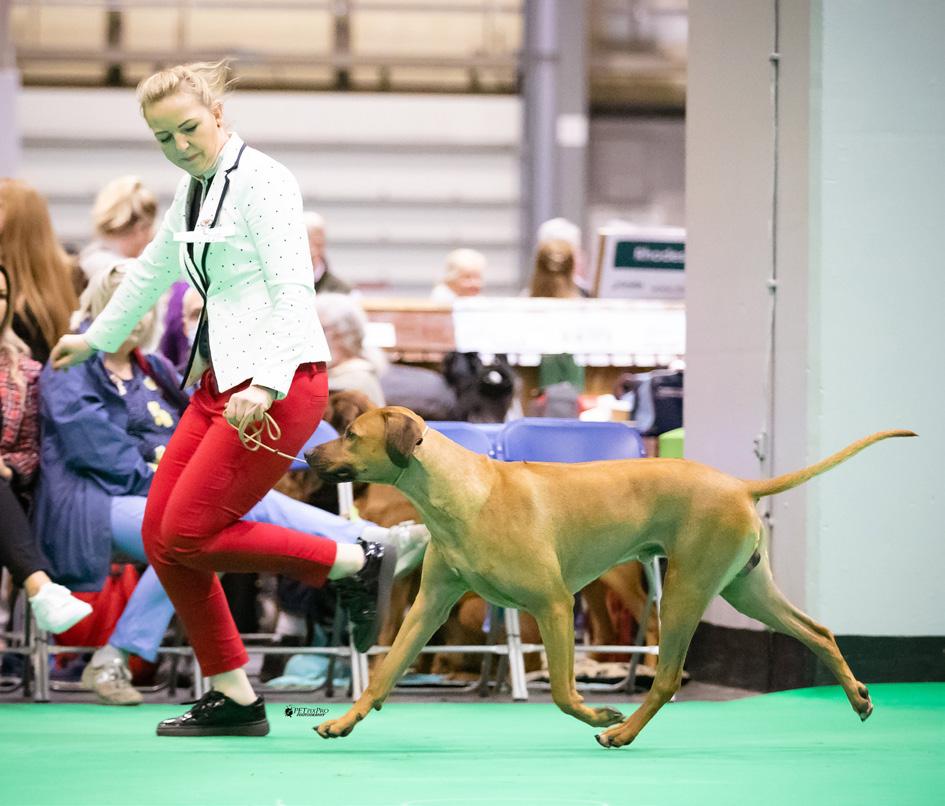
My name is Aleksandra Stronska. I participated in Crufts in 2022. I was a total beginner. My Rhodesian Ridgeback Simba, (CRACOVIA CARBONADO Gerdin Longridge) was a junior. In August I didn’t know what Crufts is. Everyone was talking about “qualifications”, so we went to the International Dog Show in Wroclaw, Poland and got a qualification there. Then my friend, a Labrador breeder, who participates at Crufts every year, said that I have to go and see this incredible show. After 27 hours journey (with slipped disc!) we arrived in Birmingham, UK. We achieved excellent results. Simba was 2nd in the Yearling class and he won first place in the Post graduate class. I have a video from when I thought that we are shortlisted or something, and then the judge gave us a ribbon and I simply can’t believe what is happening. It felt like I was in a Hollywood movie. A completely green girl at the beginning of an adventure with dog shows, with a dog from a small boutique kennel, wins two prizes on Crufts. It was an unforgettable feeling.

Ally Muir
JIMANNS ACE OF SPADES
DOB 09.06.2021
Sire: Villagedogs Silver Blade Runner (Imp Belgium)
Dam: Jimanns getting jiggy with it
Owned and loved by Ally Muir
Bred by Anne Nicholl
Remus has had limited showing, due to family illness, and I was unable to attend Crufts 2023 because of this. However he still managed to achieve
BPIB and Puppy Group 2 SKC CH show
BPIB at Rhodesian Ridgeback club of Scotland show He won his first CC and RBISS at the Southern Rhodesian ridgeback Championship show (Breed entry 136) under Breed specialist Michelle Farleigh (Kinabula)
RDCC (Breed entry 75) under Breed specialist Mr Andrew Geeves at the Hound Association of Scotland CH dog show.
He had not been shown for several months before Crufts 2024, because of other commitments. So to win his second CC at crufts (Breed entry 283) was a dream come true. Made even more enjoyable that his breeder and good friends were there to see it.
A fabulous and very proud day. As you can see from the photograph he loves the ring and loved his day at Crufts.
Photo by At It’s Best Photography, Josh Henderson
RHODESIAN RIDGEBACK EU MAGAZINE 97

 Aneta Bach and Menno van der Mark
Aneta Bach and Menno van der Mark
As dog fanciers, we have dreamt about participating in one of the most prestigious dog shows in the world for a long time, finally this year we decided make a trip to Birmingham. Besides, having lived in the UK for quite some time, it is always nice to re-visit good old locals (even more so those with sticky carpets) for a pint and use an opportunity to discover the city’s old industrial past. On Sunday morning with the first train from Birmingham New Street to Birmingham Airport we made our way to NEC, as spectators, to watch the breed we love compete for top honours. As expected, classes included top dogs and sometimes we were wondering how impossible the job of the judge was to select the winning one. We were very happy to see some of our favourites receiving the legendary ribbons. It was very nice to see some of our social media acquaintances and dogs we admired remotely for a while. The atmosphere was electric, hosts, local breeders very kind and always happy to share their experiences, dog owners working together, supporting each other and celebrating the wins as well as simply participating in the most amazing dog show on earth. There were, of course, amazing shopping opportunities and many accompanying events and shows. We enjoyed our first Cruft’s experience very much and looking forward to participating again, hopefully one day also showing our dog.
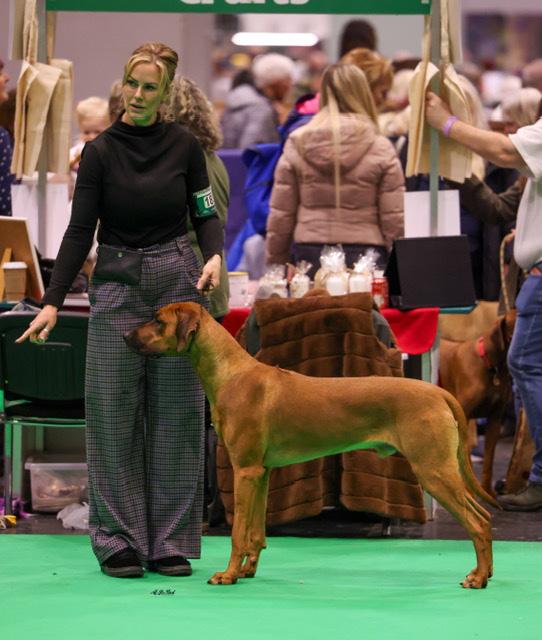
My name is Kate and I am very privileged to be able to say that I bred, own, train show and adore Delianza What’s Your Motive … or Mo to his friends! Mo is just the most wonderful fun character with a super temperament and a whole bucket load of enthusiasm. He’s as beautiful on the inside as on the outside and enjoys strutting his stuff, especially in the bigger rings. I have shown Rhodesian Ridgebacks lightly for a few years but when Mo came along, I knew he was something that bit special and boy has he lived up to my hopes. He qualified for Crufts at his very first Championship dog show at just 6 months of age and has scored consistently with wins and high places right from the start. As he had earned his place so decisively, I decided to showcase my boy at Crufts this year in what would be the end of his Puppy career. We trained diligently throughout the build up to Crufts as he eagerly soaked up all my direction and continued to grow in his ring-presence. When finally Crufts Hound Day arrived, he really was telling me he was ready and he certainly didn’t disappoint me with a performance securing him not just the class, but also best Puppy Dog and topping it off with Best Puppy in Breed too at only 10 months of age. What a way to draw a line under his Puppy time in the ring. I look forward to the future immensely, and all the fun I know he is going to bring us both. Quite simply, just as his name implies, he really is “my motive”.
98 RHODESIAN RIDGEBACK EU MAGAZINE
Kate Barker
Nita Webster Kazembe Crescendo
Living so close to the venue where Crufts is held doesn’t, for us, diminish the wonderful feeling of waking up in the morning and knowing it’s “Crufts day.” It is a unique experience that can only be described as enthralling! Every year, stepping into the exhibition centre with the dogs and seeing the pristine green carpet gives us a feeling of excitement which is unparalleled. The buzz, the atmosphere, and the sheer size of a place filled with so many dogs of different breeds, abilities, and disciplines, crowds of people bringing their hopes and dreams, is something that just has to be experienced. This year we were asked again to do Discover Dogs, which we did on two of the days leading up to our show day, and had a wonderful time meeting people. Our hounds love to give a good account of the breed. Meeting with friends for lunch and dinner, and in-between, shopping at the vast array of stalls, is all part of the wonderful magic of Crufts. The icing on the cake is of course, getting to touch your feet (and paws!) to the green carpet and we were delighted to receive placings with both of our dogs, Ezra (Kazembe Crescendo) 3rd in a very large Limit Dog class behind the best dog and reserve best dog, and Orla (Kazembe Orla ‘Bout Me) VHC in an equally large Yearling class. We loved to watch Ezra’s daughters and son in the ring also, we are so proud that they are doing so well. We look forward to Crufts 2025, and experiencing the world famous green carpet again.
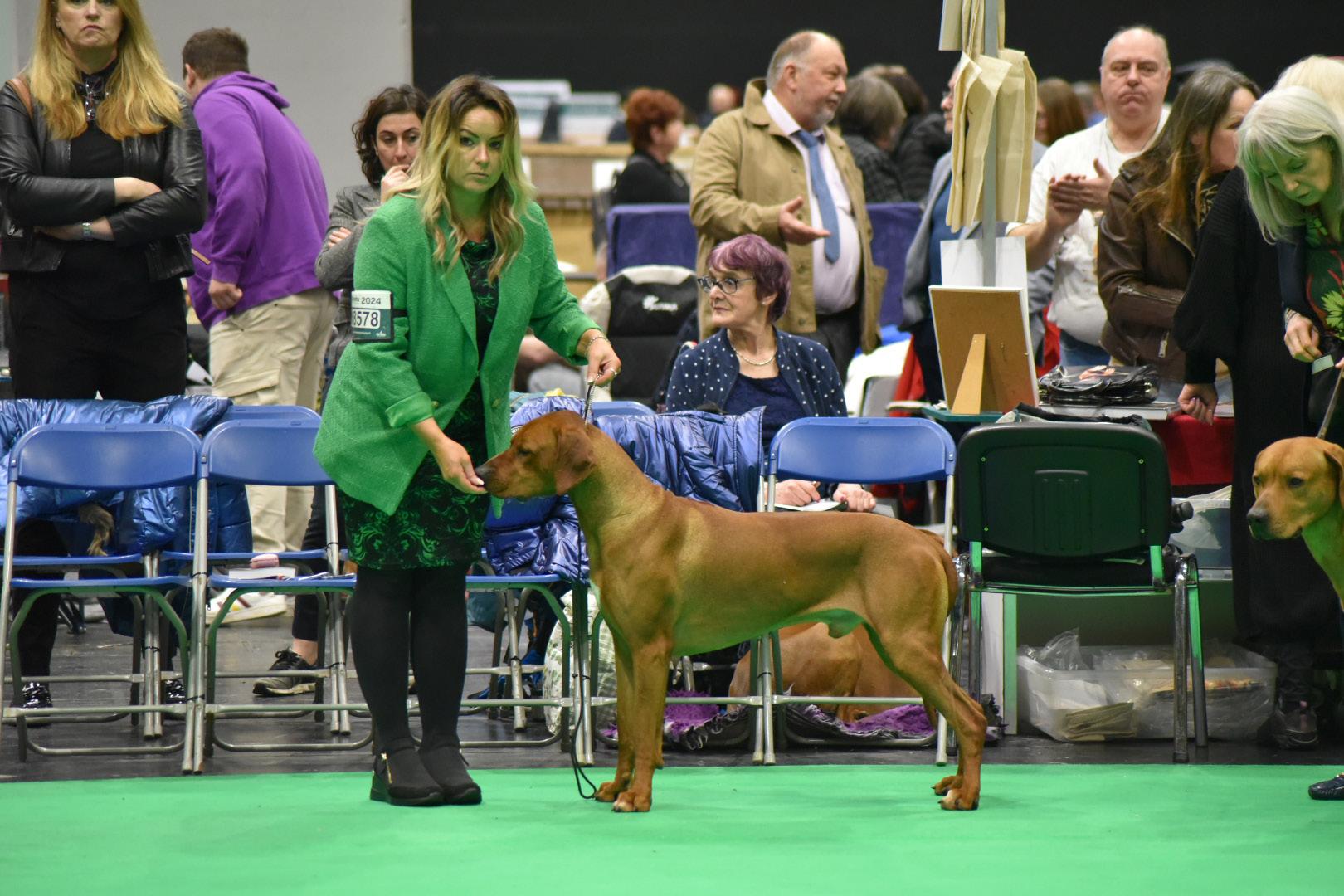
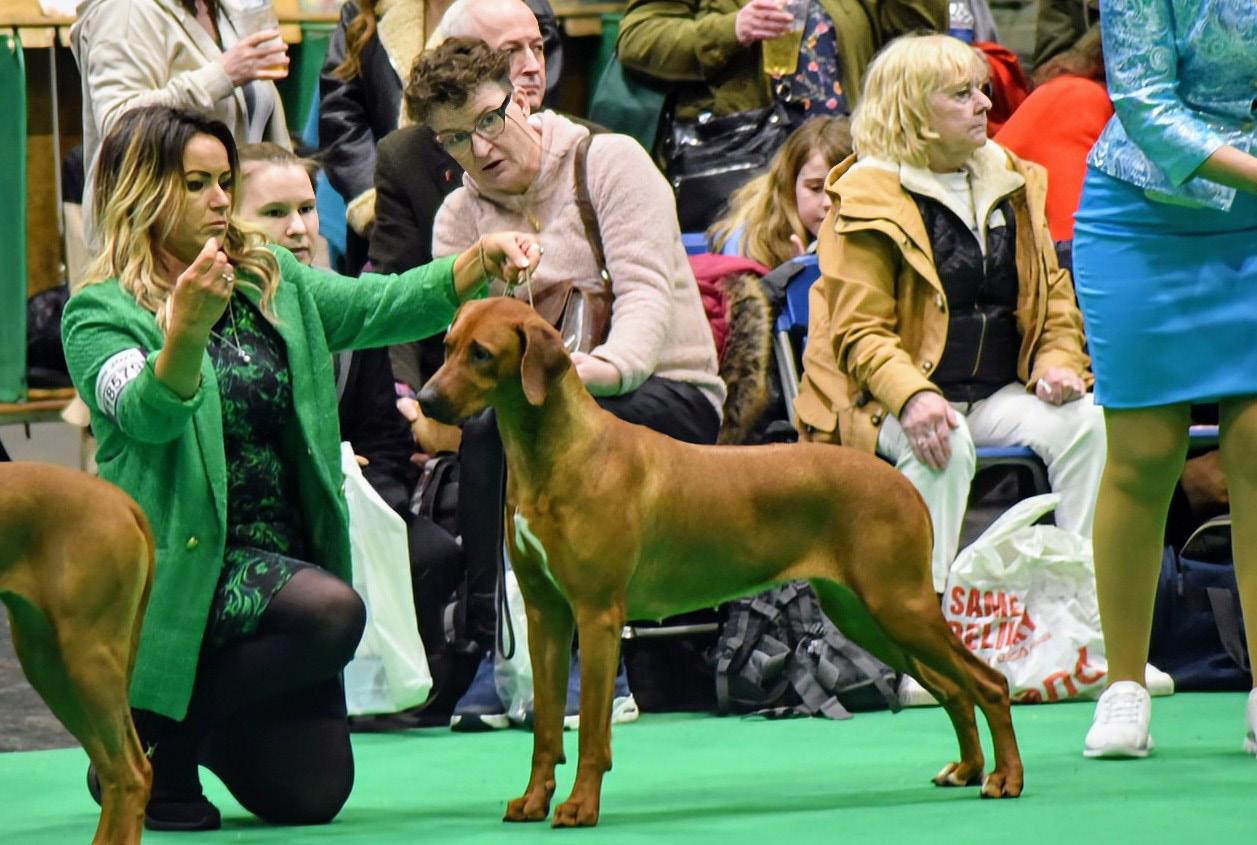
Silke Bohrmann KENNEL OF SOULMATE GUARDIAN
We were there!
An unforgettable trip to Birmingham, mixed with anticipation and excitement. Experiencing this special show is something quite extraordinary every time. The large NEC halls, so many dogs and people (“the who’s who”), metres and metres of benching for the dogs (some so beautifully decorated with rosettes and photos) and then the aforementioned “green carpet” in ring 34:
Bitch Veteran Class:
C.I.B. CH-DE & CH-HR
Ringerike African Exeting Girl “Zuri” (Imp. NL)
*18.06.2013
Sire: C.I.B. Multi Ch. BIS, BISS, RUBIS Amakhosi Springbok Siege (Imp. Australia)
Dam: Ch. Ringerike African Eclips (Netherland)
Owned by Silke & Jörg Bohrmann, Kennel of Soulmate Guardian (Germany)
Bred by E.W.C. Dusbaba (NL), Kennel Ringerike Zuri was the oldest RR representative at Crufts 2024 out of 250+ RR’s with almost 11 years.
Despite the complete ear amputation (inside & outside) and two litters, our great-grandma didn’t need to hide - she ran fantastically
RHODESIAN RIDGEBACK EU MAGAZINE 99
and still had fun in the ring. Without much training, we enjoyed running together in the veteran class. Her eyes were so focussed and concentrated on me that Zuri was definitely my power girl & personal highlight.
Dog Open Class:
Ch. & GCh
Chuck of Soulmate Guardian
*20.08.2020
Sire: C.I.B. CH-DE Haiba Kaisoon Eos (Germany)
Dam: Ajuna of Soulmate Guardian (Germany)
Bred & Owned by Silke & Jörg Bohrmann, Kennel of Soulmate Guardian (Germany)
Chuck has qualified several times for Crufts and therefore competed in one of the largest classes, which was represented by over 30 dogs of this great breed. As a breeder, I was able to present my own offspring dog there for the first time. We ran together proudly and calmly in the ring.
Chuck showed his familiar, pleasant and loving nature, allowing himself to be touched and wagging happily at the judge several times. However, we also had to wait half an hour in the ring. So we simply used the time and distracted ourselves with quiet mini-games at the edge of the ring. This guaranteed fun for Chuck too.
Handling
Bitch Open Class:
Ch. African Ring Star Adaez “Ruby”
*23.03.2021
Sire: C.I.B. CH-RUS-BLR-BIH-LVA-LTU-SRB-HRV-MNE-ESTRKF Dreamer´s Way Aragorn the King of Ring (RU)
Dam: C.I.B. CH-RUS-BLR-BIH-LVA-LTU-SRB-MNE-RKF
Shujaa Rafiki Golden Candice White (RU)
Owned by Petra Burford (DE)
Bred by L.A. Machneva (RU)
I qualified for Crufts with Ruby and was allowed to take her onto the “green carpet”. It was the largest group with almost 40 bitches in the class. Ruby’s eyes were focussed on me for over half an hour and so I trained with her while I waited. This power girl is tireless, she didn’t want to stop and then she runs so well that I was amazed myself.
With 250+ Rhodesian Ridgebacks entered, the judge P. Blay judged confidently, friendly and at a brisk pace.
Unfortunately it was not enough for a placing, but we are more than satisfied!
After all, this is the only real reason why you can be so happy and proud of your own dogs, even without being placed.
At the end of the day, these dogs do it just for us, so we spent the evening cuddling with them and watching Crufts TV in our hotel room.
We are so grateful to them!
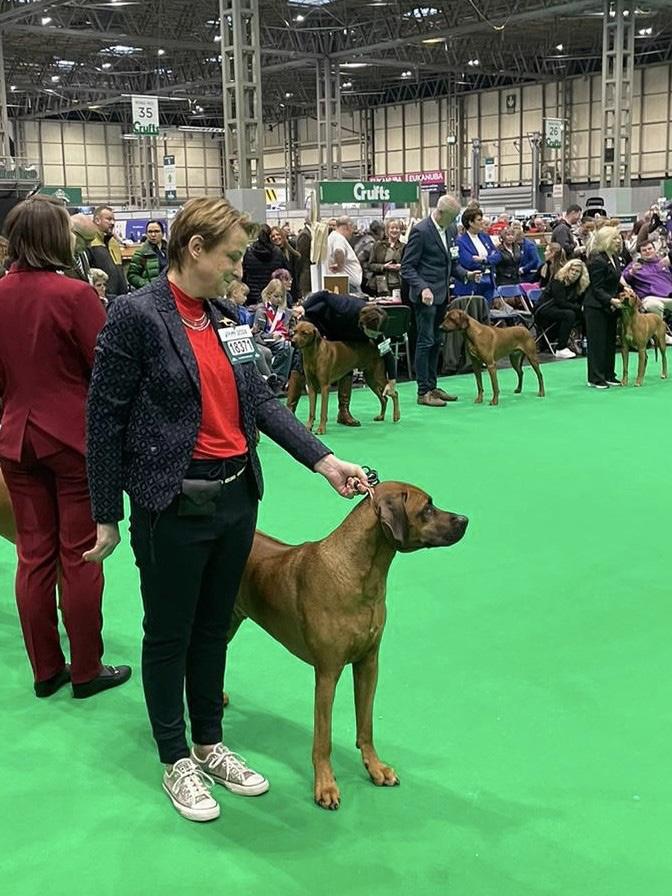

100 RHODESIAN RIDGEBACK EU MAGAZINE
Michael & Petra Bossard
We have just crossed the Swiss border and have only some few kilometers left before arriving home. Our this years trip to Crufts was an emotional journey in many ways. As we were driving northbound we all of a sudden realized, that this was going to be our very first Crufts without having our BADRANI at our side. He was the one that led us there back in 2015 and we wouldn’t have missed a single year with him. But yes, in a way we felt, he was very close, looking down and surely having fun seeing his friends travelling and performing at the NEC.
As a premiere this year we arrived with the support of our brand partner Farmina Switzerland – to be able to announce the new partnership in the Crufts premises was really very exciting for us.
So action started early. Entering just after 06:00am and getting everyone in tune before starting at 08:00 was a bit of a challenge, especially for our dear friend Daria Chorna da Silva, who only just arrived from Lisbon 3 hours before her alarm went off again.
A highly focused C.I.B./INTCh. C.I.B.-V/INTCh.-V 2xVWW VEW BIS MBISS VBIS VBISS MCh. JBIS MJCh. NDOKI GENTLE GEORGE started the show in Veterans (n=14). Some call him eternal, some a living legend –sure he is one of a kind and at 10 years he delivered in his unique manner and fresh as ever once again. Judge Pam Blay saw in him not only her Winner of Veteran class, but later on also her VETERAN BEST-OF-BREED.
His grandson JWW C.I.B.-J JBIS JBISS Ch. MJCh. SAVUTI DAYMANI DNA DELUXE MR. BRO‘ then got into work with Dariia in Yearlings. The first time without mummy in the ring was a challenge for our youngster, but his friend Dasha gave him back security and he finished on a wonderful 2nd place in his class (n=15). We are sure there will be much more heard from this incredible guy in the future.
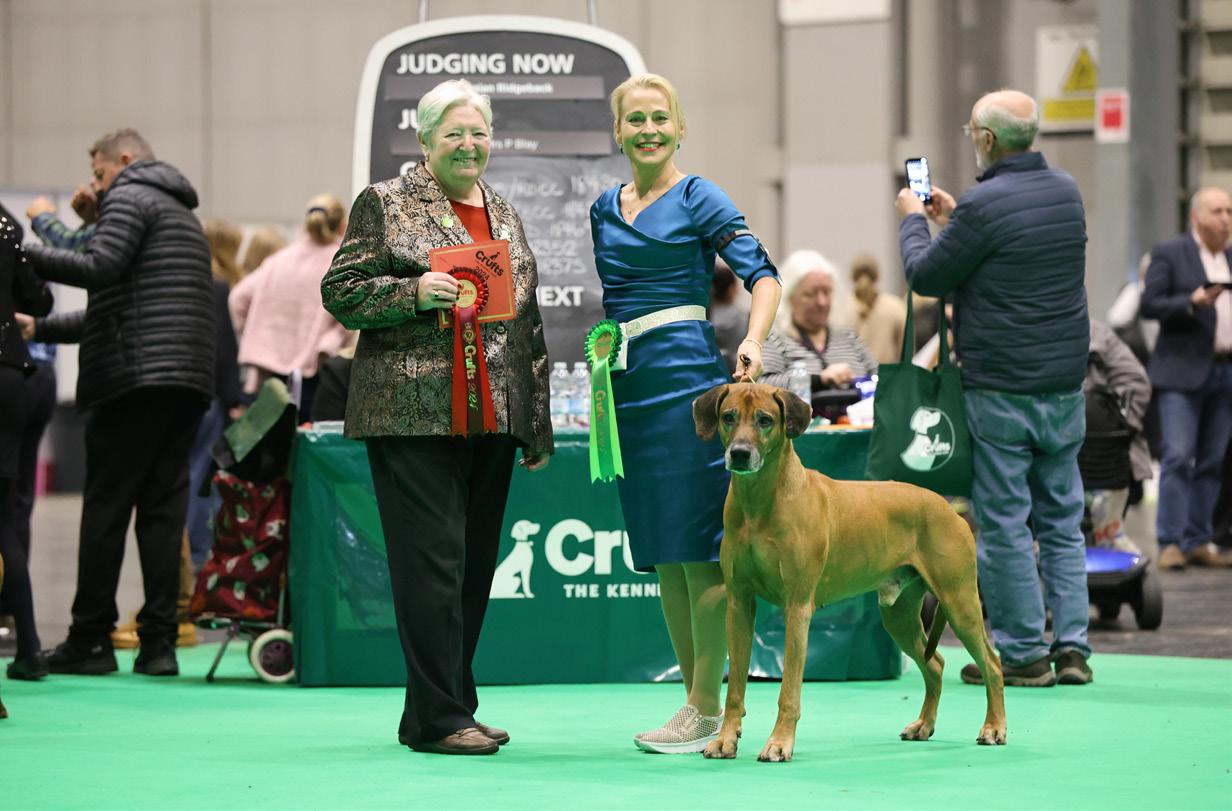
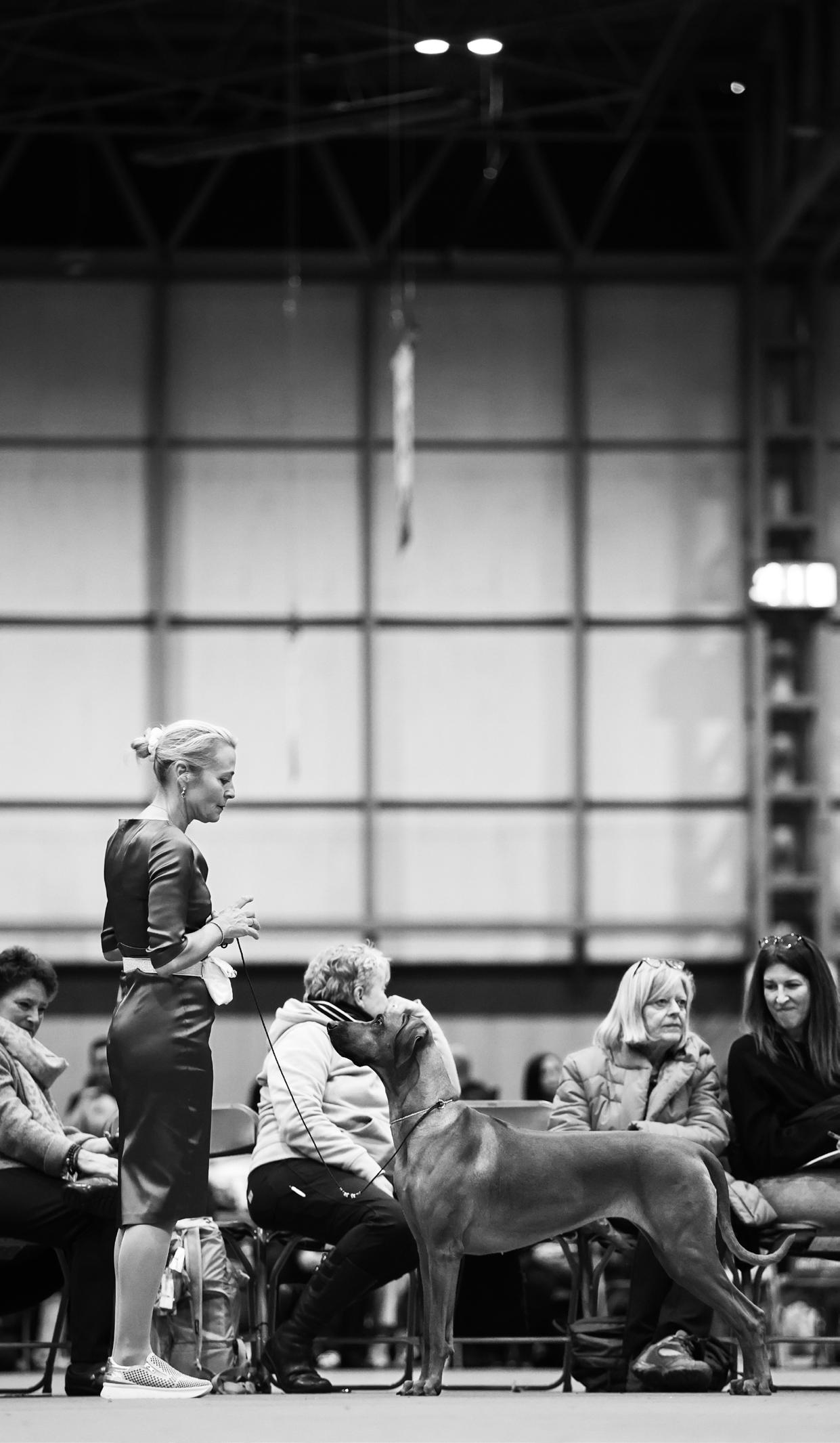
RHODESIAN RIDGEBACK EU MAGAZINE 101
Next up was our lille svensken C.I.B/INTCh. BISS MCh. JCh. SABAKU INUS GLORIOUS MAKOA OF GEORGE, who was ready to rumble in the prestigious Open class, meeting an entry of 33 of Europe‘s strongest dogs. MAKOA felt extremely good and his focus could not be taken from doing his very best. Reward for him was getting a fabulous 2nd place and 2 tons of extra sausage. What a handsome bloke and great personality he is!
Another swedish power unit could not wait to bring girl vibes onto the green carpet: C.I.B./INTCh. JWW BIS JBIS BISS JBISS MCh. MJCh. MBOB AVE CAESAR
SUPER TROUPER LOVA STAR faced a 41 girl strong Open class and gave her best stacks and the most awesome looks for mummy. We are super proud of her being selected and getting the 4th place in the final line-up by the judge.
Super huge congrats to Milada Krchnava and her beautiful DAISY on being such a worthy BEST-OF-BREED! An experience of a lifetime!
To have our 4 dogs ending the day with 4 cards is amazing and we are truly thankful to be the family of these extraordinary hounds. Left to say is a huge thank you to judge Pam Blay who made this fabulous day possible. Her judging was calm, efficient and always friendly. We enjoyed this day a lot!
Also a biggest thank you to Dasha, who did a perfect job, you are a master! Also to all our family and friends near and far, who support us any time as well as Farmina Switzerland. Having your spirits and energy with us during this event was great and gave us a extra motivation.
And the last thank you goes to our dogs and their breeders. The dogs for always giving their very best for us, for the emotions we receive from them and the unconditional love they share with us. And their breeders for having entrusted their magic puppies into our hands. We hope, we do you proud.


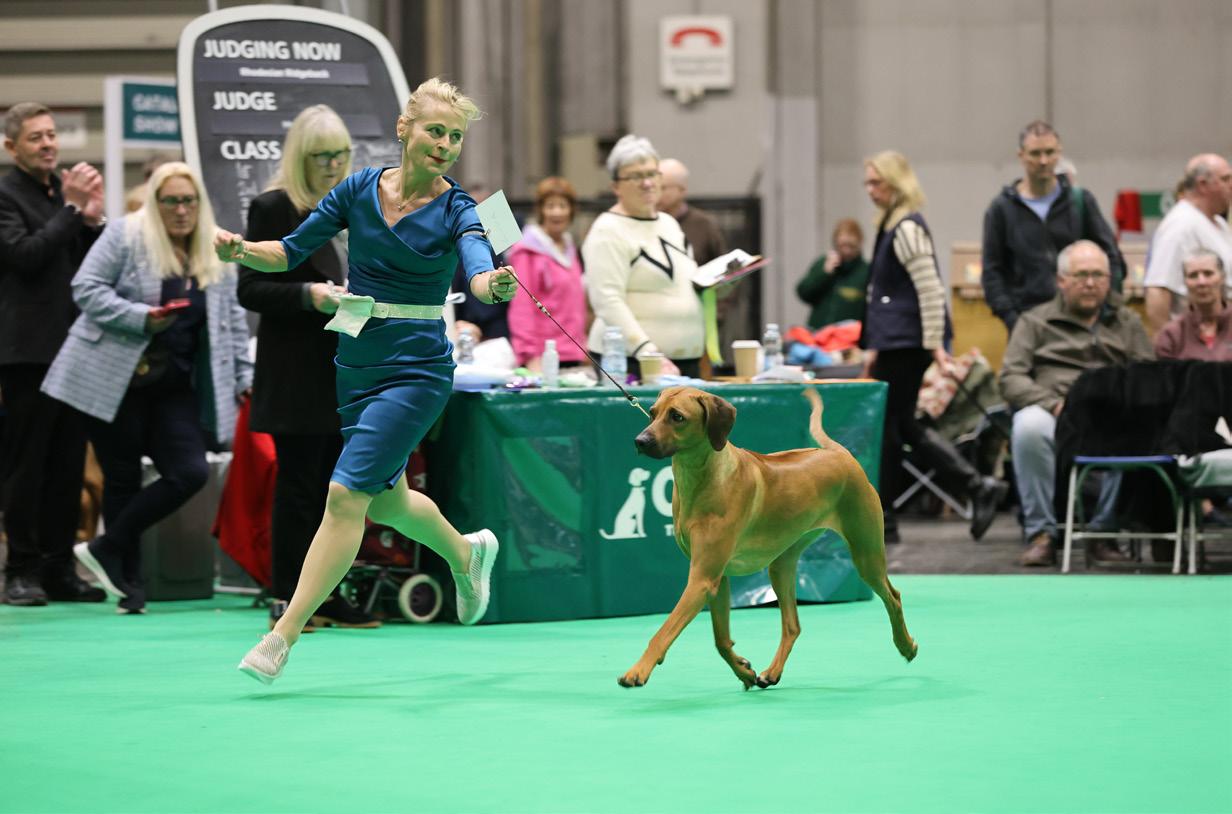
102 RHODESIAN RIDGEBACK EU MAGAZINE
Bart & Evelien van Doorn
On Friday 8 March, we drove from the Netherlands to Birmingham. For the third year in a row, Ruva (C.I.B. Ch. Paerdecroon Legendary Looxs) had qualified for Crufts. This year, our young male Olly (C.I.B.-J JCh Paerdecroon Olympic On Top) was also qualified.
Fortunately, the dogs are used to travelling and are fine with staying in a hotel. On Saturday, we looked at several rings, saw lots of stands and enjoyed the programme in the main ring.
On Sunday, it was the Ridgebacks’ turn. Olly stepped on the green carpet in the yearling class. In the big ring he was able to show his movement well and really enjoyed his time in the ring together with Bart. To our great surprise, judge Mrs Pam Blay placed him third. A great result with which we are very happy.
A few hours later it was Ruva’s turn. She entered the ring together with over 30 beautiful champion bitches. Ruva really enjoyed her time on the magic green carpet.
When she was in the first selection, we were already very proud. Together with the remaining bitches, she was once again allowed to show her movement. And then she was among the final five. I was already so proud that I almost forgot to film. Once more the remaining bitches had to trot and again Ruva was trotting with pleasure and flair through the ring. In the end, she was rewarded with a wonderful third place.
With two ridgebacks getting a wonderful third place in their class, we could only be very proud. We enjoyed our weekend at Crufts a lot and we’re looking forward to next year.
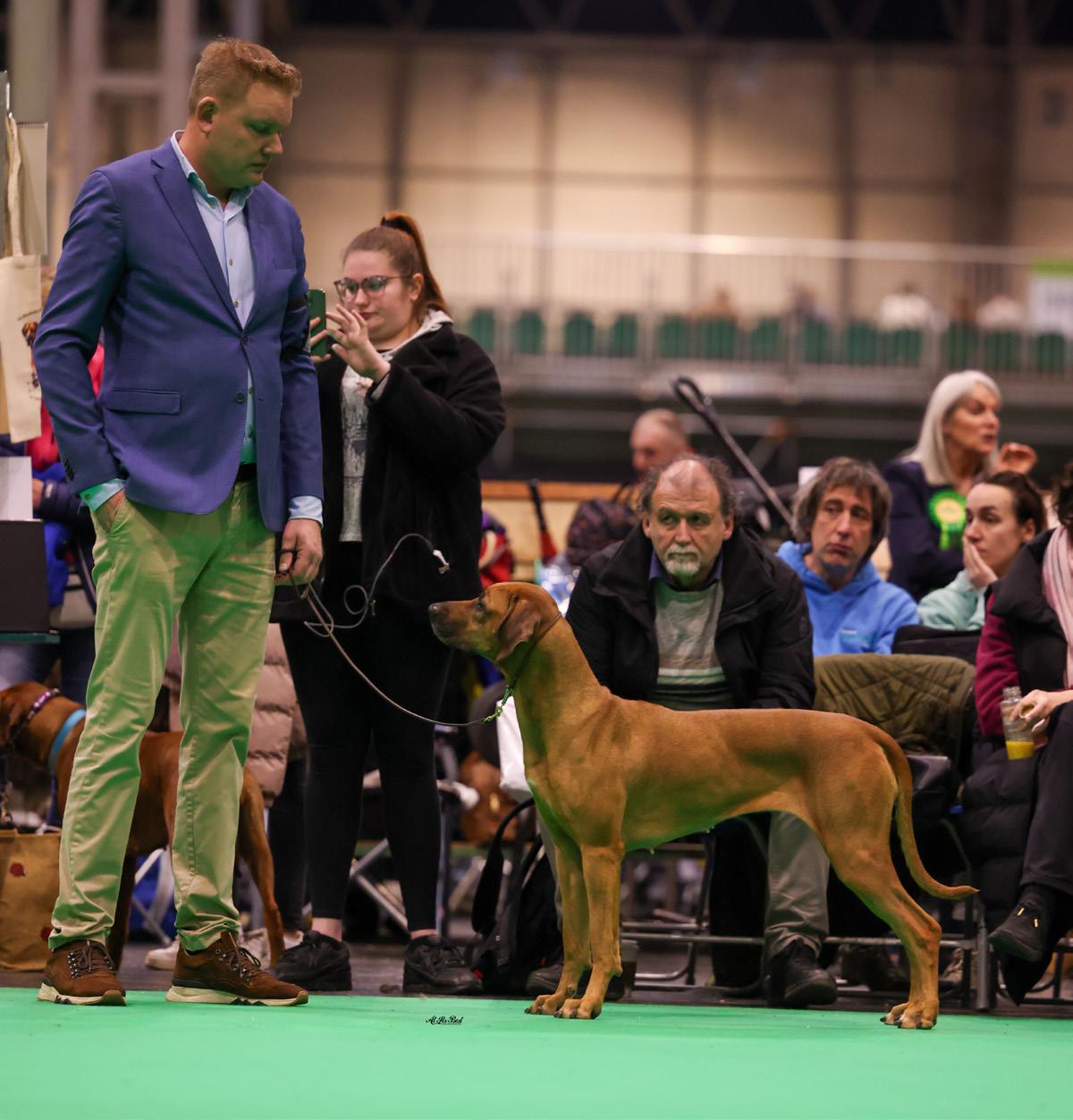
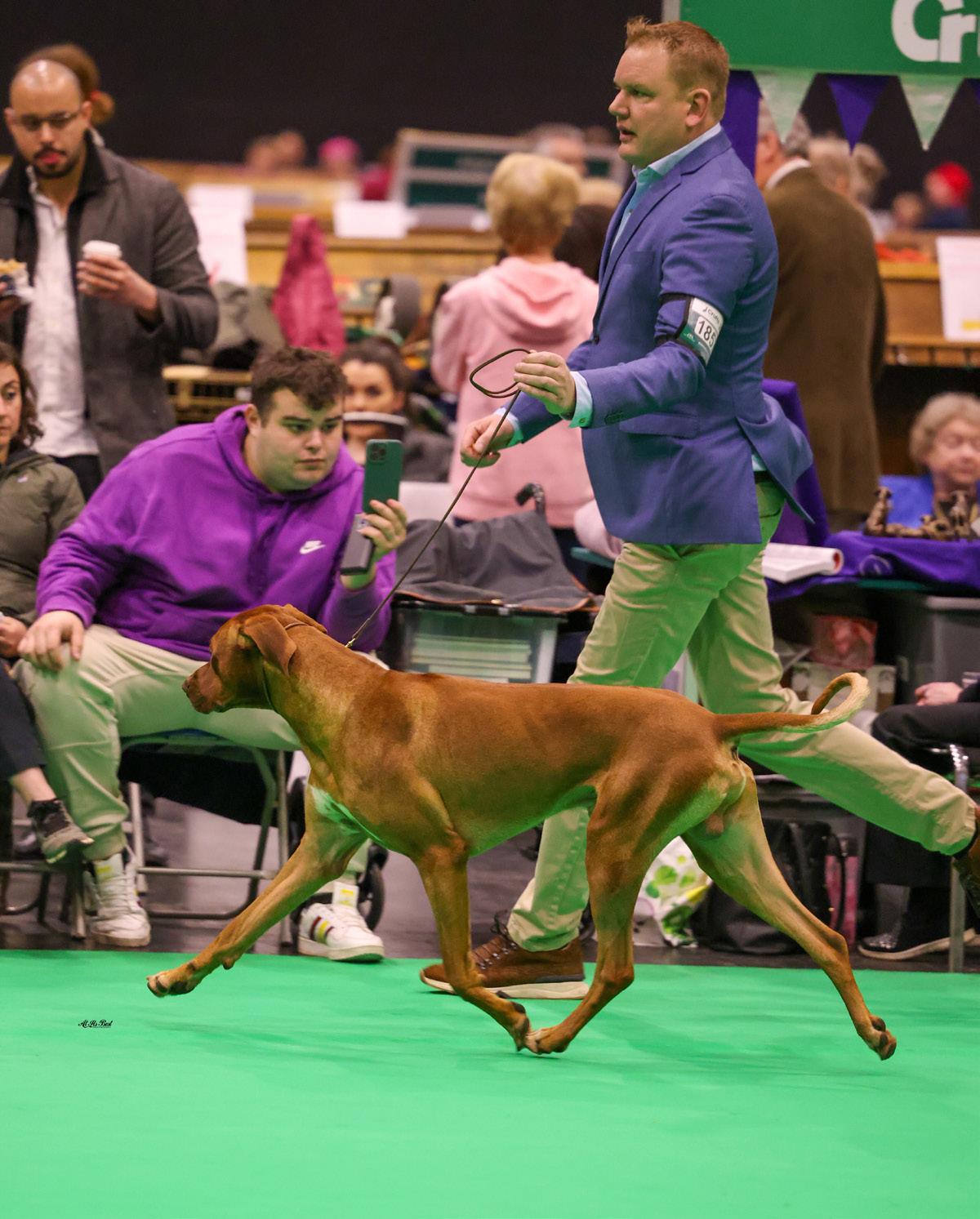
RHODESIAN RIDGEBACK EU MAGAZINE 103

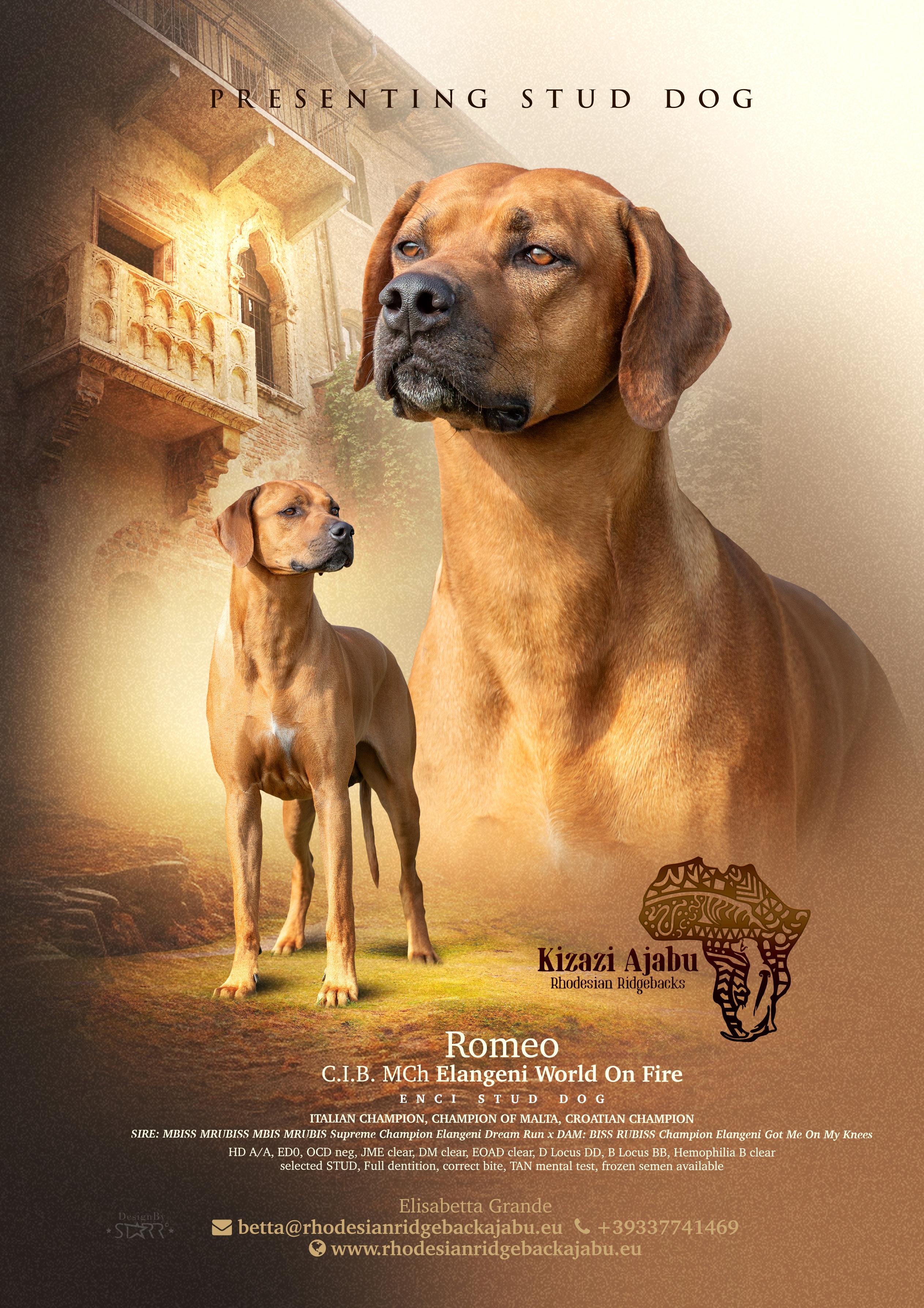 BY VANESSA MOYANO AND RACHEL GREVE
BY VANESSA MOYANO AND RACHEL GREVE
BARN HUNT
EXPLORING THE EXCITEMENT OF BARN HUNT WITH A RHODESIAN RIDGEBACK
Rhodesian Rigdeback is an amazing breed that can perform in every sport/activity we want to practice. Rachel the owner of Riggs (Molema Mua Rôo Nkorombo) sent me some months ago a video about one of the first performances of Riggs. It was really fun to see and of course it was completely new to me. I hadn’t heard about this sport/activity before, that seems is quite popular now in USA.
Barn Hunt is based on the traditional roles of many breeds in ridding farms, barns, crop storage areas, and homes of destructive vermin. Some breeds were specifically created to fill this role, and for many of those breeds, Barn Hunt provides their first true opportunity for responsible breeders to test proper working traits in their dogs. Barn Hunt is also open to any dog of any breed or mix who wishes to play the game and can fit through an 18” wide by bale-height tall tunnel. Barn Hunt has titles, levels of increasing difficulty, and championships.
The rats used in barn hunt are considered to be family pets, they are also trained for this sport and taken care of during the activity performance, so they aren’t stressed or injured.
You can read more about it at the website of Barn
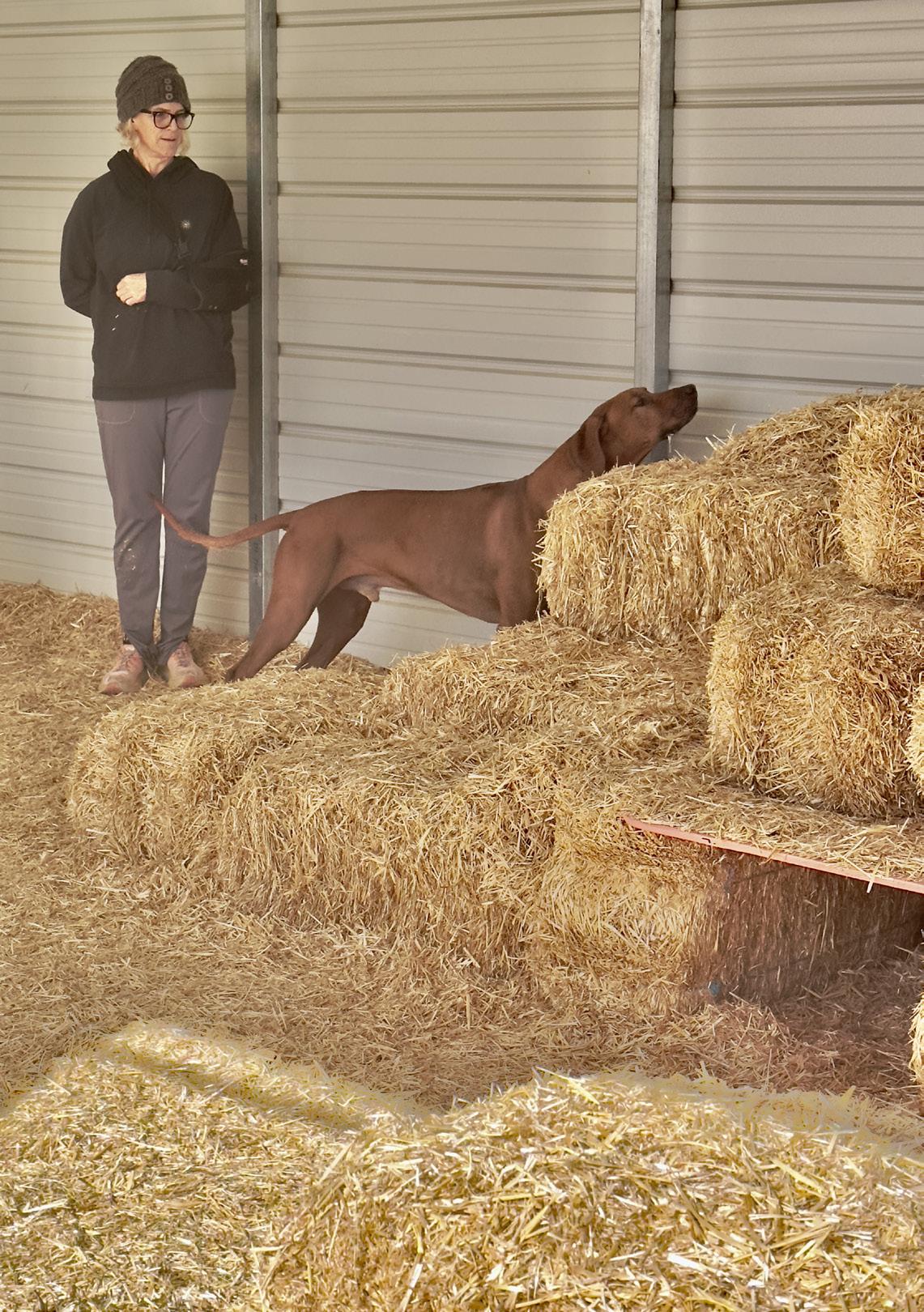
Hunt Association (https://www.barnhunt.com)
But let me introduce you in the barn hunting world through Rachel and Riggs.
Vanessa: Rachel, How did you know about this sport?
Rachel: Riggs first started doing Scent work through American Kennel Club Trials when he was just over a year old and loved it! He became quite proficient in that sport and even through the beginning periods of the COVID epidemic we practiced at home. When we moved to El Paso, Texas around 2022 I couldn’t locate a club that offered Scent Work near us and most of the trials for that sport were quite far away. We decided to try a similar sport, but one that was much closer to home here in Texas, Barn Hunt.
Vanessa: Why did you decide to try it with Riggs?
Rachel: I like to keep Riggs busy and use his brain! I knew he was successful at scent work and wanted to see how he’d do with a live animal (rat). He has always been good with his nose, and I think sports like this (both in and out of the ring) keep a dog engaged. This is a sport where honestly the handler needs to stand back and let the dog
106 RHODESIAN RIDGEBACK EU MAGAZINE

do the work. This type of sport (or play) can reinforce the strong bond between the handler and the dog. Even though the dog is off leash they still need to communicate with the handler, and the handler needs to be very aware of the dog’s behavior and what they are telling you.
Vanessa: What does Barn Hunt consist of ?
Rachel: Barn Hunt comes from the traditional roles of rat-catchers and their dogs whose job it was to keep vermin away from food grains and protect humans from disease. The sport of Barn Hunt provides dogs with the opportunity to test their rat hunting skills. Barn Hunt tests a dog’s ability to find and mark the rat’s location in a barn-like setting, using straw, and having them face tunneling and climbing obstacles. This sport is for any dog and handler who wants to play! It’s for large or small dogs, mixed breeds or altered dogs.
Dogs are entered in categories of dog size (small, medium, or large). Riggs is most definitely large! The titles earned range from Novice to Champion. At each level the hunt becomes more difficult.
At the Novice level the dog has two minutes to climb on a bale of straw, go through a small, straight tunnel and find one rat (at ground level).

Seems simple! The added difficulty is that there are 3 tubes in the barn area; one is empty, one has rat bedding (called a litter), and one has a rat! The game is to get the dog to identify where the rat is and let you know they found it.
At each level it gets more difficult. The next level is Open. The team has 2 minutes and 30 seconds to climb on the straw bale, go through an “L” shaped tunnel and find 2 tubes with rats (they can be high or low). At this level there are also two tubes with rat bedding and one empty tube. Riggs is at this level but will hopefully soon, move up!
The next level (Senior) the team has 3 minutes and 30 seconds to find 4 rats, go through a tunnel with two 90-degree turns, and climb on the straw bale. At this level the tubes can be much closer together – making it more difficult. Also, more tubes with rat bedding (3) and one empty rat tube along with the 4 actual rat tubes.
It continues to get even more difficult where at the Master level there are 8 tubes in the barn area. Anywhere between 1-5 of the tubes could contain rats – the rest are bedding. For each team competing, the number of rats used are randomly generated. You must really trust your dogs’ in-
RHODESIAN RIDGEBACK EU MAGAZINE 107
stincts and ability to let you know when he or she has found them all. For this level you get 4 minutes and 30 seconds to find the rats, tunnel and climb. Did I mention that you cannot wear a watch or carry a phone in the barn hunt area? So you need to guess how much time has passed – or you risk the judge saying, “That is your time”, meaning, “too late, you missed it!”
To become a Champion, you must complete 10 runs successfully at the Master level.
I should mention the real stars of the show. The rats! They are well cared for and are treated as pets by their owners. Never overworked. They are set in aerated tubes, hidden amongst the stacks of hay, and when found by the dog, quickly whisked away before the next hunt. The rats are rotated through so none of them get overly tired. They are kept in temperature-controlled areas (they dislike the extreme cold and heat).
Riggs next trial is in April where he hopes to gain the last leg for his Open title (you need three successful runs at each level) and move up to Senior level. Who knows, he may even get his Senior Title during the April trial if he does well at each run. Although, Riggs does prefer morning hunting and afternoon napping, so in rat hunting sessions past noon, he is usually not quite as successful.
Vanessa: Does Riggs enjoy it?
Rachel: Honestly that’s really what it’s all about for us – him having fun! The game for him is to find the scent, show me where it is, and get a treat! Turns out, he does have fun. He loves going through the 46cm tunnel (surprise!), he climbs all over the hay, and gets very excited when he smells a rat!
Vanessa: How did you train Riggs?
Rachel: Thankfully there is a fantastic Barn Hunt Club near my home “The Barndoleros”. The President of the Club (Birgit Bartoschek) is an expert at this sport and has been extremely
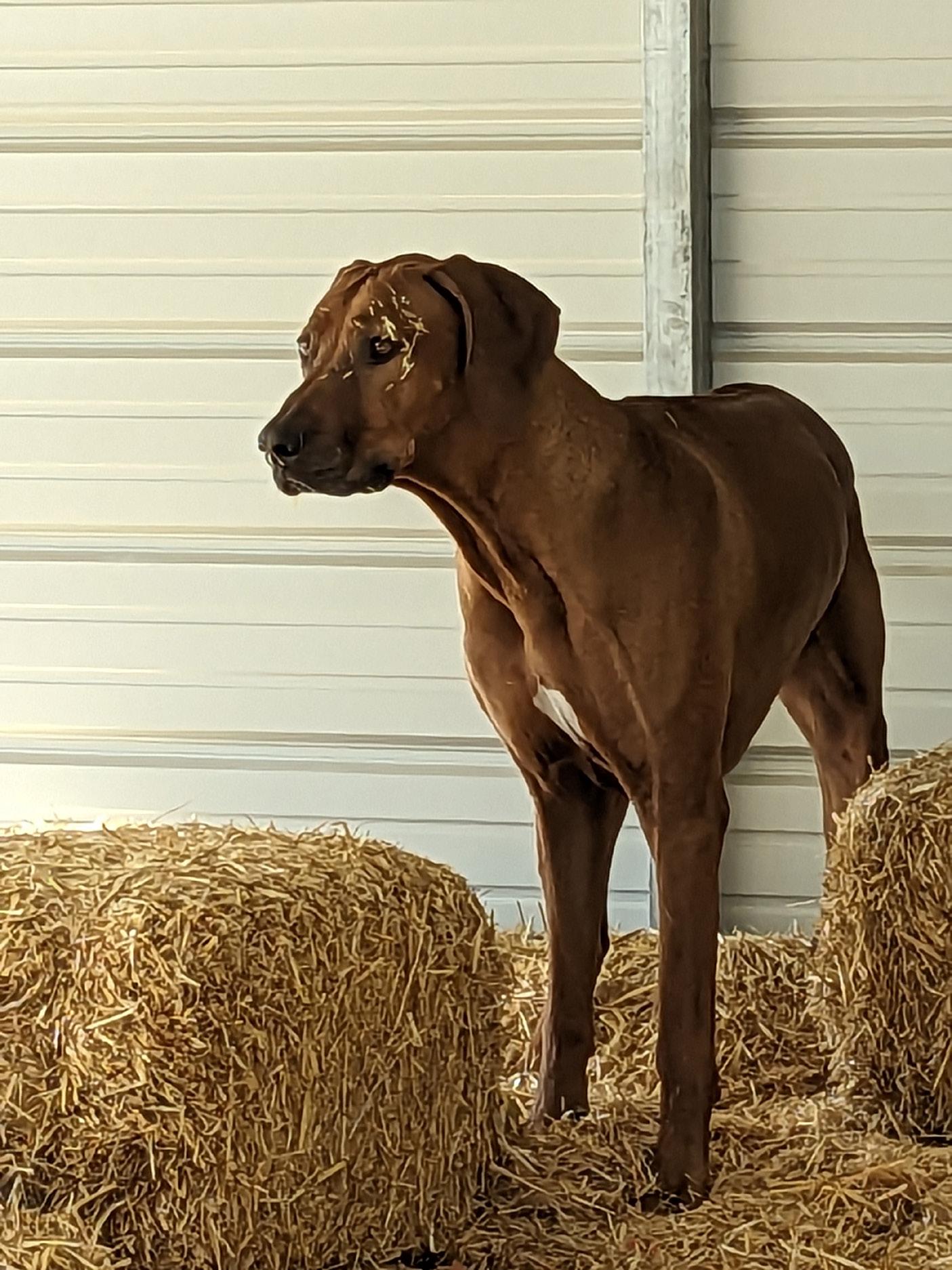
patient with Riggs and I (I think she may love Riggs). The training for us was simple. I showed him a rat in a tube and gave him a treat over the tube. He quickly figured out that if he smelled a rat and let me know about it he’d get a treat! Each time he put his nose on the tube with the rat he got a treat. Eventually we advanced to “find the rat, put your nose on it, paw it, look at me, get a treat”. He’s never really hit on rat bedding so in that I have been lucky! When we do make a mistake (he puts his nose on rat bedding – and I call “Rat!”) its because I misread his cues!
If you want to see Riggs and Rachel performing Barn Hunting you can see them through this link in YouTube https://youtu.be/cChCL9irU_4
108 RHODESIAN RIDGEBACK EU MAGAZINE



HYDROTHERAPY
Our Weekly Canine Fitness Routine

112 RHODESIAN RIDGEBACK EU MAGAZINE
Virag Orczi
Iwould like to introduce you to our hydrotherapy training sessions. While some of you may already be familiar with this type of training, there may be others who are looking for something new.
As a dog owner, I take a lot of pride in training my dogs, trying out new things with them, and watching them enjoy their time together. About two years ago, I discovered hydrotherapy training, which my dogs and I have really come to love. We now try to attend at least one training sessions every week. Unfortunately, such a dog fitness center can only be found in Budapest, Hungary, but it is in my immediate plans to open our own center soon.
SO, WHAT EXACTLY IS HYDROTHERAPY?
It’s a form of treatment used within physiotherapy that uses water to aid in the healing process. It’s particularly effective in rehabilitating dogs after surgery, treating locomotor and neurological problems, maintaining a dog’s condition, increasing muscle tone, and even treating obesity. During hydrotherapy treatment, we take advantage of the positive aspects of water resistance, heat, buoyancy, and hydrostatic pressure. By reducing body weight on land, the buoyancy of the water significantly lessens the load, making the treatment joint-friendly, strengthening, and muscle-building.
My dogs love the underwater treadmill training, which helps them prepare for exhibitions. Since this form of training protects my dogs’ joints while also providing a strengthening and musclebuilding function, I use it in all age groups. The intensity, duration, and angle of inclination are adjusted based on age and the desired outcome.
If you haven’t tried hydrotherapy training yet, I highly recommend it. You and your furry friend will love it!
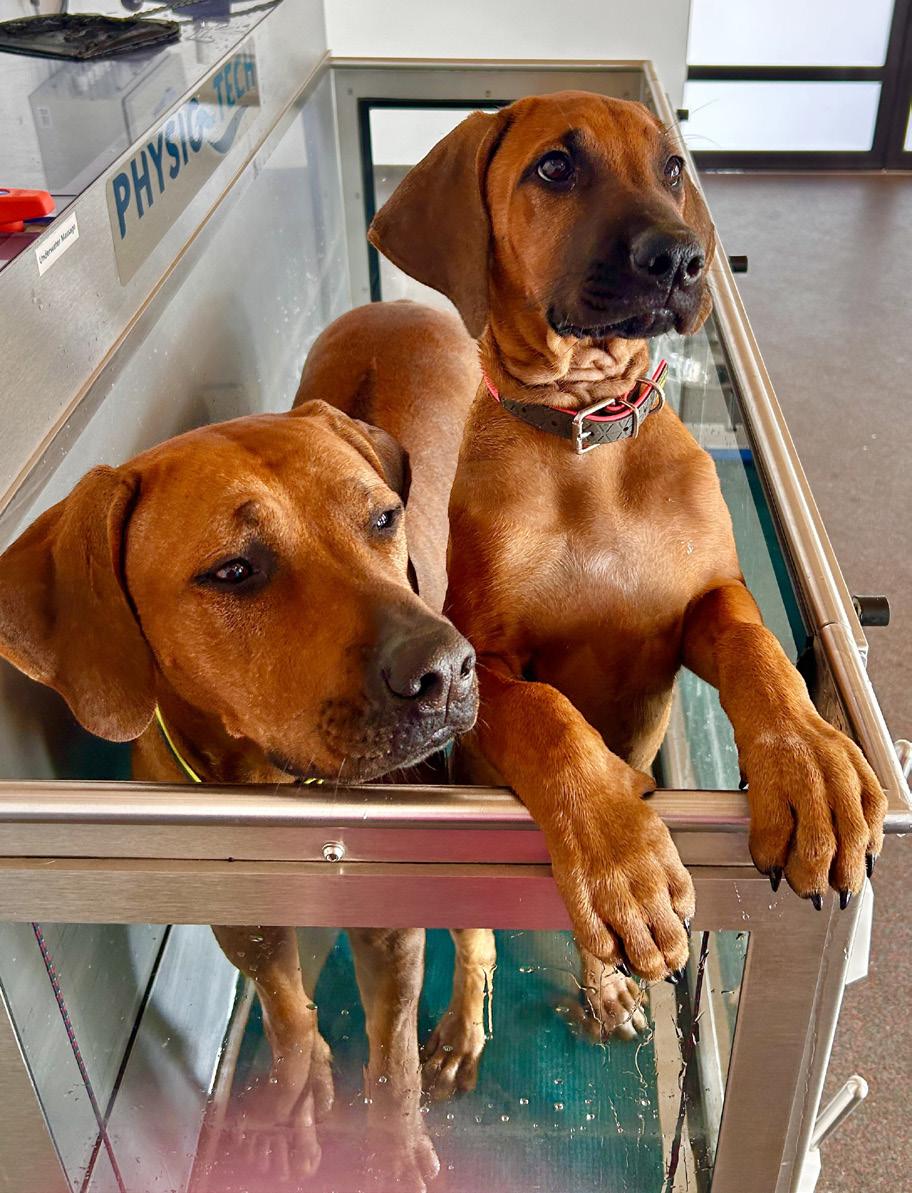
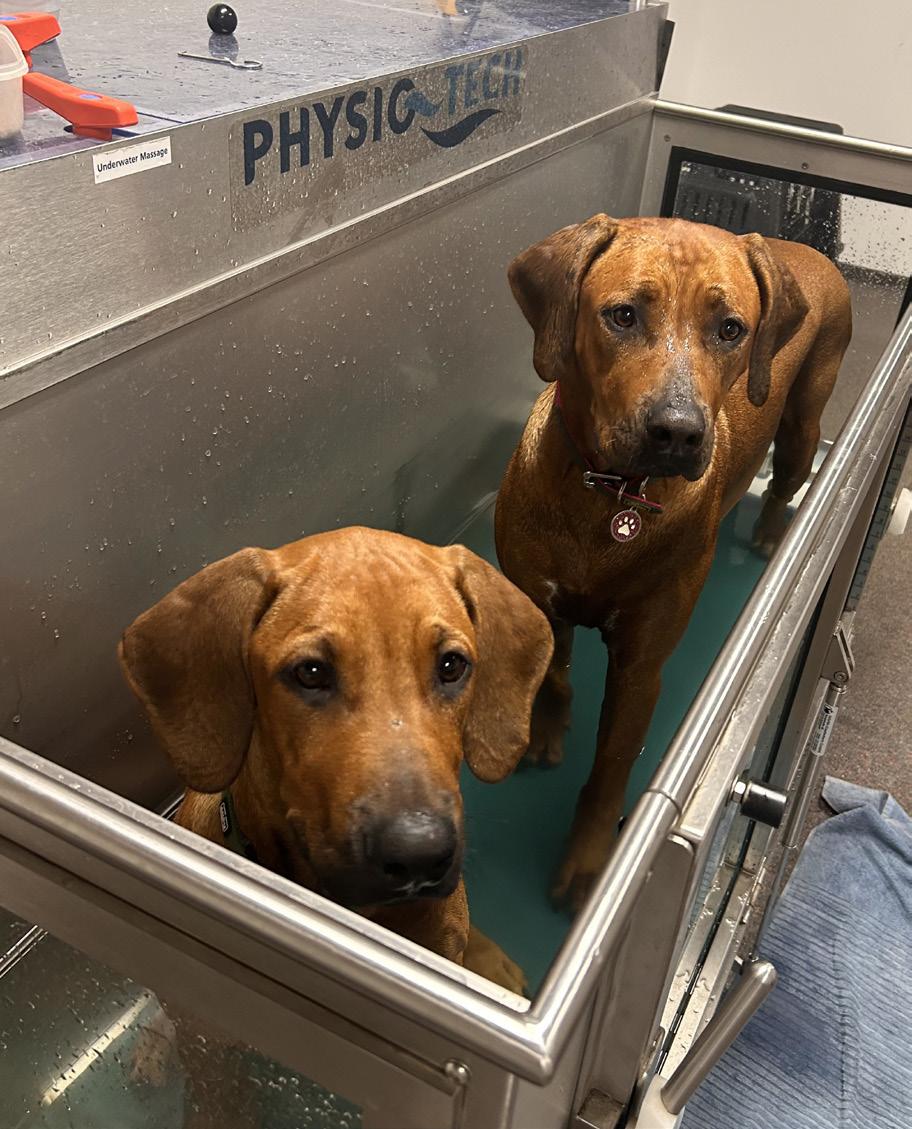
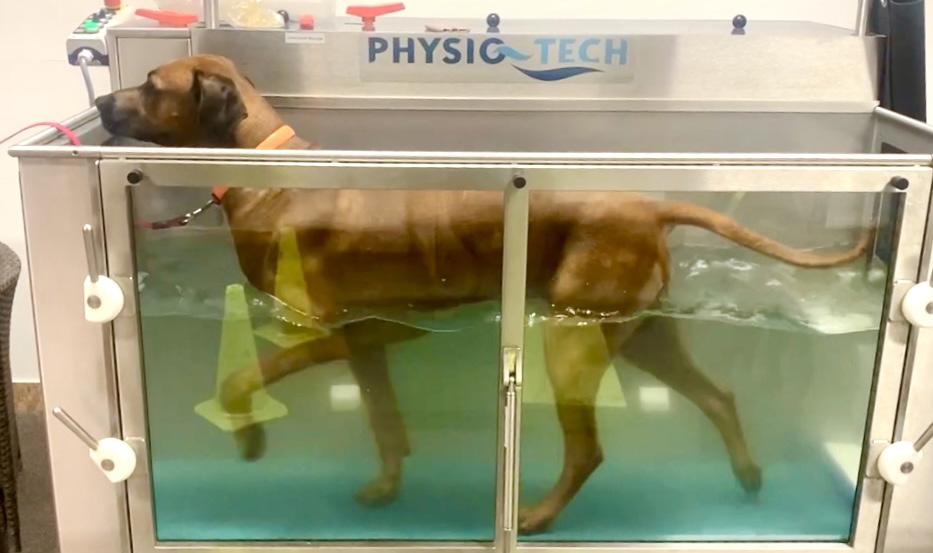
RHODESIAN RIDGEBACK EU MAGAZINE 113
PHYSIOTHERAPY AND THE HINDLIMB
Health and Your Rhodesian Ridgeback
114 RHODESIAN RIDGEBACK EU MAGAZINE
Nika Webster Vet Physio Pgd IAAT
We often hear the terms, “good angulation” and “good amount of bone” in relation to our breed. What we don’t always hear, is an explanation of why these things are important, or how we as owners, can assist in strengthening or improving the health of our dogs in relation to their joints and the surrounding musculature, aside from breeding for better construction, that is. Take for instance, the hindlimb.
The construction of the hindlimb is a huge consideration in the breeding programme. Aside from musculature that articulates to the right degree, having good “bone”, including the structure of the joint, is of equal importance. This is because the bone to which the muscles, tendons and ligaments attach must be an adequate size to allow strong attachment. For instance, the size of the calcaneal tuberosity, or hock, has a bearing on the attachment of the calcaneal tendon; the gastrocnemius, the biceps femoris, semitendinosus, and gracilis muscles, the main muscles of the hindlimb, (Figure A) which impact the stifle, and therefore angulation. Inadequate room for attachment of these important structures can lead to a change in the degree of angulation. These tissues can be negatively affected if their origin and insertion has weak attachment points, and this in turn often impacts other areas higher up, such as the sacroiliac region, and other areas of the lower back.
The back in general is protected from damaging vibrations during the various gaits when supported by good musculature with a good degree of angulation. Much like the coils that absorb the shock from the road in the suspension of a vehicle, good angulation absorbs the vibration from each footfall, before it reaches the back. Too straight, and the vibration is not absorbed by the leg, but goes straight to the back and affects the musculature of the lower back, which becomes tight with overuse.
A correctly angulated, (not under, nor over) wellmuscled hind quarter, with a good degree of flexibilty from healthy tissue therein, is a must, not just for that all important propulsion, but for the durability of the dog as a whole.
Breeders take into consideration many factors related to construction, and health, when choosing, or accepting a mate for their dog. Sometimes angulation that appeared perfect in a young dog may have changed, whether due to injury, over exercise, or other external factors. The good news is, to some degree, whatever the construction of your dog, and the angulation of the hindlimb, you can do your part to aid in the flexibility and strength of this important structure.
We are going to look at a few ways in which we can support the crucial structures in your dog’s hindleg, with massage techniques and gentle stretches. The benefits of massage are many,
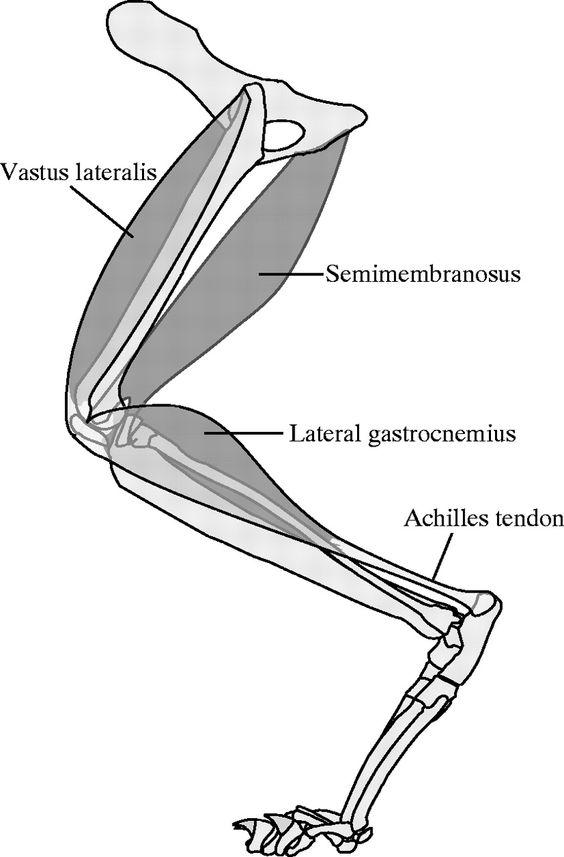
from relieving pain, tension and inflammation, to reducing adhesions and scar tissue, and the all important improvement in circulation and range of motion (ROM).
When it comes to massage and ROM exercises there are a few do’s and dont’s. It is important that during your exercises you never hold, restrict, or put pressure on the stifle area directly. Always grasp the limb underneath, or above the stifle, never actually on the stifle itself. Never over extend, or flex a limb too tightly, only work to gentle tension and always keep an eye and ear on the reactions of your dog. Your dog should look relaxed, comfortable, be on a flat surface (you may place a blanket underneath but not a cushioned bed as you want the spine to be in a neutral position). If your dog shows signs of discomfort, ie, panting, ears pinned back, wide eyes, growling, whining, drooling, or anything else you know to be a sign of stress in your dog stop immediately.
If your dog has cancer, is on medication, has an infection, has suffered previous issues with any of the structures in the hindlimb, is lame, has had surgery, with or if you are unsure, please check with your vet before you undertake to do any massage or stretching, as in these cases it may well be contraindicated. Puppies often benefit from massage and gentle stretching, but sessions must be very short and relaxed, do not attempt to restrain your puppy in any way, and do not put pressure on the joints or over extend them, as
RHODESIAN RIDGEBACK EU MAGAZINE 115
before the age of 18 months, those growth plates will still be open and with the greater degree of flexibility in a puppy, you may be tempted to take the limb too far. Often with puppies it is best just to get them used to the motion of gentle effleurage, with the hands lightly going over the body from nose to tail. Never, ever, stretch a dog with cold muscles. Muscles must always be warmed up, either by at least 15-20 minutes of massage, or a 15 minute walk, after which gentle stretches can be performed. Diathermy machines used by physiotherapists are often used to perform this function. A warm room is needed in which to perform the stretches also. Now we will examine simple massage techniques and a passive range of motion exercise that you can perform at home.
MASSAGE
Begin with your dog lying on his side, in a warm room with suitable flooring, and bedding. Heating may be needed if the room is cold, and a blanket over vet bedding that is soft but not too padded, as it is important not to alter the neutral position of the spine. Begin the massage by moving your hands lightly in the direction of the fur, starting from the neck and work towards the tail. Use the flat of your hand and stroke gently but firmly hand over hand, avoiding putting excessive pressure on bony prominences, such as the spine, shoulders and hips. Make sure to go over these areas with less pressure than the fleshy areas that have more covering. Your dog should appear relaxed. Choose a time when your dog is calm, not in play mode, and more likely to want to lie down and relax, such as after exercise. Do not massage immediately after feeding. Move the flat of your hand down the length of the dog, from neck to tail, hand over hand, and down the legs. Do this for approx 1520 minutes on the side you are working on. Pay attention to your dog while you are doing this. If there are temperature changes, note this. Heat in localised areas can mean soreness and injury.
PASSIVE RANGE OF MOTION EXERCISES (PROM) FOR THE HINDLIMB
1. FLEXION
Once your dog is relaxed, and the muscles are warmed up, with one hand below the stifle (but not on it) and the other hand below the hock, draw the leg towards you, in line with the natural movement of the leg, as in Fig 4. until you feel gentle tension. Your dog may not be able to flex well if he is not used to the exercise and may offer some resistance at first, especially if there is lower back pain, hamstring injury, or arthritis. Do not push your dog past his point of tension. Be aware that the more you practice these movements, the more supple your dog will become, do not expect too much of your dog at first. It takes time and patience. Hold this pose for 3- 5 seconds, and release. As your dog becomes


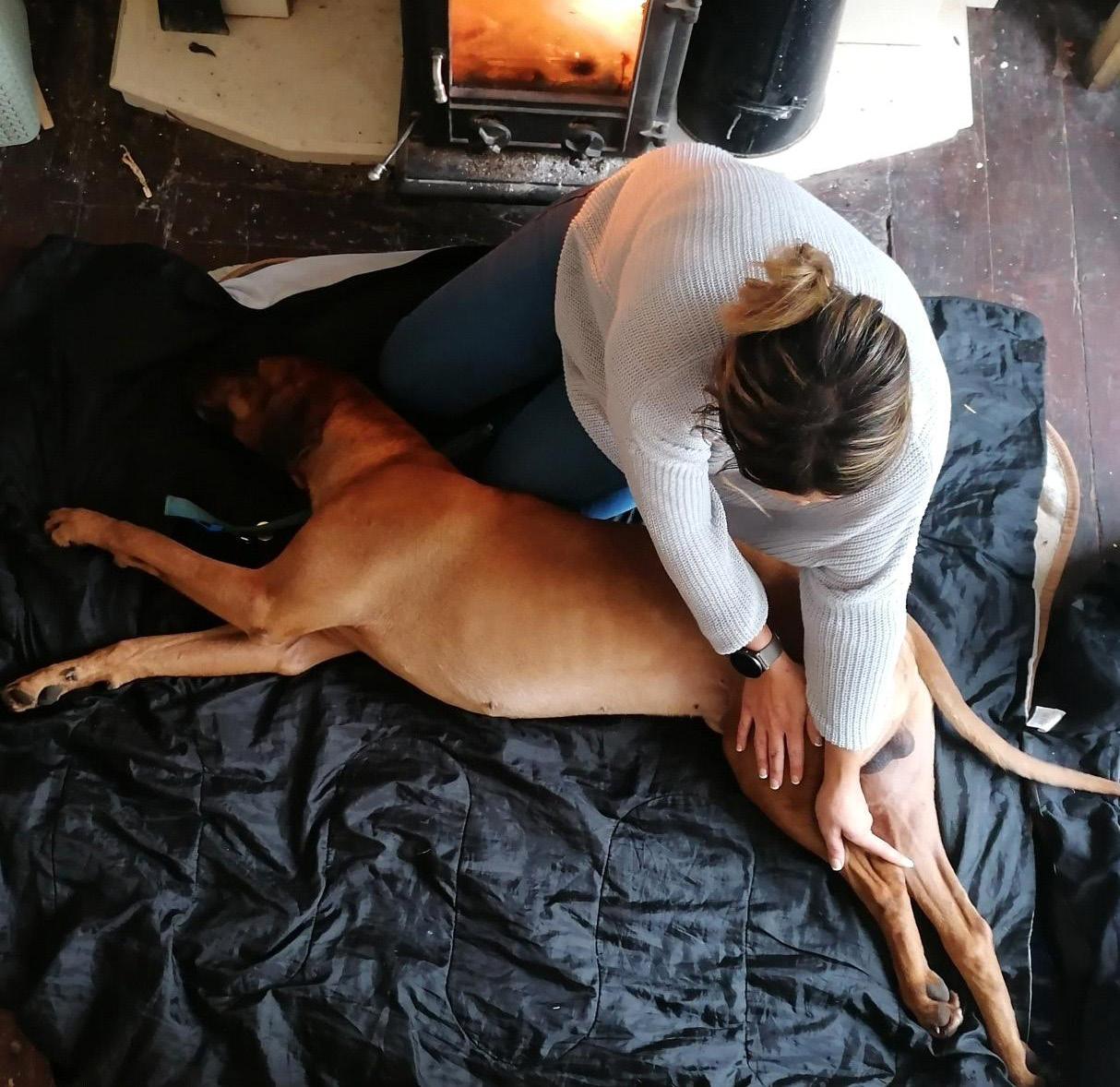
116 RHODESIAN RIDGEBACK EU MAGAZINE
Massage: Start at the neck
Massage: Work hand over hand
Massage: Stroke down the legs
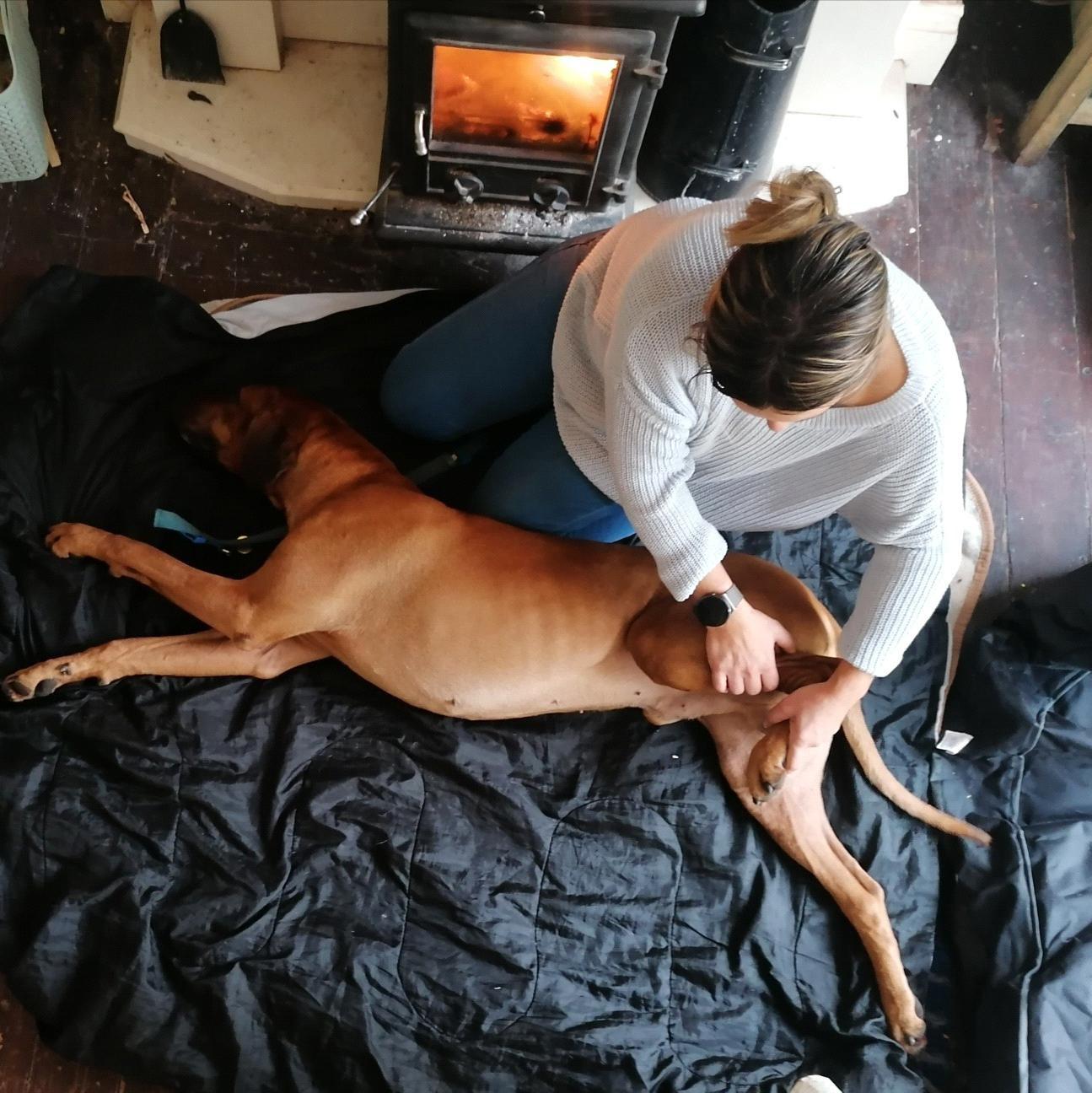


more supple, you will find that he will be able to hold it for longer, and his hip, stifle and hock may close further. Aim for 5 seconds initially, and release gently, and don’t just let the leg drop, but return it to it’s initial position. Some points to note: when performing these exercises, if the dogs back slides or moves, you are not getting the benefit of the exercise. Even if the movement is small, it is of some benefit. Try to keep the hip in the same place when you do these exercises. If the dogs lower back is sliding around on the mat you are over flexing/extending. Do not abduct or adduct the limb from the hip (i.e lift the leg high above the dog or low to the ground) keep it in line with the joint’s natural extension and flexion, (i.e how the leg would naturally swing forwards and backwards in line with the hip joint).
2. FORWARD EXTENSION
With one hand above the hock on the opposite side to the stifle, and the other below the hock, gently extend the limb until you feel gentle tension. Your dog should not arch his back or side away from you by the hip. Do not take this stretch too far, many dogs have lower back soreness and may find this quite a difficult stretch. You can wiggle the limb up and down a couple of millimetres to encourage the limb into the stretch if that is something your dog finds helpful. Hold the stretch for 3-5 seconds, and gently release.
3. REAR EXTENSION
With one hand above the stifle , and the other above the hock, gently stretch the hindlimb away behind the dog. Most dogs really enjoy this stretch and lean into it. Hold the pose for 3-5 seconds and relax the limb.
Perform exercises 1-3 over again, until you have completed the cycle 5-7 times. You can progress to 10 times if your dog is willing and happy for you to do so.
Doing this daily, or a few times a week at least, will improve the range of motion of the limb, help to elongate muscles and reduce scar tissue, contribute to the blood flow and health of the tissues therein and can even improve angulation to some degree.
RHODESIAN RIDGEBACK EU MAGAZINE 117
Forward extension of the Hindlimb
Rear Extension of the Hindlimb
Flexing the Hindlimb
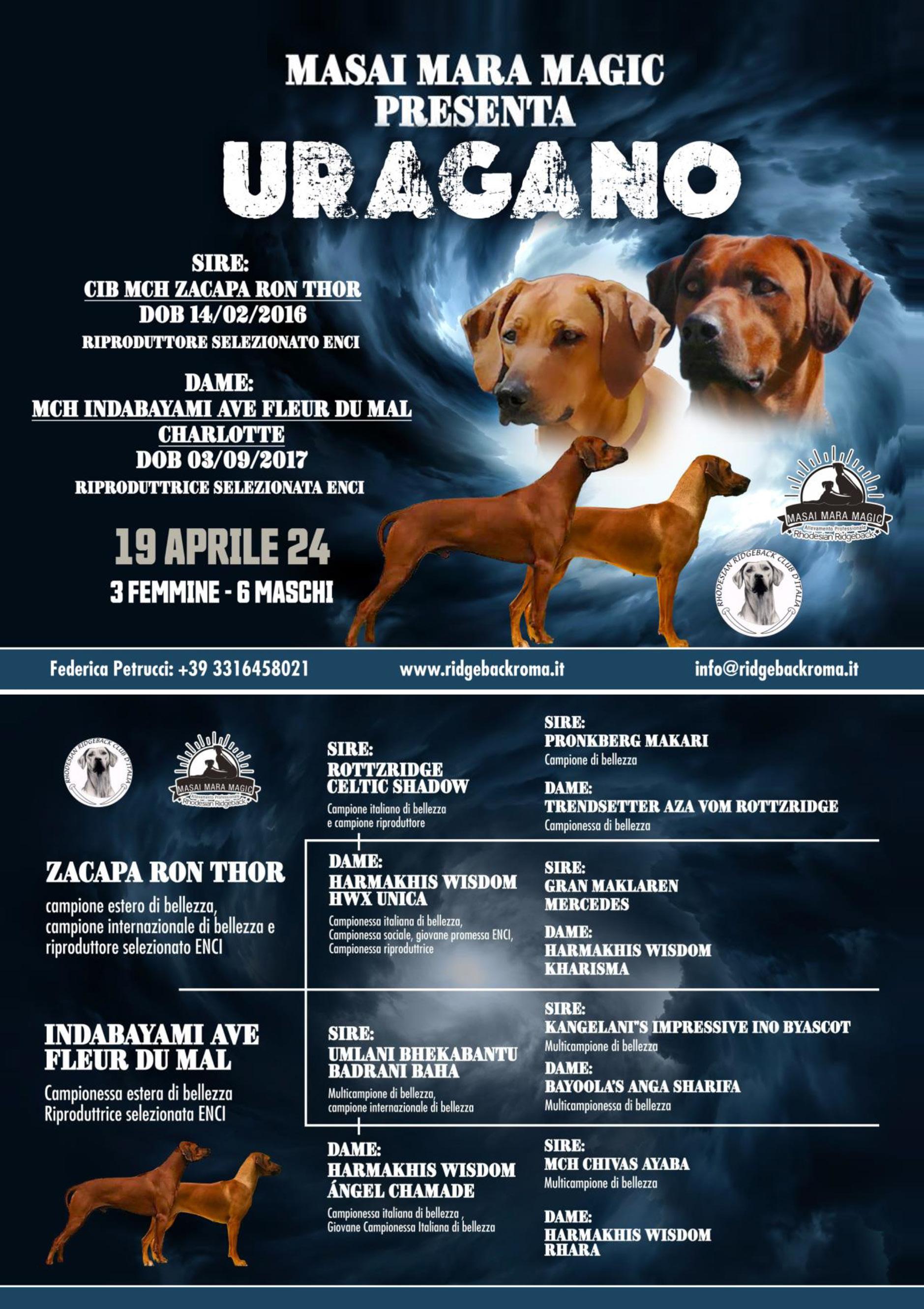
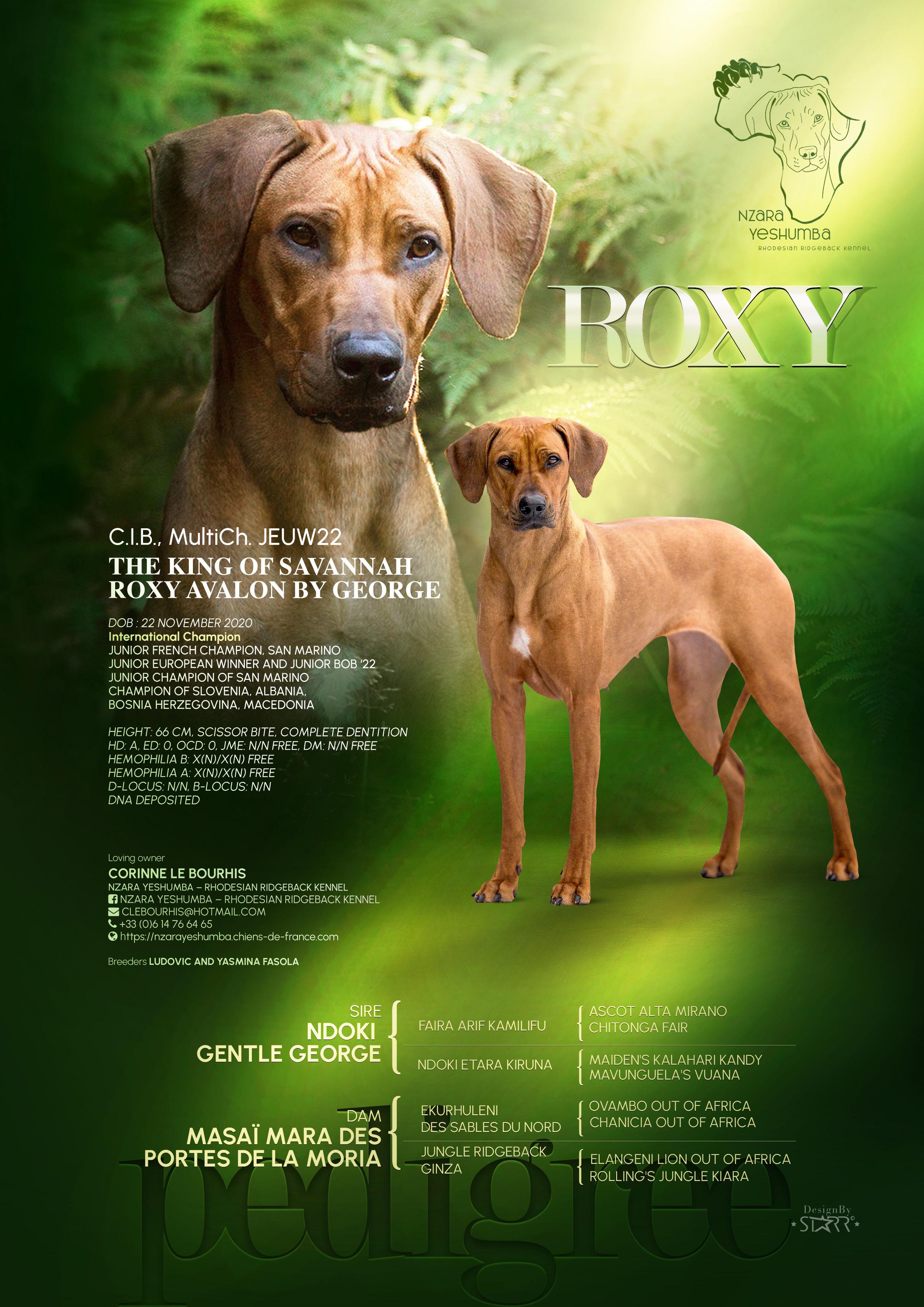
NACHO’S AGILITY ADVENTURE
ONE DOG’S JOURNEY FROM TRAINING HURDLES TO CHASING DIPLOMAS
Linda Lundqvist
”Nacho” Kadamo live life like Timon
Check us out on INSTAGRAM-SQUARE nacho_the_ridgeback #agilityridgebacknacho
“Nacho became the first Swedish RR with a diploma in Agility Class 1 in February 2024. ”

120 RHODESIAN RIDGEBACK EU MAGAZINE
DISCOVERING THE THRILLS AND CHALLENGES OF AGILITY TRAINING WITH NACHO THE RIDGEBACK, SWEDEN’S FIRST AGILITY DIPLOMA HOLDER IN CLASS 1
Nacho has always liked to run and jump so it was only natural that we tried the Agility obstacles at our local dog training club when Nacho was younger. Nacho is my first dog and we have tried many different dog sports together (Rally, Obe-
dience, Game track) and we both got hooked on Agility. All of a sudden I saw a completely different drive and commitment in Nacho compared to when we trained other things. As he is a Ridgeback, the drive has not been easy to find. In the beginning, we combined Agility with other sports, which also increased his commitment to training overall. It was great fun, and we were able to get our first diploma in the Rally beginner class in 2023. Lately, we have invested more and more in Agility and less in other sports. In the beginning, I was very careful not to train Agility too often, because Nacho had previously shown a tendency to get tired if I trained the same thing too often.
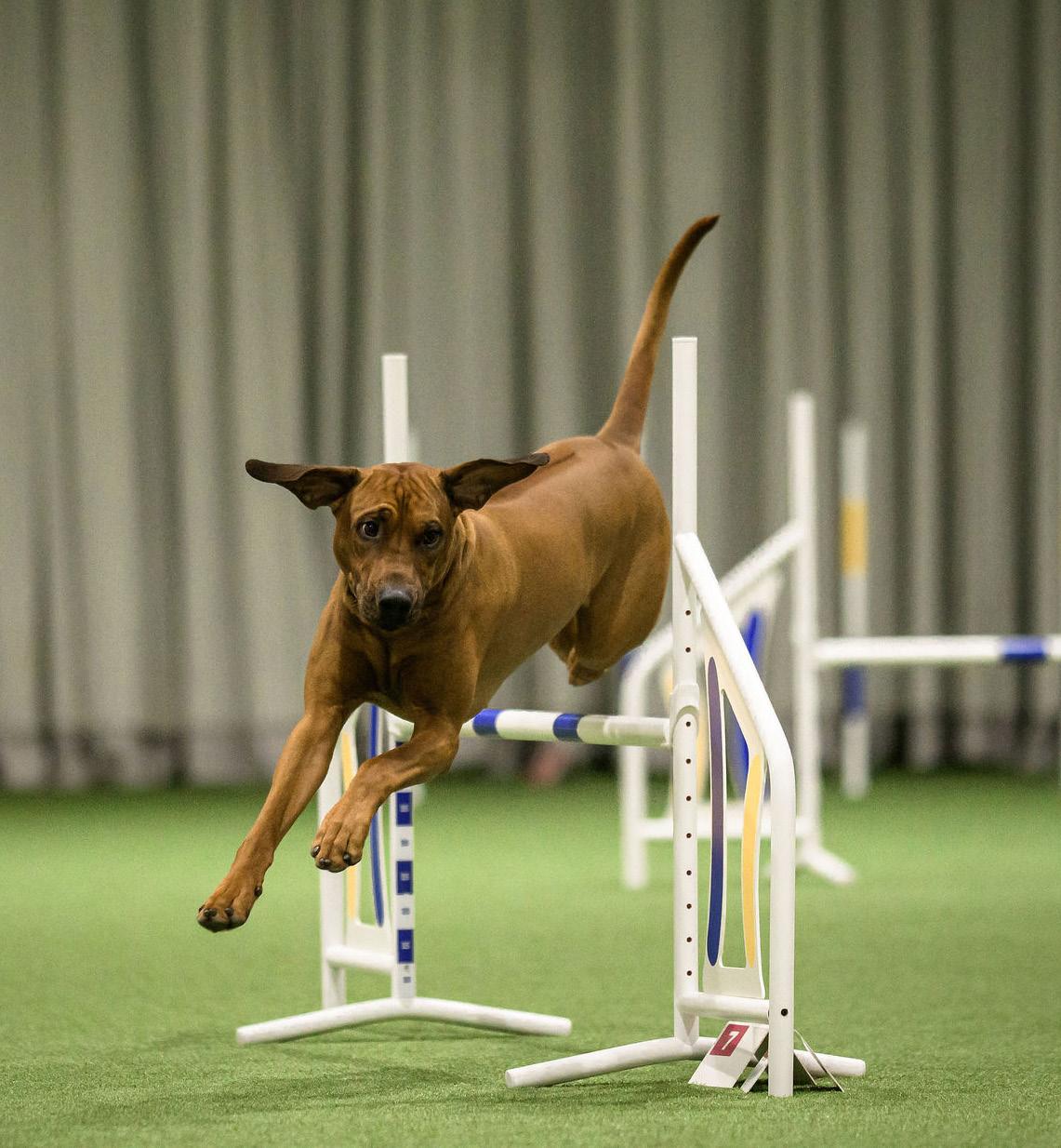
RHODESIAN RIDGEBACK EU MAGAZINE 121
Photo by Caroline Lindstedt INSTAGRAM-SQUARE @lindstedtfoto

These days we can easily train Agility five times a week, with equally high commitment every session. However, I try to stick to one to three training sessions a week plus competitions on top of that.
Nacho was born in December 2019 and when he came to me we were at the beginning of Covid with canceled puppy classes. The first year was a bit of a struggle for me as I needed and wanted to take a class, but it was hard to find. Nacho was not the easiest dog to teach as he had little interest in food and play. After six months we found a lovely trainer who taught us about toy/treat reward levels and only then did we start to find out what Nacho needed depending on the situation. Something we still work on, even today. I must always have a variety of toys and treats depending on Nacho’s mood for the day and what he finds motivating at that specific training session. In the beginning, we trained mainly in Rally and Game Track (he is a Game Track Champion), so it wasn’t until December 2021 that we took our first lesson in Agility. I thought no instructors wanted to train us considering the breed (Ridgebacks not being a typical agility breed), but how wrong I was! We have trained with many different instructors, and they have all been great to us. After that first les-
son, we started a basic Agility course. Before the course started, we started in an unofficial Agility competition with only jumping obstacles and tunnels, which we both thought was fun. It was then an even greater interest in Agility started when I realized that it is possible to compete with an RR.
“Nacho has always liked to run and jump, so it was only natural that we tried the agility obstacles at our local dog training club when Nacho was younger. ”
122 RHODESIAN RIDGEBACK EU MAGAZINE
Photo by Caroline Lindstedt INSTAGRAM-SQUARE @lindstedtfoto

We started the course in January 2022 but unfortunately, I got in the way when Nacho jumped an obstacle, and he jumped straight into my knee which was injured. Which within three weeks led to a complete tear of the cruciate ligament and meniscus. My partner and a friend continued to take the course with Nacho, and he showed how much fun he thought agility was. After my surgery, Nacho and I slowly started training agility together again. However, I could hardly walk, so we had very short training sessions with me limping alongside Nacho. However, the short sessions suited him very well and were good for his commitment, so we did several of those sessions a week. Throughout 2022, we did these “walking Agility” sessions. We continued to take Agility courses and private Agility lessons and learned a lot. We competed in more unofficial competitions, even though I could only walk in the tracks, with great results and Nacho had a lot of fun. We managed to do several clear rounds.
In February 2023 we started our first official competition. There is a class called jumping class where only jumping obstacles, tunnels, and slalom are included. The second class is called the agility class, which in addition to obstacles, tunnels, and slalom also includes the contact field obstacles balance, A-frame, and seesaw. At these obstacles, the dog must touch a colored area at the end of each obstacle. We both think the agility class is the most fun, but of course, competing in jumping is fun as well. In both classes, you collect legs (as it is called in Sweden) to get a diploma and promotion to the next class. There are classes 1, 2, and 3. In class 1, 15% of those who fail to get a leg 3 legs are required for promotion in all classes, and 5 legs are required for a diploma. The diplomas only came in 2015, so there are not many RRs in Sweden who have diplomas, as several who competed did so before 2015. However, several RRs competed in class 3 and chased legs in the Swedish championships (SM). But so far, no one has ever become a champion. Nacho became the first Swedish RR with a diploma in Agility Class 1 in February 2024 and we now only have two legs sticks left for the diploma in Jump 1,
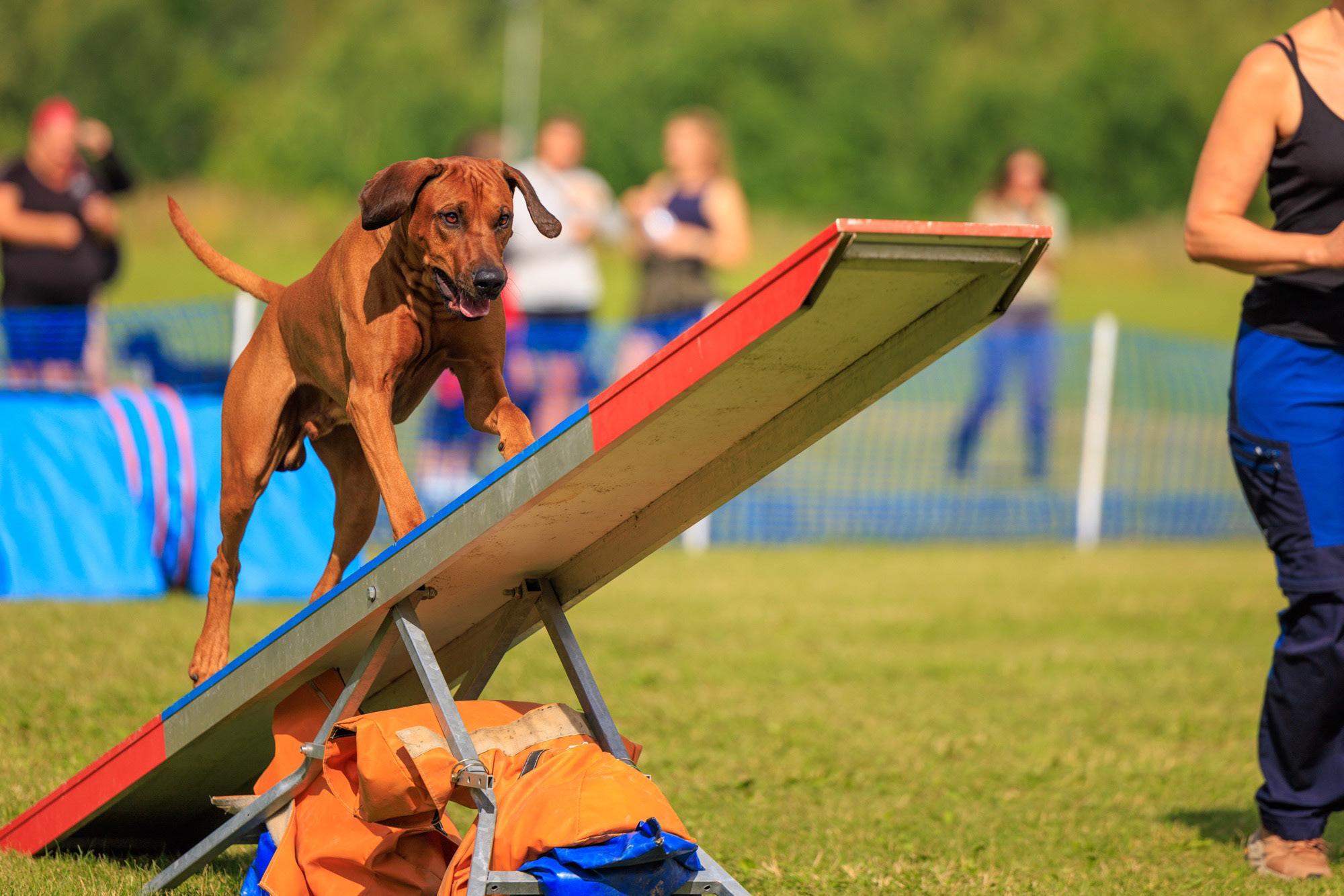
RHODESIAN RIDGEBACK EU MAGAZINE 123
Photo by Daniel Fredriksson
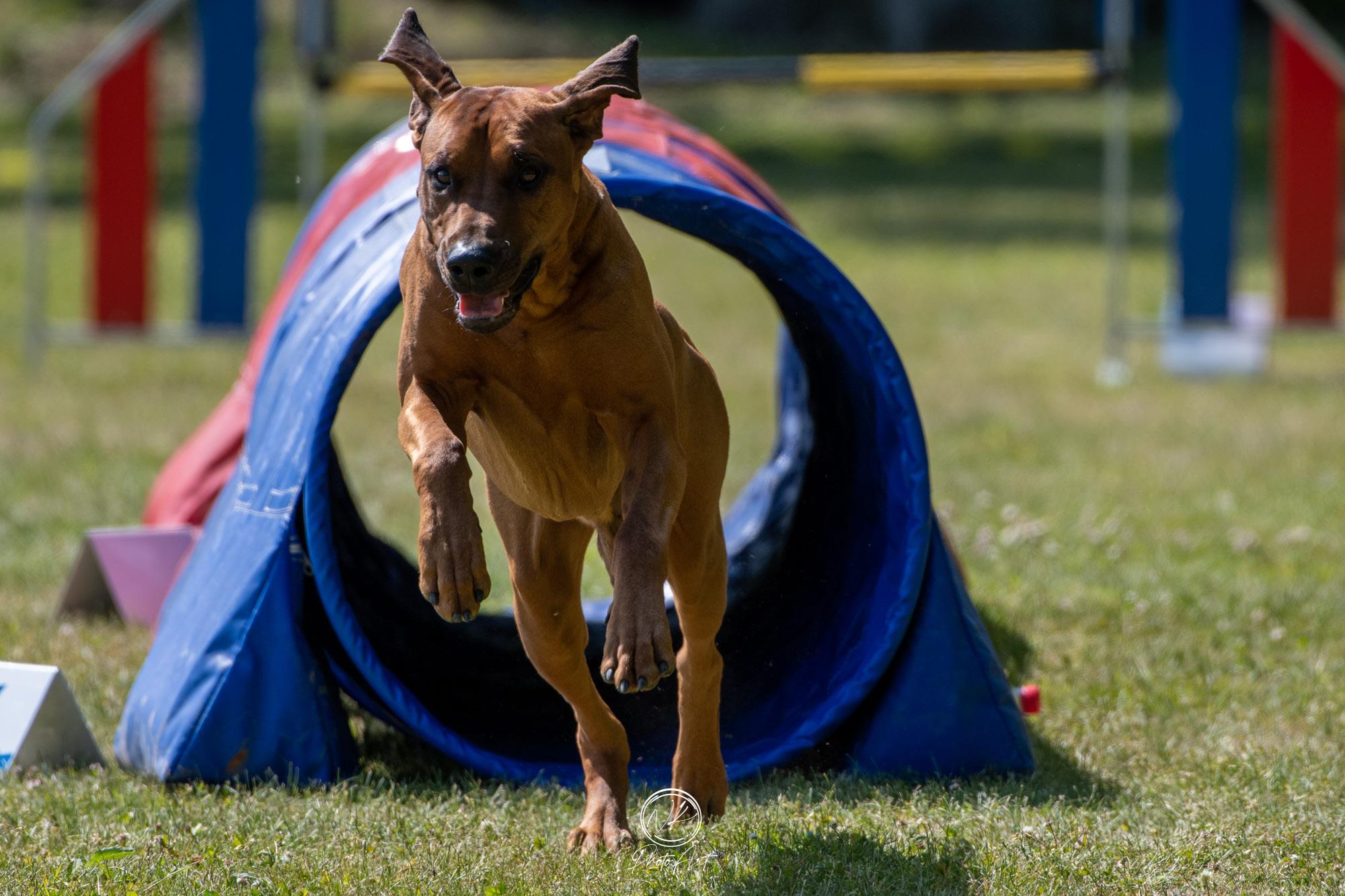
which we are fighting for. If Nacho gets the diploma in Jump 1, he will be the second Swedish RR to receive that diploma.
Now we compete in agility class 2 and have a great time. So far it’s been a lot of fun courses which has suited Nacho well, but so far no clear rounds. We’ve always had a bit of a problem with the slalom so unfortunately we mostly get disqualified in slalom. We now have restarted the training with slalom, and gotten back to the basics, and I hope that it will help in the future.
Nacho is generally always the biggest dog at competitions and often arouses curiosity and gets nice comments from people. I’m often told that he looks so happy when he’s training/competing and that’s the most important thing to us and to hear that always makes me happy. As we all know, it’s almost impossible to force an RR to do something, so I’m grateful for all the times we train/compete together because I’m also hooked on agility.
Training Nacho is not entirely easy, even though he generally has a high level of commitment. It’s important to run sufficiently long sessions and not to do the same thing too many times. Generally, it’s ok to repeat 3-5 times, then we have to do something else. To have variety in the training is important. For example, I can’t just practice tight swings during a session, I also need to put in some “front” training, for variety and to increase
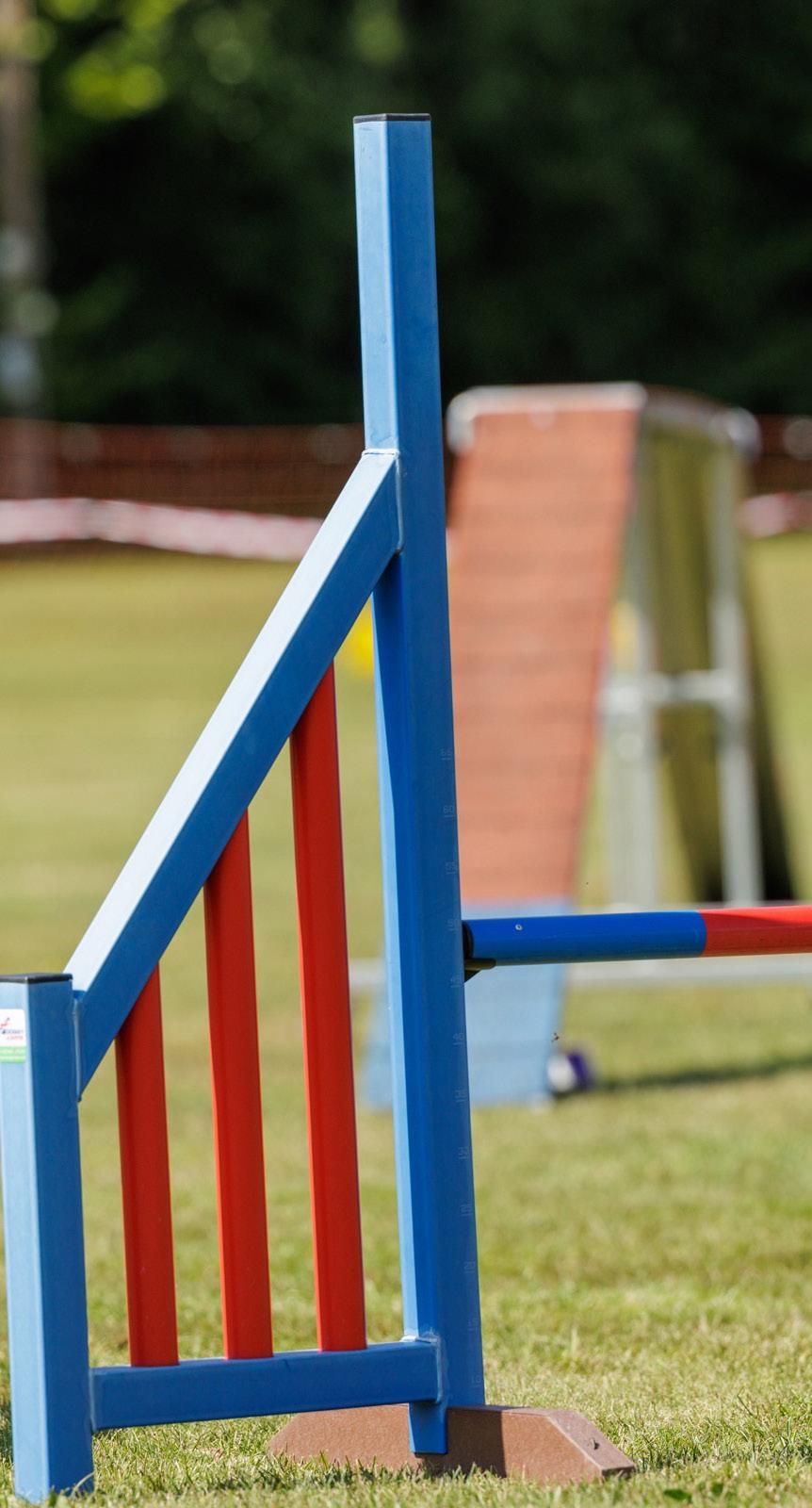
124 RHODESIAN RIDGEBACK EU MAGAZINE
Photo by Niklas Katajamäki
Photo by Daniel Fredriksson
“The important thing, however, is that we continue to have fun together, and that is always the most important thing. ”

his interest. After a session, which is about 5-8 min we take breaks. Tight turns were boring and heavy for him for a long time, but now that I’m starting to understand how to behave, I’ve seen that Nacho is having fun doing it too. The better I get, the better he gets. There we have a slight disadvantage as I need to practice a lot and grind to get it into my muscle memory, while Nacho doesn’t give me too many chances. A constant battle in our sessions. To do enough, not too much, and not too little. I have concluded that Nacho reads my body language more than the words I say, which places high demands on me as a handler to behave correctly. Often we train at a lower altitude as he can then endure more and is more forgiving when I make mistakes.
The goal for 2024 is to get a diploma in jumping 1 and the dream would also be a diploma in class 2 in both agility and jumping. How cool would that be? The important thing, however, is that we continue to have fun together and that is always the most important thing. After all, that’s why we do agility, because it’s so much fun!
FACTS
Tunnel 60cm diameter
Balance obstacle 360380cm x3 per section 130cm high and 30cm wide
A frame 160cm high
Weave poles 60cm between the sticks 12 sticks.
Jump obstacle 50-60cm (varies between classes)
• Tire diameter: 50-60
• Long jump 120-150cm
RHODESIAN RIDGEBACK EU MAGAZINE 125

 WRITTEN BY ANA JURIĆ
WRITTEN BY ANA JURIĆ
BARF
CAN A PUPPY EAT BARF?
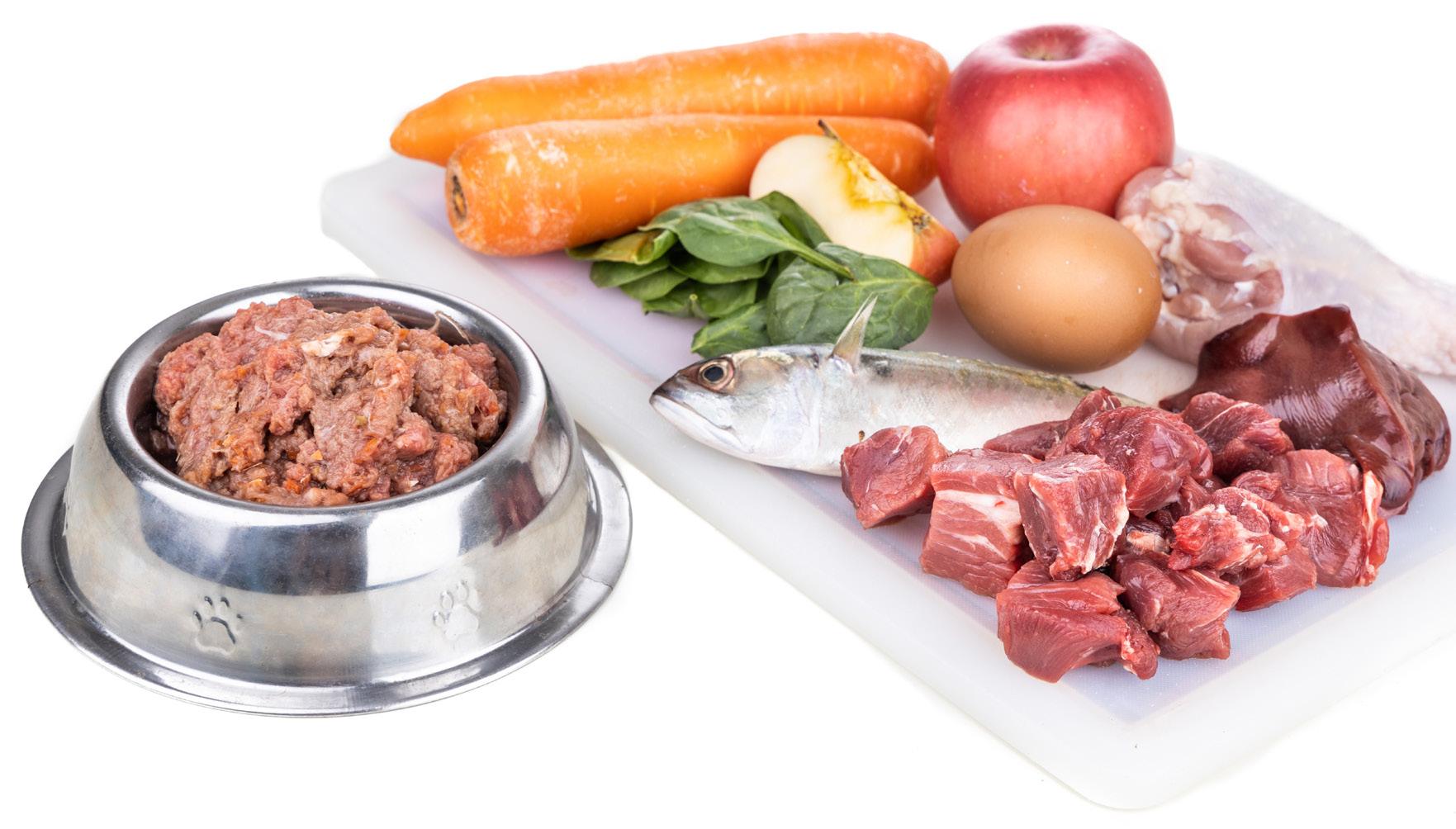
I am often asked if a puppy can be fed the BARF diet, and if so when is the best time to start.
There is no such thing as the right time to start, I am of the opinion that the earlier you start the better, so if you plan a litter and want to wean it on BARF it will be a wonderful thing. My advice would be to start the transition from commercial to BARF feeding early on with the mother-to-be, who will already pass on important nutrients to the foetuses (at least a couple of months before the mating).
If you want to start with BARF from weaning, one thing to pay attention to will be oral tolerance, i.e. the body’s immunological insensitivity to ingested food, you will need to add a few new, mostly digestible and additive-free foods so that the oral tolerance has time to recognise and assimilate them.
Start with one type of protein, possibly giving large pieces that the puppies can share together with minced meat of the same protein.
Avoid meats to which the mother is allergic and very fatty meats.
From the fourth week the food is given three times a day, the rest of the meals will be mother’s milk.
After the fifth week, all components and a new protein are gradually added.
In terms of quantity, the more the mother’s milk decreases, the more the solid food increases.
From the eighth week the puppy can switch to a full BARF plan, and the percentage of food should be 8-12% of the body weight.
If, on the other hand, you take a puppy fed with commercial dog food, no problem, the transition will be quicker than with adult dogs.
Initially the percentage will be high 6-8% of the body weight, and as the puppy grows (so the weight increases) the percentage will go down (16 weeks: 4-6%, 6 months 4%, 18 months: 2-4%).
If you give a lot of treats and chews, you will have to subtract a little from the amount of food.
Up to 6 months it is advisable to give 3 meals a day, then it can be reduced to 2 or 1.
It would be a good idea to have a check-up with the nutritionist every 2-3 weeks to adjust the diet. Even in this case you are not going to put 10 different types of protein, 2 or 3 will be more than enough.
A dog that starts feeding on the BARF diet as a puppy will have a healthy microbiome and will be more difficult to go into dysbiosis.
A healthy microbiome is crucial for a strong immune system, as the gut will be populated with good bacteria that will be able to fight off pathogens.
Any time is a good time to change and make your dog happy to feed naturally, but the sooner we do this, the greater the benefits of healthy living will be.
128 RHODESIAN RIDGEBACK EU MAGAZINE


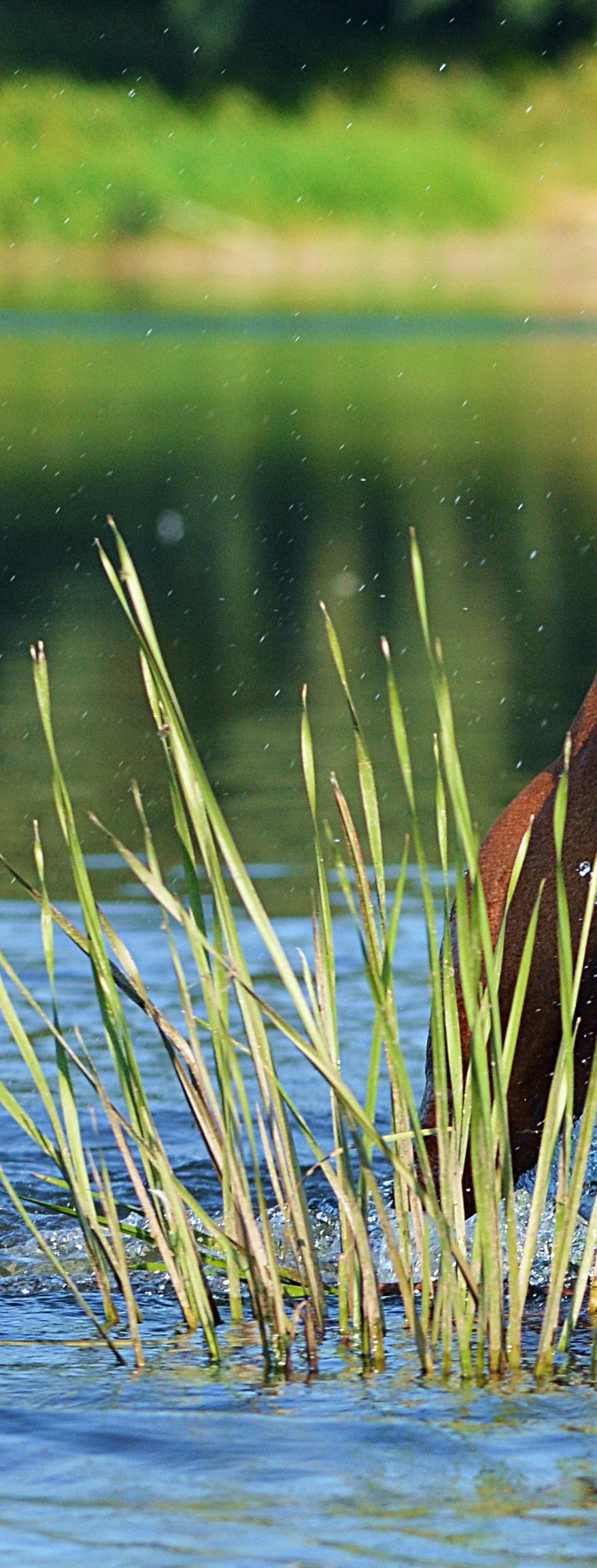
GATHIILEOGINGER
130 RHODESIAN RIDGEBACK EU MAGAZINE
ALF

OUR
OLDY
LORETTA BICZYSKO-TEPEREK
ALF OLDY
Our beloved boy Alf, Ch JCh GATHII Leo Ginger was born April 25th, 2013 in the Polish kennel Leo Ginger, the G-litter.
His father Cynamon coming from my favorite kennel Ciepły Dom breed by Edyta Gwarda-Gruszczyńska.
The blue color symbolizes serenity, stability, or wisdom so the blue ribbon which he got from his breeder made him very special from the start of his life until now. The breeder Ewelina Pyzik have given us the best buddy, a loyal friend and heartbreaker and we couldn’t imagine a better dog!
Alf. His name was not accidental, because it reminds us of an TV series creature from the 90s, who came from Planet Melmac to the Tanner family on the Earth. From the very beginning, Alf gave us great happiness and filled our lives. If you never had a
Ridgeback you never know, but from the moment Alf came into our lives he changed everything.
We moved from the city to the countryside to small Dacia in the forest, bought a bigger car, bigger sofa etc. Alf created a great passion for the breed in us, so much that we adopted a livernose boy Baloo. 2 years later we imported from Belgium female Cataleya but that was not enough! I don’t know at what point something went wrong (laugh) but the Rhodesian Ridgebacks, headed by our Alf, made a new lifestyle for us.
Our boy apart from being a great family dog, also had some dog shows successes, even though he didn’t really like showing, he got his Junior Champion and Champion titles. He is also a father of eight wonderful litters in Europe, a lot of his offspring

132 RHODESIAN RIDGEBACK EU MAGAZINE
are now Champions from several countries. The reflection of this is the proof, a really good stud dog lives in his progeny - it’s a mirror!
Currently, Alf is on well-deservedly retirement but looking better than a lot of his peers, he spent a lot of time in the garden playing together with the youngsters.
Dear Alf! We are so thankful for every day with you, please stay happy, enjoy excellent health and stay in great shape and we wish for you for many more years.


RHODESIAN RIDGEBACK EU MAGAZINE 133


SEE THROUGH CAMERA LENS.....

We are thrilled to introduce to you four brilliant photographers, they all have one thing in common....they see your dogs through their camera lens.
We have asked some of our favourite photographers some question with regards to their work, read their stories.
“ SAY CHEESE ”
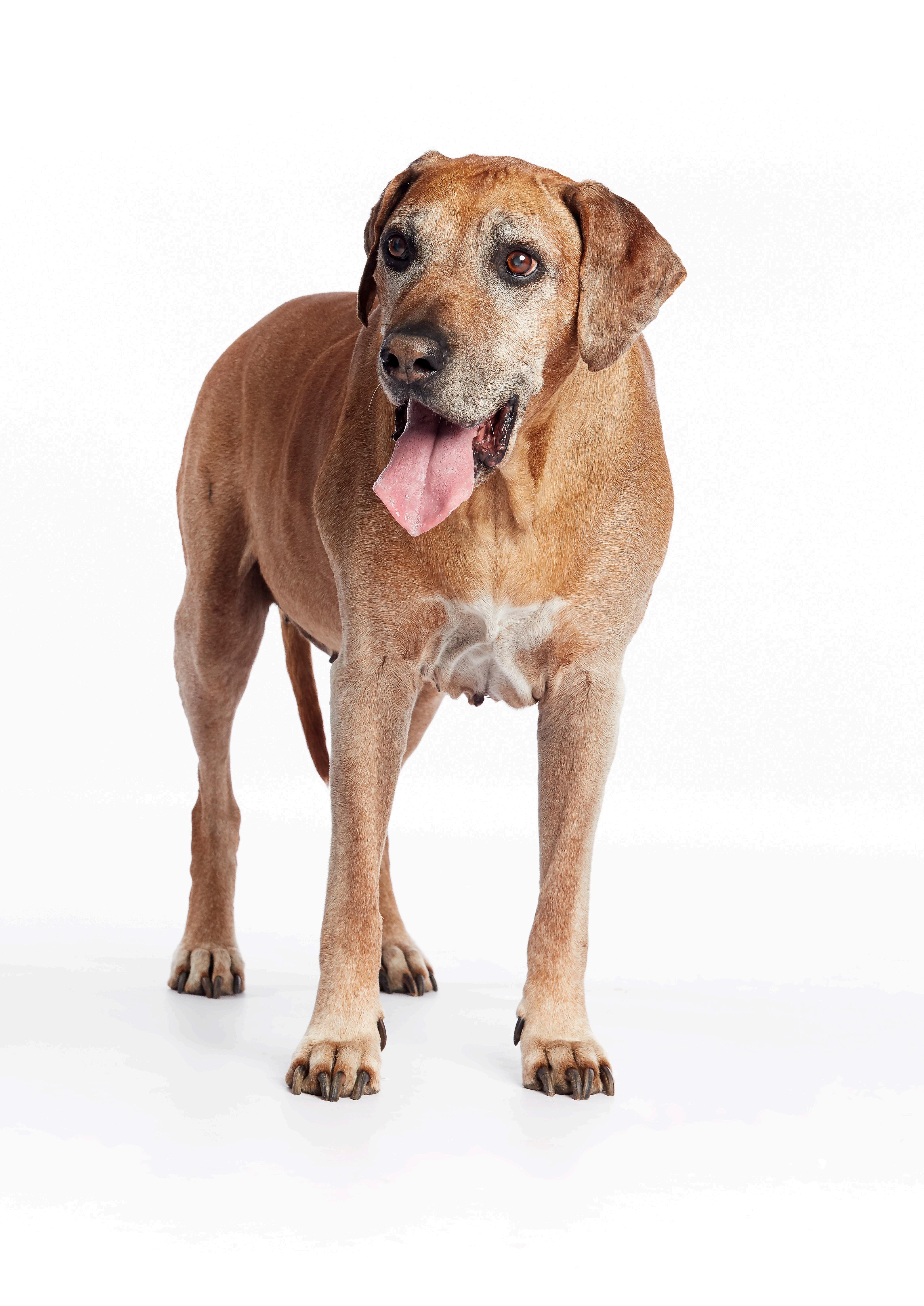

DINA UNTERSEE
AN INTERVIEW
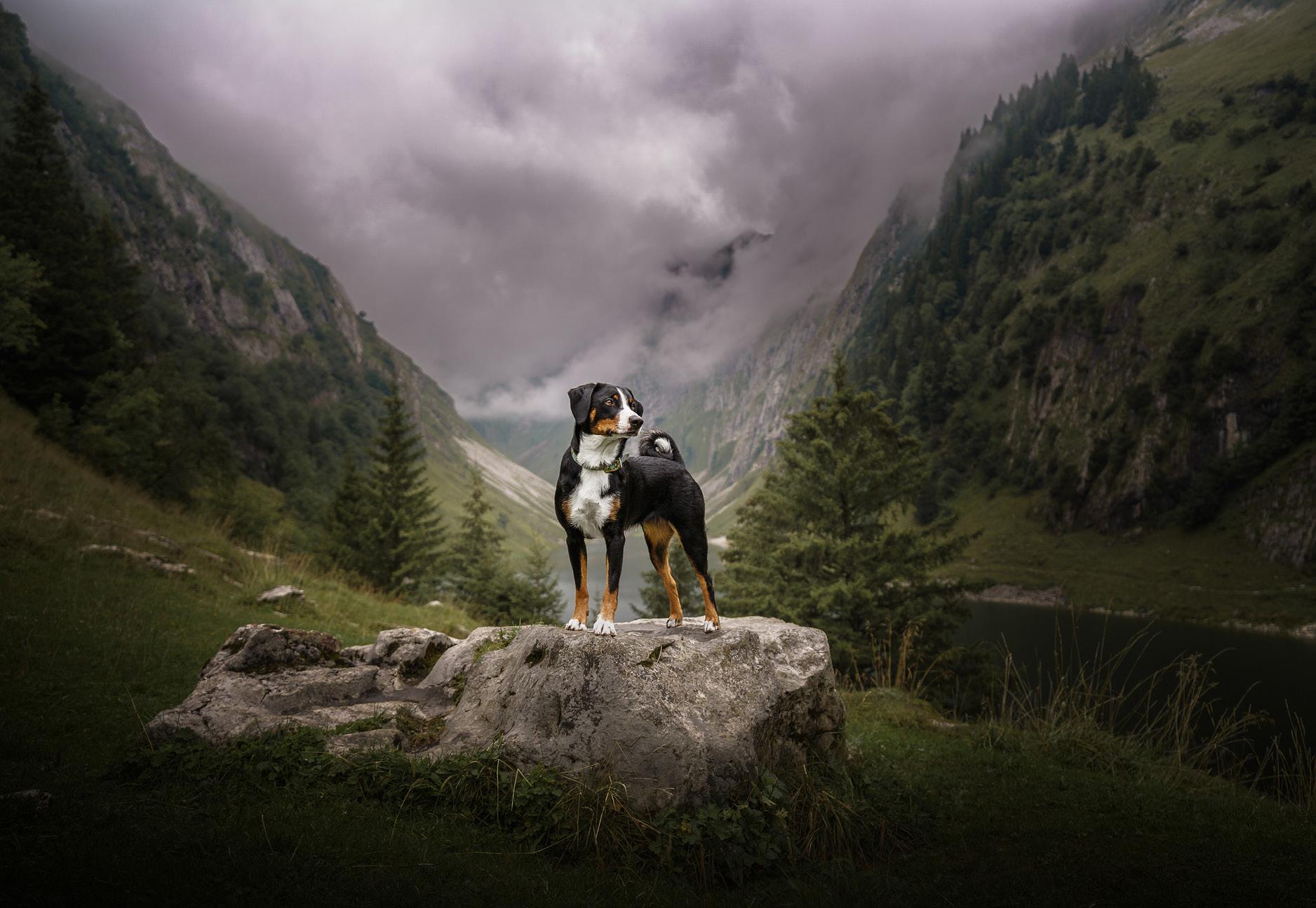
PLEASE TELL US ABOUT YOURSELF. HOW DID YOU COME ABOUT BEING A DOG PHOTOGRAPHER AND HOW LONG HAVE YOU BEEN DOING IT?
My name is Dina, and I am a dog photographer from Switzerland. Since my childhood, I have loved capturing moments in photographs. Ever since our first Appenzell Cattle Dog, Elvis, joined our family 15 ½ years ago, the camera has always been within reach. However, initially, I was often frustrated because I couldn’t put my ideas into practice with my then-current camera. I often failed with action shots: hardly any were sharp. This was probably also because I let my camera make all the decisions; I shot in automatic mode.
In 2020, I decided to buy a professional camera and delve deeper into photography. The automatic mode was banished; these days, I decide on all
camera settings, shooting only in manual mode. As a self-taught photographer and with many YouTube tutorials, I have made a lot of progress. Before deciding to become a dog photographer, I also attended workshops with renowned photographers such as Ria Putzker and Anne Geier to further perfect my craft. I have been working as a dog photographer for 3 years now and I am regularly booked by clients.
HOW DID YOU FIRST ENTER THE PHOTOGRAPHY WORLD? DID YOU HAVE FORMAL TRAINING? HOW LONG HAVE YOU BEEN A PHOTOGRAPHER?
Photography has fascinated me since childhood, but it took some time before I seriously pursued it. I did not complete formal education in photography;
138 RHODESIAN RIDGEBACK EU MAGAZINE
Switzerland І www.dina-untersee.ch І dina@dina-untersee.ch І Dina Untersee Photography
my professional background is in finance and accounting. Nonetheless, photography has always been a creative hobby of mine. When I decided to leave my job to focus entirely on my dogs and my dog BARF shop, I had the opportunity to pursue my passion for photography further.
The purchase of my first professional camera in 2020 was a significant turning point in my photographic journey. This step allowed me to realise my artistic ambitions to a new level and delve deeper into photography. Since then, I have continuously improved my skills as a photographer. Photography has not only opened up new creative possibilities for me but has also become a way for me to share my passion for dogs and nature with others. I am proud to have been working as a photographer for some time now and look forward to developing my skills and passion in the future.
WHAT OR WHO GOT YOU STARTED PHOTOGRAPHING DOGS?
The arrival of our youngest Appenzell Cattle Dog, Lumikki, was a decisive moment. Her lively personality and natural talent as a model inspired me to explore the world of dog photography

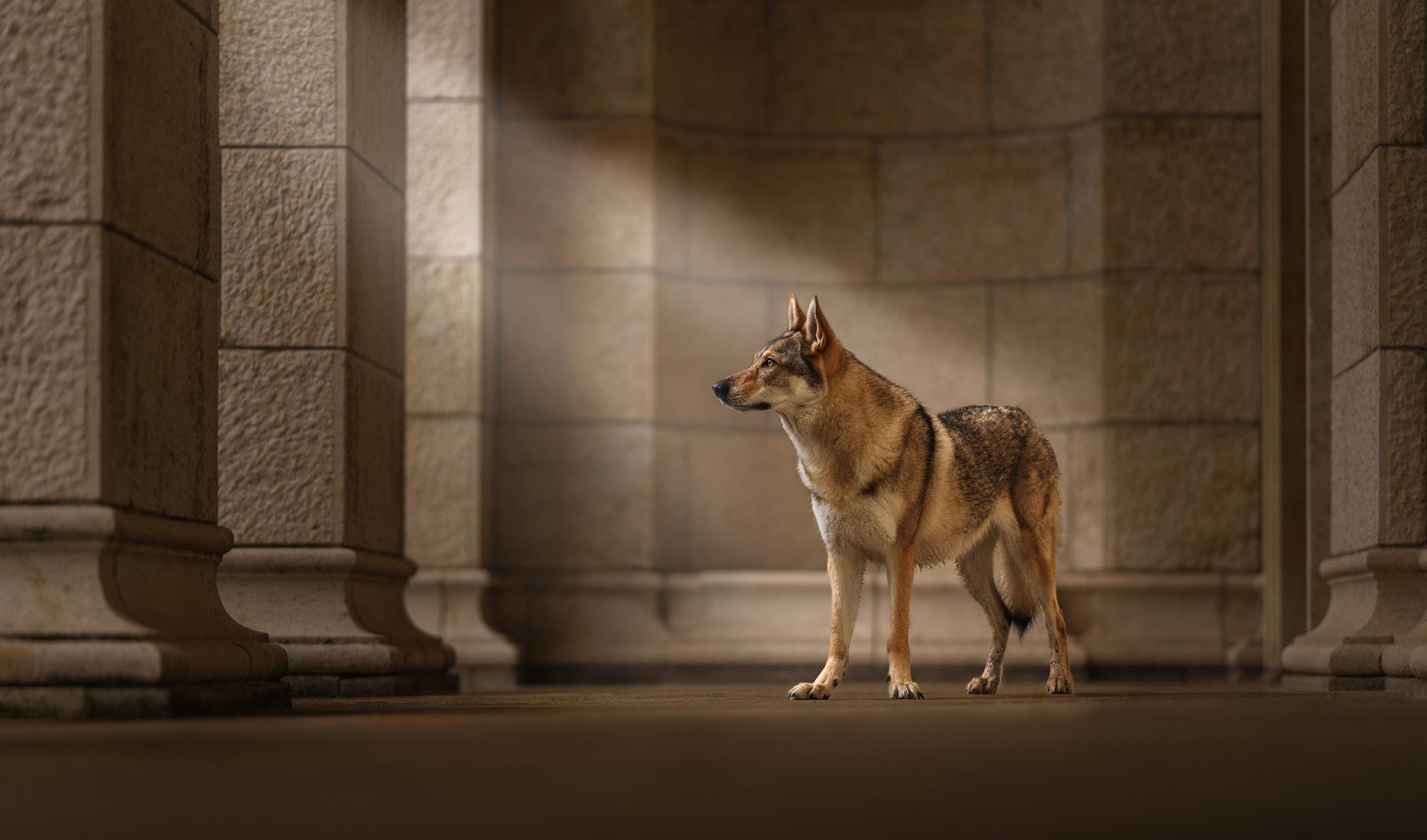
RHODESIAN RIDGEBACK EU MAGAZINE 139
further. Through regular updates on social media under the title “Hey, it’s me, Lumikki,” not only her fan base grew, but also my passion for dog photography. Lumikki became a shooting star, mastering not only poses but also enjoying acting independently in front of the camera. Her presence at exhibitions and in the agility scene led to more and more requests from other dog owners who also wanted to showcase their dogs.
WHAT TYPE OF CAMERAS DO YOU SHOOT WITH? WHICH IS YOUR FAVOURITE LENS AND WHY?
I belong to “Team Sony” and work with the mirrorless Sony a7III. However, I am planning an upgrade this year, if only I could decide on one camera. My favorite lens is the prime lens Sigma 135mm, which is particularly suitable for portrait photography. This lens, along with the Sigma 35mm, is always part of my standard kit in my camera backpack. I particularly love the 35mm lens for capturing dogs in the landscape. However, for dog shows, agility, and generally for action photography, I prefer the Sony 70-200mm zoom lens.
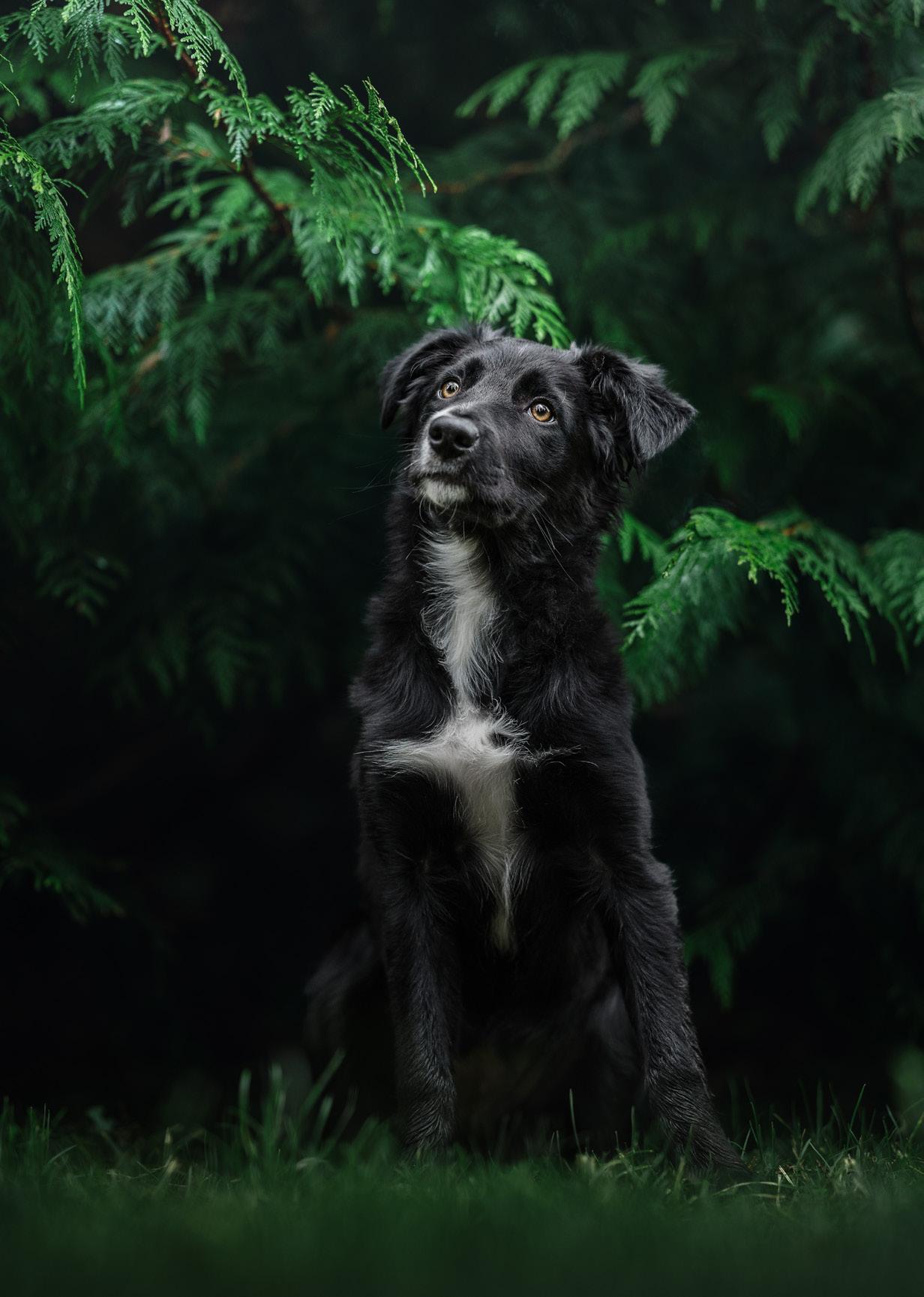
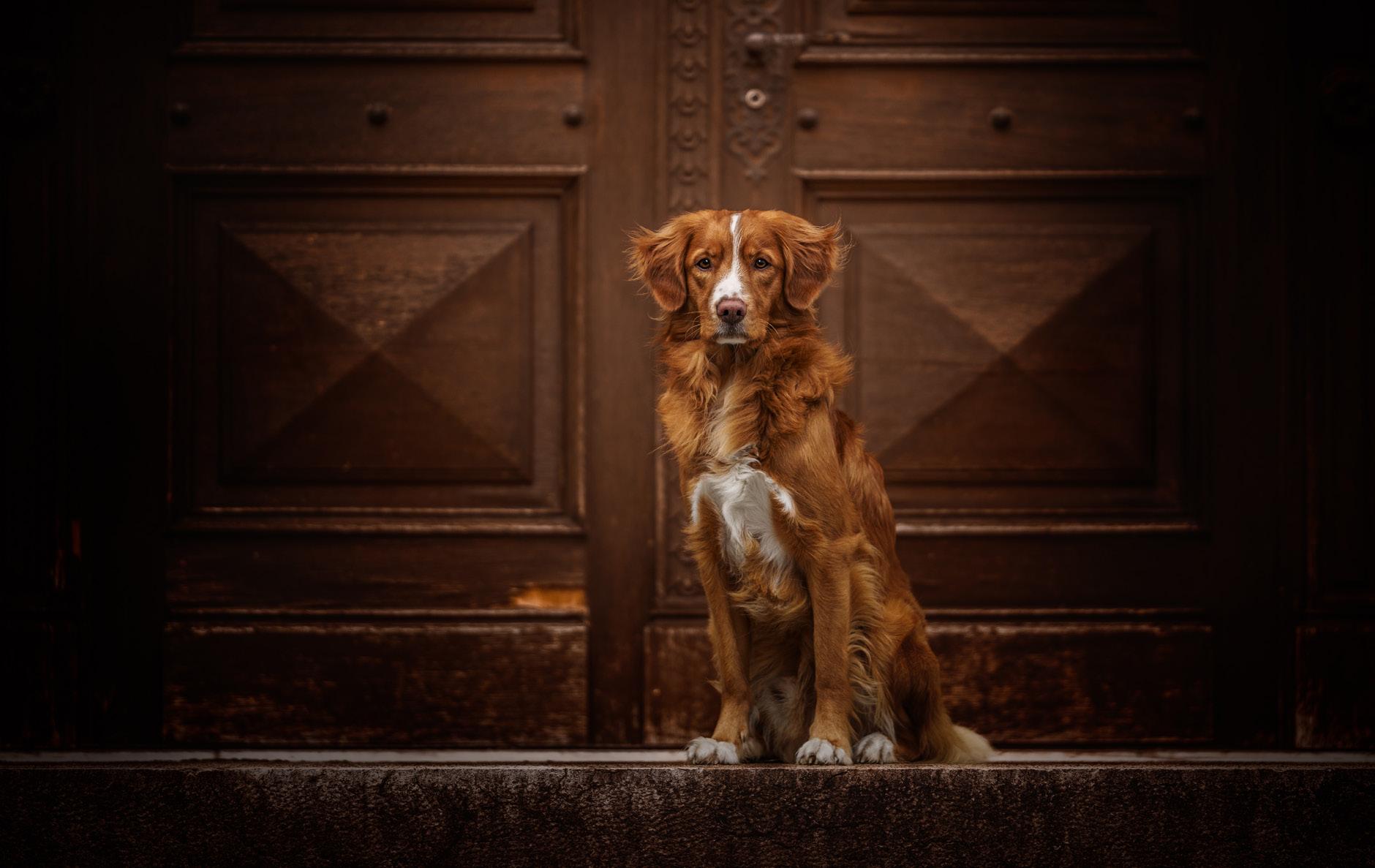
140 RHODESIAN RIDGEBACK EU MAGAZINE
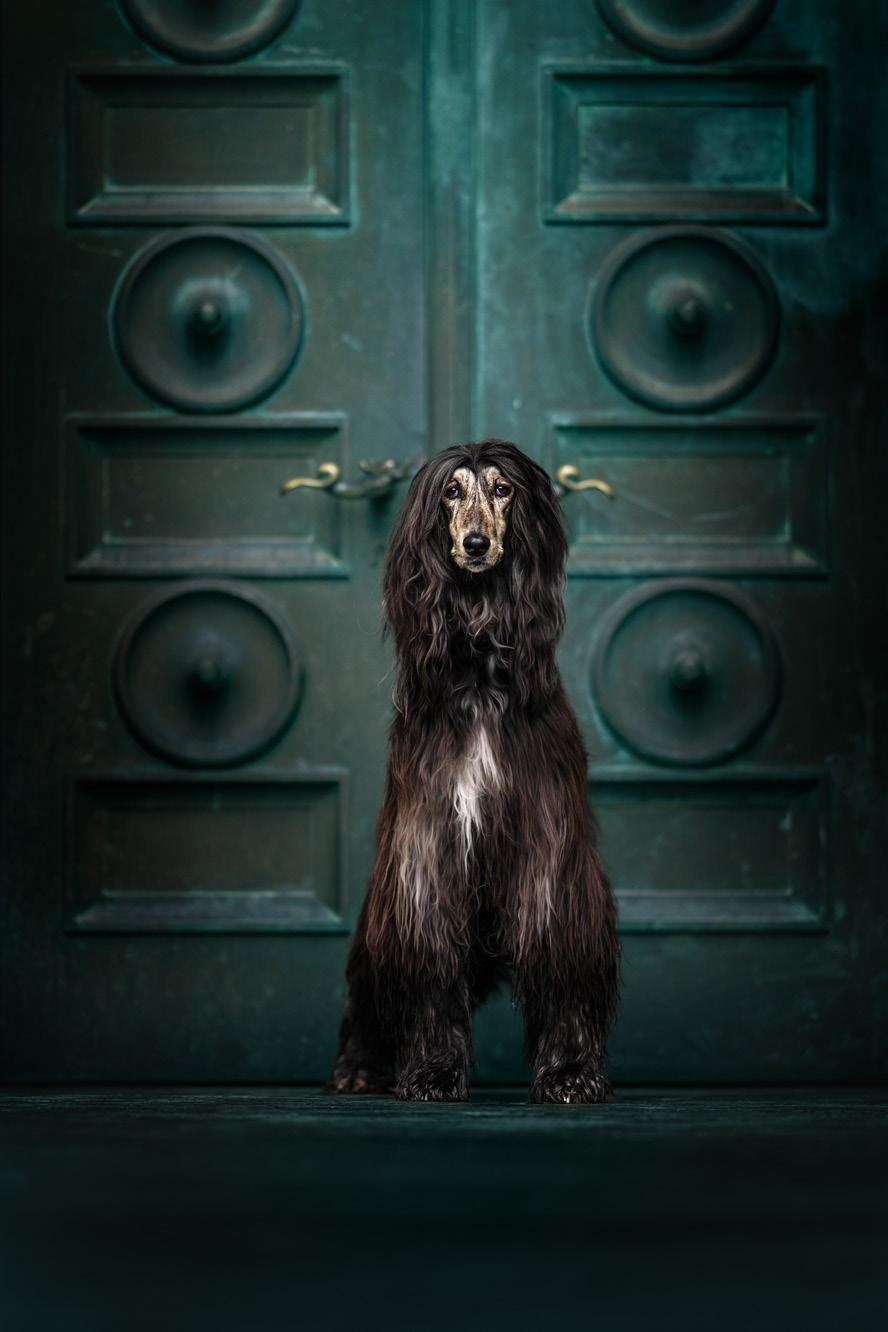
WHERE DO YOU FIND INSPIRATION?
I find inspiration everywhere. I see the world with open eyes and discover interesting opportunities to showcase dogs and capture their beauty almost everywhere. However, nature inspires me the most, especially spectacular landscapes. We live at the foot of the Alpstein massif, the original home of the Appenzell Cattle Dog. In our scarce free time, we enjoy extensive hikes with our dogs. It brings me immense joy to photograph my dogs in their natural environment, and often I can’t wait to come home to go through the pictures. Getting up early for a sunrise on the summit is difficult for me as I am definitely not a morning person, but the warm and magical light of the golden hour compensates for it every time.
I also find inspiration in cities, especially in imposing doors, shop windows, churches, lamps, and graffiti, which provide interesting backdrops for dog photoshoots.
When traveling to a dog show, I plan my route meticulously. I research sights along the way where I can make a stop to photograph my dogs against breathtaking backdrops. Hiking in nature and spending time with my dogs gives me strength and bonds us even closer. These experiences and adventures are unforgettable and irreplaceable. Capturing them means preserving a moment that would otherwise be lost for eternity. Especially now that our oldest dog Elvis has recently turned 16, I am increasingly aware of how precious these moments are and how important it is to capture
them for the future. I advise everyone not to put off dog photo shoots. Because no one knows what the future holds. And when our beloved dogs are no longer with us one day, we should at least have beautiful visual memories of them.
DO YOU CONSIDER IT A CHALLENGING JOB? HOW DO YOU GET THE ANIMALS TO STAY AND “POSE” FOR YOU?
Absolutely, my work as a dog photographer is definitely challenging, for various reasons. One aspect of it is literally physical exertion: Since I often find myself on the ground during dog photo shoots to photograph the dogs at eye level, it’s a small challenge to get back up afterward! ;) After intense dog shows, I often have sore muscles, making it difficult for me to climb stairs or requiring me to take a break during agility training.
But the physical challenges are only part of the work. Photographing show dogs also brings intellectual challenges. It requires a deep understanding of the respective dog breed to know which features to emphasize in front of the camera and which to possibly conceal. Squeaky toys and tasty treats are essential to gain the dogs’ attention and get them to “pose” for the camera.
WHAT IS THE BEST PART OF BEING A
FINE ART PHOTOGRAPHER? AND THE MOST CHALLENGING?
As a dog photographer, it is a true joy for me to immerse myself in the world of dogs and capture their unique personalities in pictures. Every photo session is an opportunity to discover new breeds, their peculiarities, and capture their beauty in different environments. From the majestic German Shepherd to the playful Labrador Retriever, the diversity of dog breeds offers endless opportunities for creative and inspiring photography.
Especially touching are the moments when I can capture the innocent curiosity and carefree joy of puppies. Their exuberant energy and clumsy movements always make me smile and make every photo shoot an unforgettable experience. It is a privilege to document the development of these little furballs and capture their first steps into the big wide world.
Not only puppies, but adult dogs also have their own charm. The bond between human and dog is something special, and it is a wonderful task to show this connection through pictures. The faithful looks, the loving gestures, and the shared adventures of human and dog are moments of incomparable beauty that need to be preserved.
Of course, there are also challenges in working as a dog photographer. Working with dog owners requires tact and empathy to meet their expectations, while also realizing my artistic vision. It can also be challenging to deal with the individual needs and behaviors of the dogs. Each dog has its
RHODESIAN RIDGEBACK EU MAGAZINE 141
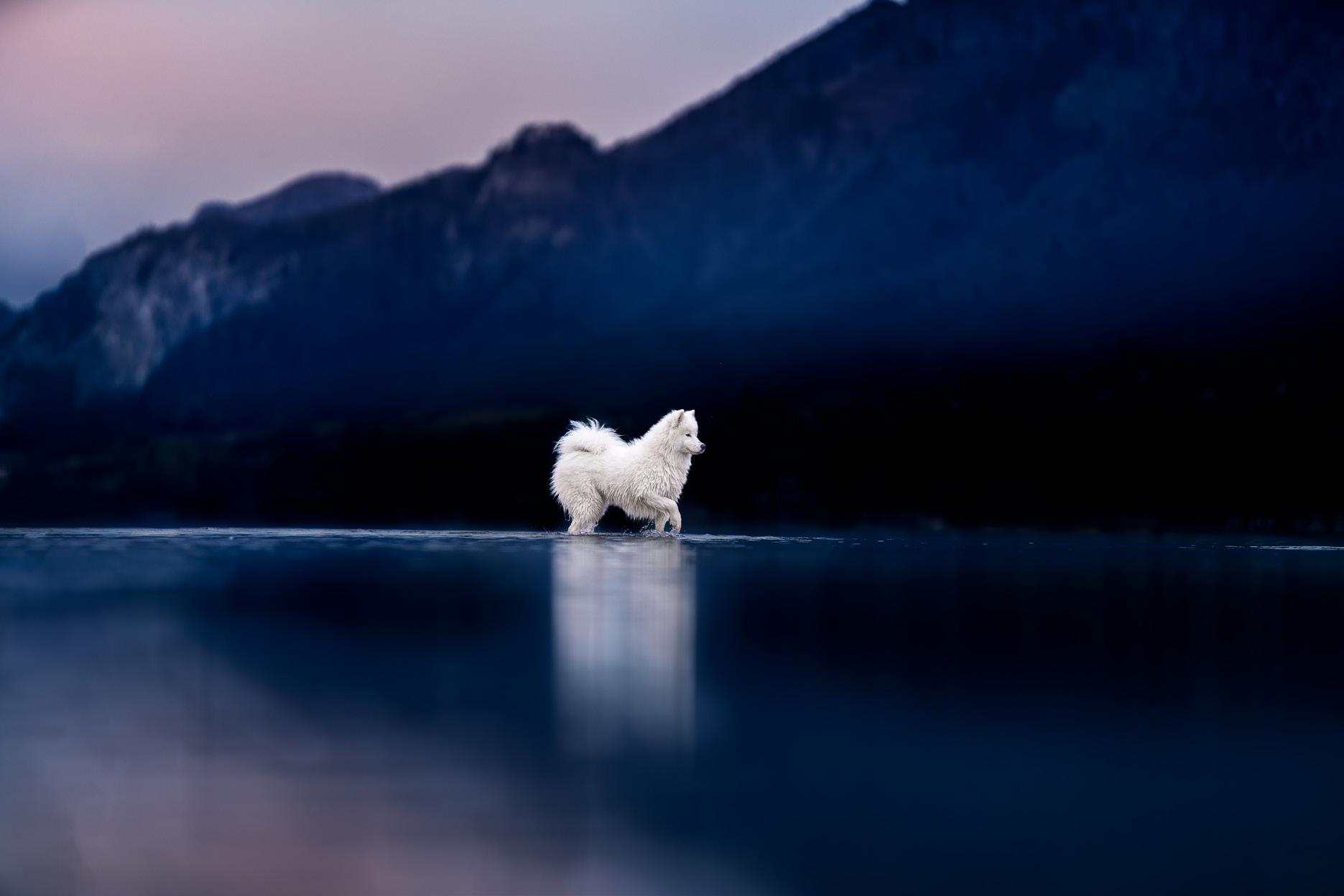
own preferences and dislikes, and it requires patience and flexibility to build a trusting relationship and get the dog to pose naturally in front of the camera.
An ethical approach is of utmost importance to me. I am aware that dogs are lively and sensitive beings who must be treated respectfully. Therefore, I attach great importance to creating a stress-free and relaxed atmosphere during photo sessions. I rely on positive reinforcement and a sensitive approach to gain the animals’ trust and ensure that they feel comfortable and relaxed. Furthermore, I take the liberty of cancelling a photo shoot if I find that the dog owner is acting unfairly or disrespectfully towards the animal. It is important to me to respect and protect the dignity and well-being of the animals at all times.
Another challenge is dealing with the individual needs and behaviors of the dogs. Each dog is unique and reacts differently to the environment, the camera, and the presence of people. It requires a sensitive approach to gain the dog’s trust and get it to pose naturally. It is important to be flexible and adapt to the dog’s needs, whether through playful interaction, patient guidance, or calm attention.
Despite all the challenges, it is a great joy to see how clients appreciate the results of my work. The greatest compliment for me is when clients receive the pictures and cry with joy because they are so touched by the moments I captured. Ultimately, my goal is to evoke emotions and create unforgettable memories - making every challenging moment worth it.
DESCRIBE A TYPICAL SESSION FOR US. WHAT KINDS OF THINGS ARE YOU THINKING ABOUT WHEN YOU’RE BEHIND THE CAMERA?
I offer a variety of photo shoots, including Dog Show photo reports and photography, mini photo sessions during dog shows, full-time sessions where I give my clients my undivided attention and time, and puppy sessions where the youngest are in focus. Each type of shoot has its own charm, but my personal preference is for outdoor full-time sessions.
Typically, such a session runs as follows: In advance, I discuss with the owner what their ideas and expectations are. What kind of photos do they need? Does the dog like to pose, should they be action shots, portraits, maybe some spontaneous and humorous pictures or some that capture the relationship between dog and human and evoke emotions? Most of my clients usually want a mix of everything.
The choice of location also depends on various factors, including the size and temperament of the dog. For example, if the dog is fearful, I would not recommend a photo shoot in the city. During the photo session, I focus on the needs and personality of the dog. I take time to build a connection and gain the animal’s trust. I remain flexible and attentive to the dog’s signals.
Whether posed photos or spontaneous moments, my goal is to capture each dog’s unique personality and express it through my pictures. I usually start
142 RHODESIAN RIDGEBACK EU MAGAZINE
with the posed photos, as most dogs can’t pose calmly anymore after playing and having fun. Besides, there is the risk of the dog getting dirty while romping around.
Breaks are particularly important to me during the session. If I notice that the concentration is waning, I let the owner play with the dog or relax before we continue. During the session, I always think about how to best capture the dog in the picture. The owners often leave it up to me to choose the appropriate type of photos for their dog.
For posed photos, I patiently wait for the moment when the dog shows itself from its best side and is genuine. During the photo session, I focus on the dog’s personality, pay attention to light, composition, and the dog’s expression. Every dog is different, just like its owners. Flexibility and empathy are crucial.
WHICH BREED IN YOUR OPINION IS MOST PHOTOGENIC?
In my personal experience as a dog photographer, I have found that all dogs are photogenic in their own way. Every breed and every individual dog has unique features worth capturing. Personally, I have a special preference for the four Mountain Dog breeds, such as the Appenzell Cattle Dog, the Bernese Mountain Dog, the Entlebucher Mountain Dog, and the Greater Swiss Mountain Dog. These breeds do not only have a distinctive appearance but often have a fascinating character to discover, too.
However, it is important for me to emphasize that in selecting the perfect subject, it is not the breed
that matters to me most, but rather the character and essence of the individual dog. Every dog has its own strengths and unique qualities worth capturing in pictures. As a photographer, I see it as my task to capture this individuality and express it through my pictures.
It is also important to note that different breeds and individual dogs can pose different photographic challenges. For example, coat color can play an important role in the execution of the images. White and black dogs may be more challenging to photograph due to their contrast than dogs with other coat colors. Similarly, the size of the dog may play a role in choosing the right location. Smaller dogs may be better suited for indoor shots or tight spaces, while larger dogs generally require more outdoor space to move freely and set free their energy.
Overall, I view dog photography as a fascinating and versatile form of art that allows for capturing the beauty and uniqueness of each individual dog. It is a constant challenge and joy to work with different breeds and individual personalities and to express their unique characteristics through my pictures.
ARE THERE OTHER DOG PHOTOGRAPHERS THAT INSPIRE OR INFLUENCE YOU? IF NOT, WHO OR WHAT DOES?
Yes, there are definitely other dog photographers who inspire and have had a significant influence on me. Two outstanding personalities in dog photography are Ria Putzker and Anne Geier. Their work has had a strong impact on me and motivat-
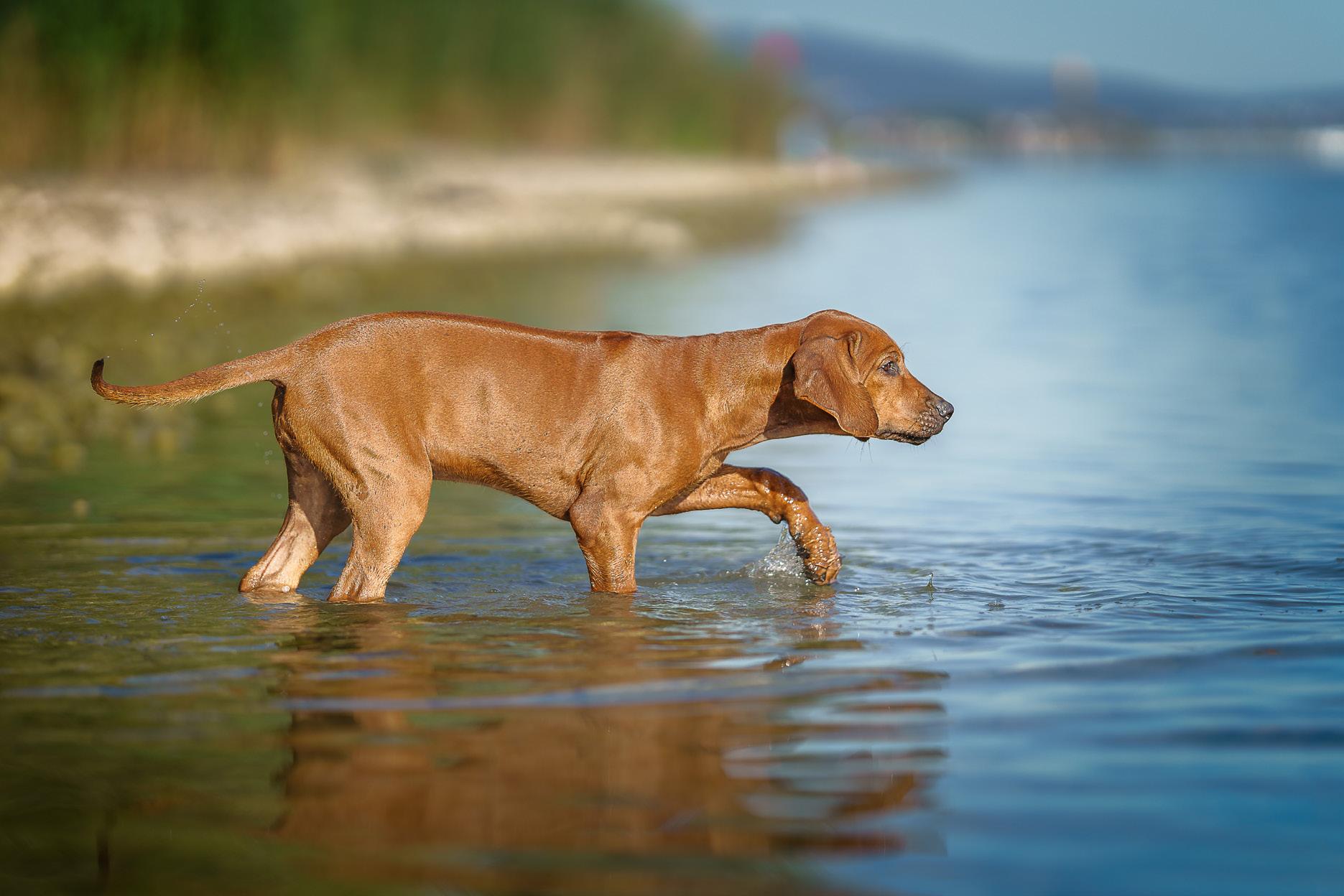
RHODESIAN RIDGEBACK EU MAGAZINE 143
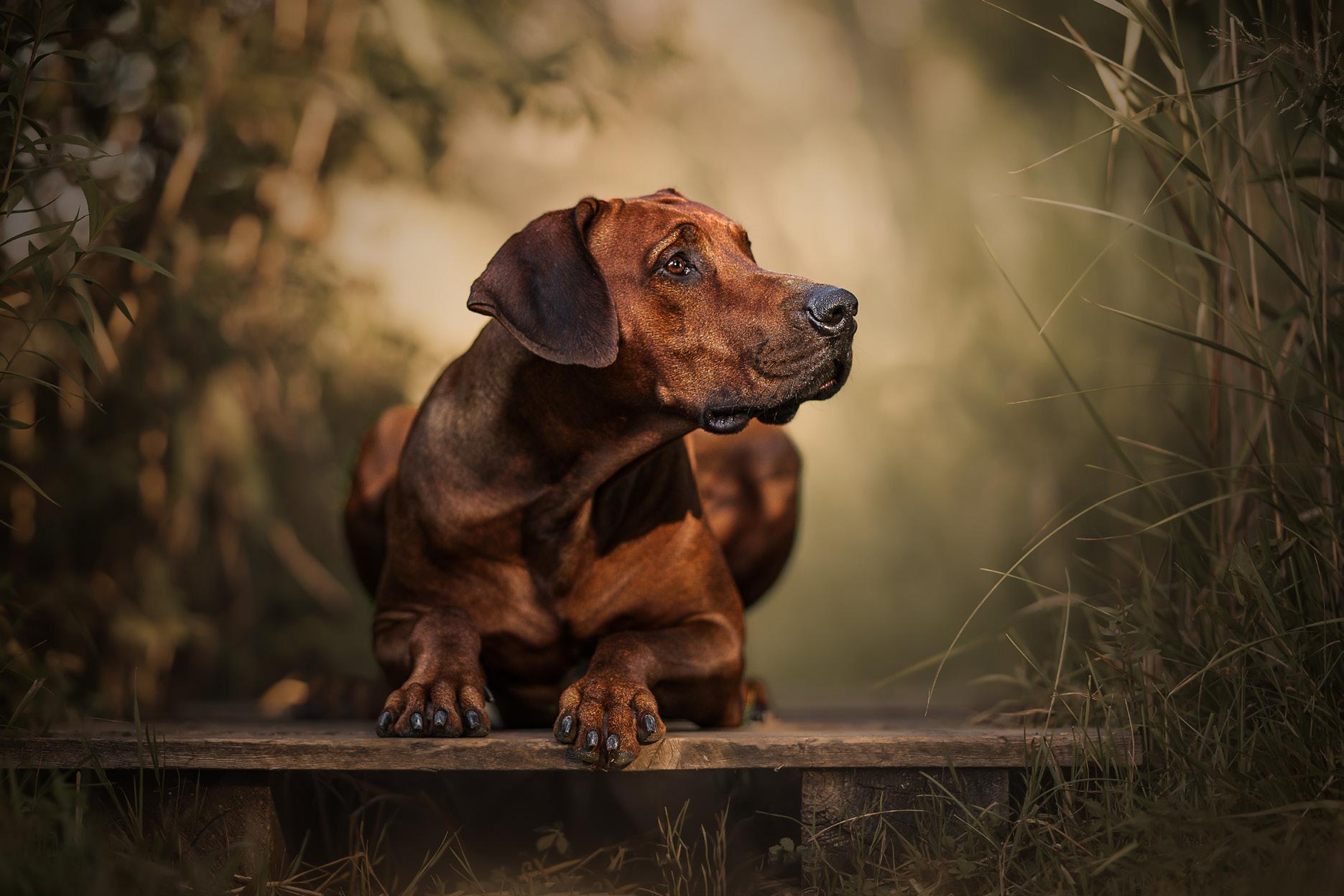
ed me to improve my skills as a dog photographer. I even had the privilege of standing in front of Ria’s camera with my oldest and youngest dog, what an honour. Although I am usually a bit camera-shy, Ria has managed to create a relaxed atmosphere in which I feel comfortable showing my natural connection with the dogs. Her pictures stand out for their authenticity and are full of emotions, which are essential parts of successful photography.
Furthermore, I follow the work of Emily Abrahams and Jessica McGovern with great interest. In particular, Jess has inspired me to tackle the challenge of studio photography. I participated in her studio boot camp and was thrilled with the results. It did not only help me improve my skills in the studio but also encouraged me to participate in international photo competitions, where I have also been successful lately.
Overall, these photographers have expanded my understanding of dog photography and sharpened my eye for detail. Their works serve as a constant source of inspiration and motivation for me to continuously develop my own skills and face new challenges.
IS THERE ANY ONE THING YOU WISH YOU HAD KNOWN OR PIECE OF ADVICE YOU WOULD GIVE TO AN ASPIRING FINE ART PHOTOGRAPHER?
A significant part of my own journey as a photographer has been the continuous willingness to learn and evolve. This aspect is crucial for anyone entering the world of art photography. If I could give
aspiring dog photographers advice, it would be being open to new experiences and always seeking more. Photography is a form of art that is constantly changing and evolving, so it is important to actively participate in this process.
In addition to attending workshops and participating in photo competitions, it is also advisable to regularly read specialist literature and use online resources such as tutorials and blogs. The internet offers a wealth of information and teaching materials that can help you improve your photographic skills and learn new techniques. Furthermore, you can benefit from collaborating with experienced photographers and mentors who can provide valuable feedback and guidance.
Another important aspect is the willingness to learn from your mistakes and constantly be open-minded. Photography is a discipline that requires a lot of practice and perseverance. Be ready to leave your comfort zone and take on new challenges. Experiment with different techniques and styles to find your own photographic expression. However, be patient with yourself and accept that the path to success is often filled with setbacks and failures.
Furthermore, it is crucial to establish a personal connection with the animals you photograph. Dogs have their own personality and needs, and empathetically responding to them is essential for creating authentic and meaningful images. Patience, flexibility, and a positive attitude are therefore essential to be successful in this field.
Remember that practice makes perfect. The more you photograph, the better you will become. Take every opportunity to practice and experiment with
144 RHODESIAN RIDGEBACK EU MAGAZINE
different subjects, techniques, and styles. Don’t be afraid to make mistakes or try something new. Photography is a journey of self-discovery and creativity, and the most important thing is to enjoy the process and have fun along the way.
DO YOU HAVE ANY PETS OF YOUR OWN? AND WHAT IS YOUR FAVOURITE ANIMAL?
Without a doubt, dogs are my favorite animals. As a dog photographer and proud owner of four Appenzell Cattle Dogs, my life is firmly embedded in paw prints. My own dogs are my constant companions and inspire me anew every day. They are not only my loyal companions but also my most important models. They often have to serve as models when I want to try out new ideas or techniques. Rarely do I leave the house without my camera because the moments with my dogs are precious memories that I like capturing.
During joint activities, whether it’s a walk in the forest or a trip to the mountains, my camera is always with me. I often have to argue with my husband when he
thinks we already have enough photos of our dogs. For me, there are simply never enough pictures of these wonderful beings. Every moment with them is unique and deserves to be captured.
Especially our Lumikki, the youngest in our pack of dogs, is always very excited when I pack the camera backpack. She’s already at the door, eagerly waiting to come along. It breaks my heart every time I meet clients and have to leave her at home. Her disappointment is hard to miss. But even when she can’t be with me, my dogs are always in my thoughts and inspire me to new creative heights.
WOULD YOU LIKE TO ADD SOMETHING?
I would like to sincerely thank you for the opportunity to introduce myself and my work in this wonderful magazine. It fills me with pride to be able to share my passion for dog photography with others. Thank you very much!
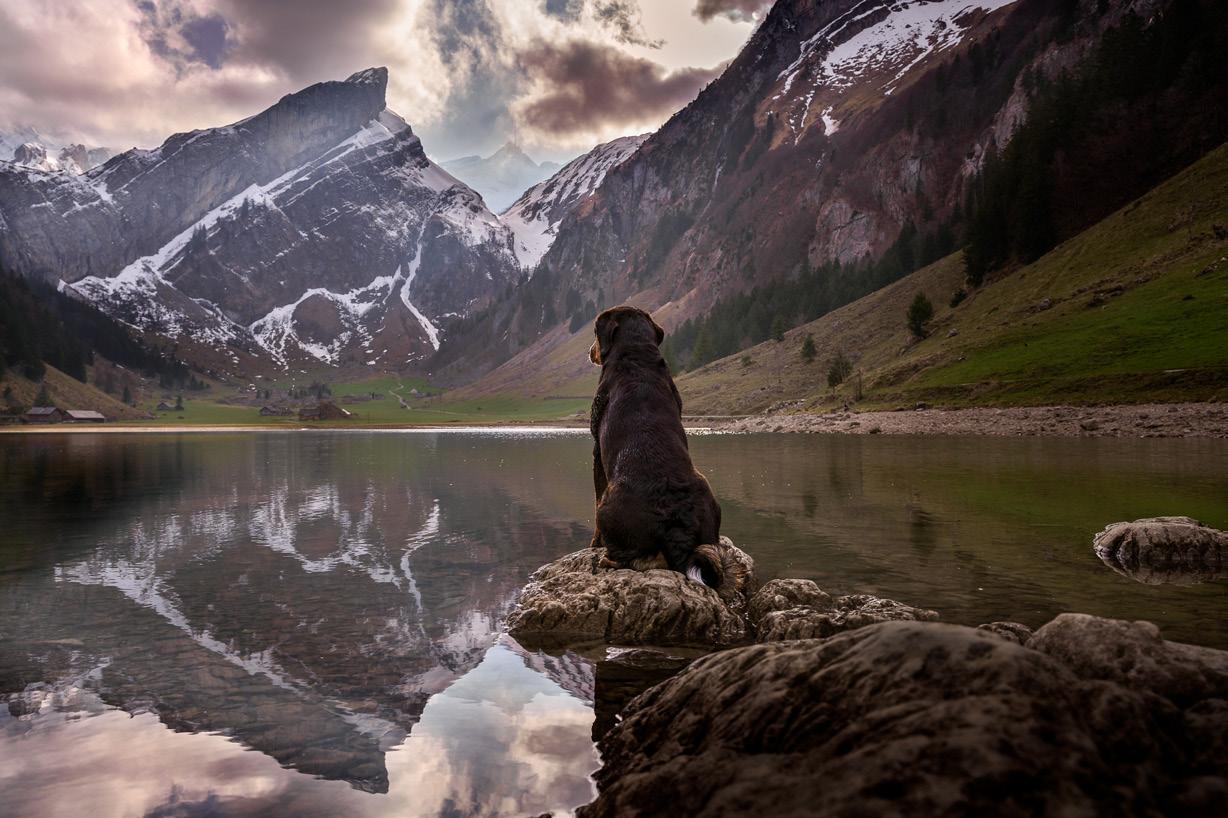
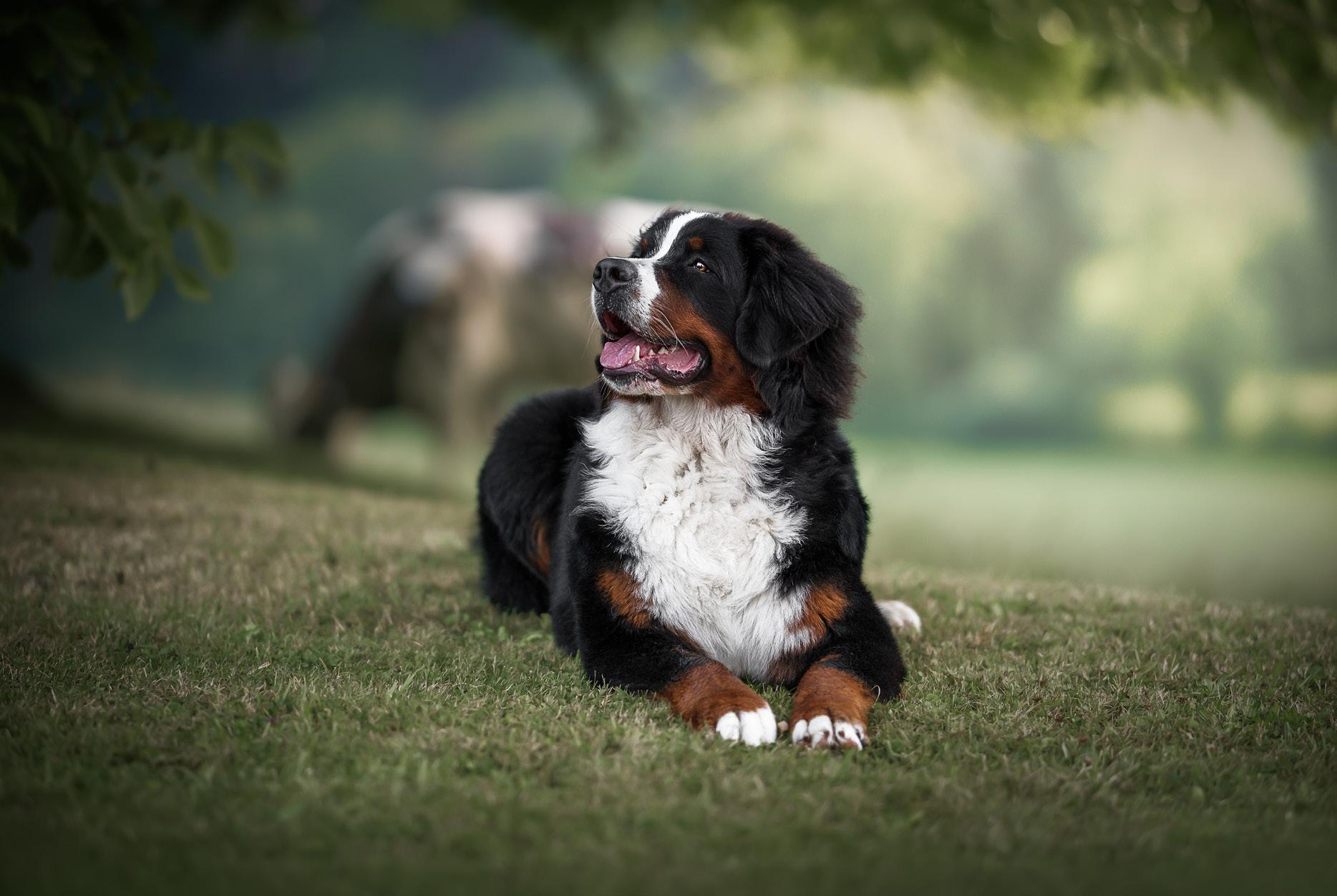
RHODESIAN RIDGEBACK EU MAGAZINE 145
MIKE DOLS AN INTERVIEW
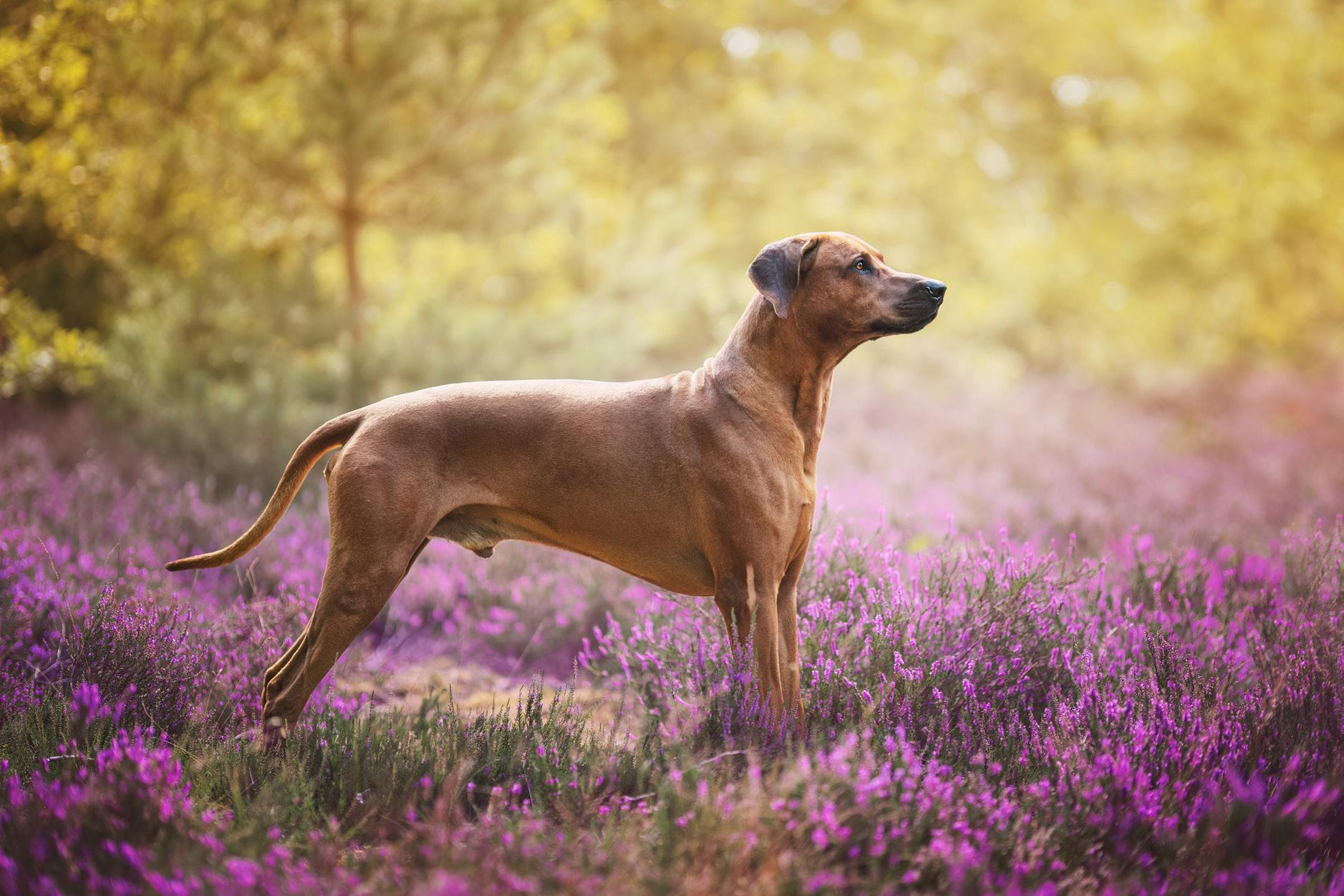
PLEASE TELL US ABOUT YOURSELF. HOW DID YOU COME ABOUT BEING A DOG PHOTOGRAPHER AND HOW LONG HAVE YOU BEEN DOING IT?
First of all, thank you for interviewing me in your beautiful magazine, and thanks to all readers for reading my story. I’ll try to keep it interesting for everyone! I’m Mike Dols, born 1980 in the most south-eastern tip of the Dutch “appendix”. I followed a technical education and currently work as customer support engineer helping cinemas to overcome all kinds of technical problems with their equipment. In my spare time I like to do some astrophotography and I love working with imagery overall. The making of imagery has always fascinated me. I have designed flyers and visuals for dance events, did photorealistic 3D modelling and renderings on CAD software, and photographed stage and audience during EDM events in my early days.
I also shoot video but I emphasize on photography.
Nowadays I’m also a board member (treasurer) for the Dutch Chihuahua Association, and editor/ graphic designer of our magazine.
I’ve been doing photography in a serious form from about 2002, so more than 20 years. Before that, it all started at the age of 3-4 with an old Kodak 56x Instamatic Camera. I was fascinated by the clicking sound of the shutter and that never wore off. During my teenage years I experimented with long exposure light trails on my dad’s analogue Canon A1, not really knowing what I was doing but capturing my first abstract light painting on film was fascinating! My interests shifted to music for the next 10 years and at the age of 20 I bought my first own digital camera, a Fuji Finepix S5600. This very quickly changed to the Nikon D80 and I was hooked shooting everything that I could, from that moment on I never let go of photography again.
Dogs were always a constant factor In my personal life, but never more than just owning one dog
146 RHODESIAN RIDGEBACK EU MAGAZINE
Netherlands І mike@mikedols.com І Mike Dols – Dog
Photography
as house pet until I met my wife. We quickly found out we did not have any desire to have kids of our own, but we are both very much in love with dogs so we joked about having a whole bunch of dogs as a family, instead of kids. Little did I know back then that this would be more than the case later on in our tight-knit relationship. It was also my wife who took me to the first dog show about 7 years back, and the two passions just kind of clicked together and never parted from that moment on.
I started taking more and more pictures of our growing number of dogs at home in my garage-studio, outdoors on walks, and I always brought my camera when my wife took the dogs to a show. Somehow it just came to me that all my previous photography endeavours were meant to prepare me for this. Photographing the little creatures I love the most: our four-legged furry friends, companions for life.
HOW DID YOU FIRST ENTER THE PHOTOGRAPHY WORLD? DID YOU HAVE FORMAL
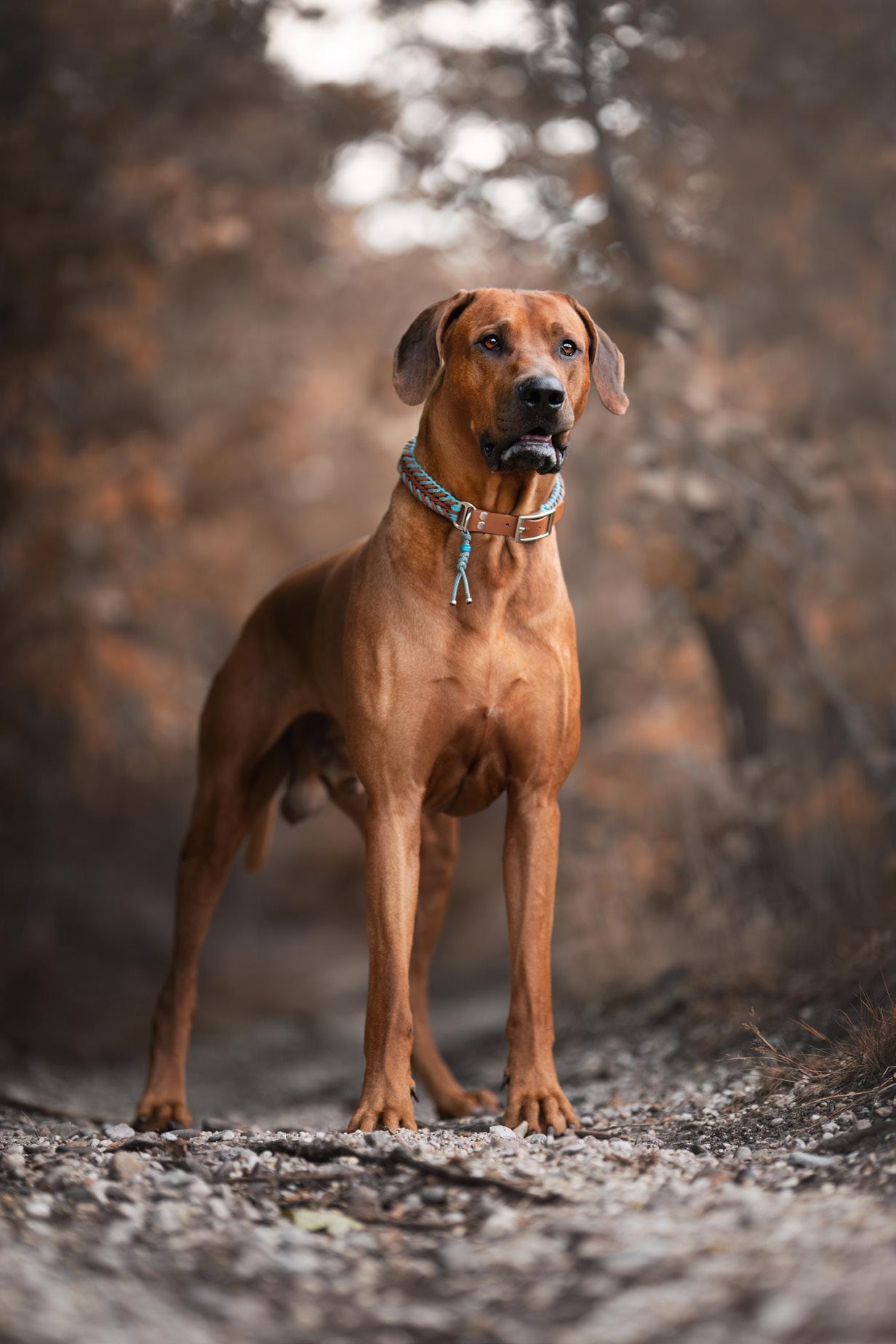
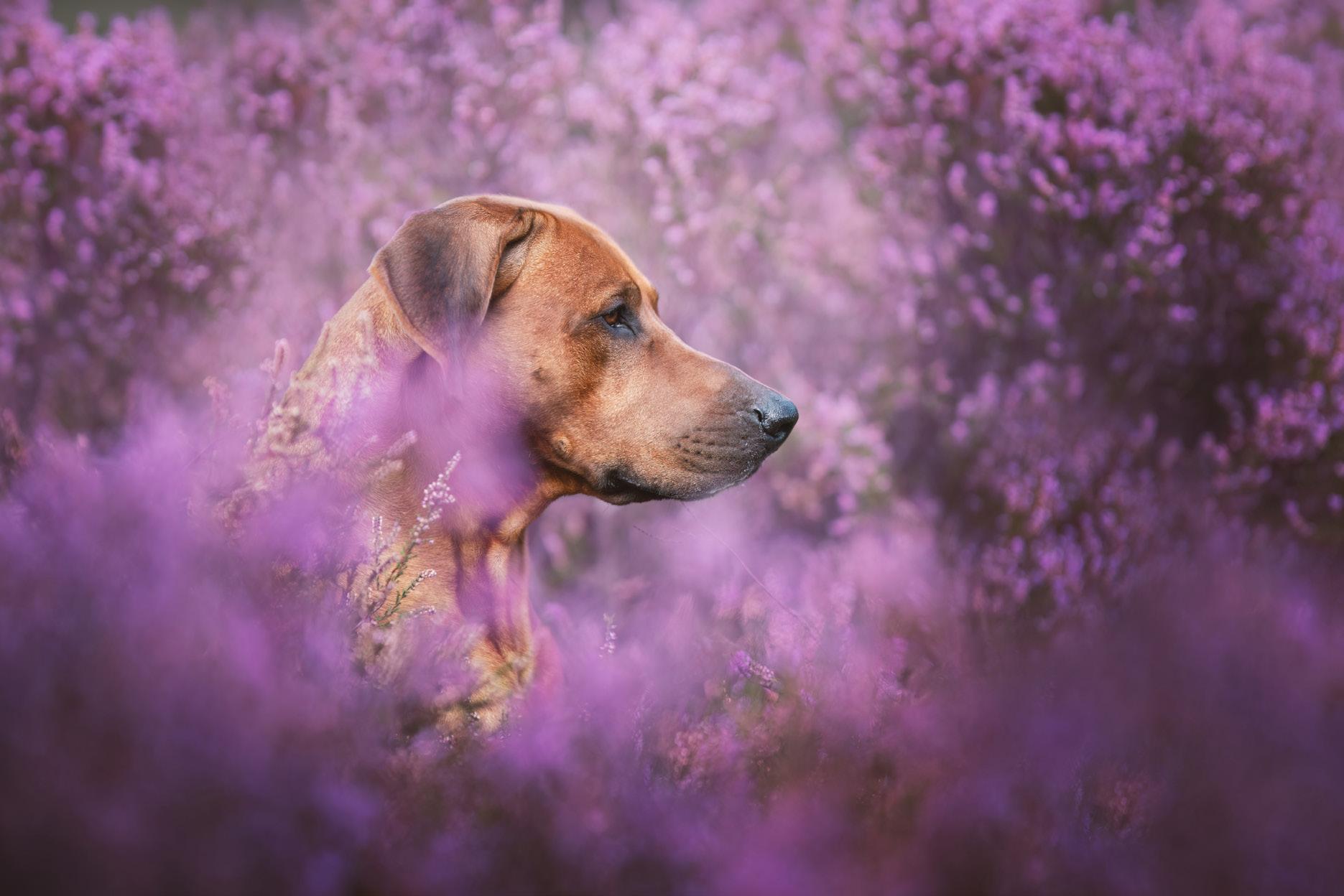
RHODESIAN RIDGEBACK EU MAGAZINE 147
TRAINING?
HOW LONG HAVE YOU BEEN A PHOTOGRAPHER?
My Nikon D80 was bought in 2002. As I am a bit of a nerd I love everything that involves a bit more technicalities than regular photography. At first I got hooked on HDR photography and shooting time lapses and later on also 360HDR spherical panorama’s. I taught myself everything I needed by reading books as there were still very few tutorials online then. Of course I’d point the camera at my own dog every now and then (a Belgian Tervueren shepherd), but this never got serious somehow until my wife took me to a dog show as mentioned before. Here, the two passions met and I started to get more creative than technical in my photography. I followed some workshops with renowned photographers like Monica vd Maden, Andreas Romijn, Claudio Piccoli and Nuelle Flipse from whom I learned the creative side of photography and editing.
WHAT OR WHO GOT YOU STARTED PHOTOGRAPHING DOGS?


148 RHODESIAN RIDGEBACK EU MAGAZINE
Like already mentioned before, my wife is the one to blame, and I am eternally grateful to her for bringing those two passions together. The first dog shows I sat only by our own ring to shoot just my wife showing our Chihuahuas, then I started shooting everyone in the ring, shooting other rings and eventually I was confident enough to shoot in the main ring. Every year I can add more, new and bigger events to my calendar, for which I am really grateful. This year I can also shoot the clubmatch for the Dutch Rhodesian Ridgeback club, for which I’m really excited! Of course I also shoot “regular” pets outside of the showrings, but my main focus will always be with dog shows.
WHAT TYPE OF CAMERAS DO YOU SHOOT WITH? WHICH IS YOUR FAVOURITE LENS AND WHY?
Of course this changed a lot throughout the years. I already mentioned my first Nikon D80, this was followed quickly by a D200 and D7000, and then my first full frame: the D800. This lasted a good 8 years. A beast of a camera. But you have to go along with technical progress, so I got my first mirrorless Nikon Z6, that was a gamechanger. The way of focusing, the low light capabilities and shooting speed were unheard of. A few years later I invested in the Nikon Z9 and this monster of a camera will be my go-to body for the next years to come, for sure.
I gathered quite the collection of lenses in all those years. There is not “one favourite” lens. Although If I had to pick one for a shoot, not knowing in what situation I’d end up in, it would probably be the 70/200 f2.8. It’s the most versatile lens and great for both action and portraiture. But for portraits, I do prefer my long prime lenses with large aperture. Depending on the situation and size of the dog, I’ll bring the 85mm f1.2, 105mm f1.4 or 135mm f1.8. Occasionally, I can get creative with a 20mm or 35mm but I do prefer the longer lenses. It all depends on the situation and what the customer wants.
WHERE DO YOU FIND INSPIRATION?
That can be literally anywhere. Of course fellow dog photographers that I follow on Facebook, any random walk or drive where I spot a nice shooting location, but also advertisements can sometimes show some really great ideas. In advertisements there is always some kind of “storytelling” going on, this challenges your creative process to think of a goal and how to put that into an image. Photographs that are able to convey emotions are always fascinating. You keep looking at them and wonder what might have happened before, or after the picture was taken. It puts you in a story you would like to discover. This does not apply very much on shooting dog portraits, but even more so on shooting an event with dogs. There is a lot of negativity arounds dog shows nowadays, people say dogs don’t enjoy themselves being at a show where his/her human wants them to win


RHODESIAN RIDGEBACK EU MAGAZINE 149
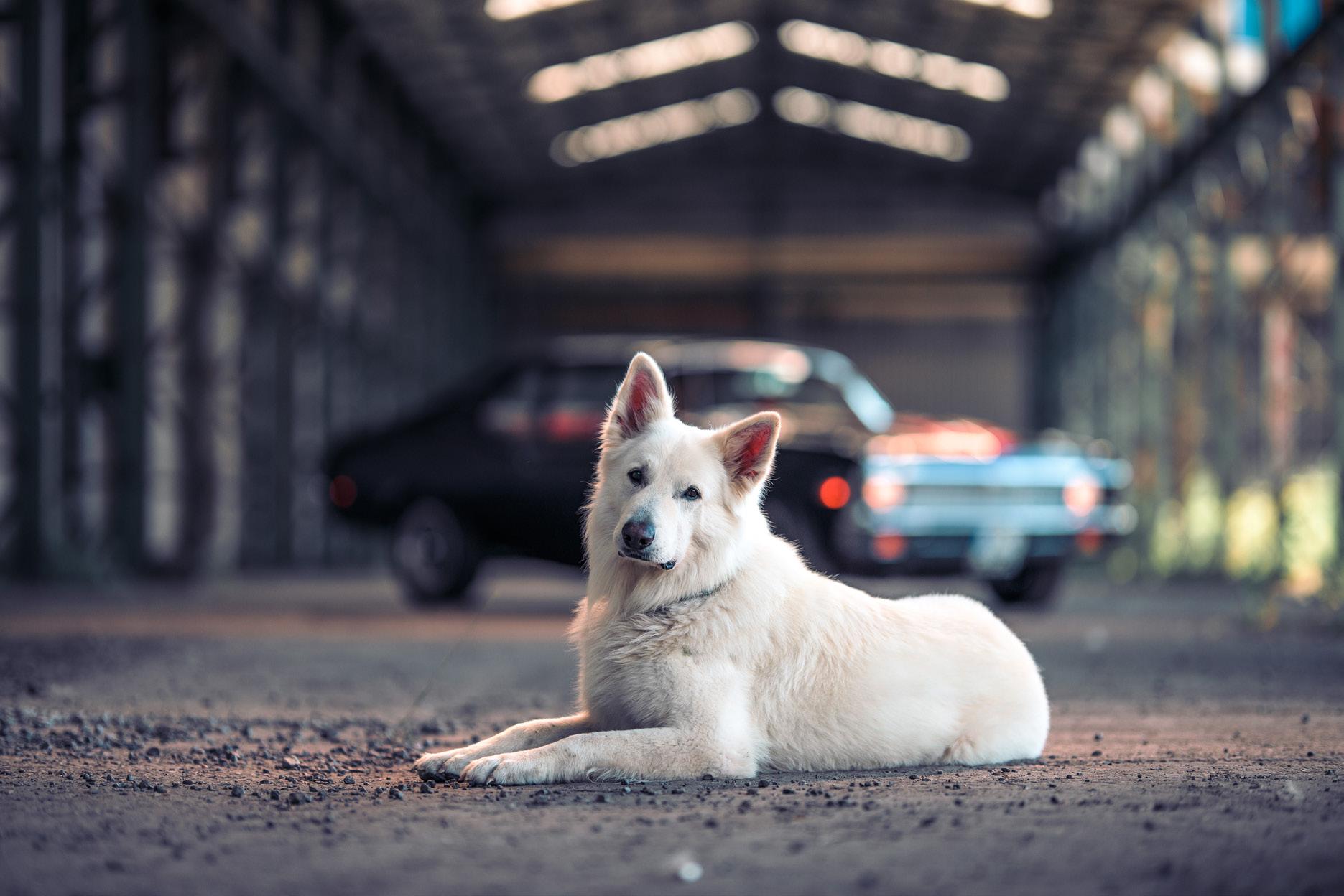
prizes for them, but they couldn’t be more wrong. I draw inspiration from these “haters”, trying to show them these story-telling images of the strong bond between a person and his/her dog and let them see how much dogs can actually enjoy being shown.
DO YOU CONSIDER IT A CHALLENGING JOB? HOW DO YOU GET THE ANIMALS TO STAY AND “POSE” FOR YOU?
Challenging for sure. But I think every kind of photographer has a challenging job, like every other profession too. Regardless if you are in finance, construction, technical engineer or whatever. But just like with all those other jobs, It’s when you can enjoy taking on those challenges and learn from them afterwards, you can really excel and get better with each new challenge that you accept. So yes, I like my job to be challenging. It would be dull otherwise. Besides, working with animals is always challenging.
They have their own agenda, they don’t care about you, your camera or your photographic intentions. If they want to take their own road, they do. And I love that! I love that moment where the elegant show-dog breaks loose and just starts bouncing and running through the main ring during their moment of glory, or just start to do a “number 2” with a full crowd watching. Anticipating and spotting that moment to get it successfully on camera at the right moment is absolutely a challenge. But I love it.
On the other hand, the static “stacked” portraits of show-dogs to use for stud/litter/championship
promotion, are of great importance to their breeders, too. Here I am in luck because the handler positions the well-trained dog precisely for me and usually will want to be included in the shots holding the dog in position. But for the furry friends that are your best friend at home and don’t do shows its different. They are usually not trained to stand perfectly still, focused on that one little treat in your handler’s hand. Some poor souls are maybe even traumatised rescue stray pets who have not (yet) won all of their confidence in humanity back, so here it’s a totally different game.
During outside shoots I usually take my longer lenses for the more unstable dogs so I can keep my distance without frightening them. Needless to say that I want to photograph a dog that is totally relaxed and shows no signs of distress at all. I let the owner close to the dog, keeping the dog comfortable with the situation. By making a funny sound you can draw the dogs attention and it gives you a 0,5 second window of opportunity where the dog gives you that face we all love: “What is that? Can I play with it, or can I eat it?”, pure curiosity. Click. Gotcha. Pure joy follows when you show the owners the image that truly reflects the dogs personality. I take another picture of the same frame, but without dog and owner, so I can use that as overlay on the original image to remove the owner from the image without disrupting the background. The sound can be anything like funny sounding mouth clicks, whistling, imitating dog howling or whining, and a duck-flute also works miracles. Or just the good-old sounds of a crisp plastic bag of their favourite treats. Remember, all other plastic bags will have no effect at all. Only the good stuff makes that special sound.
150 RHODESIAN RIDGEBACK EU MAGAZINE
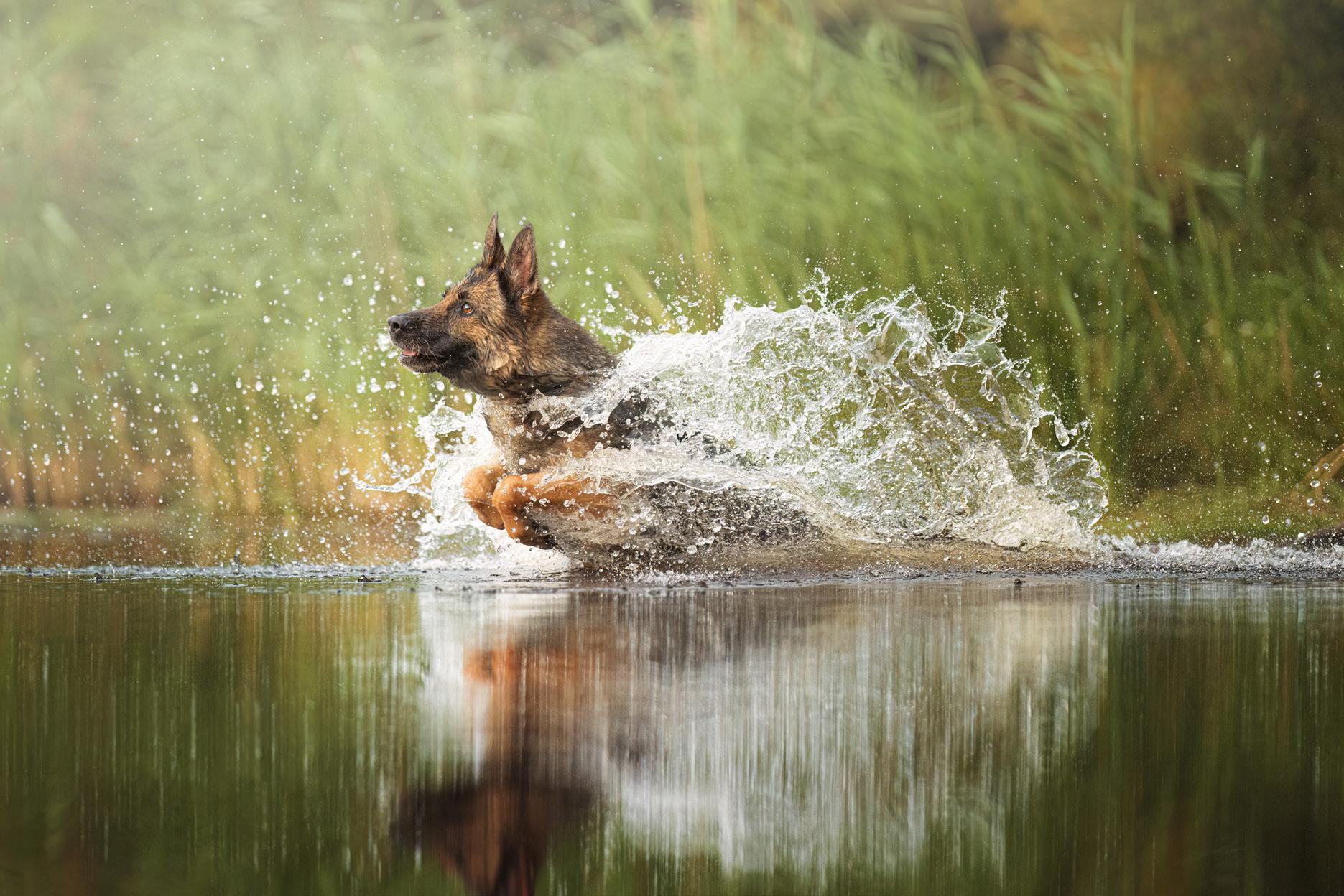
Action shots are yet another approach. Here I usually have the owners come with 2 people. One to hold the dog, and one to call them. By positioning both owners strategically I can have the dog run exactly from point A to point B to jump over an obstacle or catching the dog perfectly from the side in mid-air stretched out completely.
In the studio we have the time to “train” the dog and make a game out of it. Most dogs get the idea to sit still for a treat really quickly and to keep watching the treat being moved around in your hand. I have them stand, sit or lie down on a low pedestal and can target their direction of sight to have them watch into the camera or maybe sideways to get my shots. Here, the duck flute also comes in handy sometimes.
WHAT IS THE BEST PART OF BEING A FINE ART PHOTOGRAPHER? AND THE MOST CHALLENGING?
Best part? Working with dogs, most definitely. Most challenging? Working with dogs! Personally I just looove doggos. I just can’t walk past a dog without giving it some love. I don’t care about the breed in front of my lens, or the lack of breed. All dogs are equally lovable. From the bestest showdog in the world to the mutt that’s traumatised and plucked from the gutter. They all offer so much love, the kind only a dog can give. I can’t live without them. Working with them is awesome. Challenging is the fact that they have a free will, they’ll do what they want to do. If they think they’ve had enough of your treats, you have to get creative. I’ve had owners crunch random plastic bags (no… just the ones from their favourite treats work), throw random
pocket items like their keys or lighter around, yell, cry, dancing, running, chasing each other around, you name it. Waiting for another dog to pass by and ask its owner if they can play with their dog to lure our dog’s attention, whatever I can think of in that moment. But very rarely, it just is not enough and the dog is simply too tired from all new impressions, or intimidated, maybe still too scared, wo knows. It is important to recognise that moment and let the dog have its well-deserved rest. We’ll re-schedule or re-fund the shoot. That’s always a possibility when you are working with animals or kids.
DESCRIBE A TYPICAL SESSION FOR US. WHAT KINDS OF THINGS ARE YOU THINKING ABOUT WHEN YOU’RE BEHIND THE CAMERA?
For a dog show it would be being on time, at least an hour before the show starts so I can look around and familiarise myself with the working ground and possibly have a short chat with the ring steward or judges about how the dogs will be judged, how they will set them up when waiting or being awarded. Then I follow the day of the judging in a club match, or walk around the whole show if it’s a bigger one, covering all of their activities until before the main ring judging will start. First I introduce myself to the main ring staff and maybe make some changes in the podium setup where the dogs are set up for the pictures with the judges. After the main ring program has ended the post-processing starts at home. For a whole day I bring back around 30005000 images which I select down to 200-300 and all are given a slight manual correction in exposure/ cropping/white balance before being exported.
RHODESIAN RIDGEBACK EU MAGAZINE 151
During a show I stay focused, trying to be aware of all situations around me looking for a possible good image to capture. I usually shoot candid when capturing outside of the rings, meaning that the people are not aware that I’m shooting them, capturing real emotions with their dogs. In the main ring it’s all about movement and stature. If I shoot a moving dog, it needs to show a well-balanced gait. Seen from the side this gives you two parallel triangles in the dog’s legs showing nice drive and reach. In stature, the dog needs to be straight in the front, and the backhand depends on the breed but it all needs its specific position or placement. Ears up if needed, nice lifted head and good tailset. Don’t shoot if the dog isn’t running or standing correctly, that’ll only cost you card storage and extra work later on skipping through the images. I’m also constantly watching my settings, ISO, aperture, exposure and correct them for some situations. Pay attention to focussing, and so on. There’s a lot going on in your mind when shooting.
WHICH BREED IN YOUR OPINION IS MOST PHOTOGENIC?
Ooh that’s a difficult one…This might sound very cliché, but there are no single breeds to win this title. Every dog or breed has its charms. From the tiny chihuahua’s to the majestic and fearsome owcharka’s, from the gracious poodle to the mutt plucked from the streets, and of course the noble Rhodesians. They’ve all conquered a place in their owners heart, and it usually just takes seconds or just brief eye contact for a dog to find a place in my heart too. I’m much too easy for a dog to win over. And every dog can be photogenic. Even the 19 year old
yorkshire terrier with bad coat due to his high age, tongue hanging out because of having no teeth, a cherry-eye and paws covered in mud can make a just as capturing image than the noble Rhodesian Ridgeback striking a pose in top-condition. As long as you capture the essence of the dog’s personality and put it in the right environment or background, the image will be photogenic.
ARE
THERE OTHER DOG PHOTOGRAPHERS THAT INSPIRE OR INFLUENCE YOU? IF NOT, WHO OR WHAT DOES?
Of course, every photographer has his or her example to look up to. Some in general and some very specific. Having someone to look up to is important. It keeps you down-to-earth and provides you with a goal to strive for. Trying to manage the things that inspire you in others for yourself, can push you forward and make you a better photographer too.
I love the work of William Wegman for example. Everyone will recognise one of his images, even though not everybody might know the name behind the image. He is the one that has weimaraners of his own and he puts them in all kinds of human situations by dressing them up in human clothing and putting them on a dinner table, sitting on chairs or every other situation you can think of. His images always tell a story and are very comical and engaging.
Andy Seliverstoff too. His publications of “Little kids and their big dogs” are simply enchanting. The way he manages to capture the intimate bond between kids and their huge dogs makes you see
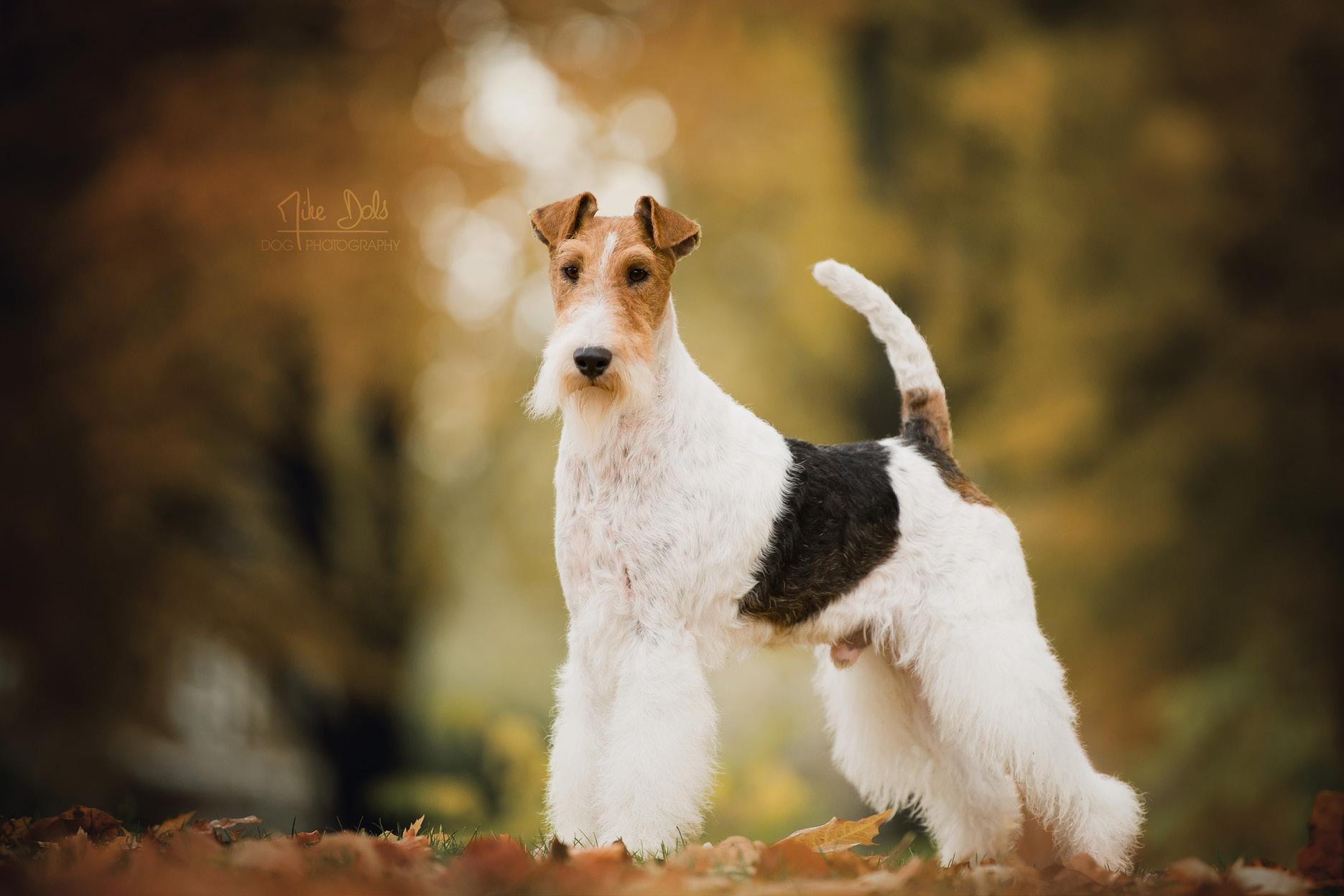
152 RHODESIAN RIDGEBACK EU MAGAZINE
why a dog is man’s best friend. Seeing his photo’s always puts a smile on my face.
As for dog show photography, I was always really impressed by Kynoweb’s work. Ernst von Scheven, Ron Baltus and Lisanne Bakker are very skilled people. Making those perfect shots of a dogs gait running perfectly in sync with its handler, capturing those intimate moments between dog and owner/ handler inside or outside of the show rings, or just capturing the atmosphere of the show itself is a trait they have mastered to perfection and always were an example to me. Needless to say I was over the moon when they asked me to join their team for the biggest dog-event in the Netherlands last year and let me cover all of the main ring action. This surely was a crown on my achievements.
And of course, a lot of dog photographers sharing their work on Facebook can be an inspiration. The stunning action shots of Claudio Picooli, the storytelling studio shots of Nuelle Flipse, the dreamy forest shots of Monica vd Maden, majestic landscape settings of Anne Geier, compelling stories of Ria Putzker, colourful wide-angle shots of Kaylee Greer, and perfect show dog portraits of Anna Szabó are but just a few.
IS THERE ANY ONE THING YOU WISH YOU HAD KNOWN OR PIECE OF ADVICE YOU WOULD GIVE TO AN ASPIRING FINE ART PHOTOGRAPHER?
Yes and no… The best thing about ones achievements is the road to get there. The experiences made. There are no shortcuts in life. The best learn-
ing experience is to just go ahead and make mistakes, you are allowed to. As longs as you are willing to recognise your mistakes and approach the same situation differently next time. Reading it all from a book prevents you from those precious learning experiences and just makes you copy someone elses workflow and style. Do your own thing, make your own mistakes, and pave your own road to self-improvement. Keep on being very critical about your own images without bringing yourself down. Take note from those missed moments and opportunities and use them to overcome and conquer the next one.
And, also very important… you are working with animals. Keep that in mind. They are not mannequins or models whom you can put in a certain pose and make them stay as long you wish. Keep it fun for the doggies, always keep your finger on the trigger as we sometimes only have a split-second to capture that one special moment. Engage them in a playful setting to get the pose that you like and catch the true character of the dogs.
DO YOU HAVE ANY PETS OF YOUR OWN? AND WHAT IS YOUR FAVOURITE ANIMAL?
Of course, what would a dog photographer be without a dog of its own? Usually, this is the muse, the inspiration… the reason one got into dog photography in the first place. If you love dogs so much that photographing only dogs is your style, you are very likely to have dogs of your own. It started in my childhood days with Falco, a Collie. Followed by Jayka, a Belgian Tervueren shepherd. Those two
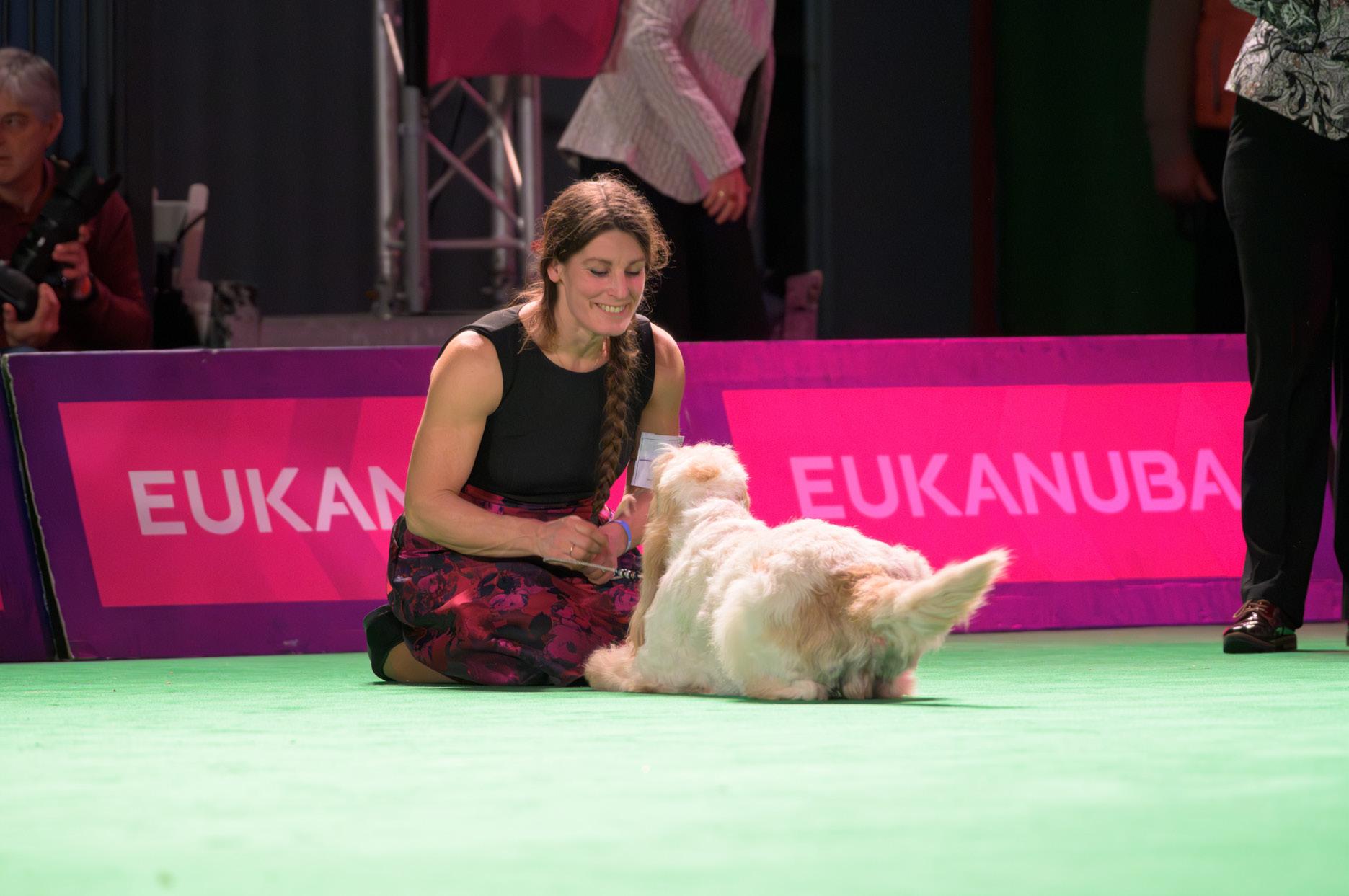
RHODESIAN RIDGEBACK EU MAGAZINE 153

cuddle-bears have fuelled my passion for dogs and they showed me what wonderful and unique creatures dogs are. Both did not have a pedigree but were purebreds, we never thought of going to a show with them.
I remember meeting my wife, who introduced me to her chihuahua a few days into our relationship. At first I thought “anything that bounces when it barks, ain’t a dog”, but boy was I wrong. Those little ones with their fierce character are bigger than life and they know it. I fell for the breed, and I fell hard. Now, being together for close to 9 years and married for 3 we are at 12 chihuahua’s, a boston terrier and a galgo español rescue. We have everything at home from world winners and multi-champions to street mutts. I love them all to bits. We even started breeding and had our first chihuahua litter a few months back. We also have a cute little Mexican milk snake and three collared lizards.
My favourite animal, that’s a good question. If we only count the pets at home, that will be my Mag-
gie, without a doubt. Maggie is the rescued Galgo Español. Initially, my wife picked her out and I was like “you really want to have a slender and boney dog like that??”. But once we picked her up from the transport and I had a good look into those dark eyes that had experienced all this misery on the Spanish streets, I’ve fallen in love, big-time. The first days she would only lay on the pillow we got especially for her, still traumatised by the fresh memories of the tough life on the streets. I recall a friend’s advice to take her to bed with us. At first, I did not like the idea of having a dog in bed, but as she curled herself nicely up in my lap when we got in bed for the first time, she got me. Until today (she is with us for about 8 years now), she never slept anywhere else but in my lap when we are in bed. We are connected, she is my soulmate. The love you get from a tortured soul when you have been able to show her not all humanity is bad and you’ve restored her trust in mankind, can’t be described. It’s a sense of trust and companionship only a rescue dog can share you with.
154 RHODESIAN RIDGEBACK EU MAGAZINE
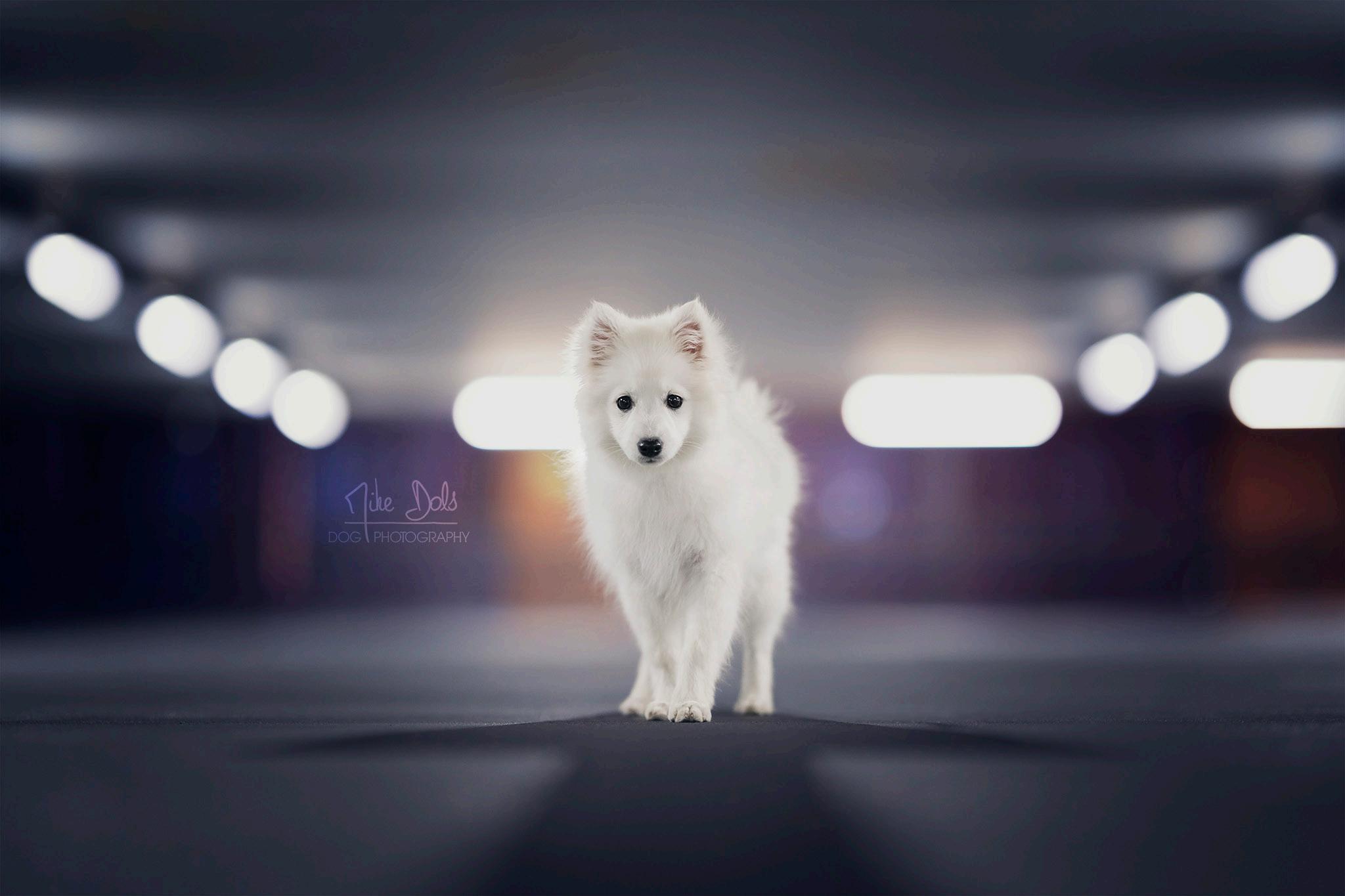
If you mean the favourite sort of animal in the whole animal kingdom, that will be (how surprisingly) dogs! But I love seeing the behavioural patterns of wolves in the wild too. Also reptiles have caught my interest ever since we have a few of them at home, they have always been a dream of my wife. But every animal has it’s beauty. From little insects to the enormous whales. We all inhabit our fragile world and we are all part of our delicate ecosystem, so wee need to take good care of each other.
WOULD YOU LIKE TO ADD SOMETHING? YES: DO YOU DO ANY OTHER KINDS OF PHOTOGRAPHY NEXT TO DOG PHOTOGRAPHY?
My preferred subjects will always be dogs. Shooting people in a studio setting takes a different approach, you need to make people feel at ease when being photographed. Not all people like having a camera pointed at them, they start behaving differently and unnaturally. But outside of the studio, just documenting things as they go is more my cup of tea. I love photographing an occasional wedding, but only friends and people I know. Shooting a wedding is awesome. Everyone is happy, looking their best for the important day and like being photographed with all their relatives and close friends, and still the best shots are still shot candid. Capturing the spontaneous interactions between people is very rewarding and makes a beautiful story-telling image. It’s very exhaustive as you are running on 110% concentration from beginning till the end trying to spot all potential moments unfolding and anticipating on them to get that compelling shot.
The most technical kind of photography I do will be astrophotography. I’ve always had a fascination for the night sky. You will be astounded what you can photograph using regular photography equipment. A lot of nebulas and galaxies show up in a single long-exposure image that you can’t even see with your naked eye. Once successfully captured, the feeling of reward is great and makes you feel very humble. You’ve just captured photons that have travelled for thousands, maybe even millions of years to end up on your sensor. The technical challenges are great. Your camera and lens /telescope need to be perfectly aligned with the earths rotational axis and move at its exact rotational speed to be able to shoot exposures of up to 10 minutes, shooting multiple consecutive shots to stack them so you can eliminate the noise and enhance your target. It’s very post-processing intensive, and it takes a long time to set up your gear properly. The learning curve is steep, but the feeling of capturing something invisible to the naked eye, which you have only seen in TV documentaries or NASA publications is priceless and very addictive.
RHODESIAN RIDGEBACK EU MAGAZINE 155
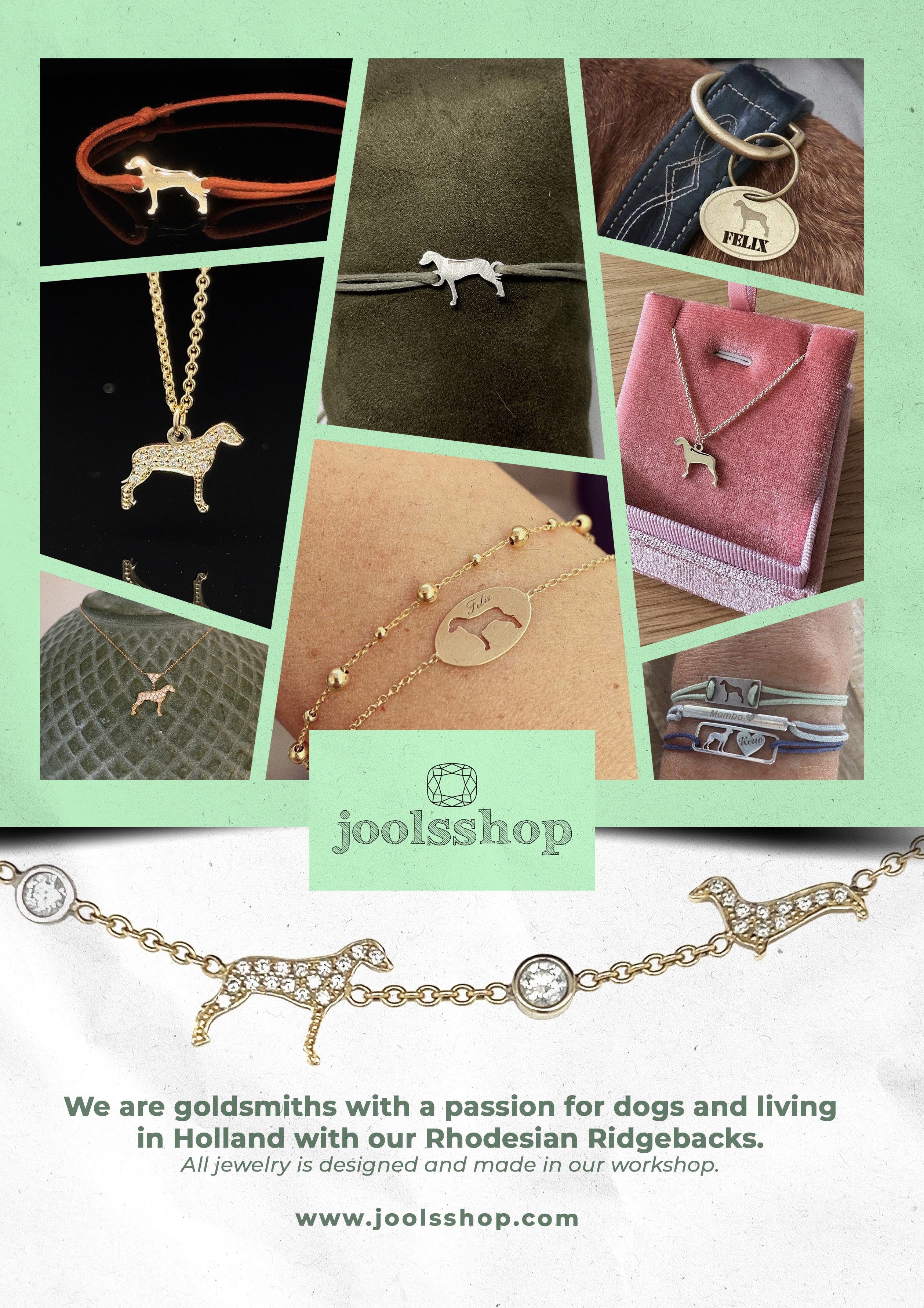


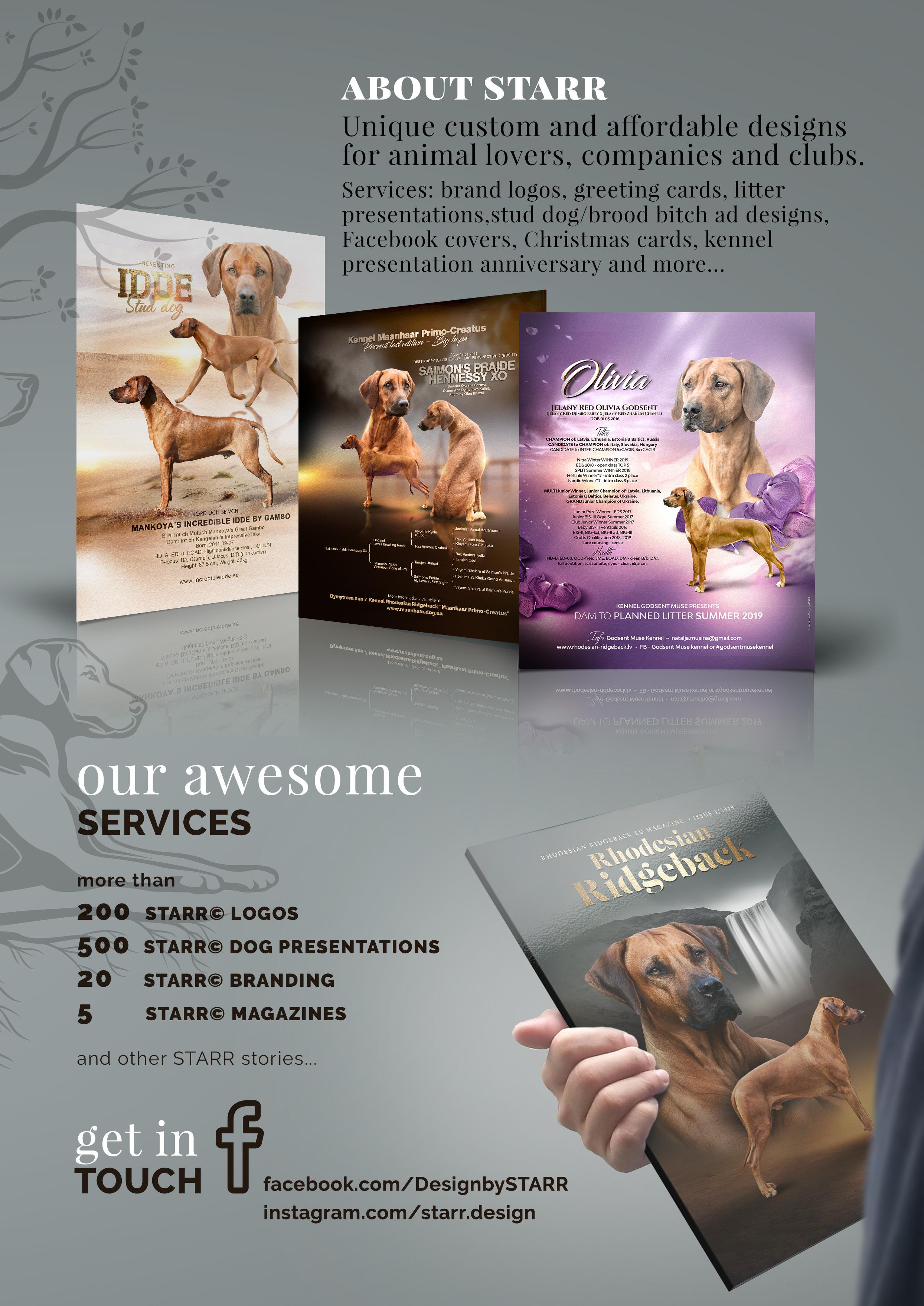
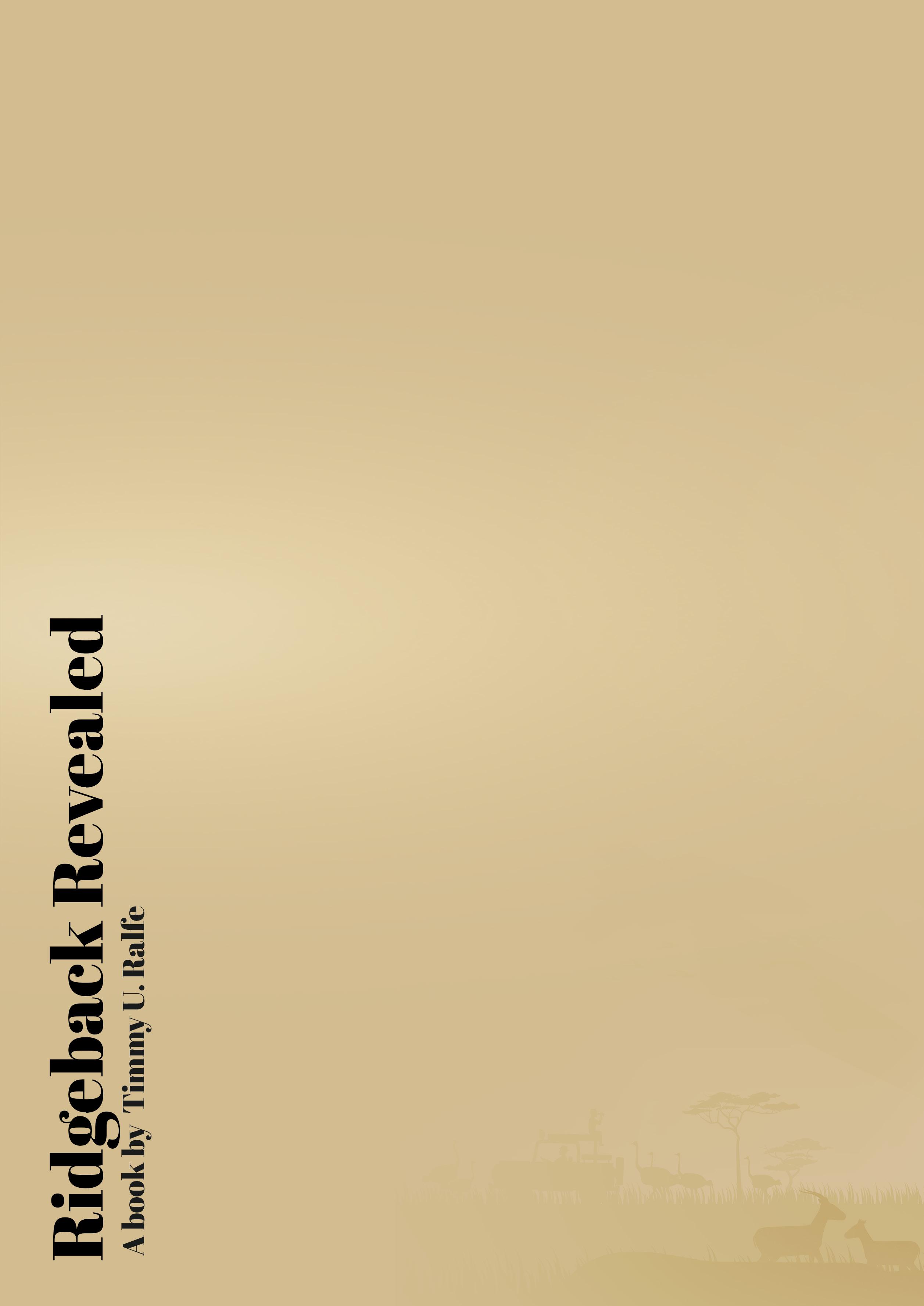



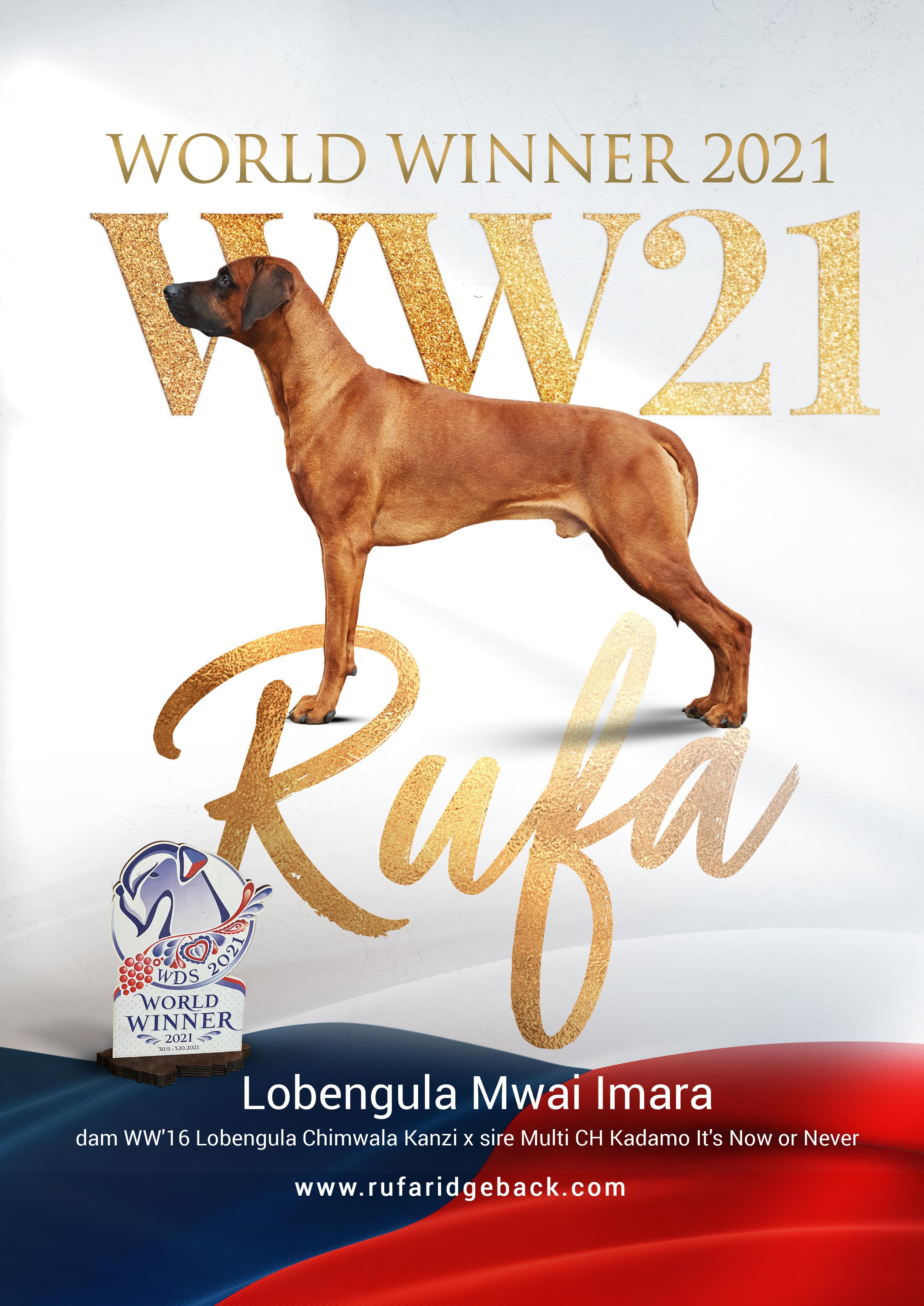

DOG

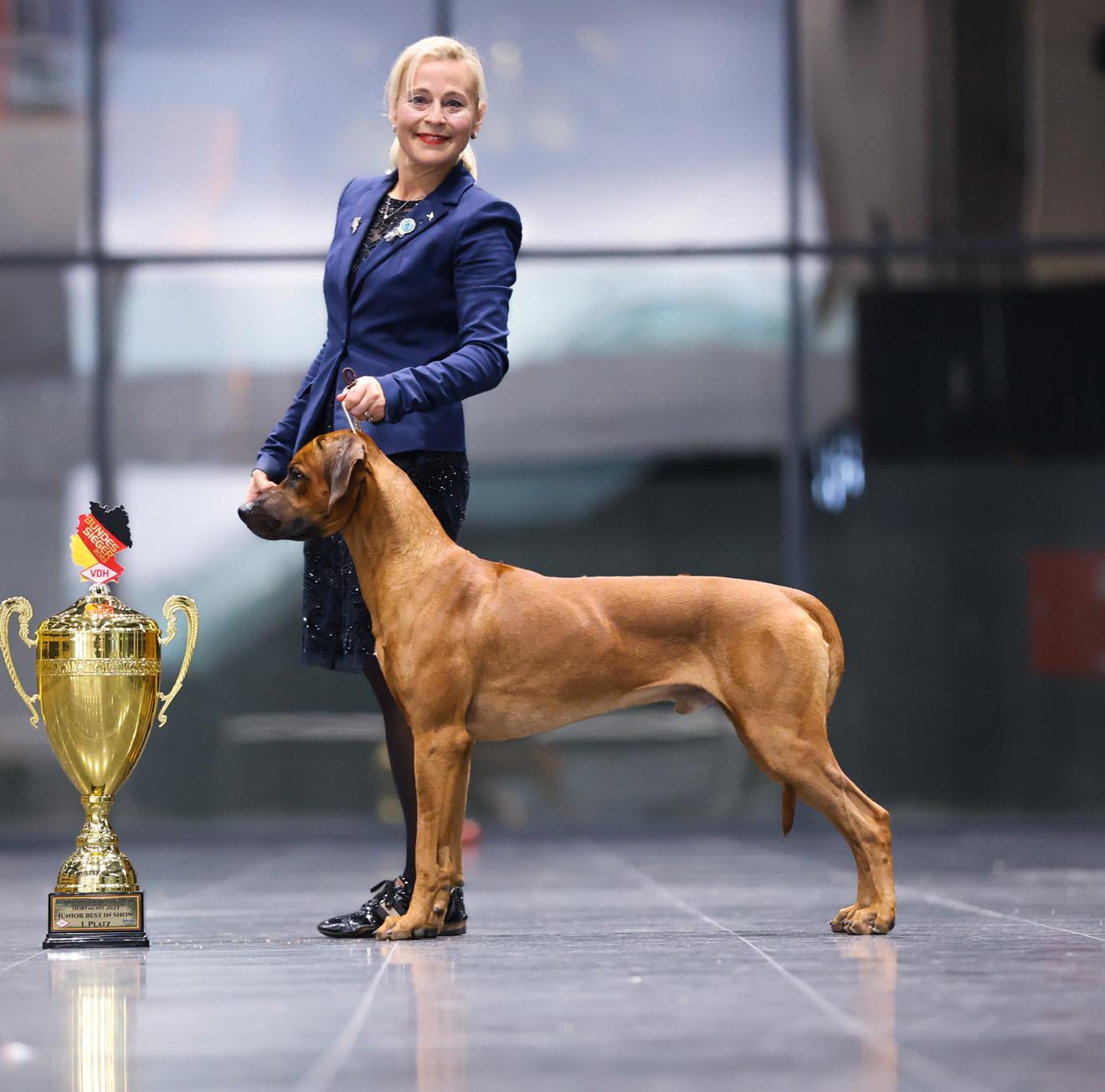

164 RHODESIAN RIDGEBACK EU MAGAZINE
COVER
SAVUTI DAYMANI DNA DELUXE MR.
BRO’
CAN YOU PLEASE INTRODUCE YOUR COVER DOG FOR OUR READERS?
The story of our JWW C.I.B.-J JBIS JBISS Ch. MJCh. SAVUTI DAYMANI DNA DELUXE MR. BRO’, or «BRO’» for short, started in 2019. Our long-time friend, horse specialist and Ridgeback breeder Eva Lachat asked us whether we would agree to the mating of her UMLANI CHOBE AMALI with our NDOKI GENTLE GEORGE – and we were very happy about this wonderful mating, because we knew the class bitch as well as the outstanding rearing that Eva offers her puppies. This resulted in an extraordinary litter, from which BRO’s mother CRUFTS BEST-OF-BREED BISS Ch. SAVUTI CHITONGA YARA by GEORGE aka «YARA» was allowed to stay with Eva.
GEORGE’s daughter YARA was always super close to us and regular visits from our boys and LOVA to Bellelay welded the family bonds into a large unit. Knowing that YARA is a dog of exceptional quality, we took YARA to selected exhibitions and showed her for our friend Eva. YARA confirmed to us how right we were in 2022, when she and Petra were named BEST-OF-BREED at CRUFTS under judge TH Johnston. In the main arena judge Gavin Robertson furthermore put them on the final shortlist of 9 dogs in the huge «Hound Group».
We knew, that when YARA had her first offspring, it would be a very special litter – and not just for us! After a visit to Sweden, Eva Lachat decided to choose the dream male SEVCH RU CH RKF CH LT CH JCH CH AVE CAESAR GREAT GALAXY aka «NASH» from Elena and Willy Johansson’s renowned kennel AVE CAESAR from Henån near Gothenburg. YARA and NASH are both grandchildren, respectively, Great-grandson of Elena and Willy Johansson’s unrivaled top male MAIDEN’S KALAHARI KANDY – so it was clear to us: there couldn’t be a greater prerequisite for our new male.
On July 7th, 2022 the time had come and BRO’ was born together with 6 brothers and a sister – and we were asked to choose the «one and only» from these seven fantastic boys.
After many visits, photos and conversations, we were convinced at the end of the 6th week: Mr. Elk will be our BRO’! His gentle character, his wonderful head and expression together with his absolutely harmonious, perfect exterior had captivated us.
BRO’ got his name with the help of our friends Amelie Boode and Mikael Törneman from the traditional Swedish kennel SPIRIT OF ISHTAR. «DNA DELUXE» is intended to be a homage to all of BRO’s legendary ancestors, especially KANDY, but also GEORGE, YARA, the great NASH and everyone before them.
We are indescribably happy to have SAVUTI DAYMANI DNA DELUXE Mr. BRO’ with us! BRO’ is a unique promise for the future – and we are most happy to be BRO’s family and pack.
WHAT IS HIS BIGGEST ACHIEVEMENT?
His biggest achievement so far was running as fast as his half-sis’ LOVA. That is something he always wanted to do and now finally his top speed equals LOVAs – which is incredibly fast. Also having grown to a height, where he can oversee the whole table. Something he can do now is to put the full size of his muzzle besides our food plates. He is very proud of that. Besides, at shows he has an impressive career so far. Having become JUNIOR WORLD WINNER in 2023 for example was just as amazing as having won the JUNIOR BEST-IN-SHOW at the prestigious Bundessieger-Show in Dortmund/Germany and his «ResWorld Winner» at the World Dog Show in Zagreb 2024. Also wins in Group 6 out of Juniors were a beautiful experience. He’s the kind of easy going guy, that everyone likes instantly. WHAT DO YOU LIKE ABOUT SHOWING?
It’s our strong belief, that dogs not only need our love, care, lots of exercise and best nutrition – but also a job they love and can share with their owner. You name it: mantrailing, obedience, hunting or showing. We are lucky enough that all our dogs love showing their socks off and work with us in the rings. So to build up this strong relationship, to prepare every smallest detail and get ourselves ready for the events and then to perform together on the spot is what we not only like, but love about showing.
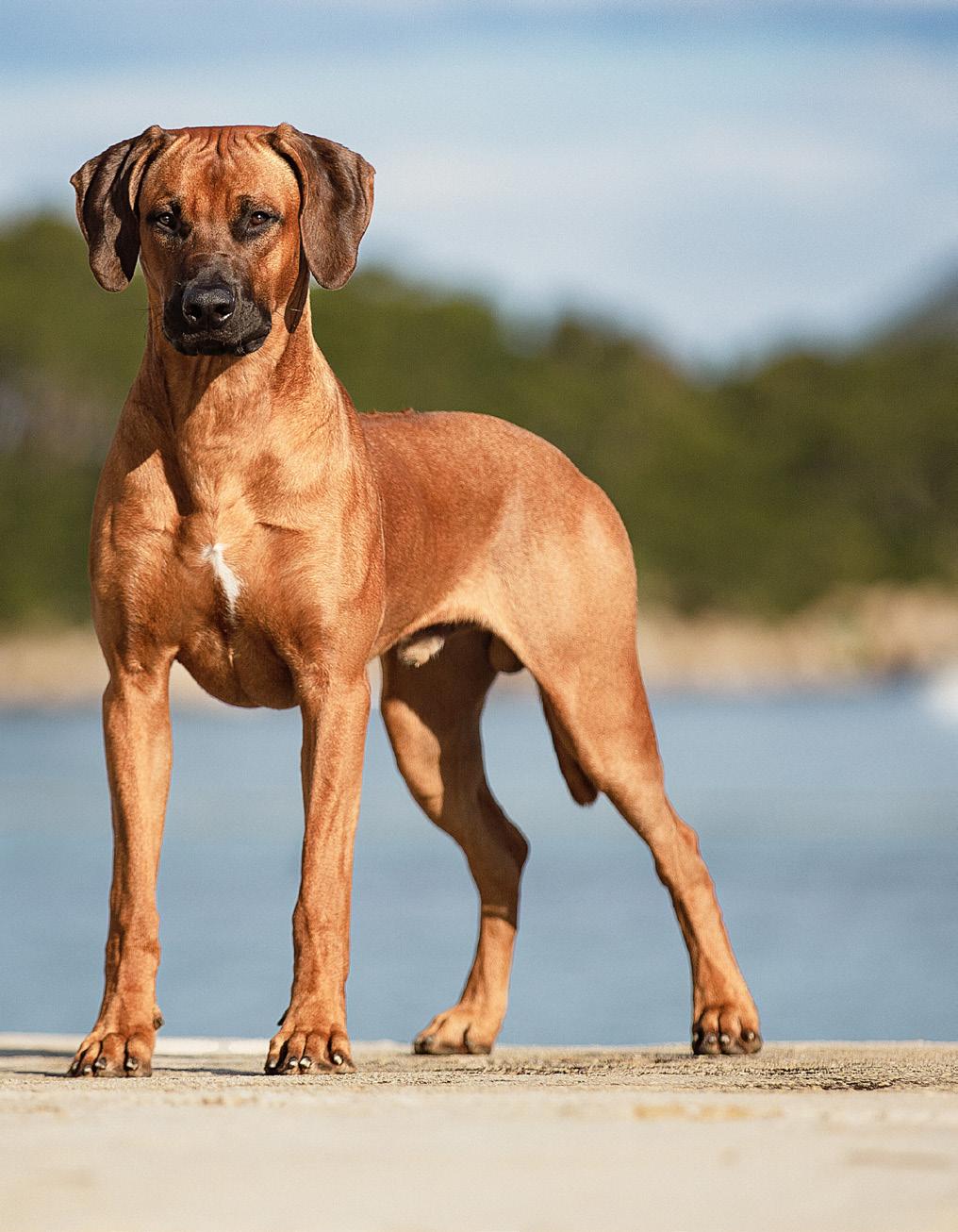
WHAT ARE YOUR FUTURE PLANS?
Our plan for the future is keep having fun with our four legged friends, be it inside or outside of the rings. We are very blessed to have won big titles with all our dogs. But yet our aim is to become better handlers, become more precise and quicker in all aspects.
WOULD YOU LIKE TO ADD SOMETHING?
If it is one thing that we’d like to pass on to new people starting to show their dogs it is to always remember, that they will always take their very best dog back home. Dogs only want to please as good as they can or as well as they’re prepared to do. So it is in our hands as responsible owners and handlers to make good moments in the ring possible.
FACTSHEET
SAVUTI DAYMANI DNA DELUXE MR. BRO’
Sire: Ave Caesar Great Galaxy
Dam: Savuti Chitonga Yara by George Breeder: Eva Lachat
Owned and loved by Petra and Michael Bossard shurubu.com
Photos by Michael Bossard
RHODESIAN RIDGEBACK EU MAGAZINE 165
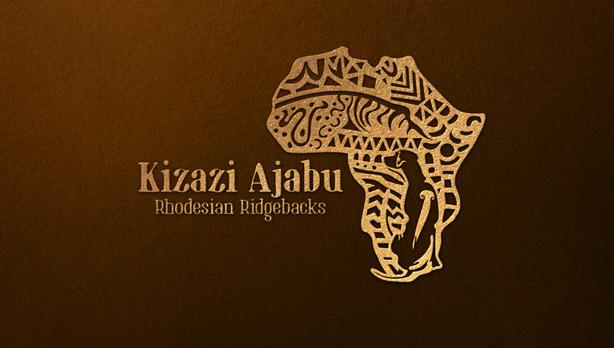
Kizazi Ajabu RR
Italy
www.rhodesianridgebackajabu.eu elisabettag2 bettagrande

Arte Cassari
Slovakia www.artecassari.sk
zuzana.likierova /
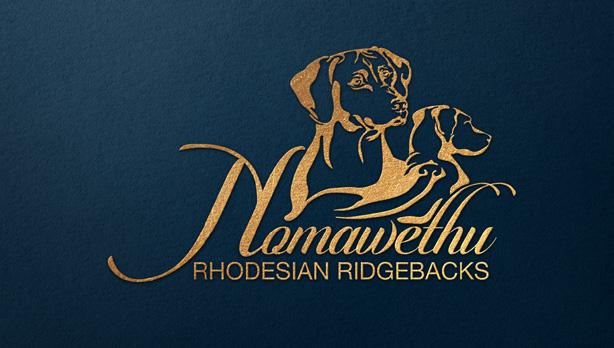
Nomawethu
Germany
www.nomawethu.de
NomawethuRidgebacks leaprusnat

Sangoma
Poland sangoma.pl
edyta.ossowska /
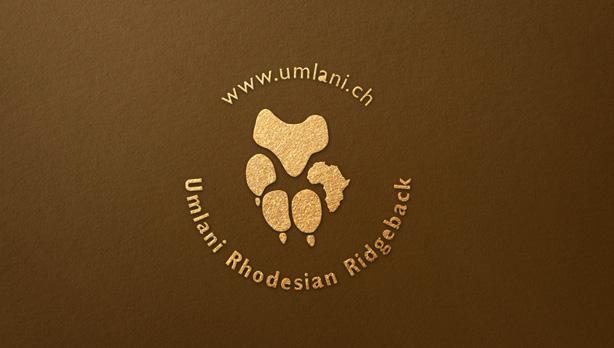
Umlani
Switzerland
www.umlani.ch
Umlani Rhodesian Ridgeback umlani_rhodesian_ridgeback

Godsent Muse
Latvia
www.godsentmuse.com musinanatalja godsent_muse_kennel
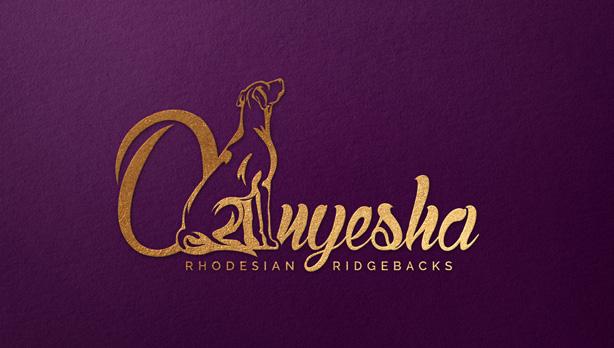
Mohaget’s
Sweden www.mohagets.se
Mohagets segerlund76

Neomele
Croatia www.neomele.com
maja.kljaja, Lela Treščec rhodesian_ridgebacks_neomele
166 RHODESIAN RIDGEBACK EU MAGAZINE RHODESIAN
RIDGEBACK BREEDERS
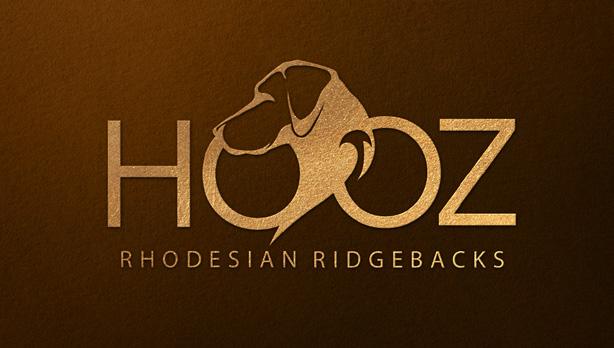
Hooz
Ireland
www.hoozridgebacks.com
hoozridgebacks
hoozridgebacks

Empyrean
Hungary
www.empyrean.hu
virag.orczi empyrean_ridgeback
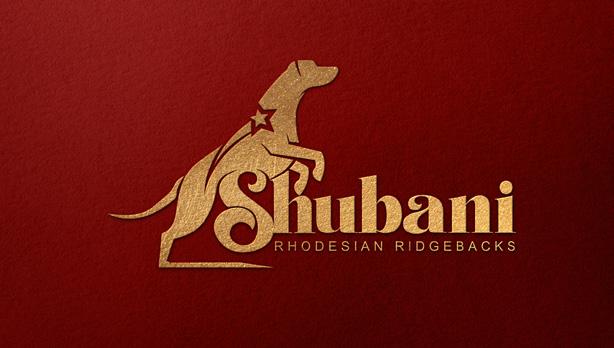
Shubani
Germany
www.shubani.de
Stefanie Bauschatz (Shubani Rhodesian Ridgeback) /
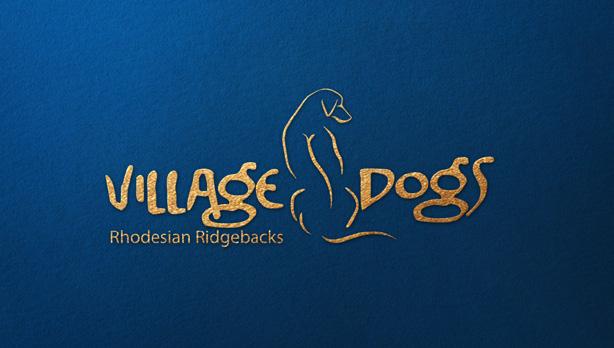
Villagedogs
Belgium
www.villagedogs.be
Villagedogs RRs villagedogs

Of Muna Ya Kusini
Switzerland
www.of-muna.ch
Jasmin Hoppe
jasmine_munayakusini

Malozi
Finland
malozirr@gmail.com
malozirr /
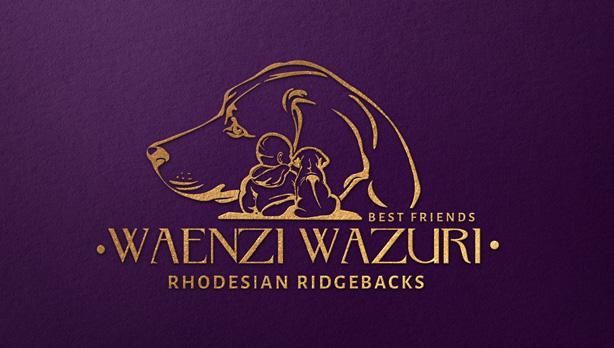
Waenzi Wazuri
Germany
waenzi-wazuri.de
Cosima Von Delius
c.v.delius
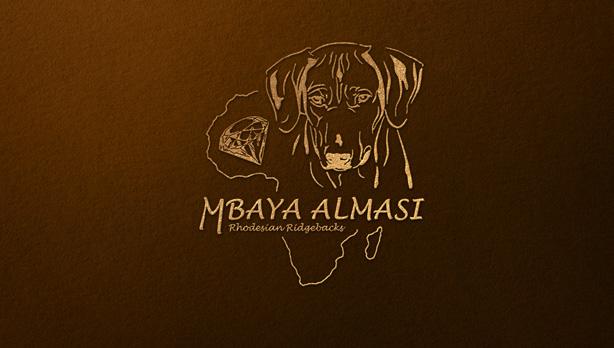
Mbaya-Almasi Ridgebacks
Germany
www.mbaya-almasi-ridgeback.de
Mbaya-Almasi Ridgebacks
tunapendanaadia
RHODESIAN RIDGEBACK EU MAGAZINE 167
RHODESIAN RIDGEBACK BREEDERS
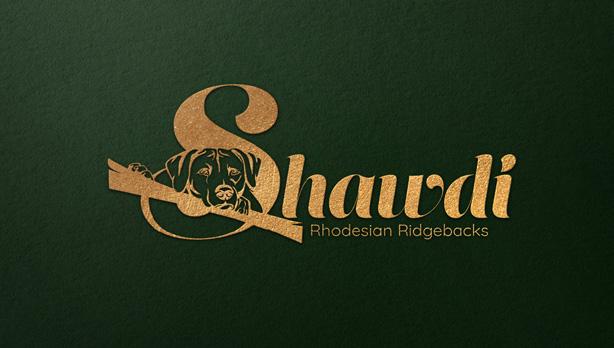
Shawdi
Sweden
www.shawdi.se
KennelShawdi
kennelshawdi
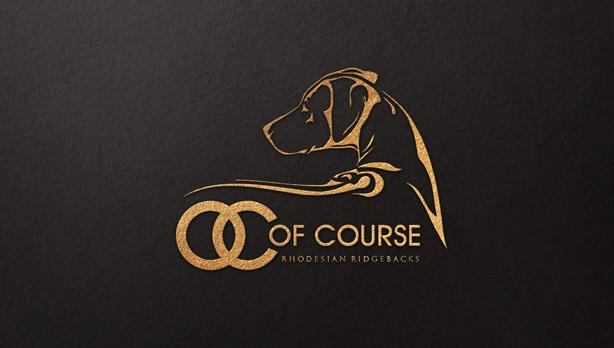
Of Course
Canada /. ofcourserhodesianridgebacks ofcourseridgebacks
Dear Breeders,
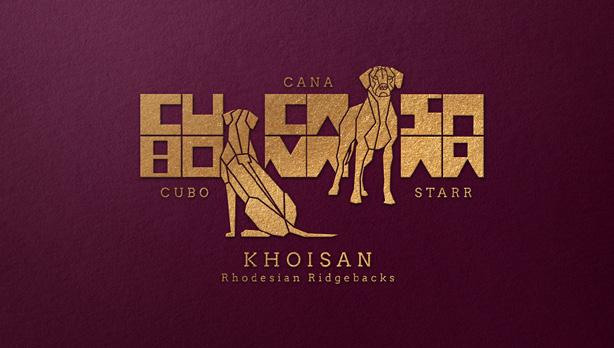
Khoisan
Slovenia
www.khoisan.si
kuralt.snezka
designbystarr
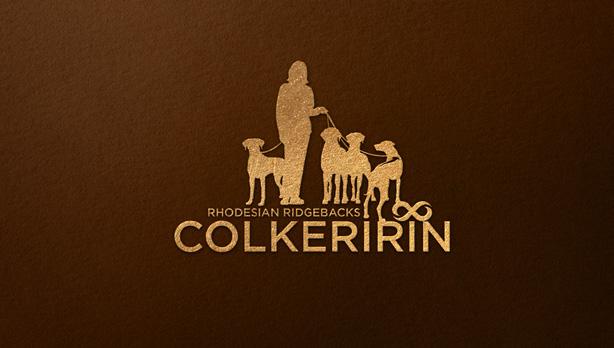
Colkeririn
United Kingdom
www.colkeririnrhodesianridgebacks.com
Kim Hodge (Colkeririn Ridgebacks) colkeririn.ridgebacks
In the upcoming issue of our magazine, we have 5 open spots for breeder (logo) cover exposure, along with a corresponding data card featuring your information. Alternatively, you may opt for a data card only.
Should you wish to seize this opportunity and feature your breeding in magazine, please do not hesitate to reach out to us through our social media handles or via email at rr.eu.magazine@gmail.com. We would be delighted to provide you with all the necessary information.
Thank you for considering our magazine as a potential avenue for showcasing your kennel. We look forward to hearing from you soon.
Best regards, Magazine Team
168 RHODESIAN RIDGEBACK EU MAGAZINE
BREEDERS
RHODESIAN RIDGEBACK

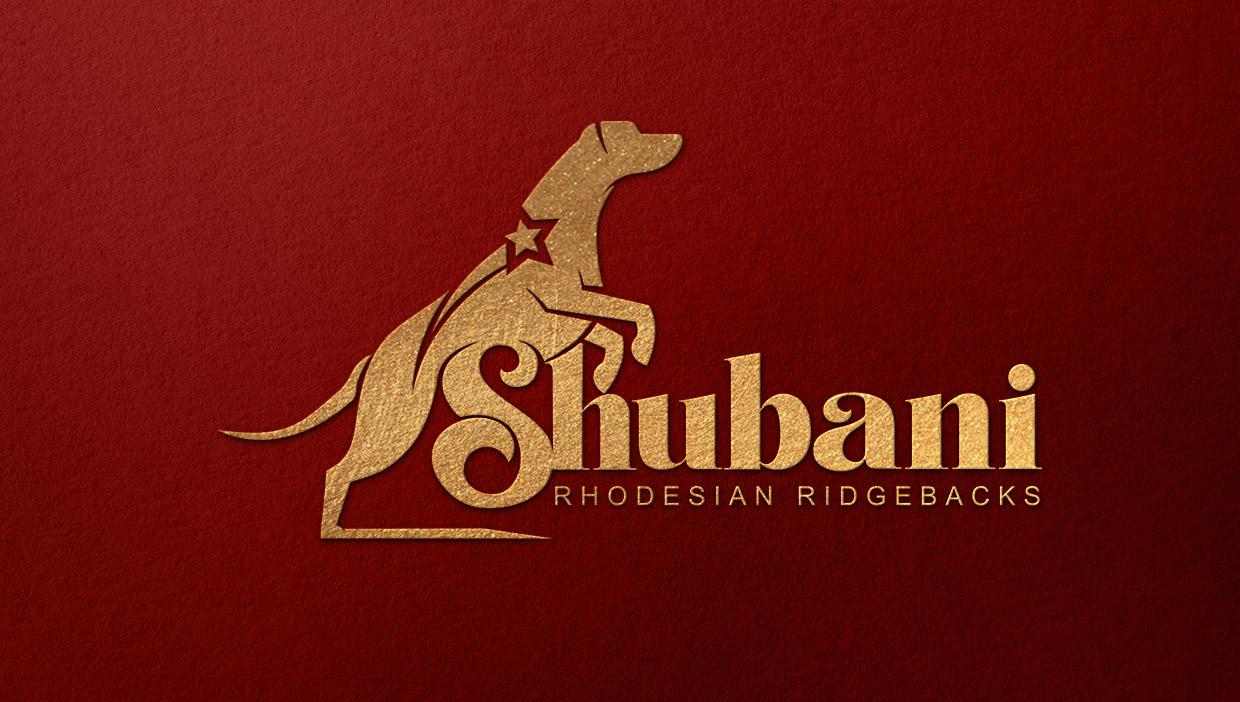

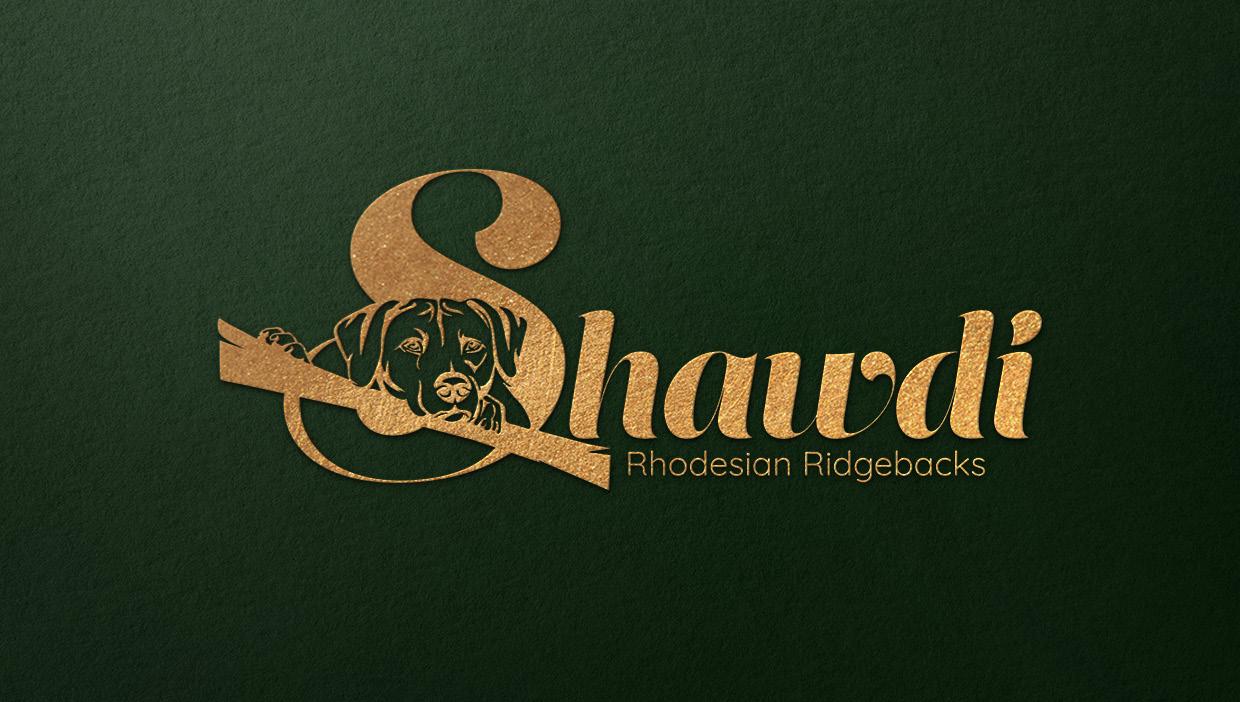
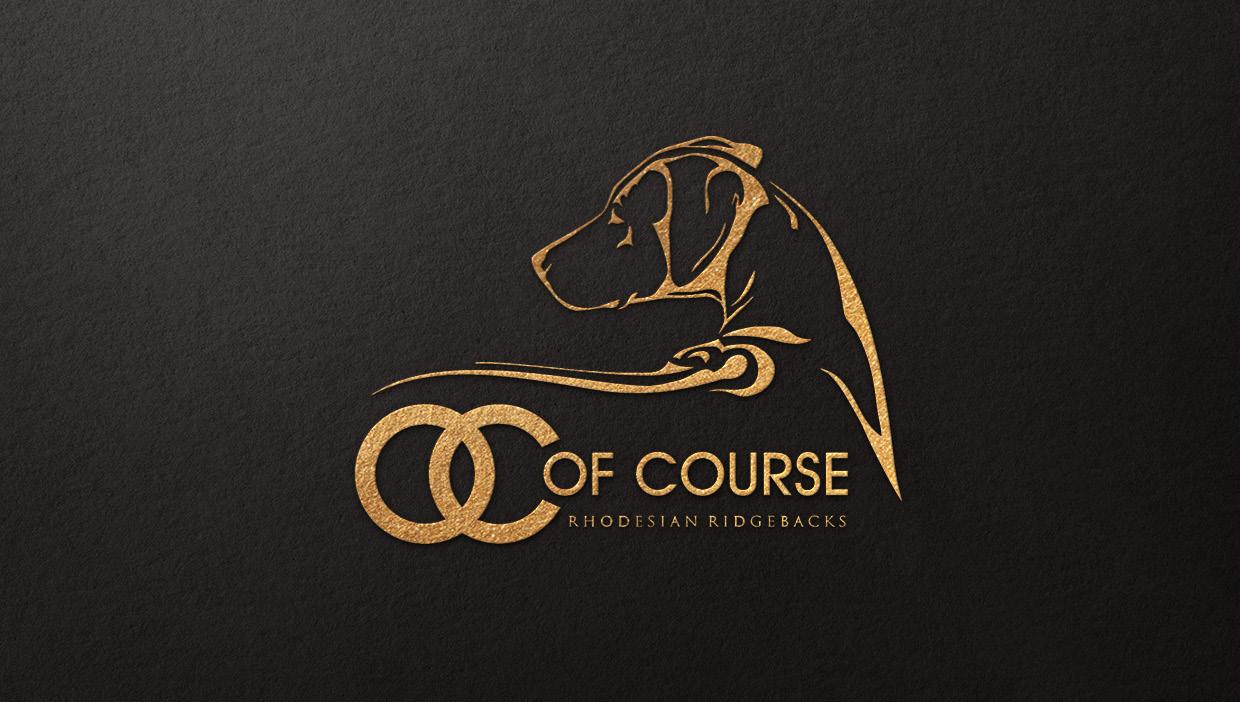
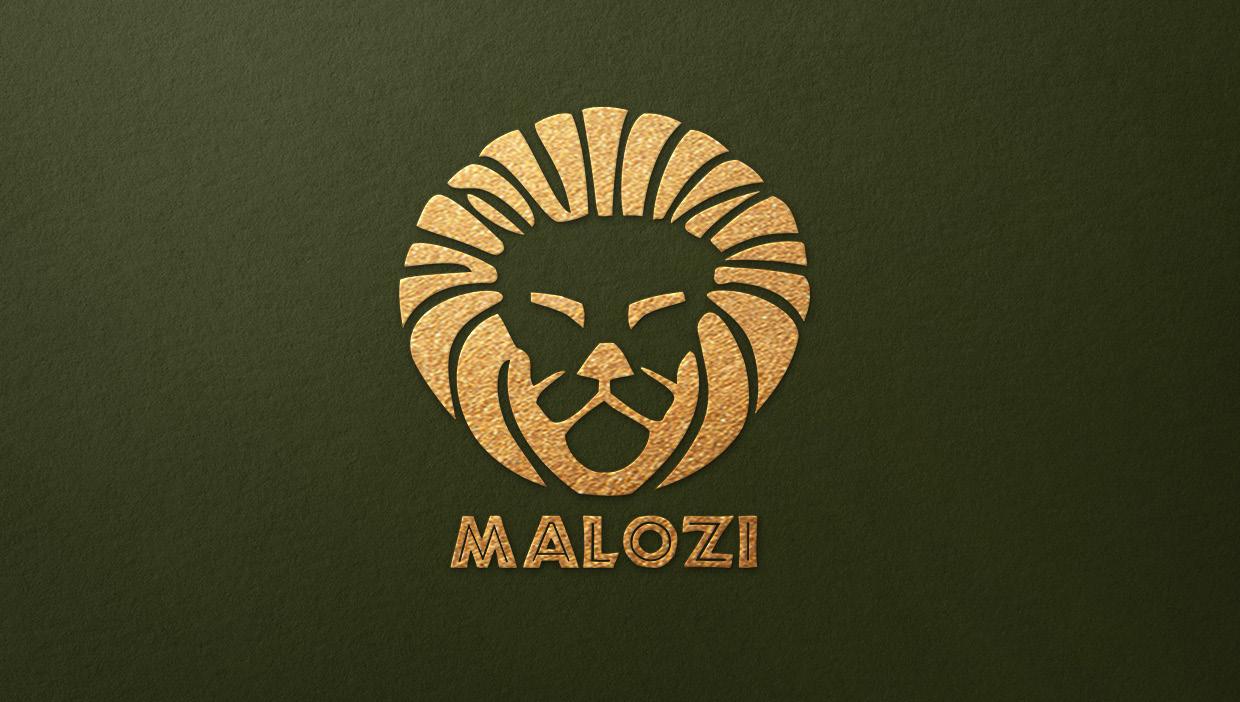
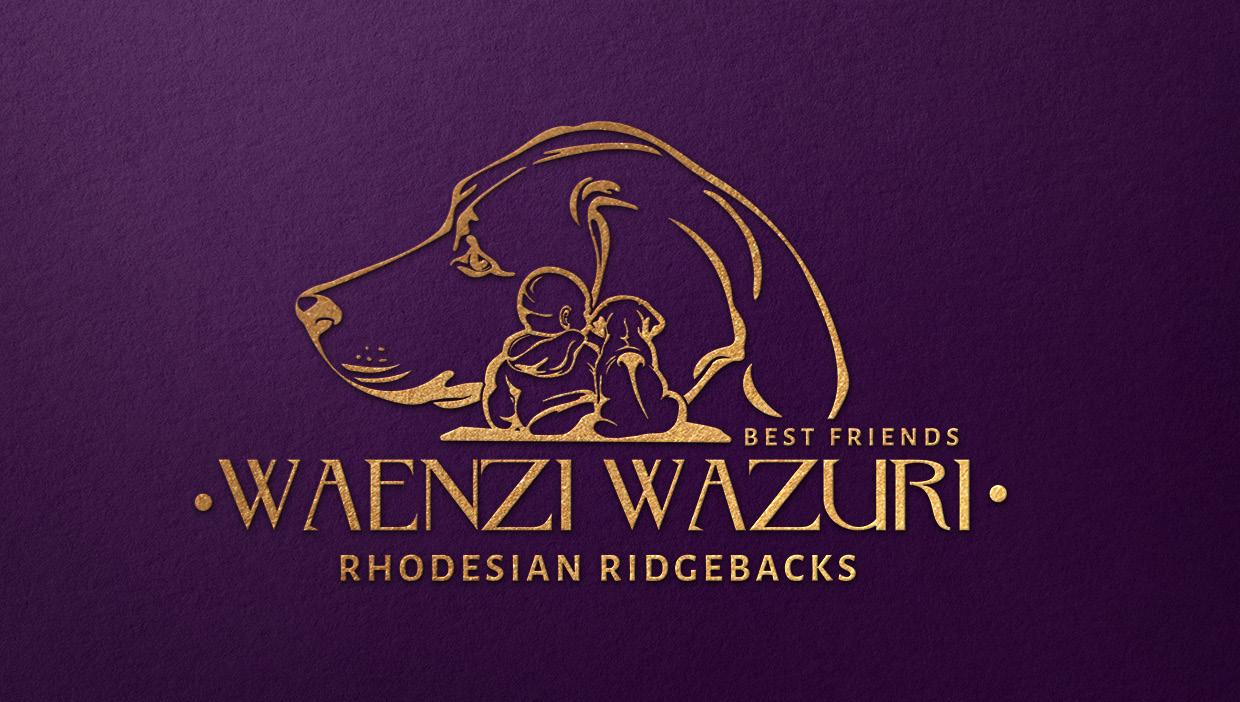

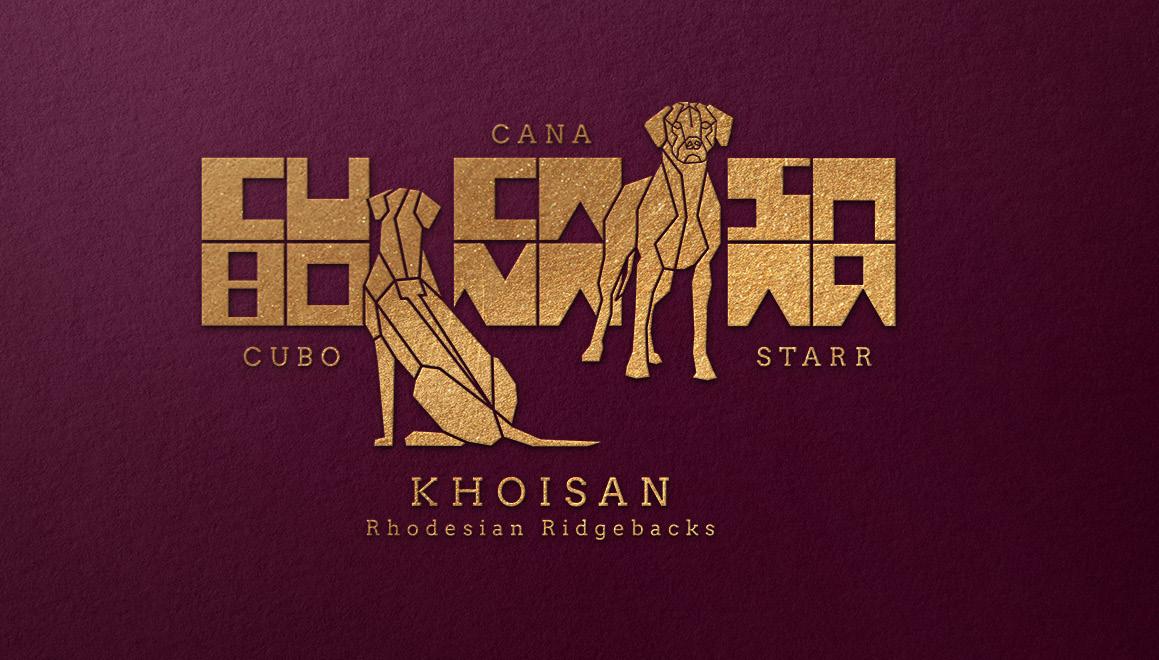

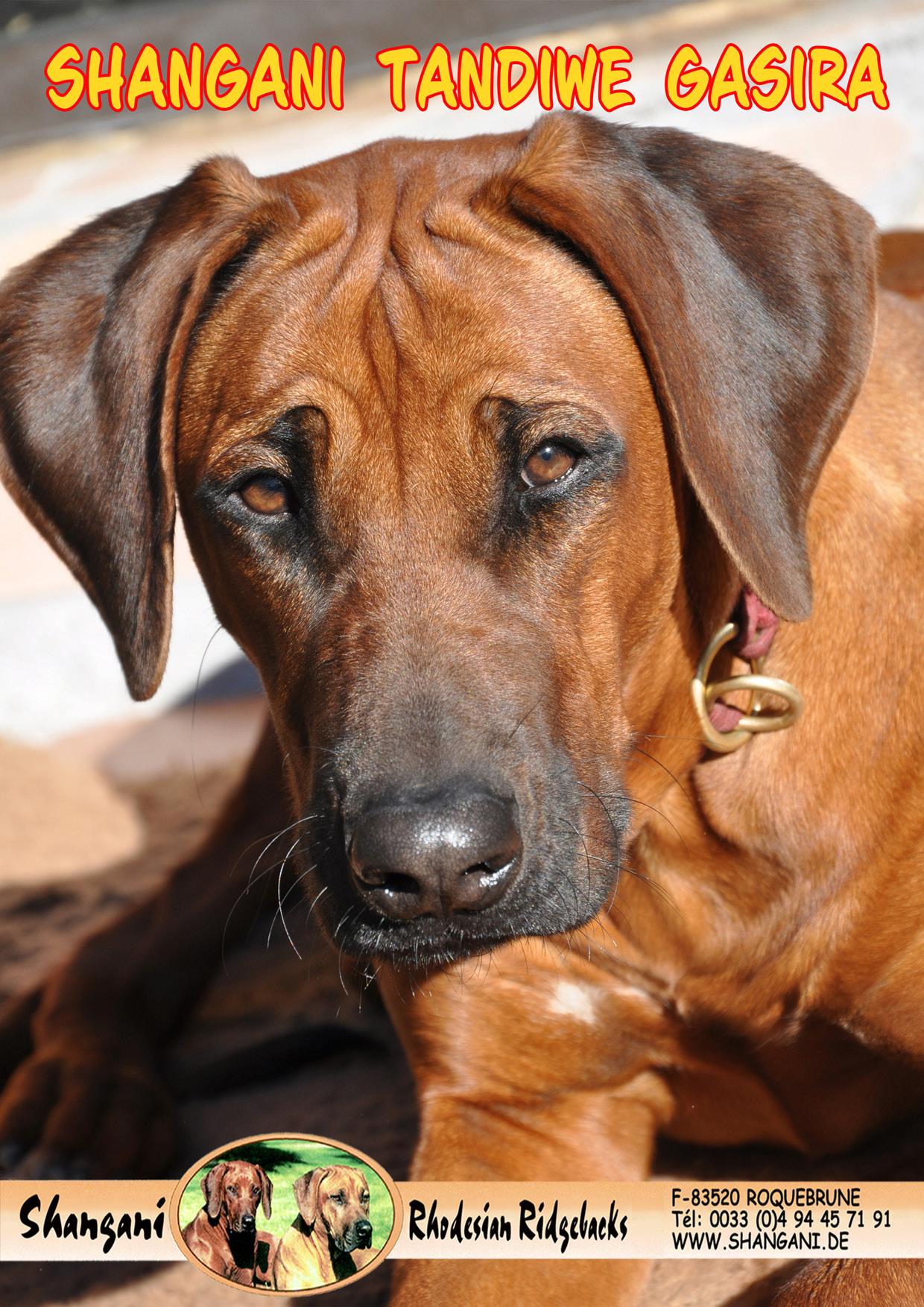
























 Susanne Neu
Susanne Neu
























 Written by Petra and Michael Bossard
Written by Petra and Michael Bossard



















































































 Aneta Bach and Menno van der Mark
Aneta Bach and Menno van der Mark













 BY VANESSA MOYANO AND RACHEL GREVE
BY VANESSA MOYANO AND RACHEL GREVE





























 WRITTEN BY ANA JURIĆ
WRITTEN BY ANA JURIĆ


















































































